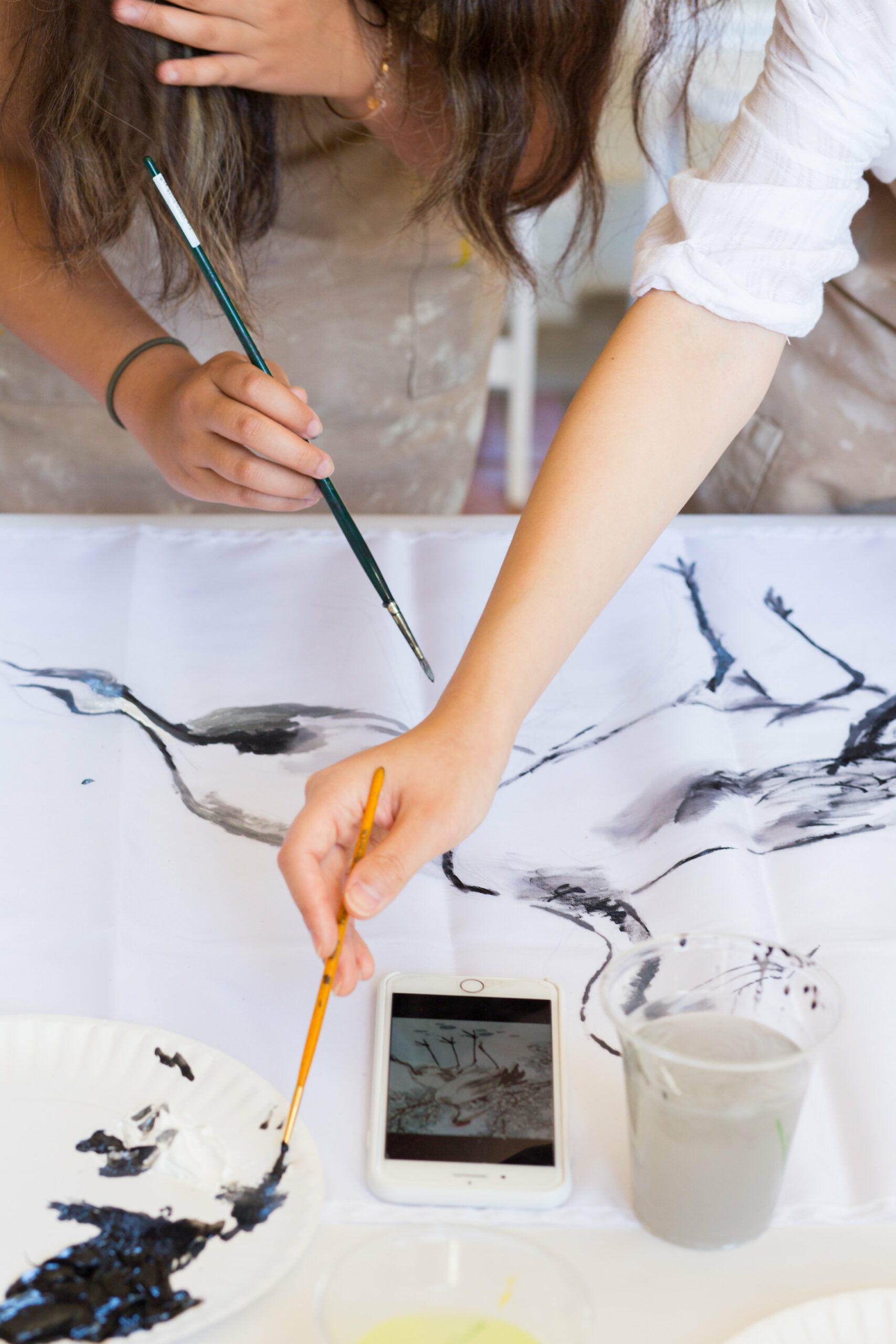

This Week In my Studio
During any given week of the year, a diverse group of international artists are actively at work in their studios at Montalvo’s Lucas Artists Residency Program. In our “This Week in My Studio” series, we ask them to share a snapshot of their experience.
Guest Artist U.S.A./Canada
THIS WEEK IN MY STUDIO (March 16, 2020)
Interactive Performer Heather Gold
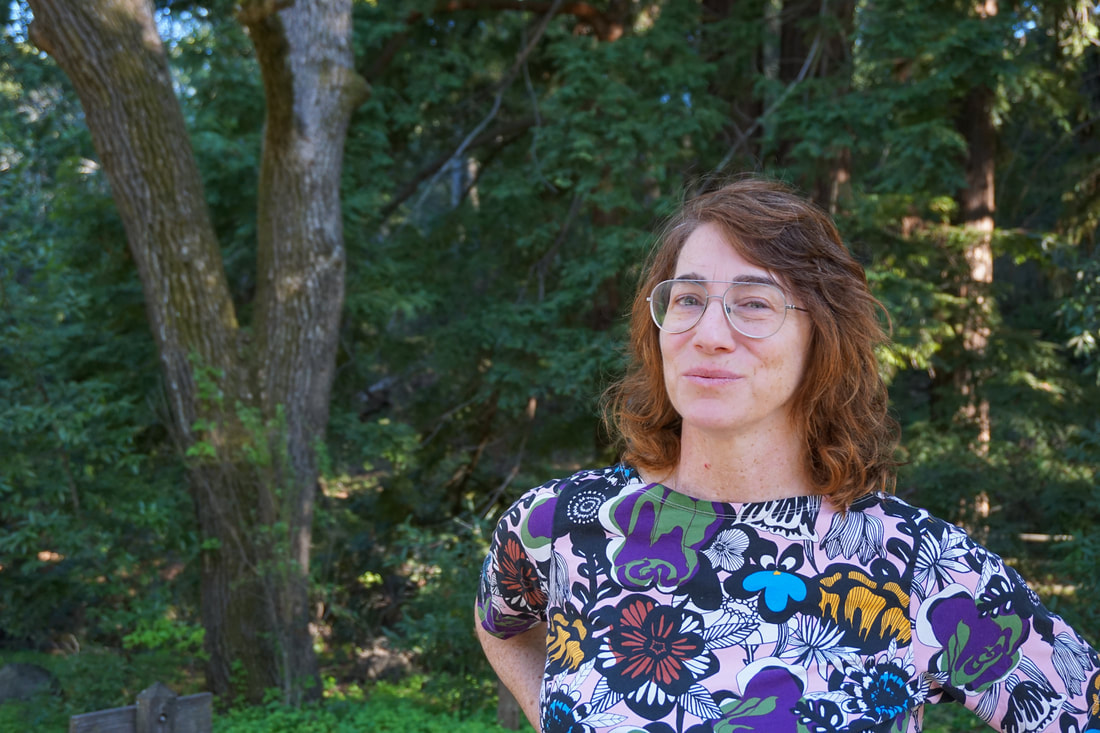
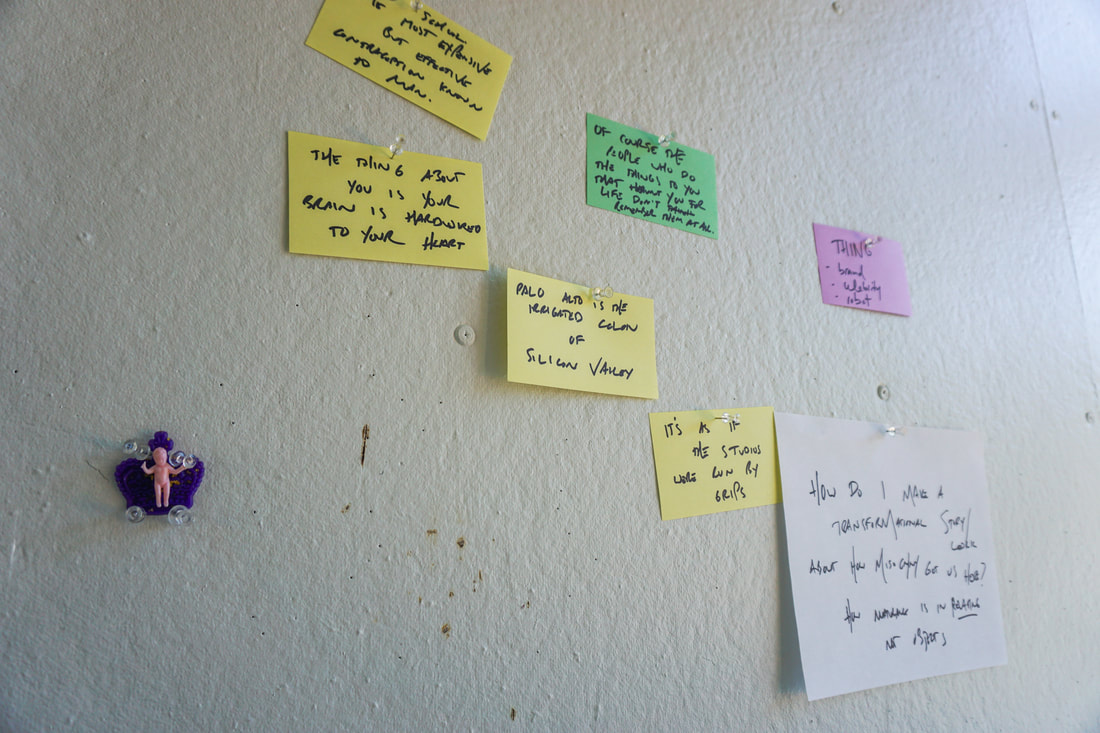
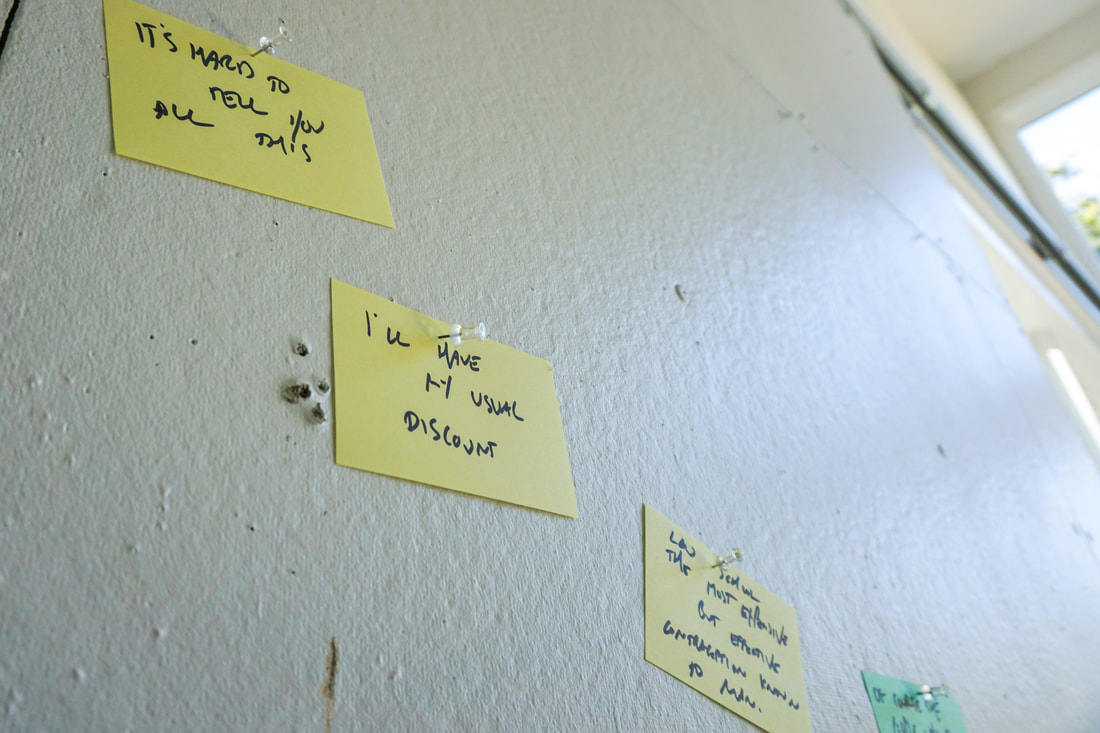
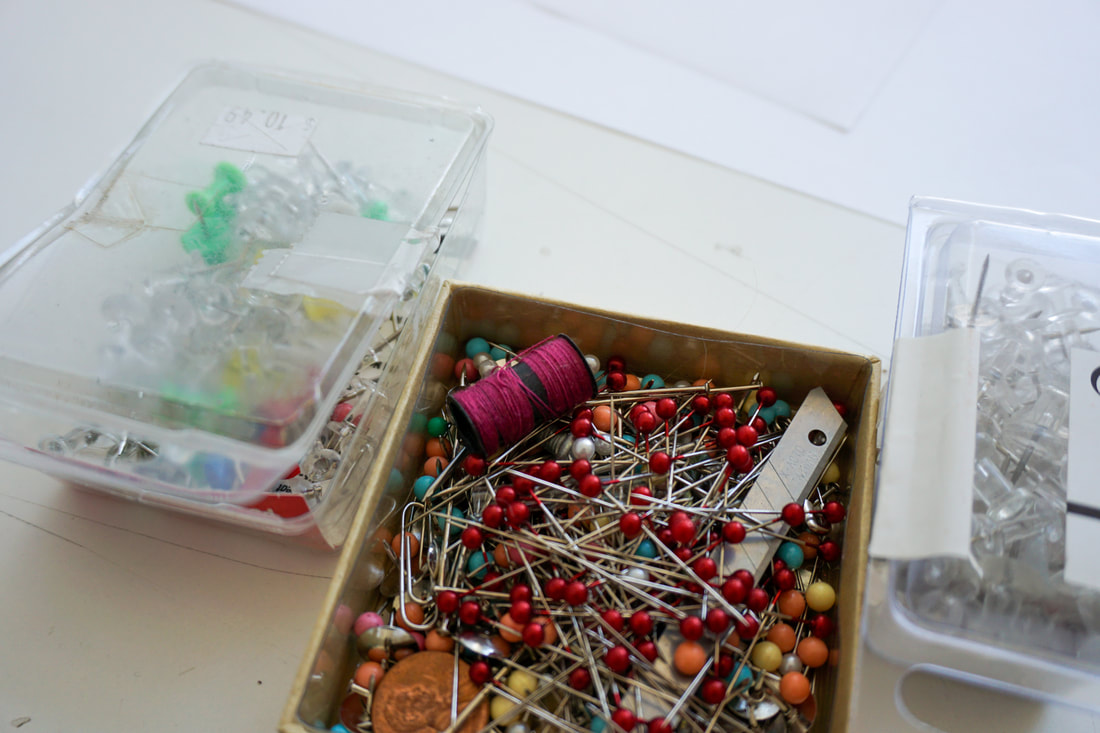
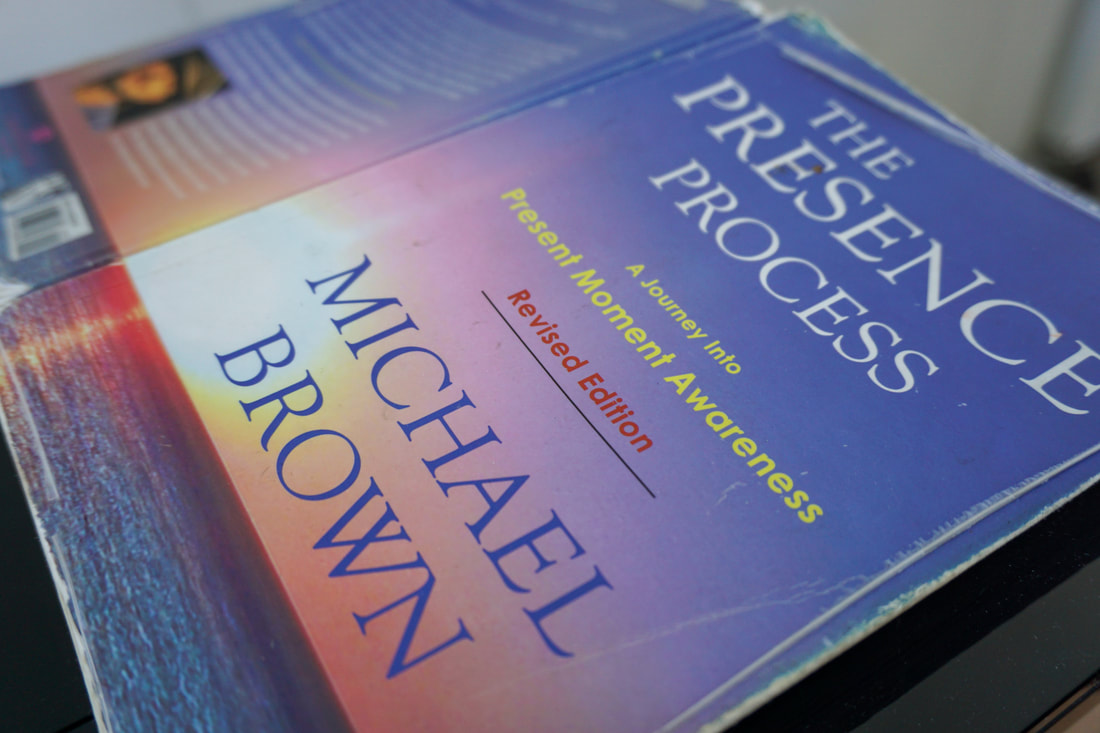
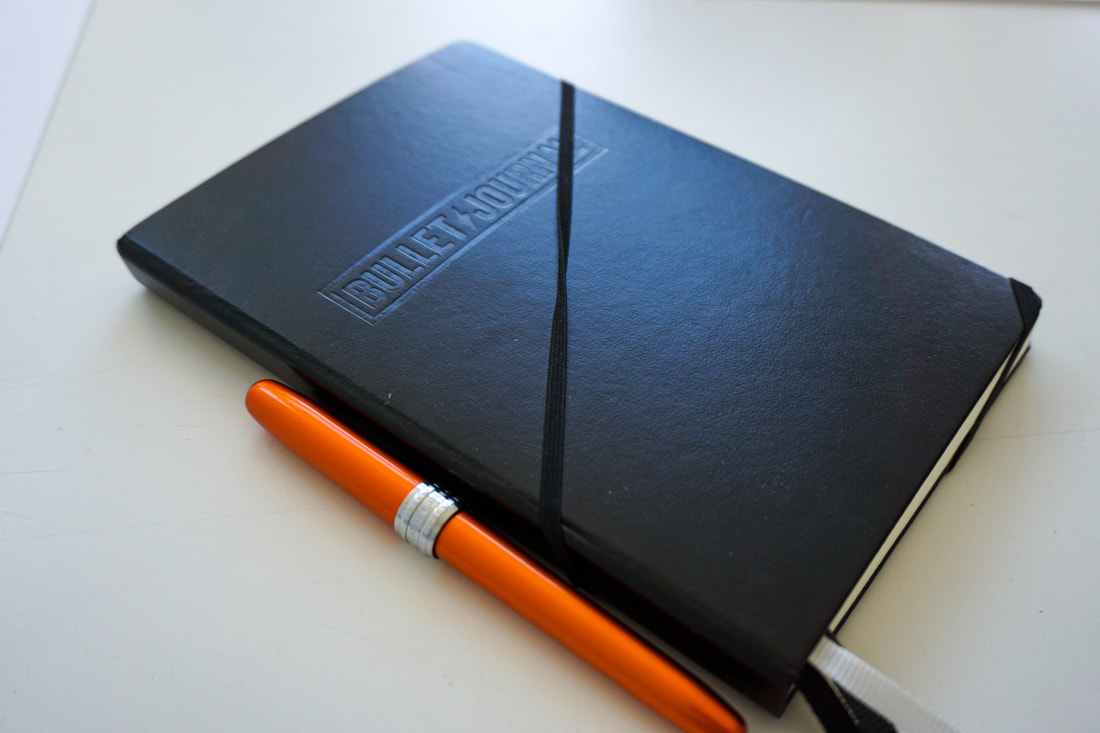
Being an artist can be lonely.
And you spend a chunk of your energy and mind holding your point of view and the conviction that what you do is worthwhile.
Being at the Lucas Artists Program (LAP) freed up all that energy for me to make work. It let me exhale and feel supported.
In my interactive performance pieces, I’ve spent a lot of years exploring how to create conditions for an emotional connection or shift in an audience and how to creative conditions for narrative beats and comedic moments to happen.
Each day I spent at the LAP made me appreciate a new condition created here to allow us to develop as people and artists and so develop work that can come from a deep place. Jennifer Johns spoke about approaching work with the intent to transform oneself.
Although of course it does—I hadn’t before been conscious of that as a way to make work. And it’s changed everything about the piece and myself.
The work comes from us, through us, between us as people. So what changes us and nurtures us ? What gives us the conditions to make work and friendships?
Immediately I knew that the luxurious warmth and quiet I was surrounded by would do just that. Also the huge empty space for thinking. Big white walls I could work ideas out on. What also makes everything easier is what is absent: the lack of anything around me connected to my daily life and anything other than the piece on which I’m working.
Then I found sleeping facing the east for the first time, how my day changed as I was awoken by the sun. How cheering the “cheapie cheapie” was outside the door each day. How the nonchalant deer, the woods, the blossoming trees, spectacular meals, fire, washing dishes together, the hooting owls. Everything natural around me heightened my senses and my connection to the moment.
And even when we weren’t in front of a fire eating a beautiful meal with Jennifer and Rafa and Britt and Yukiko and Jen and Ranu and Brad and Lori and Maria and Isaiah, we were somewhere where the people around us value making art and what it takes to make it.
My transformative conversation with Jennifer Johns happened when I ran into her in the kitchen one morning after my run. That’s because the people who put the LAP together and the many people who make it work thought it would be good to have a kitchen. And to welcome us there, with an artist fridge stacked with delicious leftovers for our taking. And to have things set so that we set the table and do the dishes. Nothing tells you more than doing the dishes. Women have known for centuries that dish-doing conversations build dynasties and decisions.
I’ve written on stage for decades. At the LAP, I found nurturance, colleagues, friends, more of myself and a new approach.
Thank you for the conditions for art, Montalvo.
Read more about Heather’s work here
Lucas Artists Fellow – Visual Arts U.S.A.
THIS WEEK IN MY STUDIO (March 10, 2020)
Multidisciplinary Artist Ranu Mukherjee
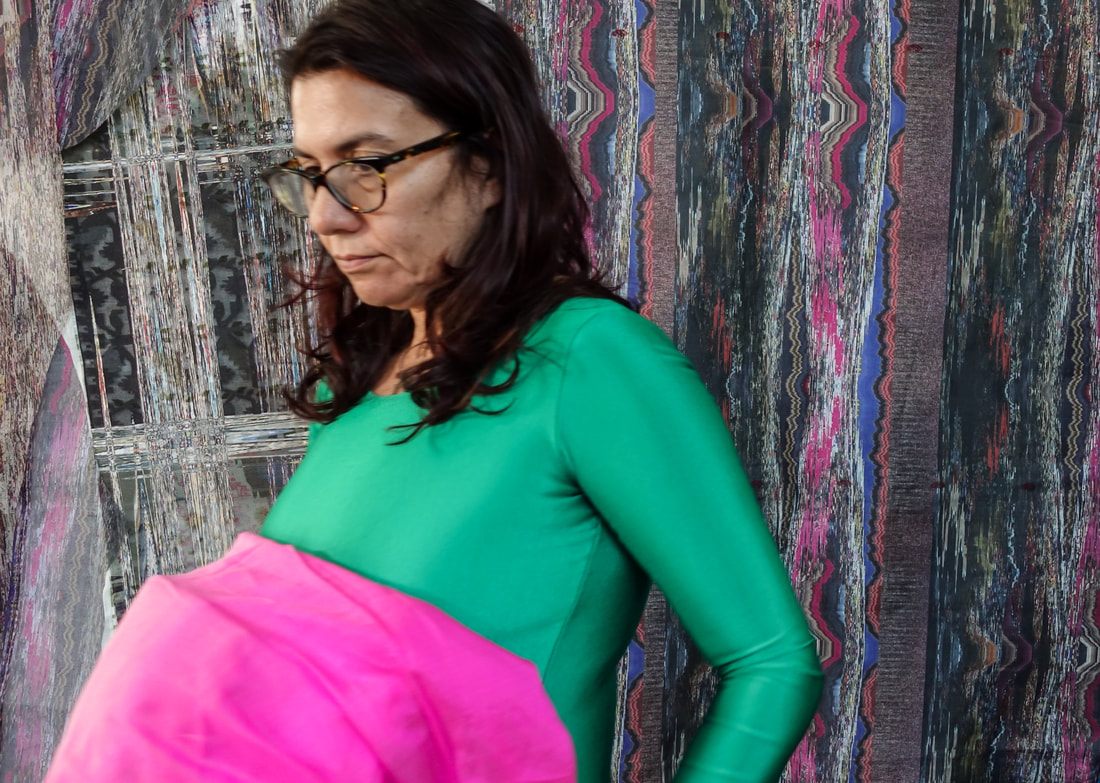
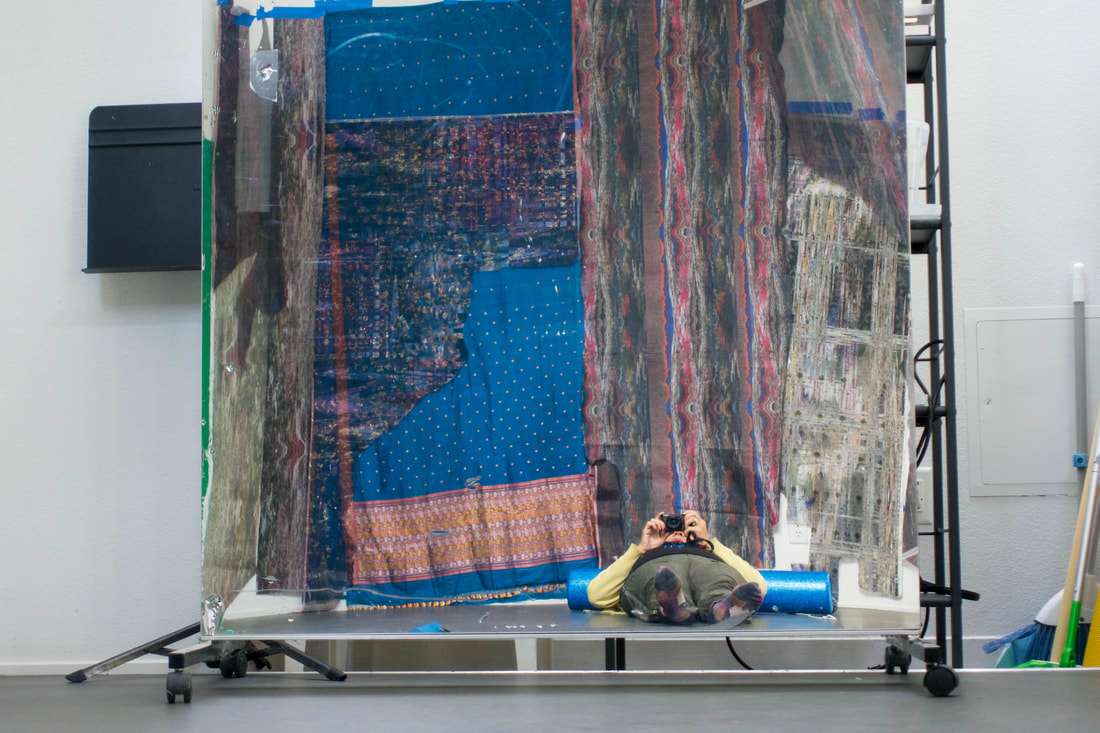
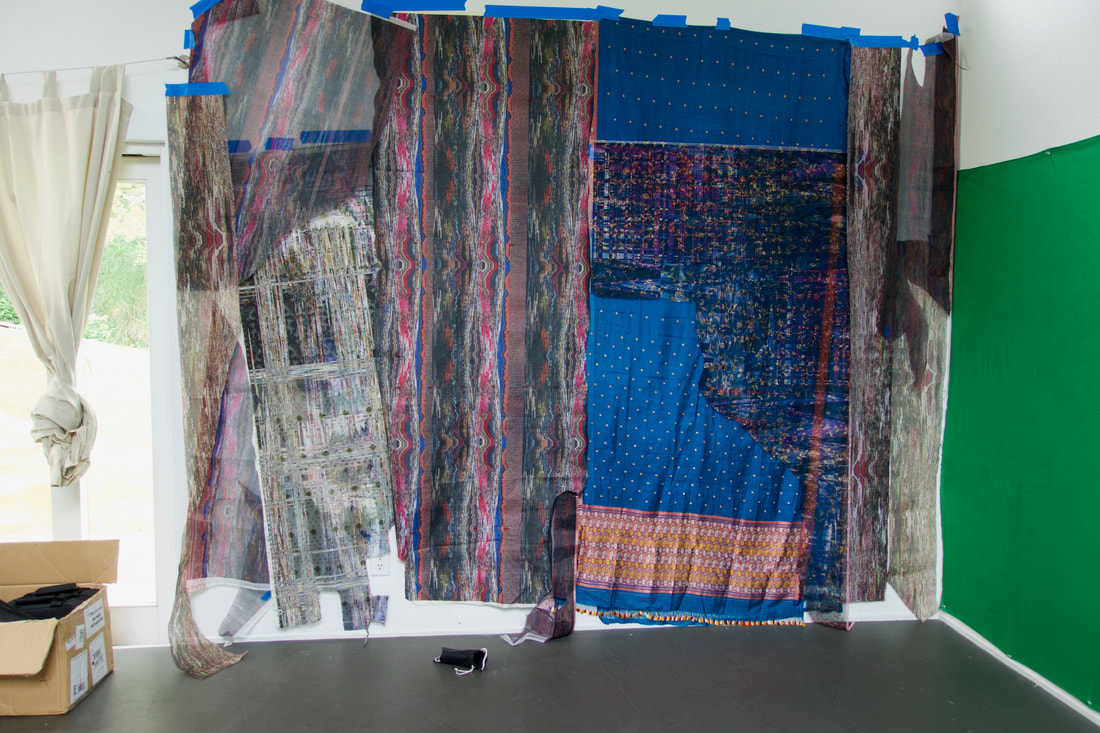
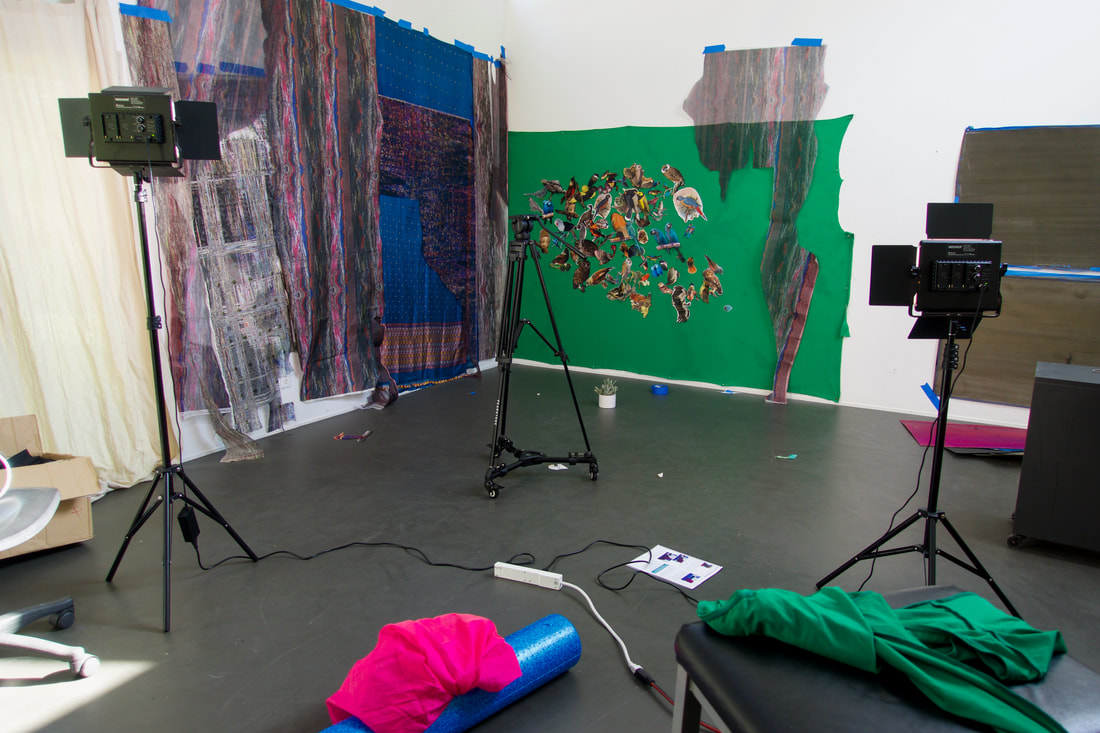

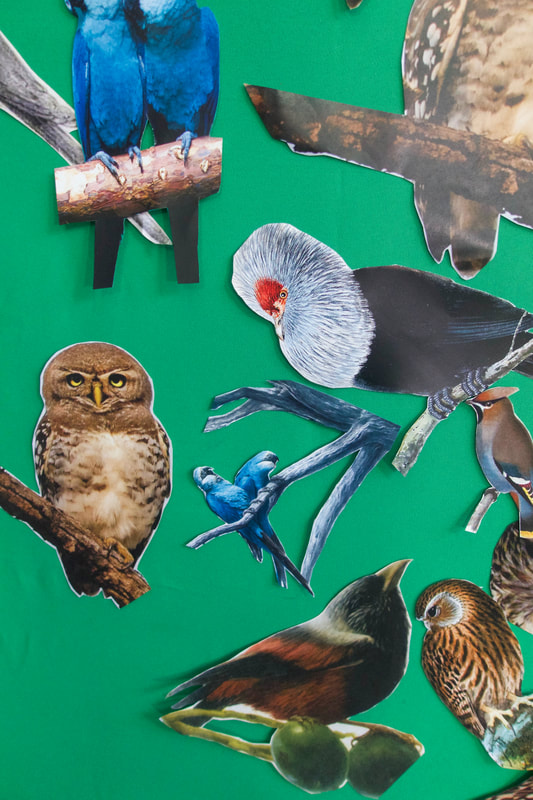
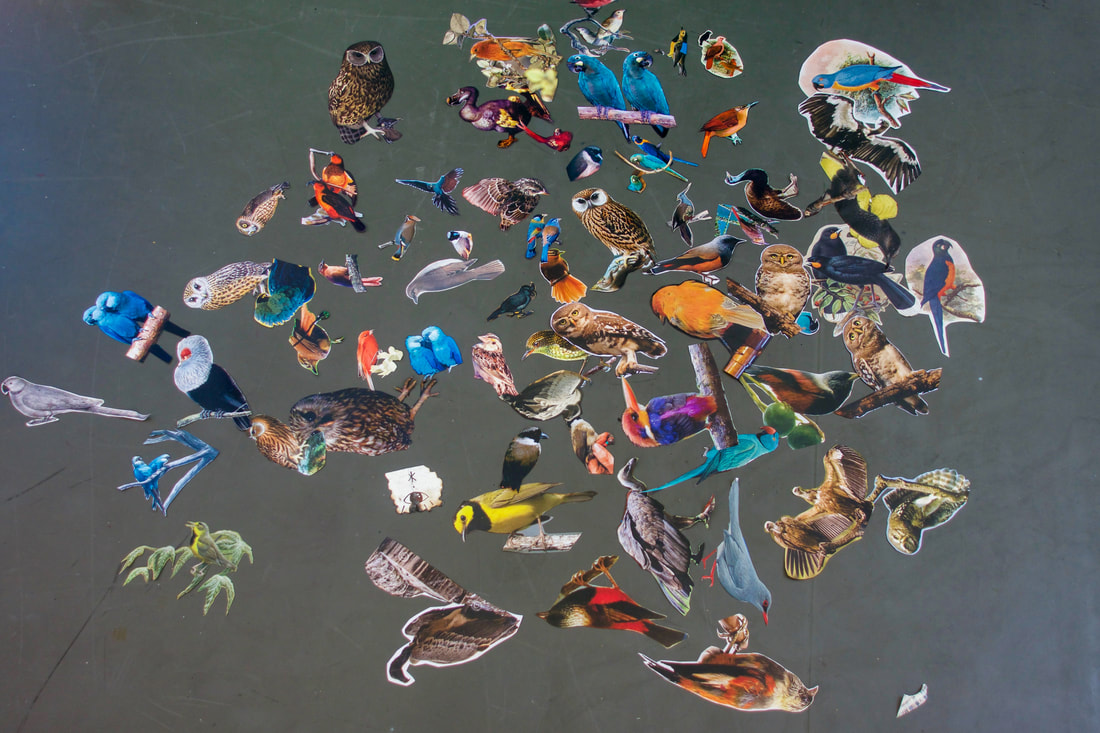
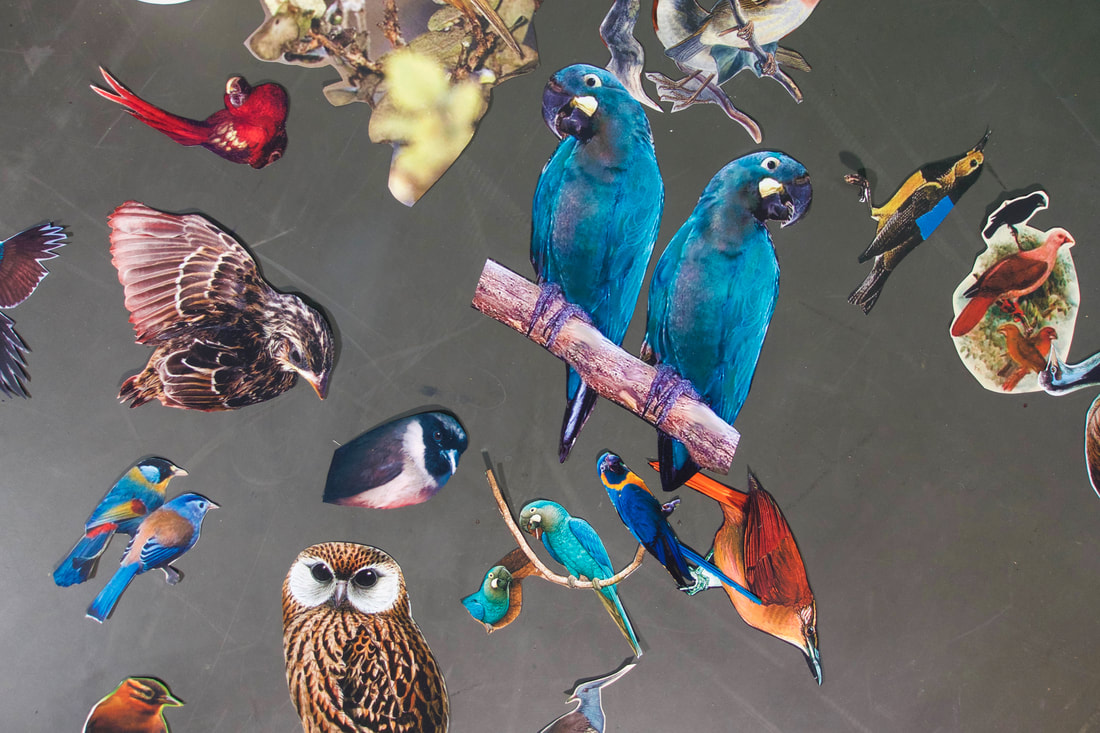
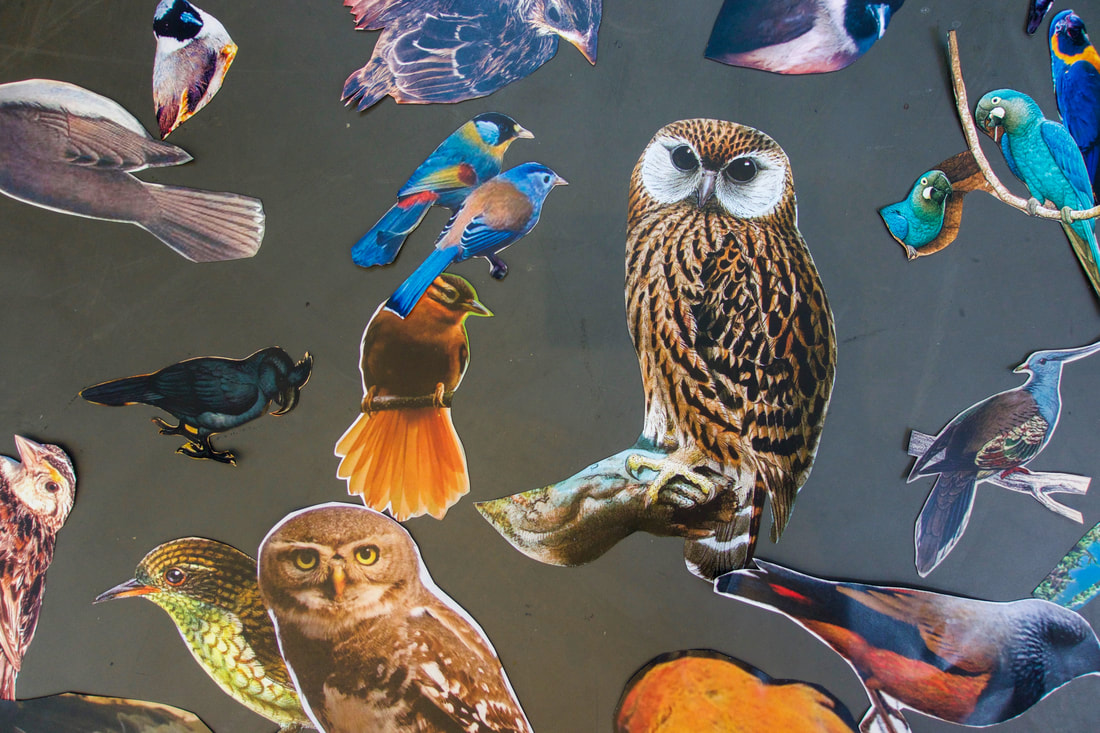
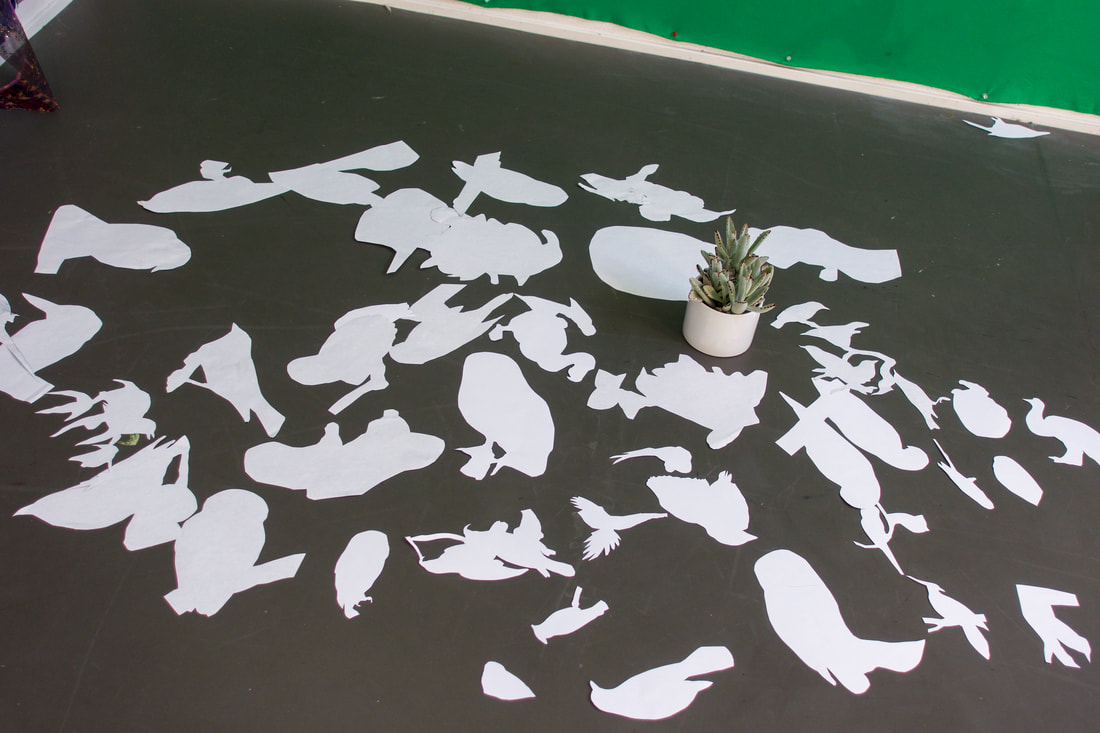
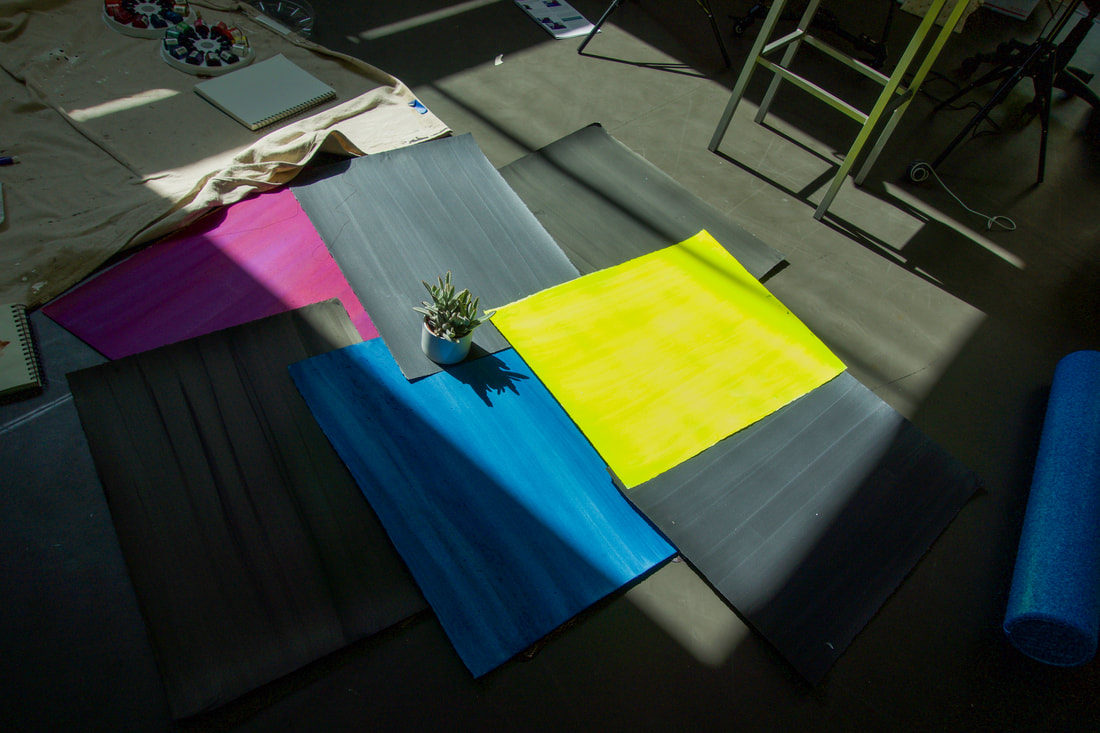
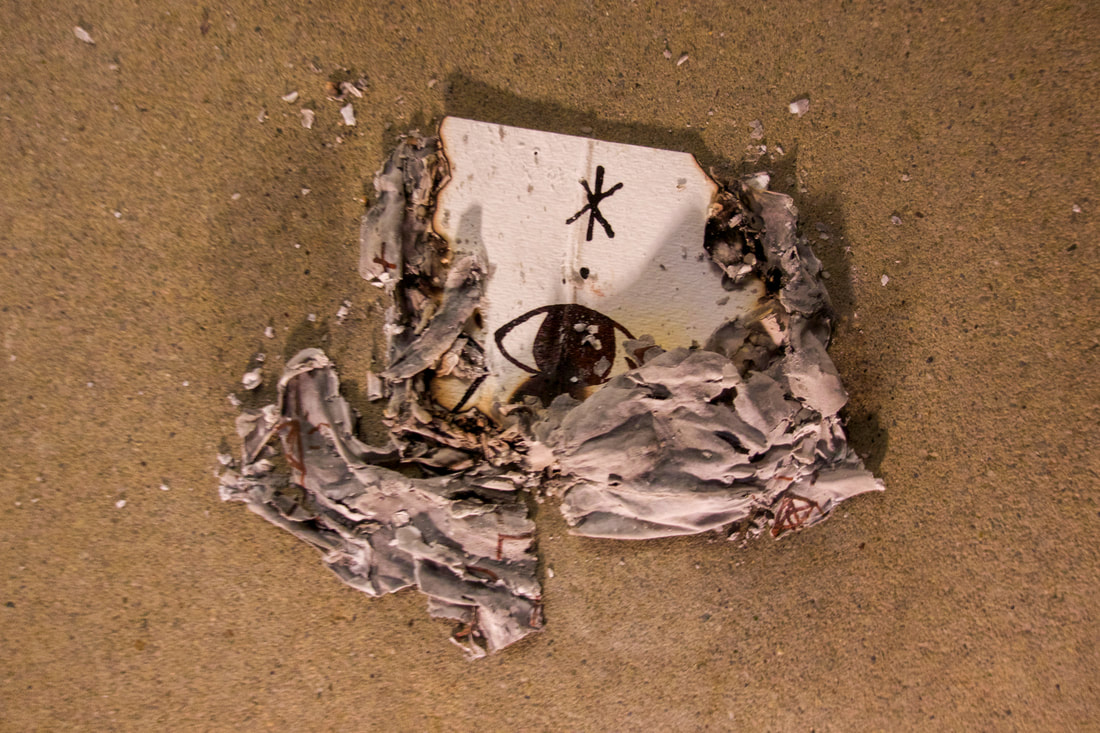
I’m using my studio at Montalvo as a speculative fiction machine. I’m working on my upcoming solo exhibition and a longer term video/performance project called Ensemble for Non-Linear Time. I’m circulating between drawing, writing, and constructing a space to film in. The Marley floor is conducive to rolling around and finding movement. Recently I have been making abstract patterns from digital images of international feminist and ecological activism and printing them onto embroidered sari fabric to make a hybrid kind of painting. Here I am using the fabric, along with green screen to make a fractured video space. I’m also working with images of extinct birds, trying to figure out what they have to say to us. In the mornings I am surrounded by the songs of so many living birds so I’m enjoying this conversation between the living and the dead.
Read more about Ranu’s work here.
Guest Artist U.S.A.
THIS WEEK IN MY STUDIO (March 5, 2020)
Co-founder & Co-director of Crosshatch Center for Art & Ecology Brad Kik
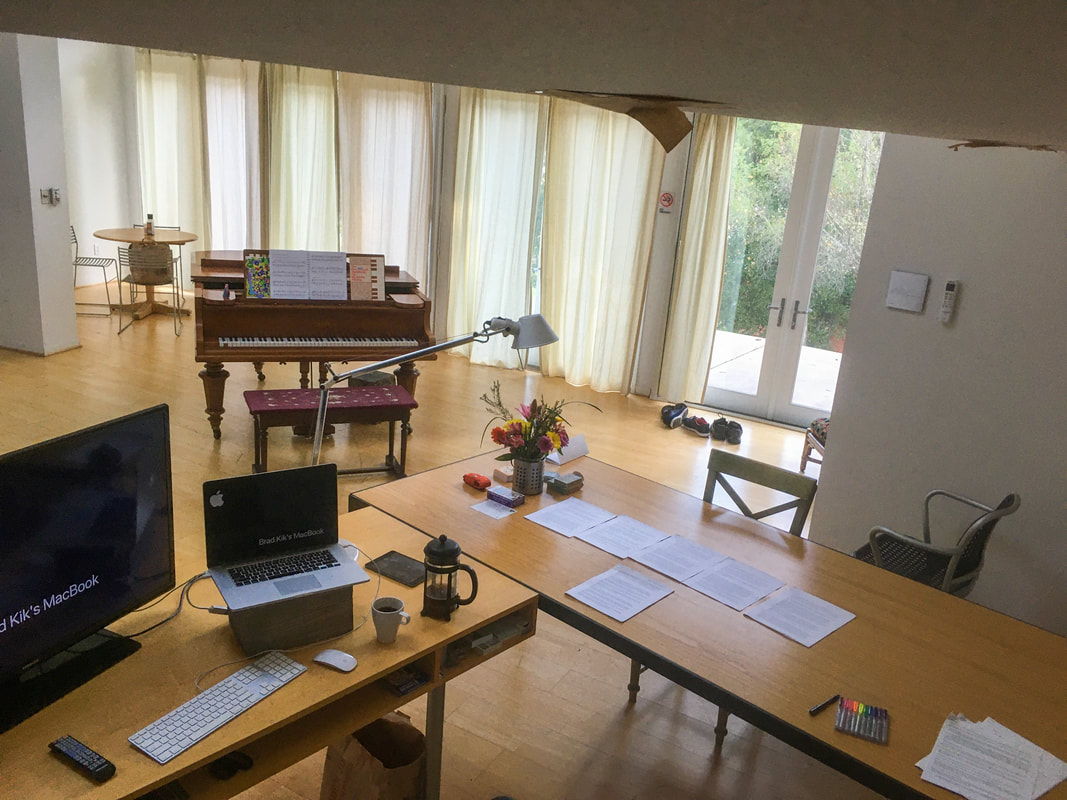
My apologies to every composer who has labored here in Studio 21, pulling such beautiful music out of this Bechstein grand piano. “Is it ok if we put you in the composer’s studio?” meant I had to make room in my luggage for (1) adult learner level 2 songbook, alongside (1) barely-dry painting from my nine-year-old and (1) Elsa and Anna Frozen 2 decoration (“It’s not a toy!” declared my six-year-old as she ceremoniously handed it over).
All of which is to say: if you venture too close to Studio 21, you’re apt to hear me worrying through some knotty problem of literary structure by pounding away (oh man) at “Hava Nagila” or “Space Shuttle Blues” while Anna and Elsa look on.
All of which is to say: I couldn’t be happier.
Read more about Brad’s work here.
Guest Artist U.S.A.
THIS WEEK IN MY STUDIO (March 1, 2020)
Visual Artist Kija Lucas
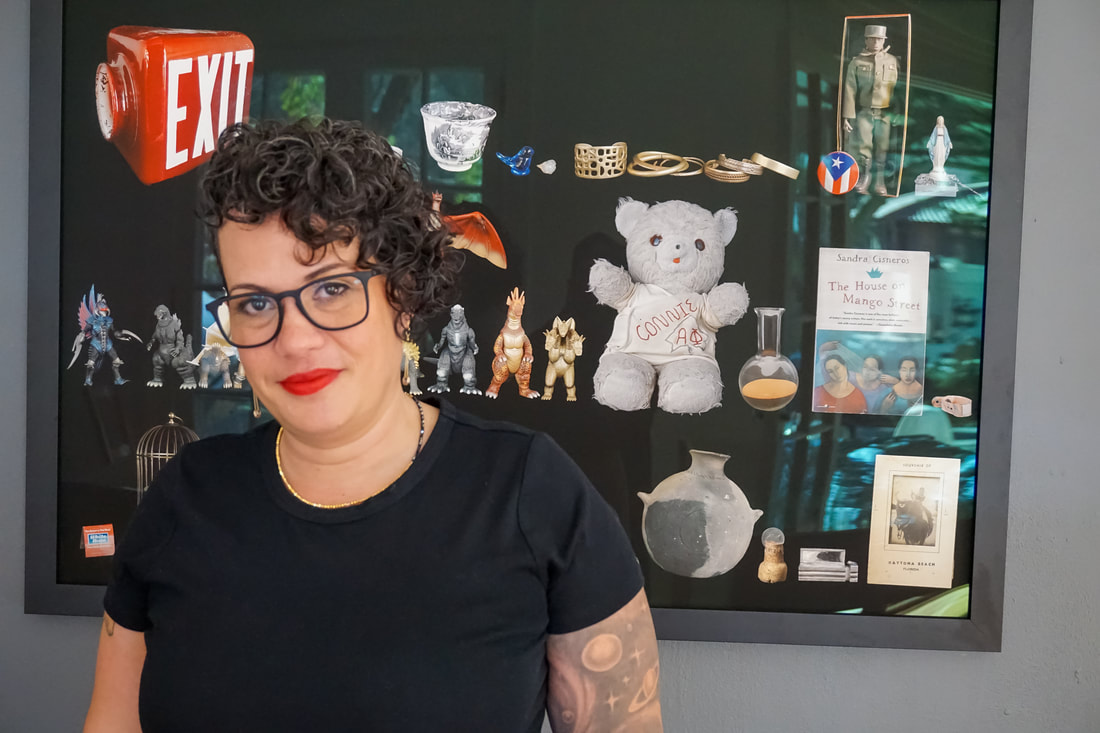
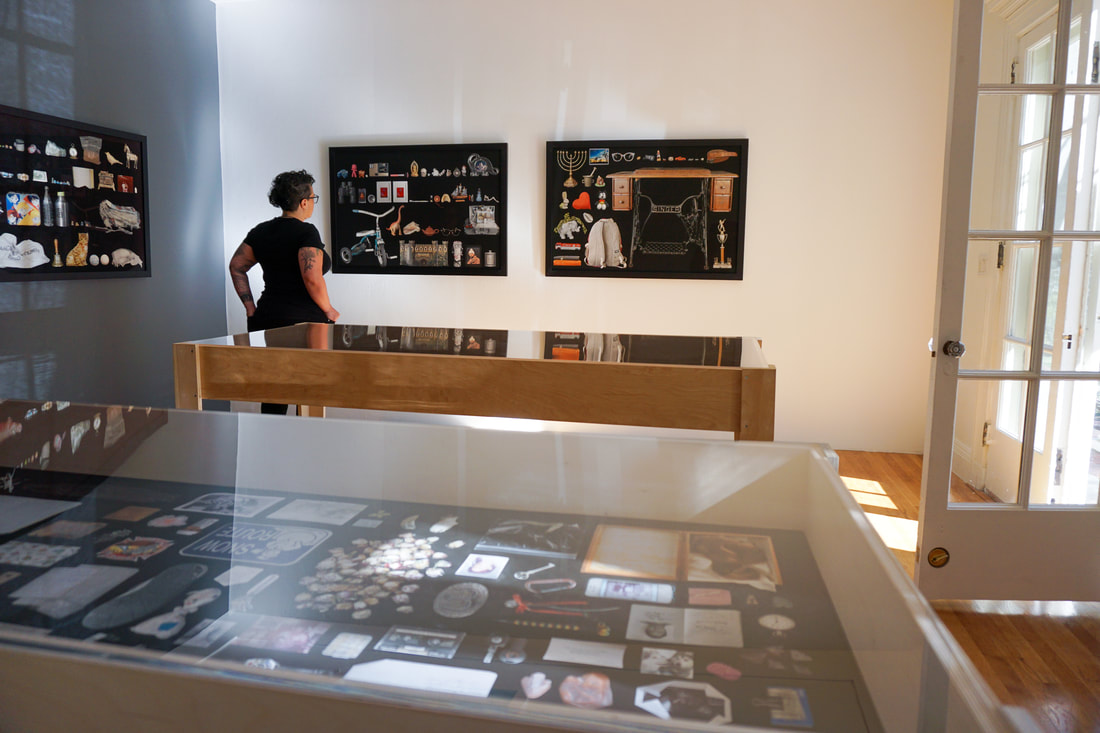
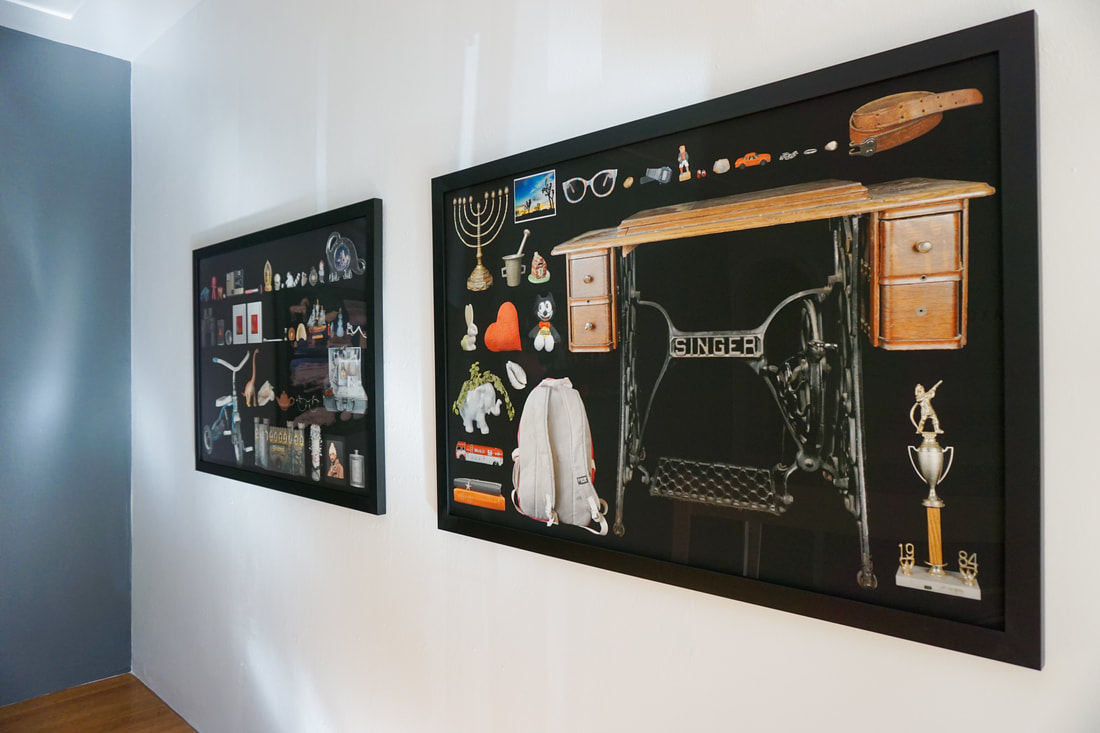
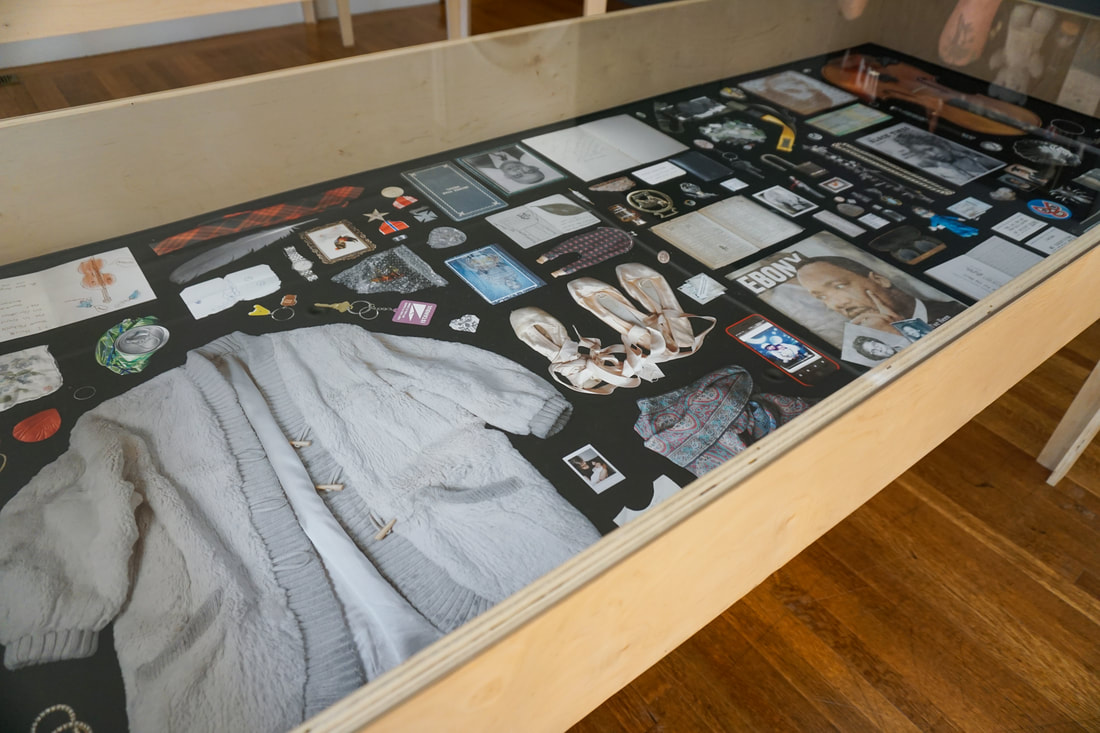

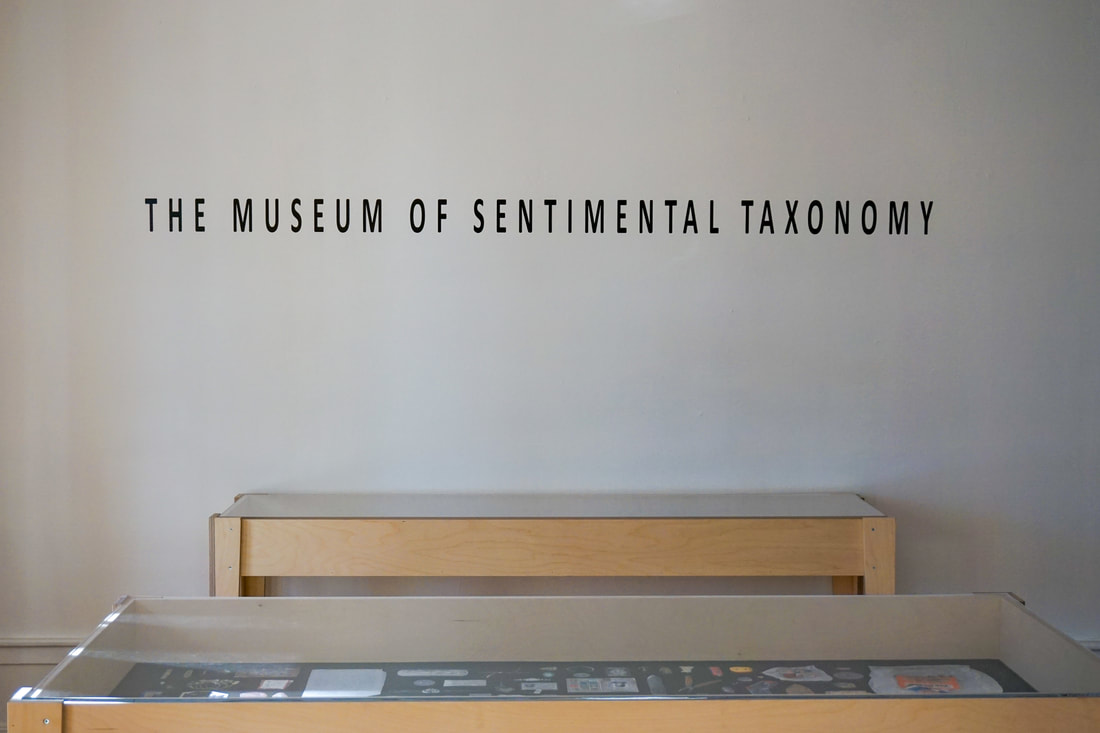
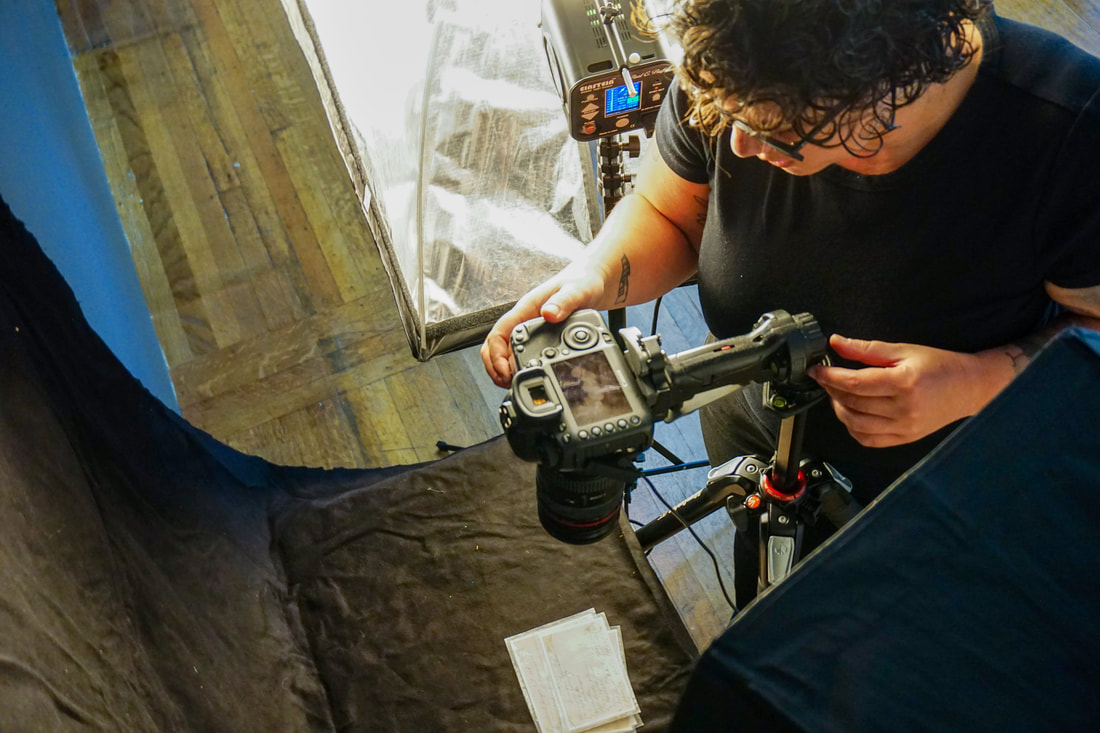
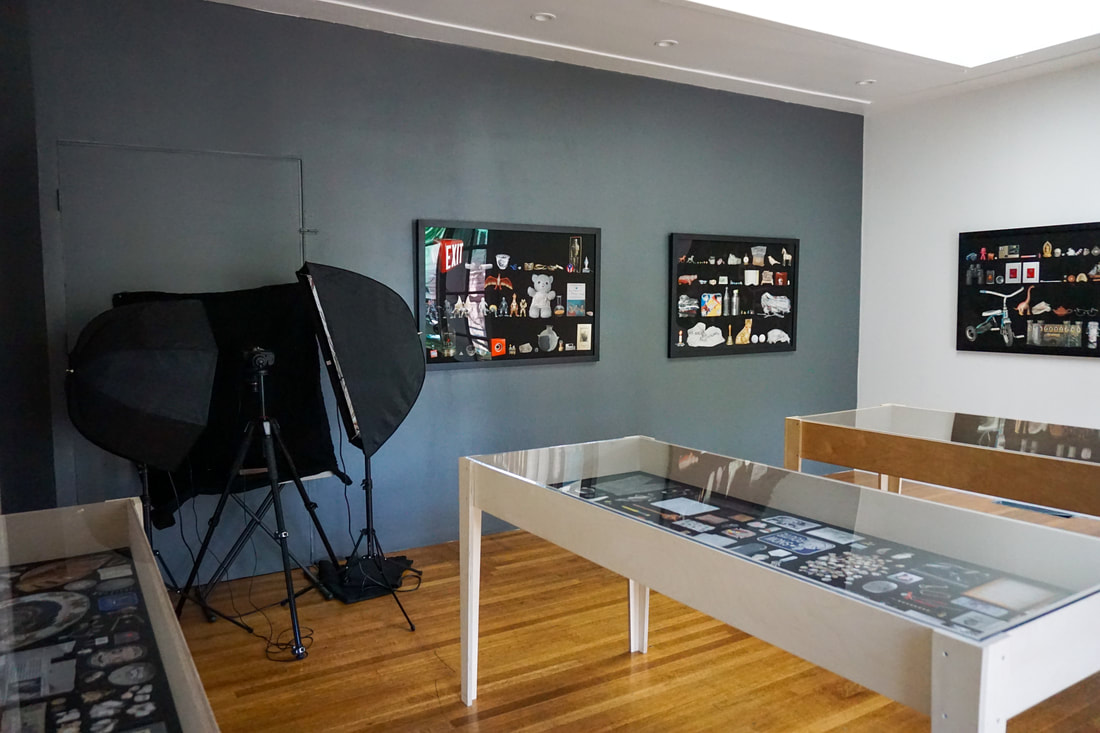
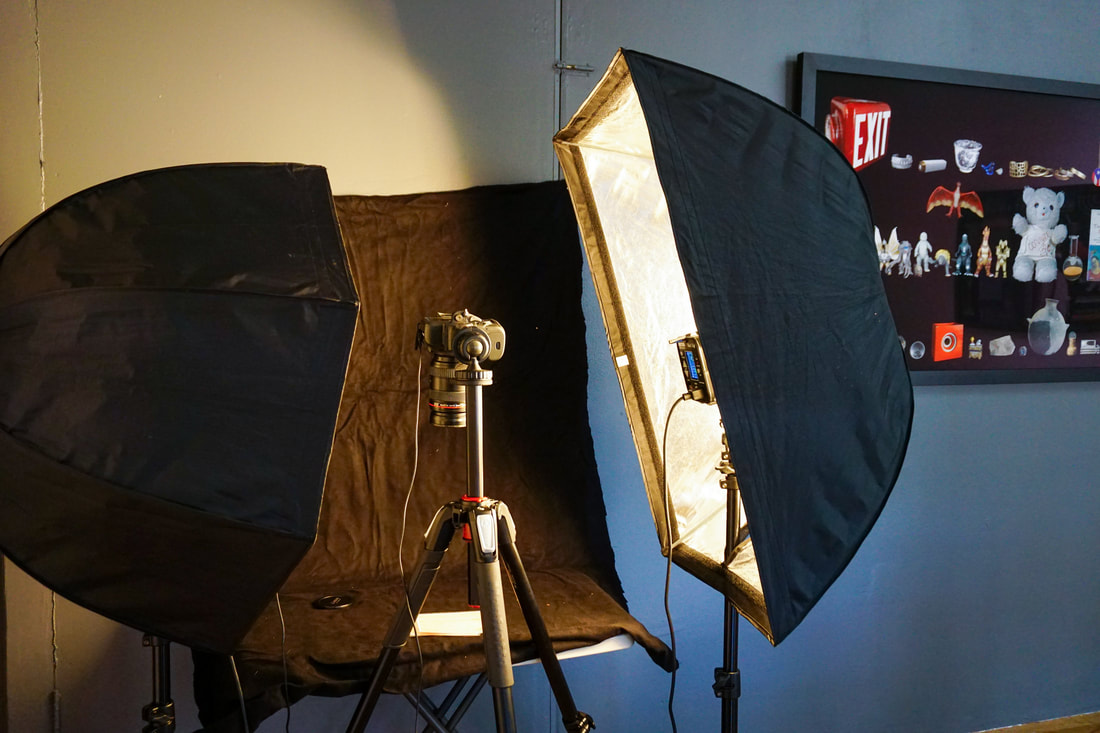
I have been spending my time editing photographs and entering object stories for The Museum of Sentimental Taxonomy. We had 26 people bring objects to be photographed over the weekend, and I am excited to get them up on the project website. One of the most important parts of this work, is the part that is unseen by anyone but the participant. The conversations and sharing that coincide with making the photograph. I feel so lucky to be able to hold this space for people to share something intimate about their lives, and that participants have been so generous with their time and stories.
While I am editing and doing admin work for the project, I tend to listen to podcasts or watch television. I just finished “Sabrina” and started a crime procedural that I am too embarrassed to share the name of.
Read more about Kija’s work here.
Lucas Artists Fellow – Visual Arts U.S.A.
THIS WEEK IN MY STUDIO (February 29, 2020)
Curator Britt Salvesen
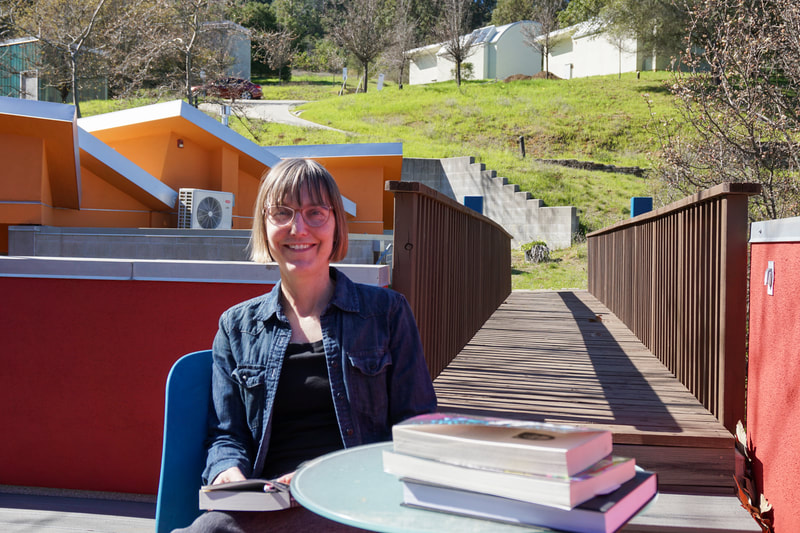
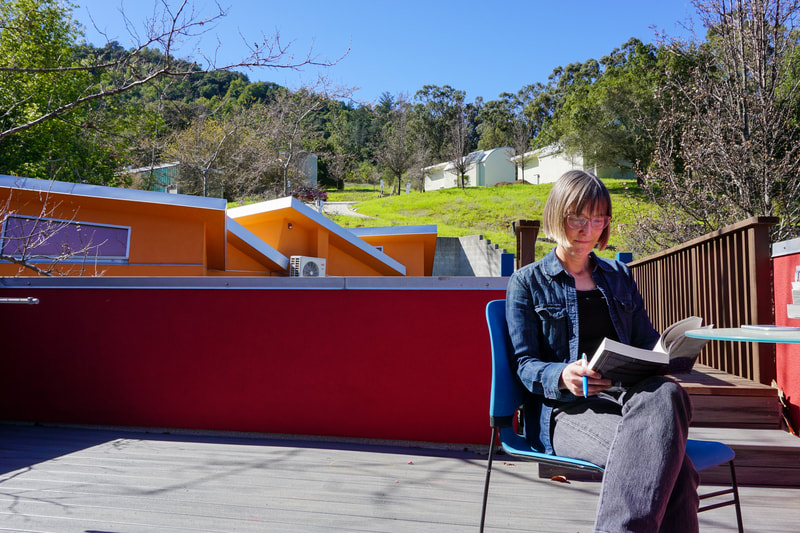
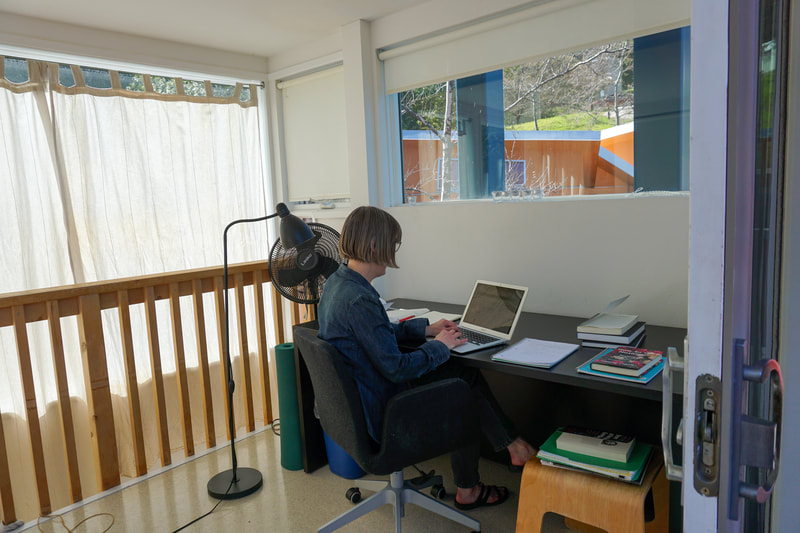
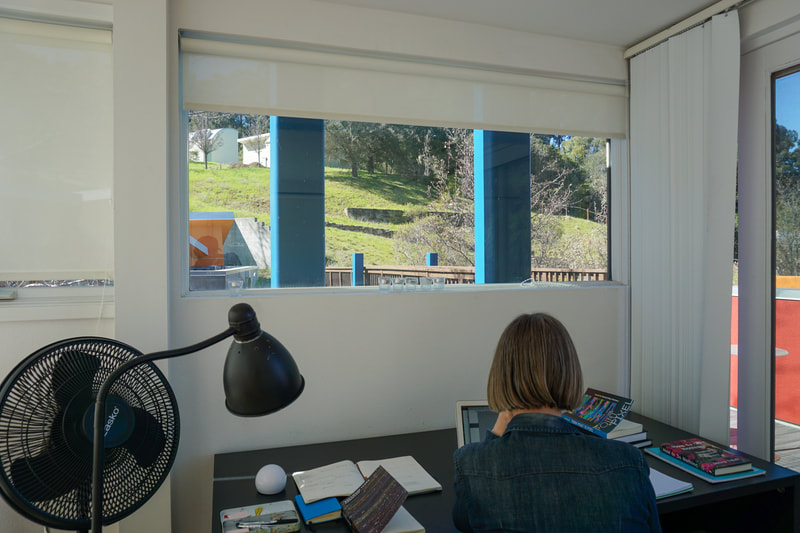
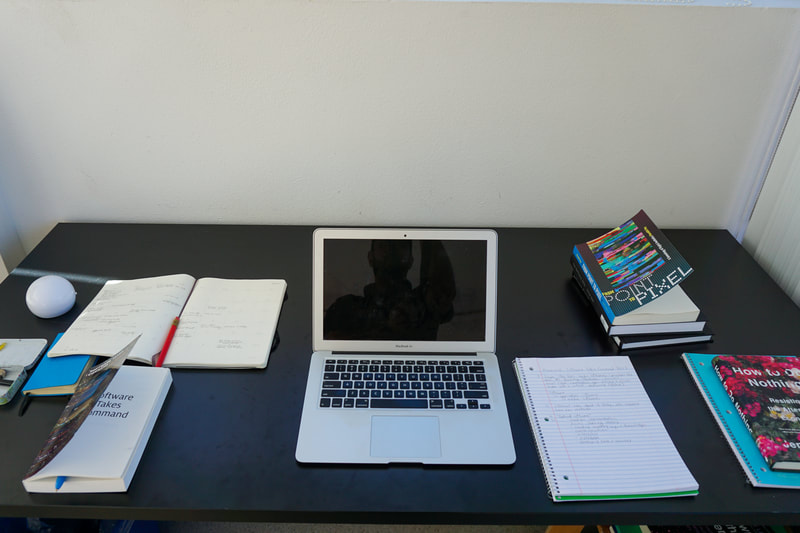
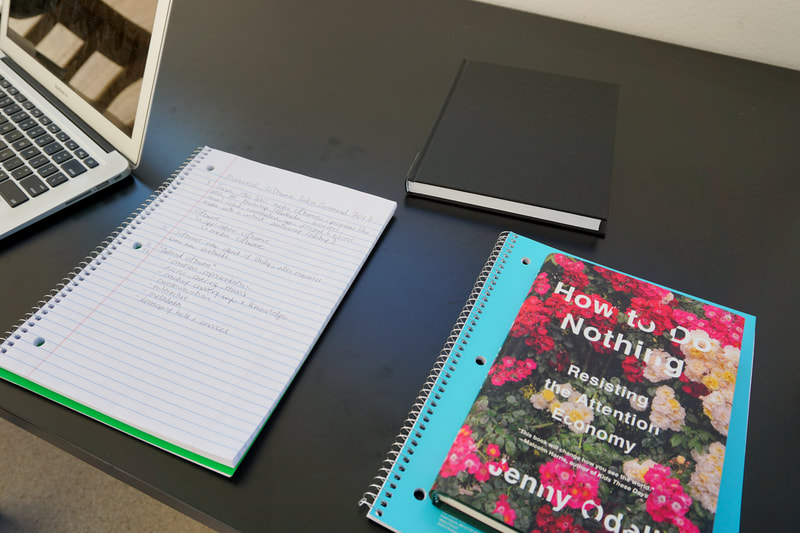

As a museum curator, a typical day is 80% meetings, 10% phone calls and emails, and 10% wrangling my calendar to fit in the meetings, phone calls, and emails. At Montalvo, I have time and space to think. Similar to an artist, a curator needs to tap into curiosity and creativity in order to develop an exhibition. The idea has to emerge and evolve in its own time, before the deadlines become real. Right now, I’m at the early stages of researching the history of Photoshop and image-editing software more generally. In the span of a single generation, these technologies have changed everything about how we make, share, and interpret images— and they also changed how we do research. This week, I’m going through books, oral histories, and online resources. I also took a “field trip” to the Computer History Museum in Mountain View. It’s amazing to be here, where so much of this software was created, in Silicon Valley… which I can now see as not just a catchphrase but a site of incredible natural beauty. So I admit, I am allowing myself to step away from my laptop and take walks through the redwoods. For inspiration, I have the perfect guidebook, How To Do Nothing by Montalvo Artist Fellow Jenny Odell.
Lucas Artists Fellow – Visual Arts U.S.A.
THIS WEEK IN MY STUDIO (February 5, 2020)
Multidisciplinary Artist Rafa Esparza
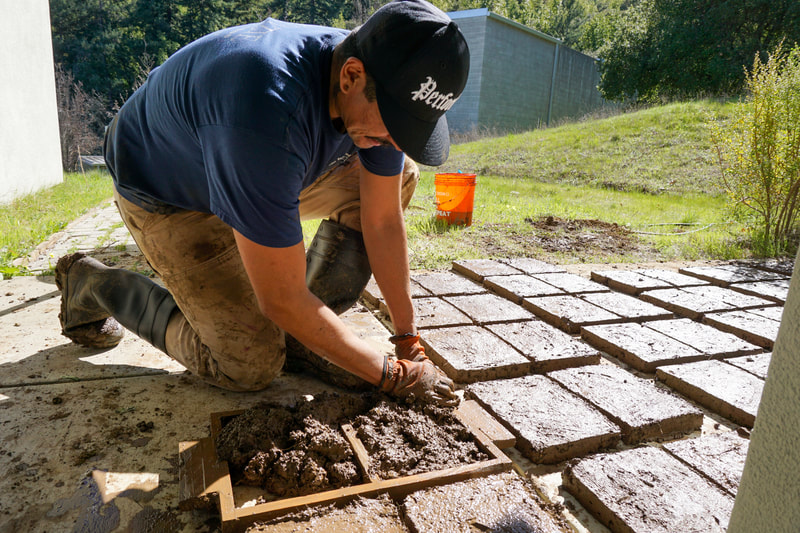
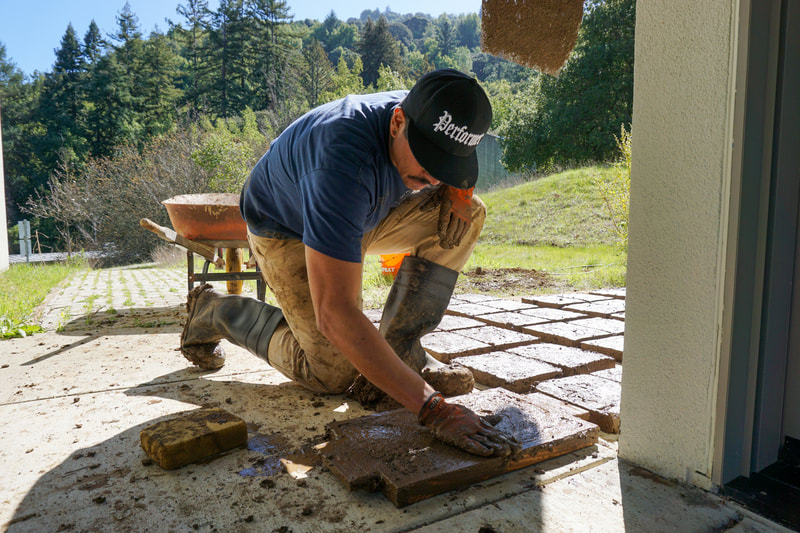

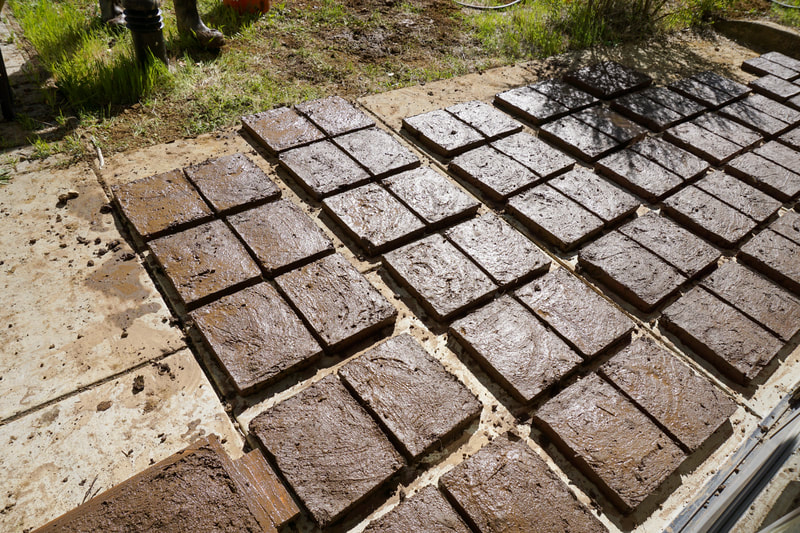
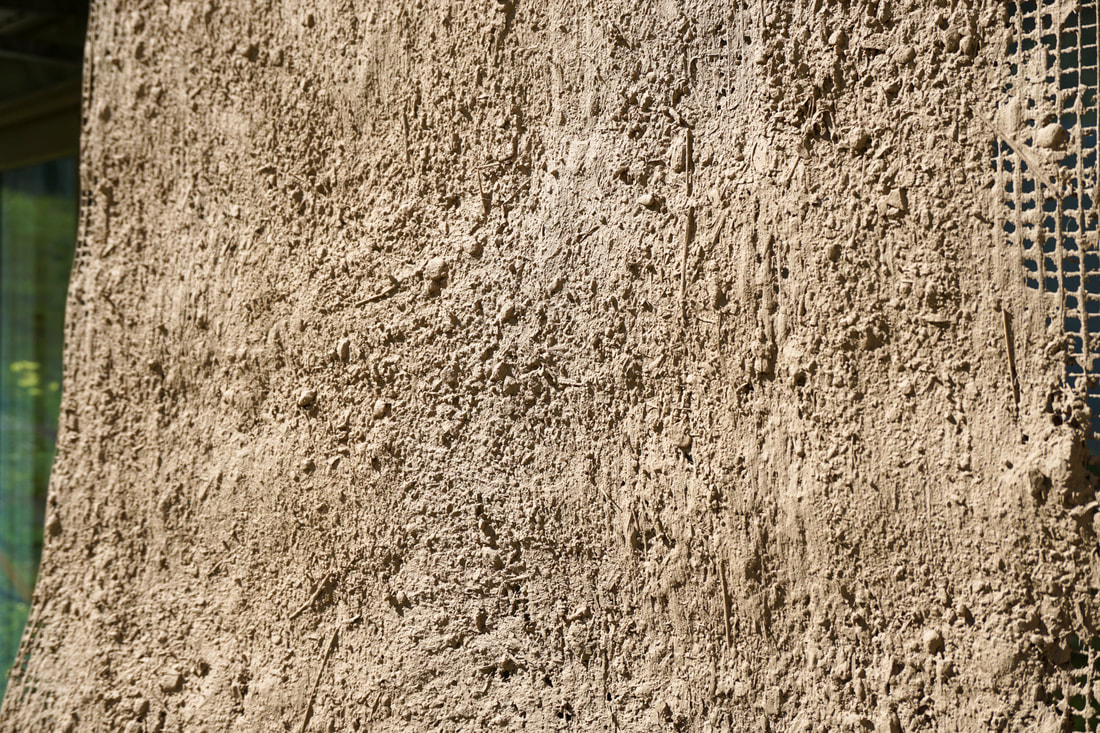
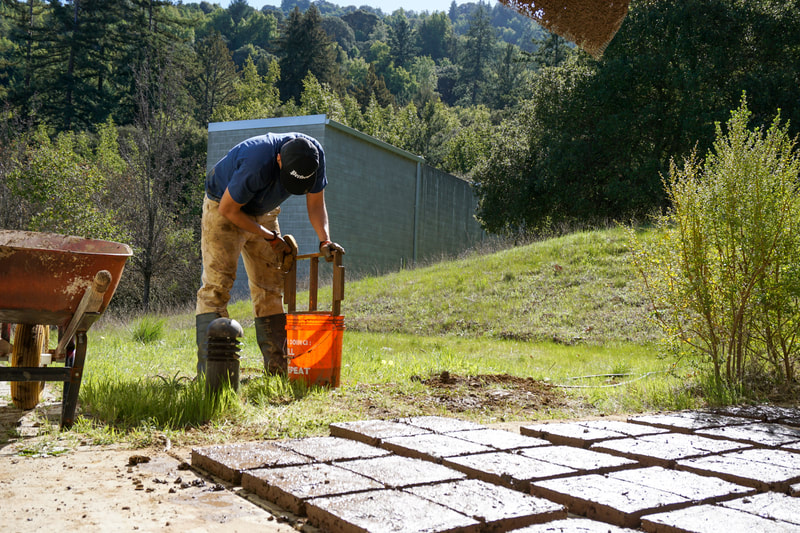
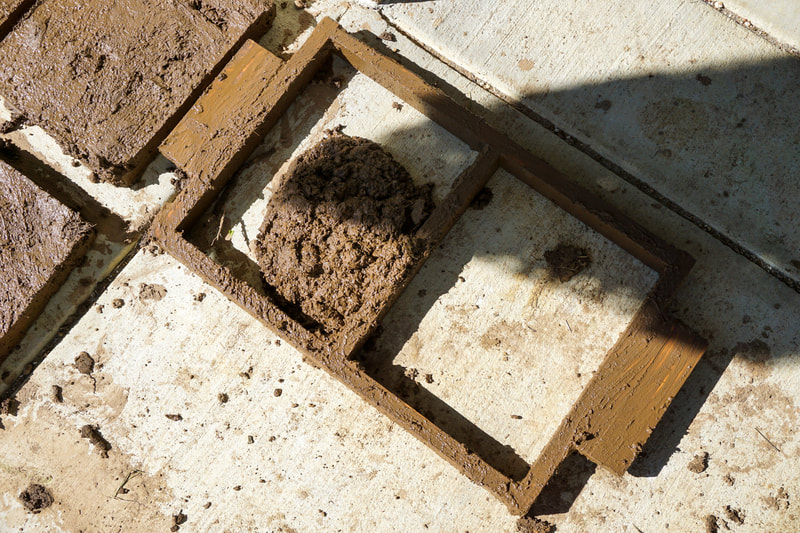
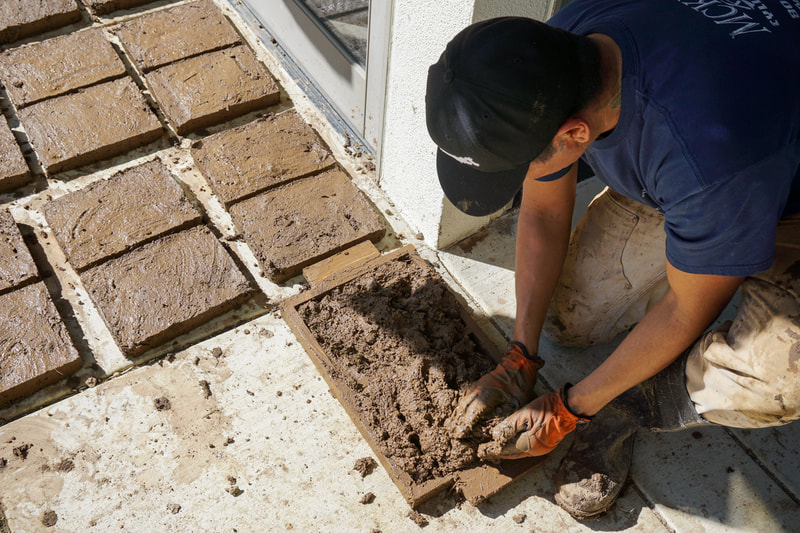

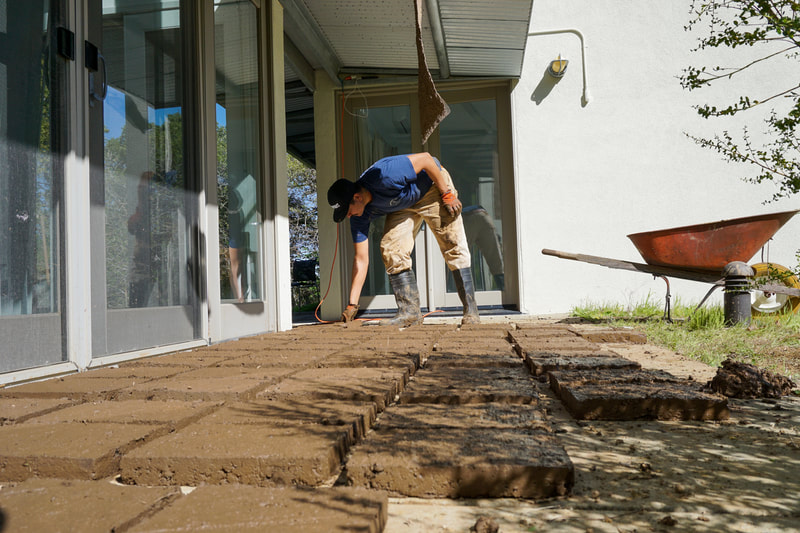
This week I’m working on making adobe bricks that will function as pavers to line the floors of a future installation and as a painting surface. It will be the first batch of adobe I’ll be mixing for brick-making here at Montalvo. Brick-making is a process that entails sun-baking the adobe and working outdoors. However, because of the overcast weather in the Bay, I’m working on creating an adequate environment for adobe brick-making indoors. Making adobe is proposing a way of working in and with landform—an indigenous perspective centering models of stewardship as it relates to being with nature, but also caring and tending to collaboration and the deep relationships that form as part of the process. I’ve used the material as a vehicle that drives collaborative experiments that engage discourse relating to migration, place-making, land, colonization, architecture and time travel. It’s also been a platform that I’ve used to build access among the working class and Queer/Trans People of Color who have invited me to collaborate on projects. Over the last year, I’ve begun work with adobe in a more solitary mode, using the material more sculpturally than as a building material. My work here will be making images on adobe and continuing to establish a one-to-one relationship with the material and practice I inherited directly from my father, Ramon Esparza.
Read more about Rafa’s work here
Lucas Artists Fellow – Visual Arts U.S.A.
THIS WEEK IN MY STUDIO (January 23, 2020)
Visual Artist & Filmmaker Alison O’Daniel
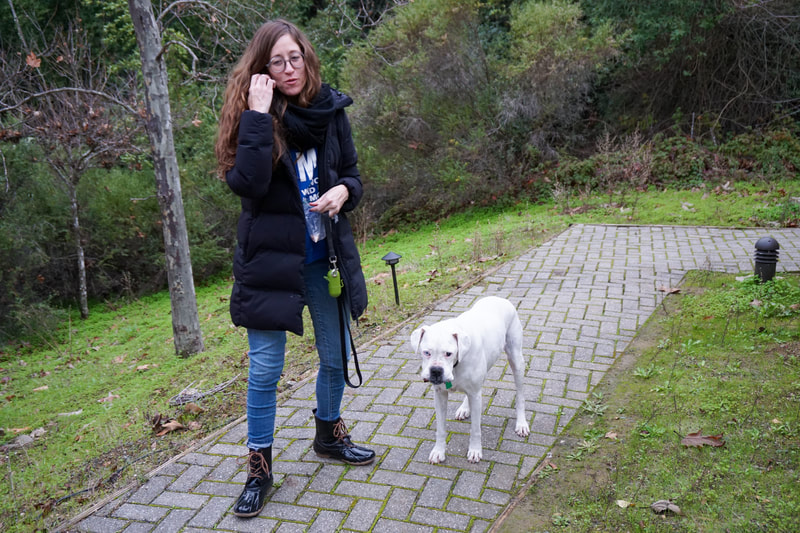

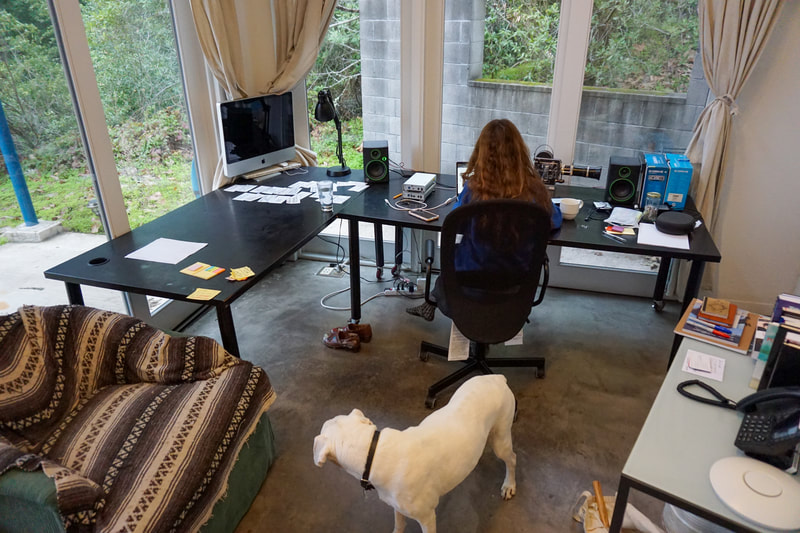

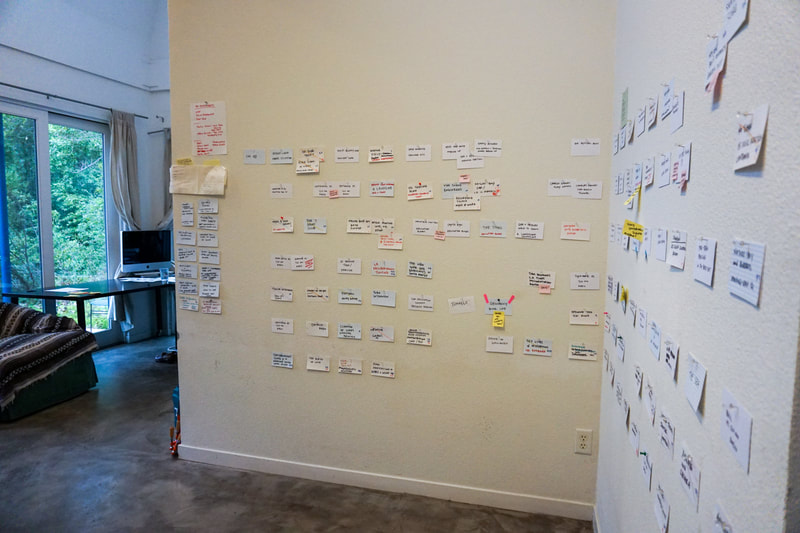
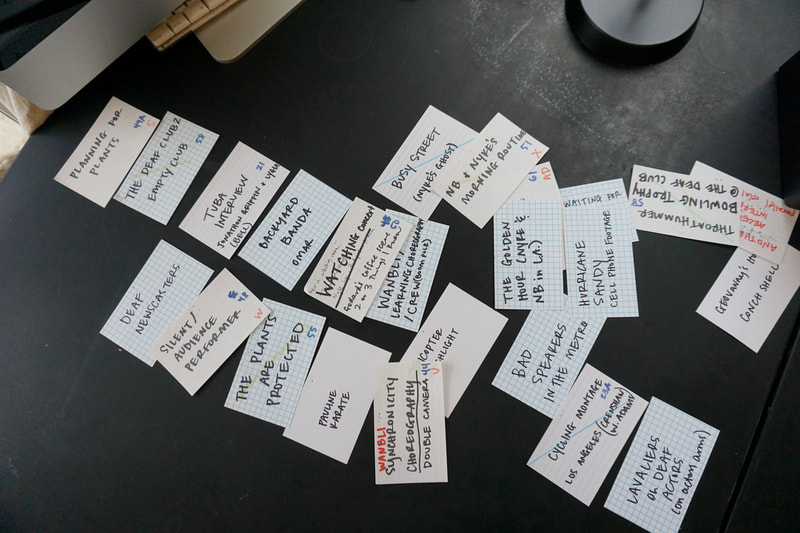
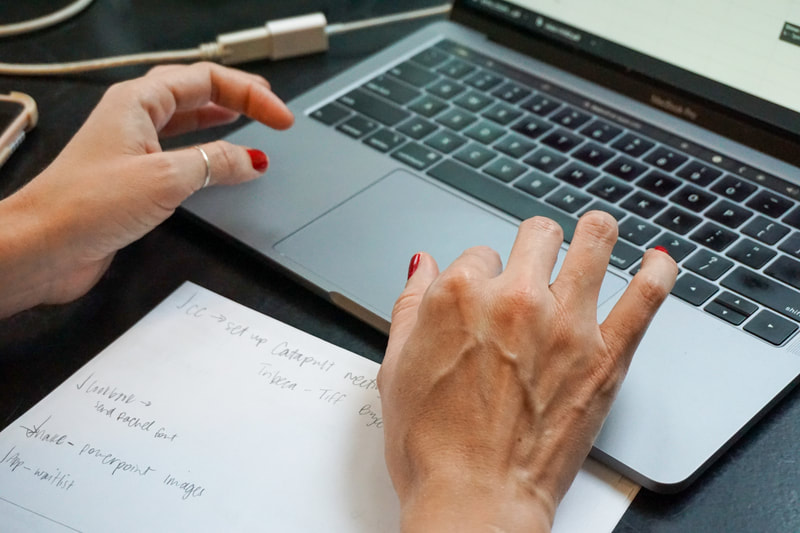
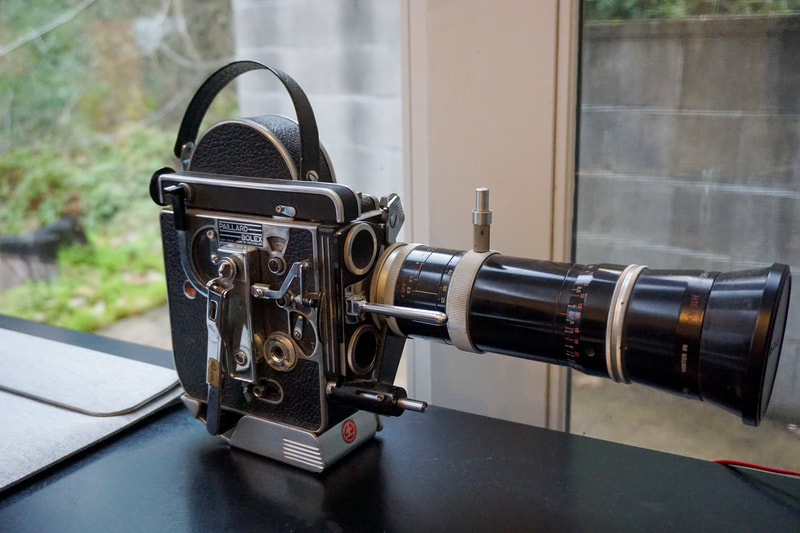
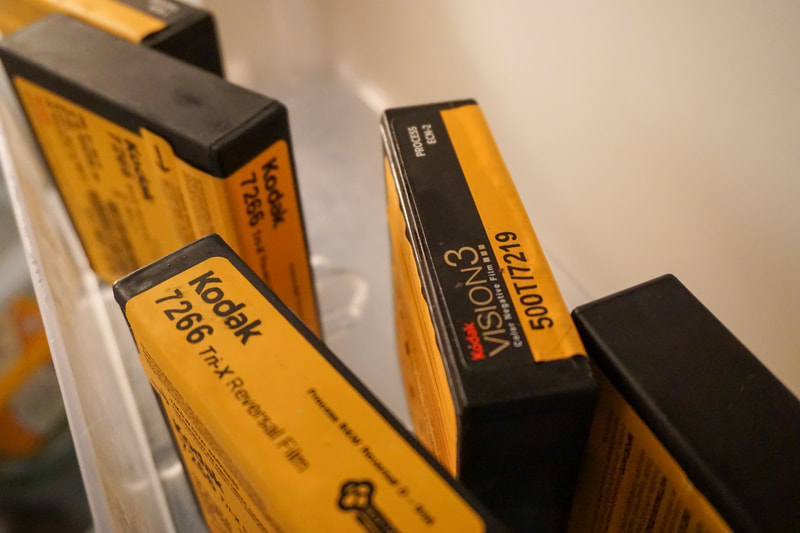
During my three weeks here, I’ve been quite tethered to the computer. In the morning, I have woken up early each day and taken my dog on daily hikes through the mountains and paths behind the villa. And then we come back to the studio and settle in—her for hours of luxurious napping, and me for hours of intense typing. I’m trying to finish a screenplay during these three weeks. When I leave here, my producer and I go directly to Sundance to pitch our film in a development forum so that we can film this coming summer. After hours of furious typing and note-taking and pacing and thinking, I shut the whole thing down and we go out on another hike.
Lucas Artists Fellows – Visual Arts U.S.A.
THIS WEEK IN MY STUDIO (January 22, 2020)
Multidisciplinary Artists Annie Han & Daniel Mihalyo
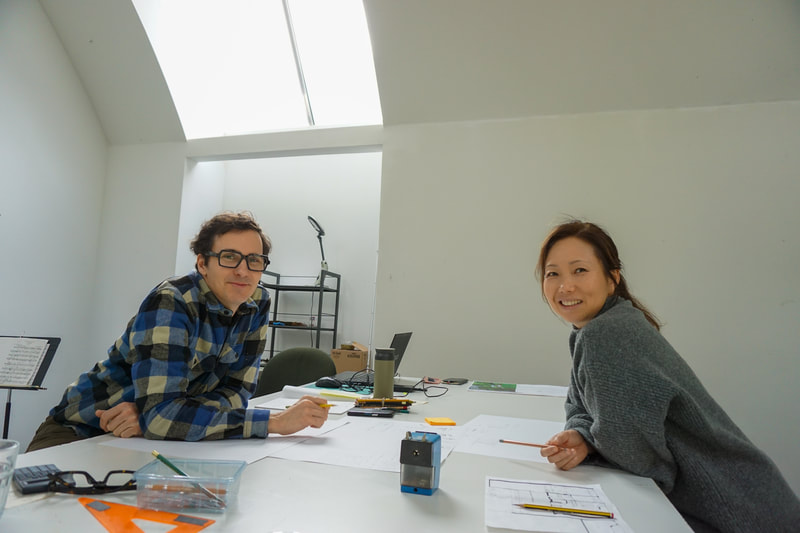
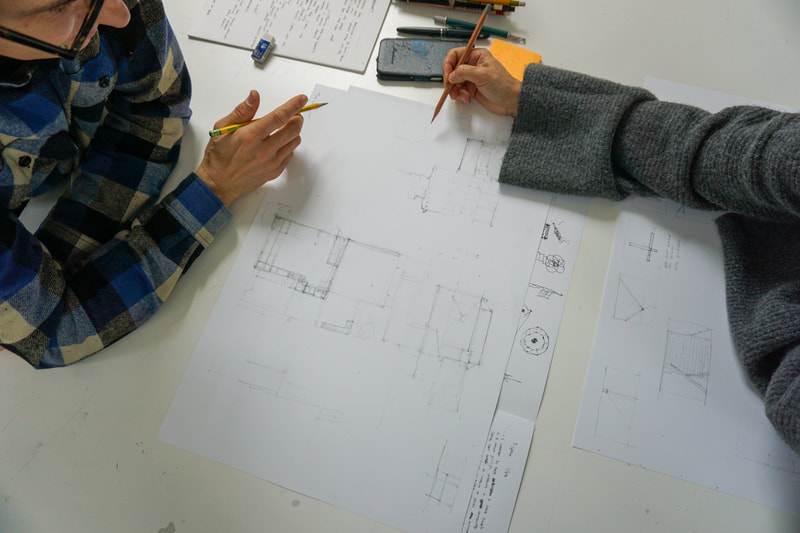
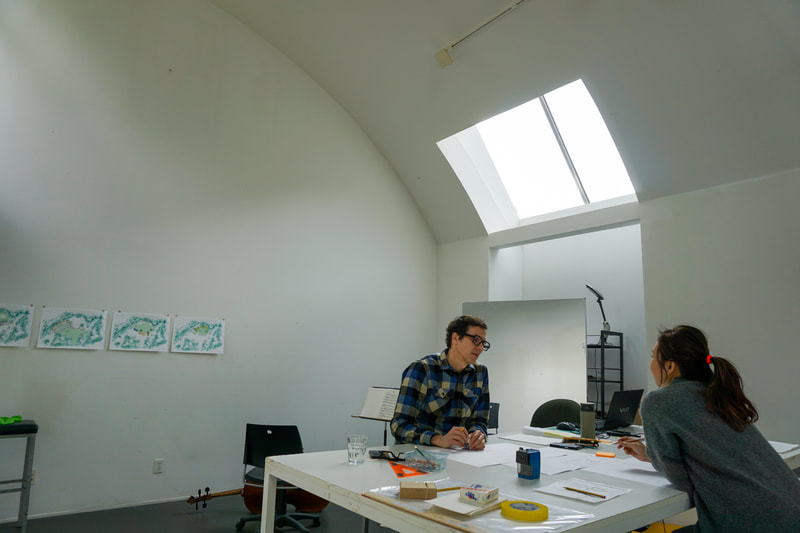

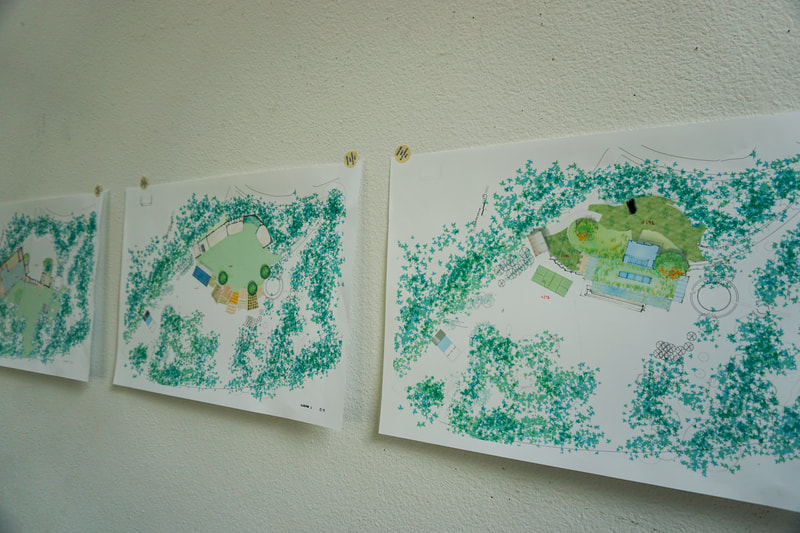
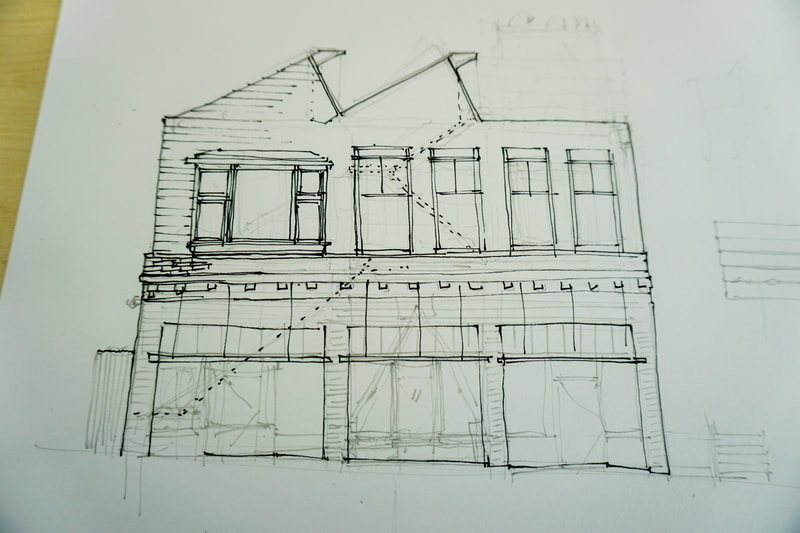
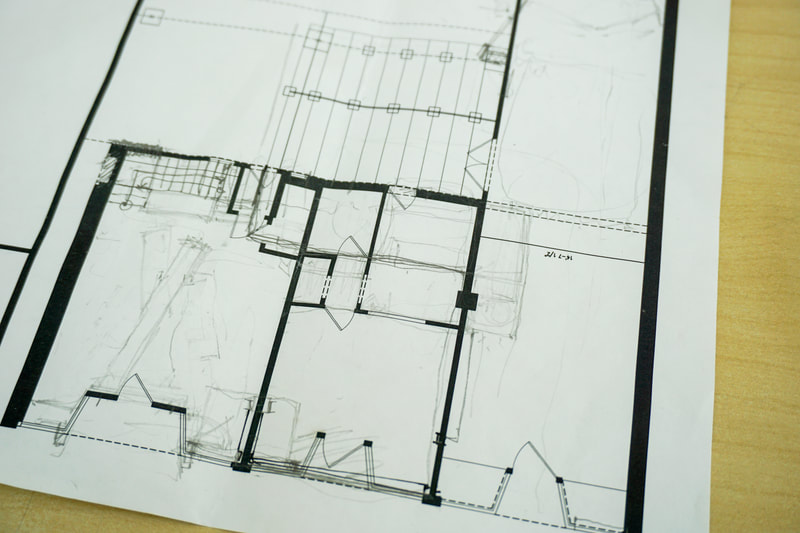
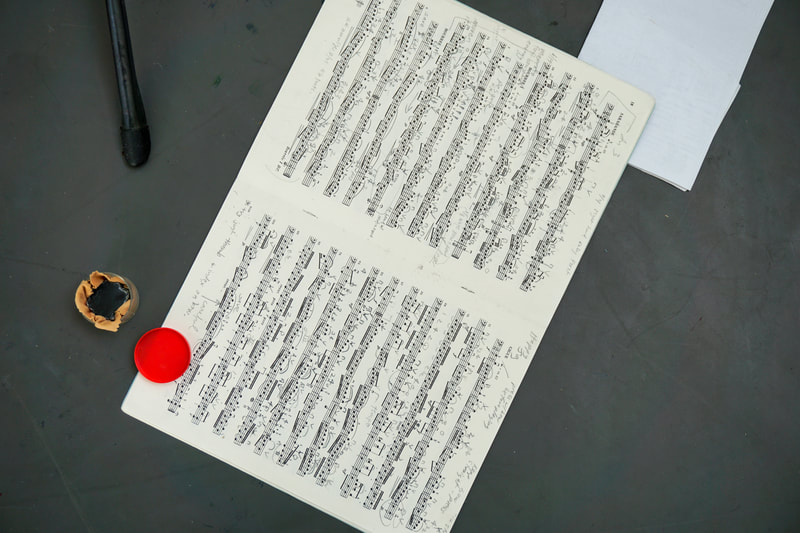
Our arrival was met with some strange gastro-intestinal nausea. All finished being dizzy and back-on-track with coffee and heated conversations over direction on several upcoming exhibitions. Today feels fresh and new. Sun blasts, rough sketches and mini-breakthroughs coming fast like little waves. I think that fragile, matchstick-size salamander at our door last night was a reminder to pay attention to small things right around us. That coyote the other morning also seemed to be saying something like, “even though I don’t have hair on my tail any more and the fleas are itching, I’ve still got teeth and a hunger to live. I don’t give a damn about the rain—let’s go hunting!” We are thinking about the landscape, shadows, voids, string vibrations, and colors.
Lucas Artists Fellow – Visual Arts; Guest Artist U.S.A. & Puerto Rico
THIS WEEK IN MY STUDIO (January 13, 2020)
Visual Artist Xandra Ibarra and Sound Artist Rosana Cabán

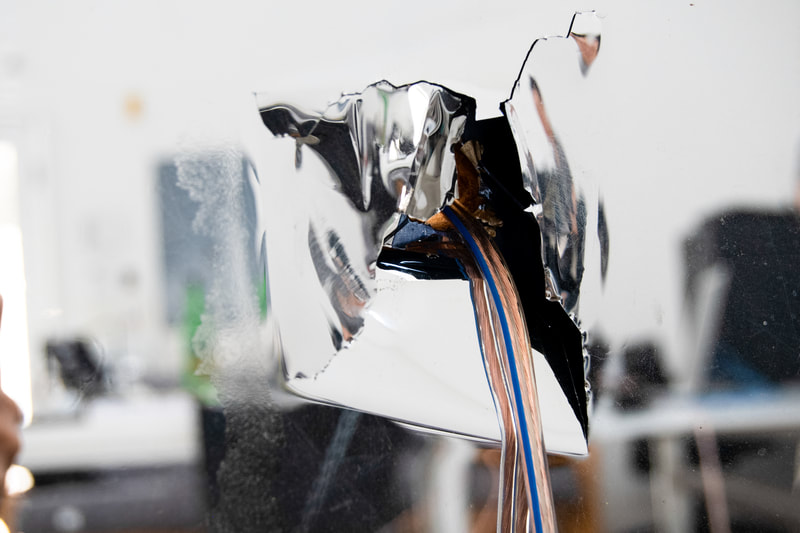
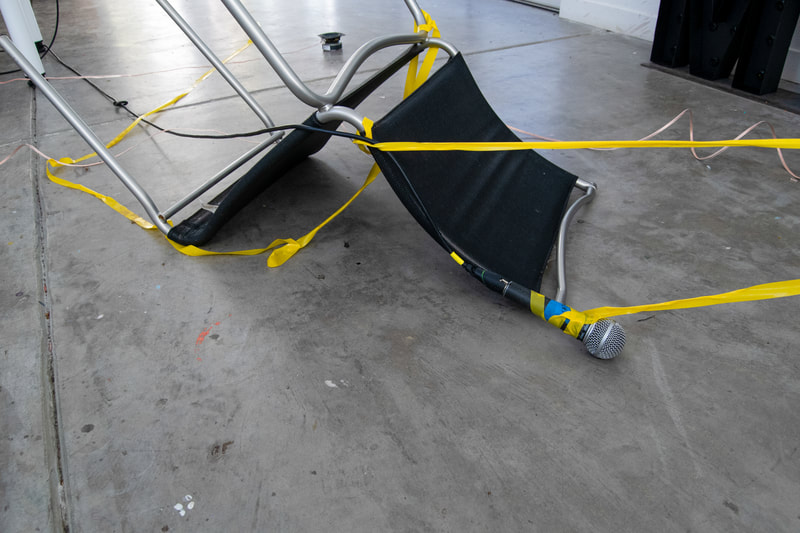
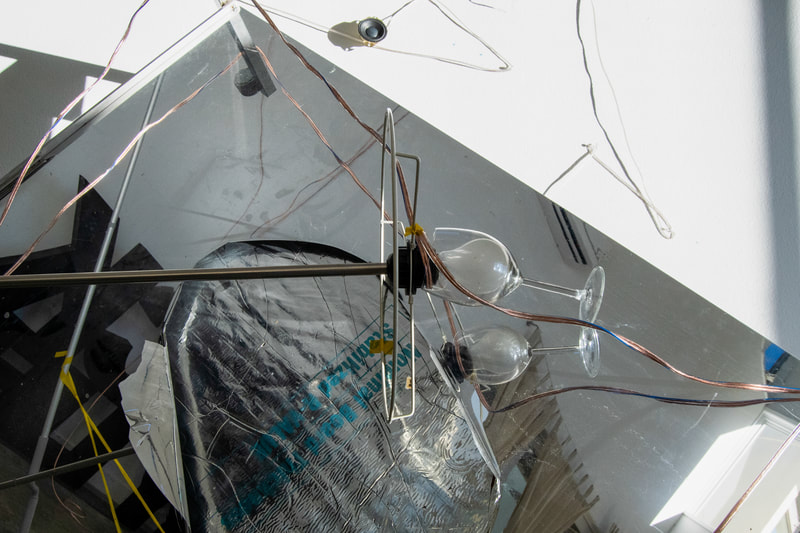
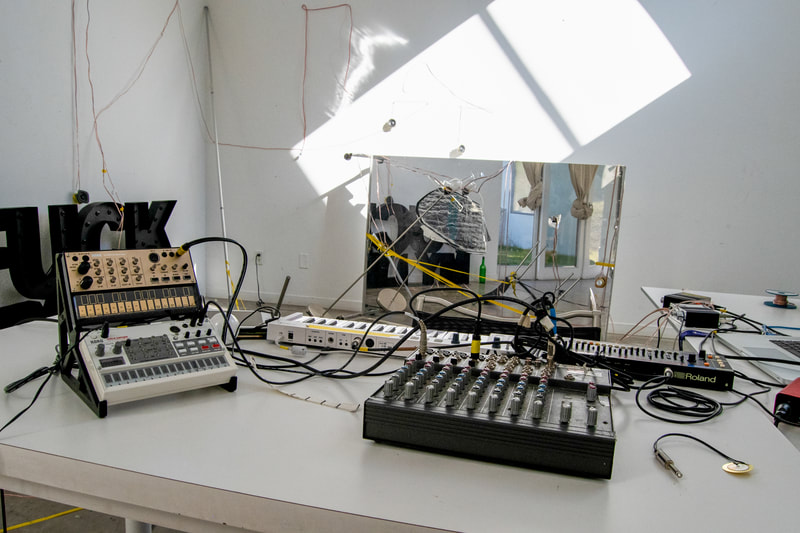

We had laughs, drinks, too much coffee, microphones attached to our heads with yellow tape, ate animals, scared off mountain lions, talked about the awkwardness of gifting flowers. We made compositions with tiny speakers, lamps with wine glasses, shook mirrors, turned chairs upside down and felt Puerto Rican realness. Thank you Montalvo Arts Center.
Read more about Xandra’s work here & about Rosana’s work here.
Lucas Artists Fellow – Visual Arts; Guest Artist U.S.A. & Italy
THIS WEEK IN MY STUDIO (January 11, 2020)
Mixed Media/Painter Monica Lundy & Visual Artist Daniele Puppi
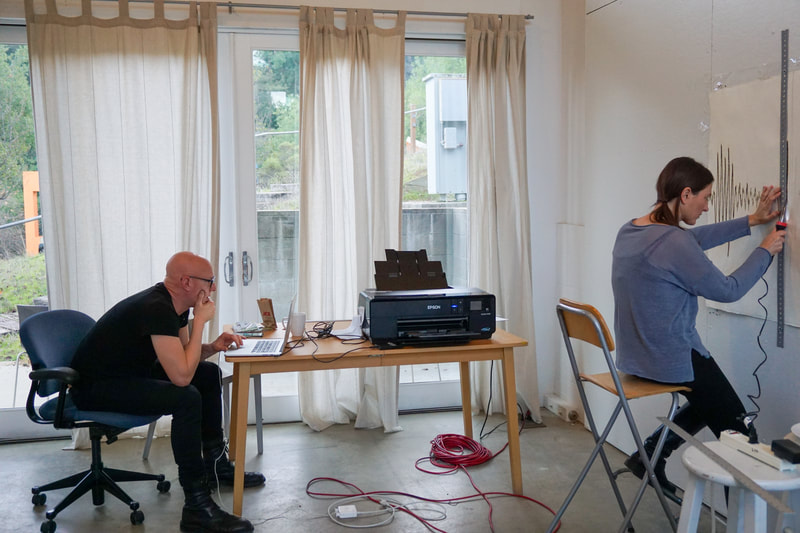
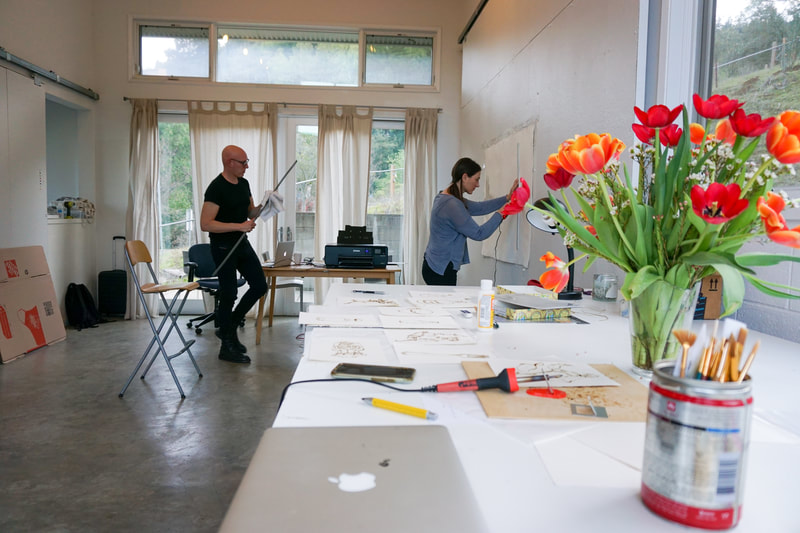
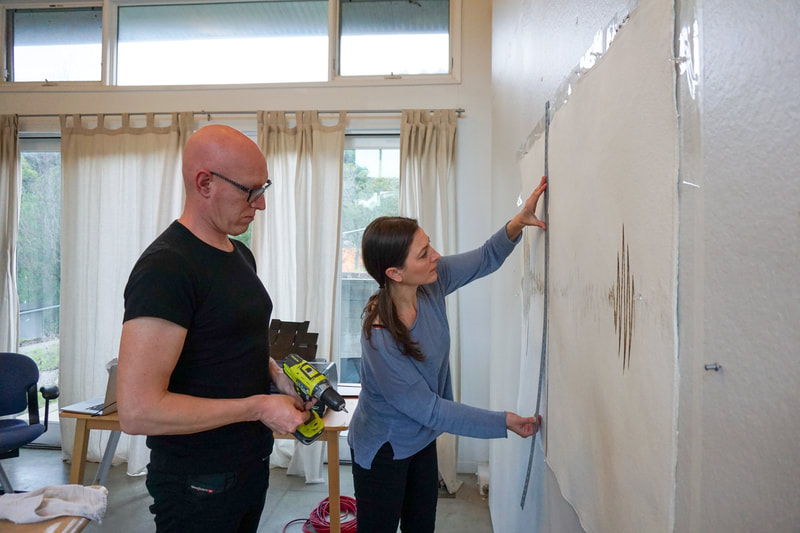
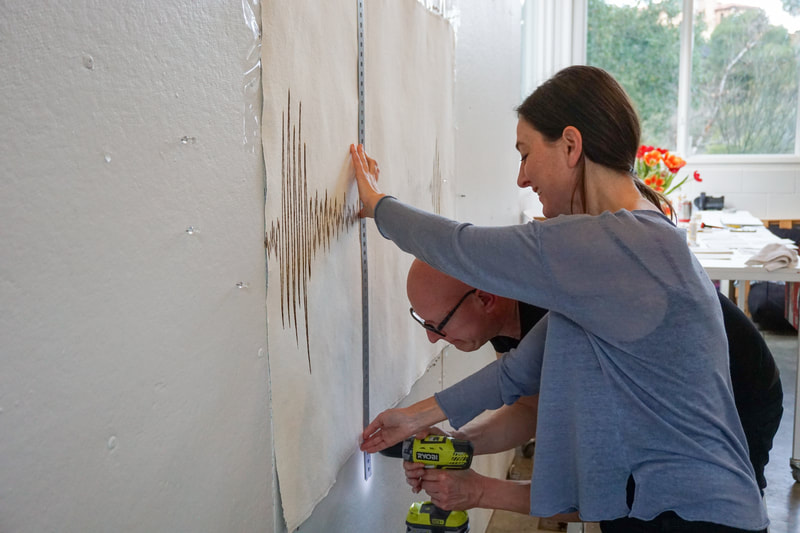
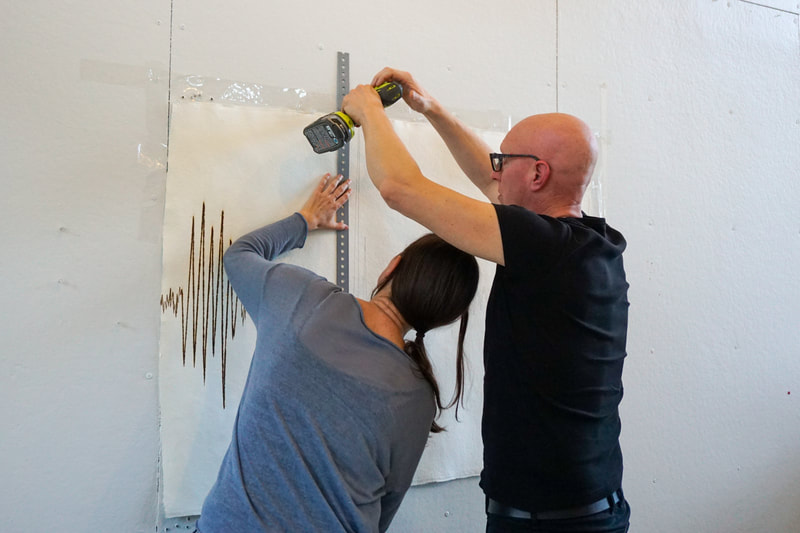

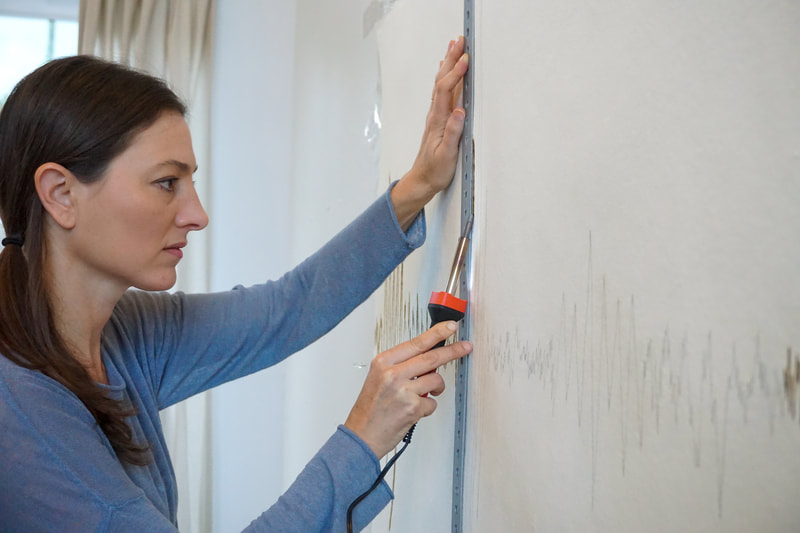


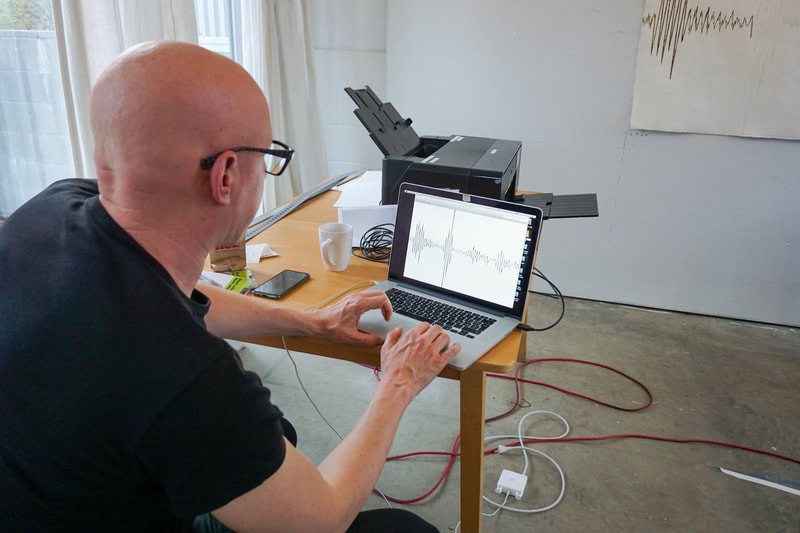
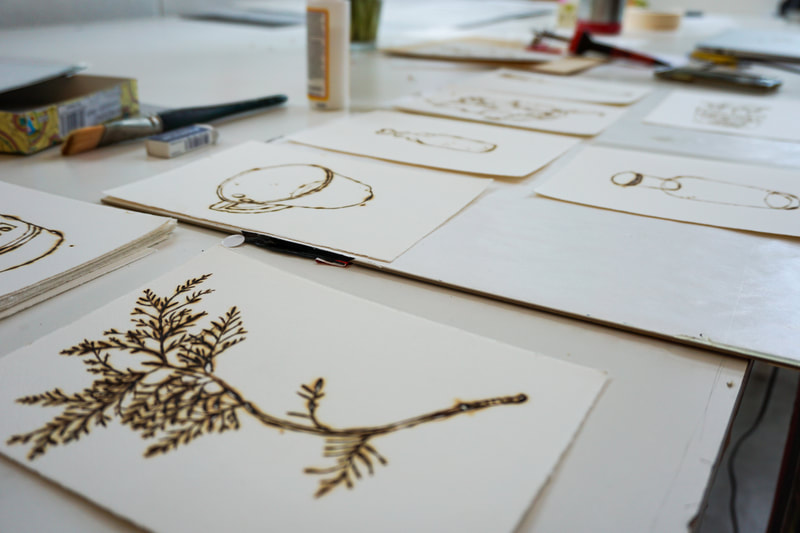
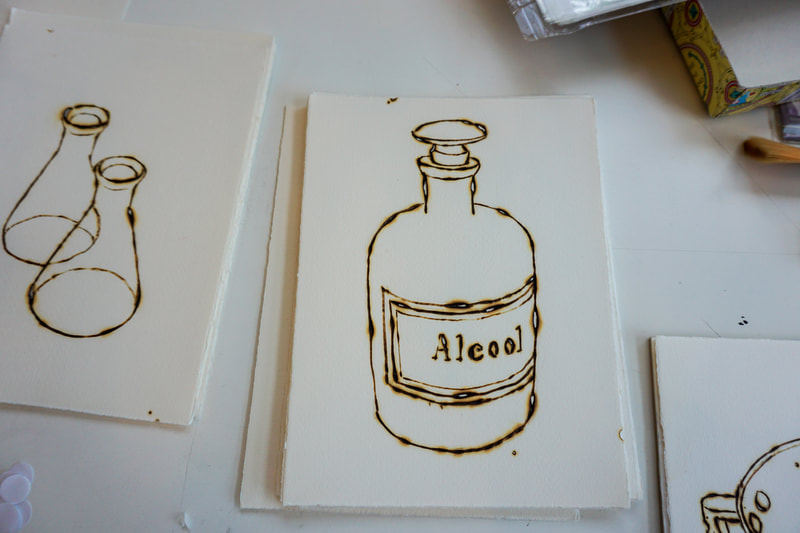

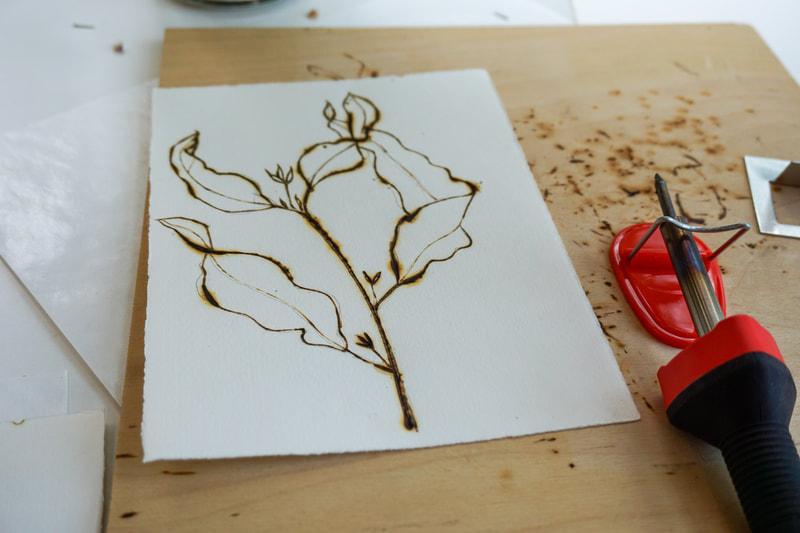
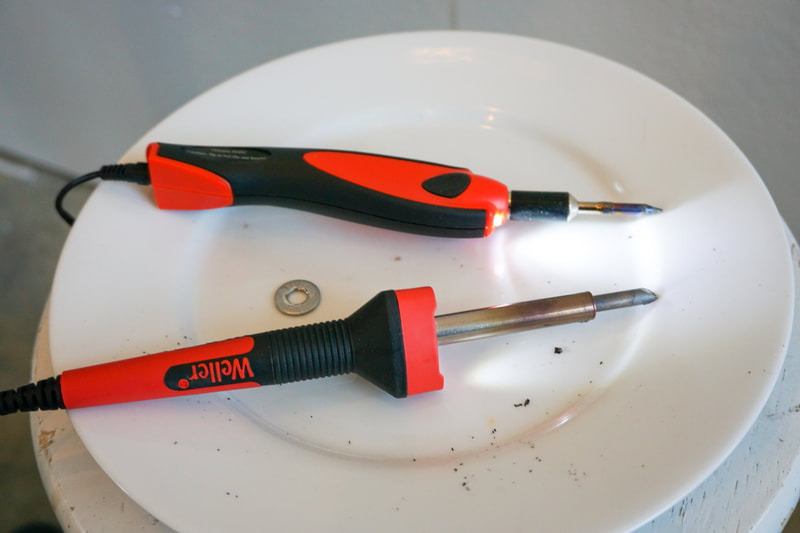
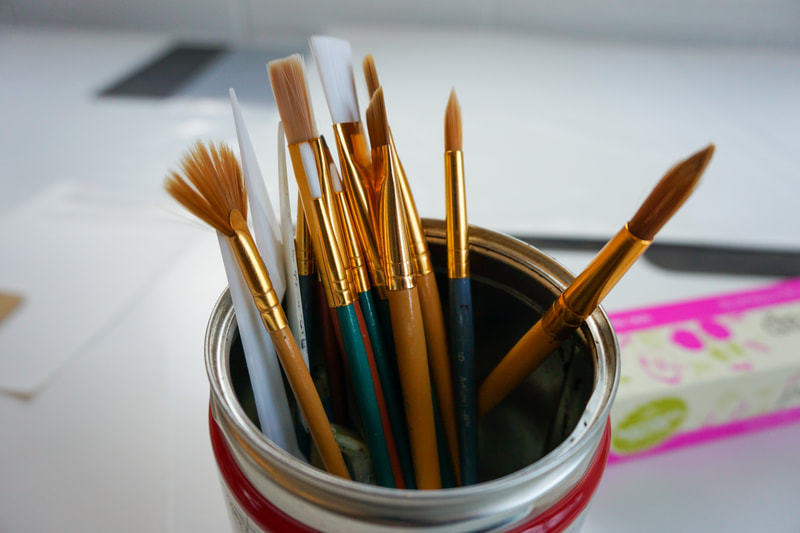
“I, who at dawn at Montalvo, in my underwear, encountered the song of coyotes” is a visual piece that was based on an audio recording taken by the artist collective Love Percussion (Monica Lundy and Daniele Puppi) during our residency at Montalvo. The original recording was a documentation of our presence in the nature surrounding the Lucas Artists Program. It documents the sound of our footsteps through the grass, accompanied by the dawn chorus of bird calls and two coyotes talking with each other in the ravine. It was an auspicious point in time of synchronicity—between the shifting of nighttime to daytime, between us, between the coyotes, as well as in our experience of being at Montalvo’s LAP. It was a rare moment of harmony, in which we were not intruding upon nature, but rather were an integral part of this wonderful life.
It was a rare moment of harmony, in which we were not intruding upon nature, but rather were an integral part of this wonderful life.
Read more about Monica’s work here & about Daniele’s work here.
Guest Artist U.S.A.
THIS WEEK IN MY STUDIO (December 19, 2019)
Sound Artist Stephan Moore

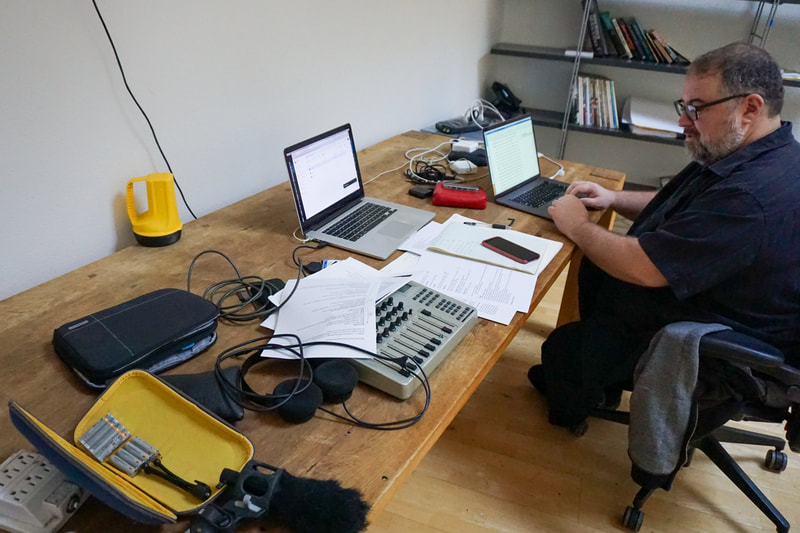
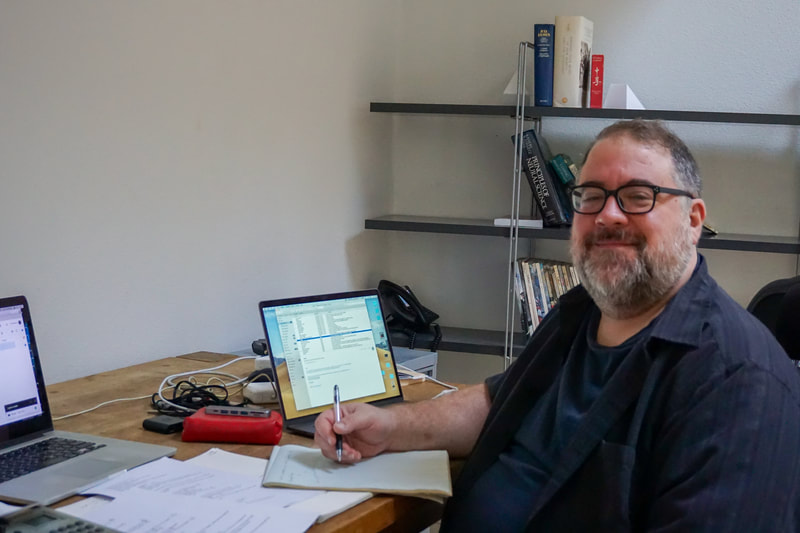
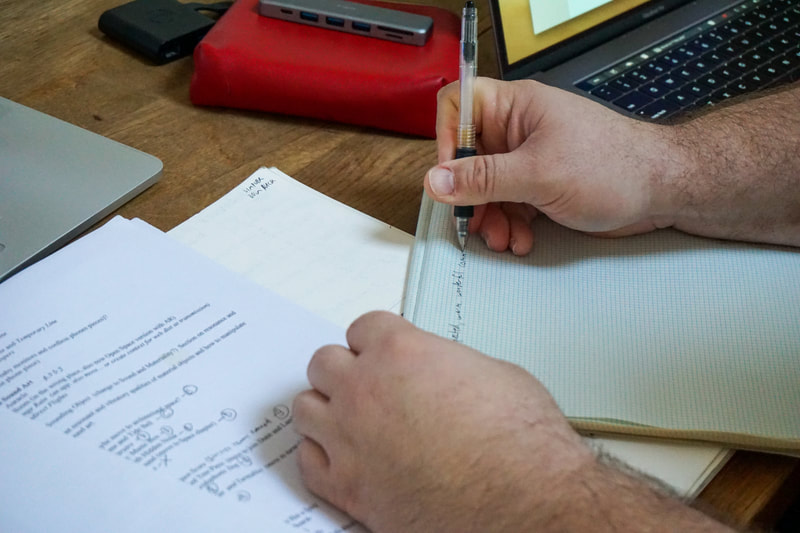
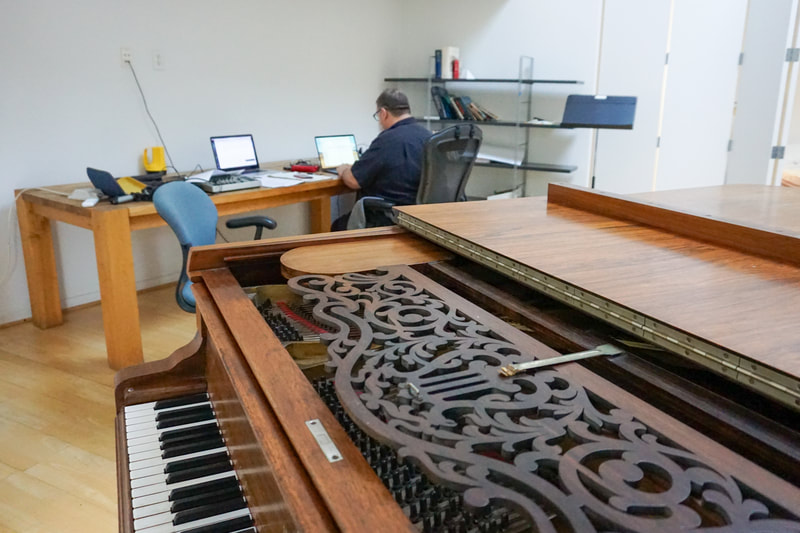
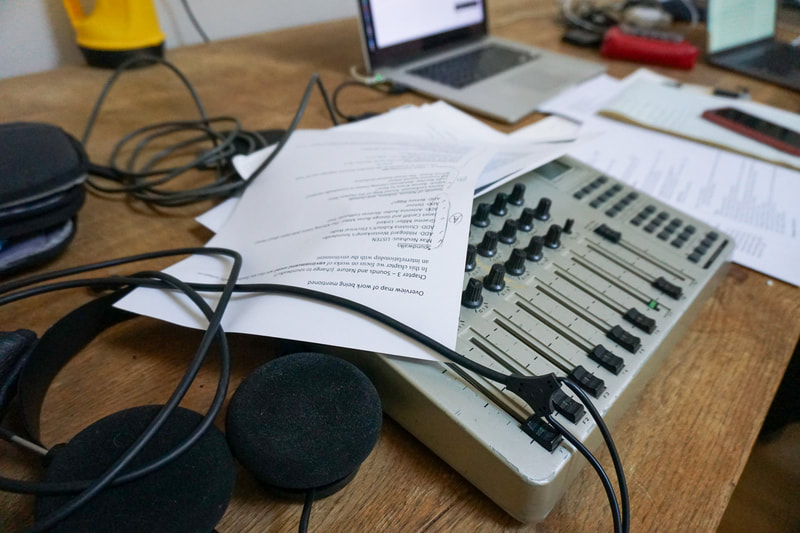
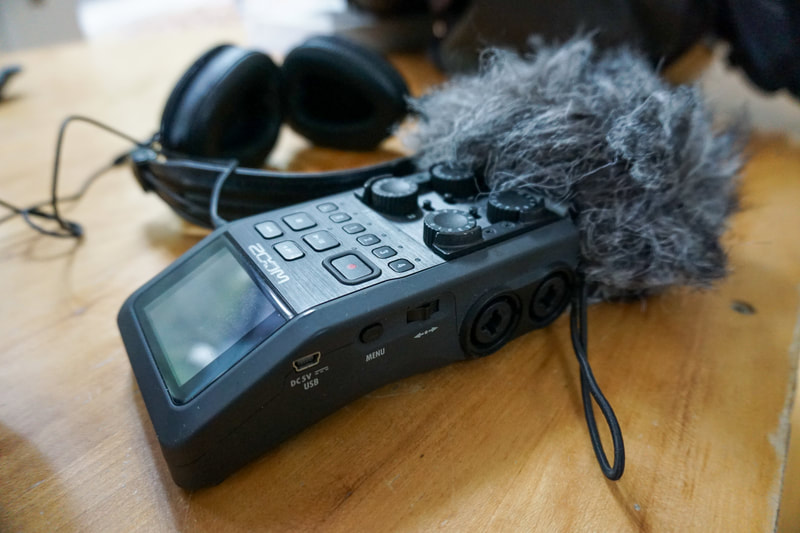
My first experience of Montalvo was to visit the “Now Hear This!” exhibition a couple of years ago, after sound artist Stephen Vitiello encouraged me to get in touch with the Lucas Artists Program curator Donna Conwell. It was a great introduction to the Montalvo grounds for me, as a sound artist and as a curator. During my visit this time, I have been invited to write about the history of sound artists making work at Montalvo through the Lucas Artists Residency Program, focusing on, but not limited to, “Now Hear This,” which was the first sound-focused exhibition at Montalvo. I will be digging into the archives to learn more about the artists who have spent time here creating sound works and being inspired by the sounds and spaces I am now surrounded by.
Read more about Stephan’s work here.
Guest Artist U.S.A.
THIS WEEK IN MY STUDIO (December 18, 2019)
Founding Artistic Director of We Players Ava Roy
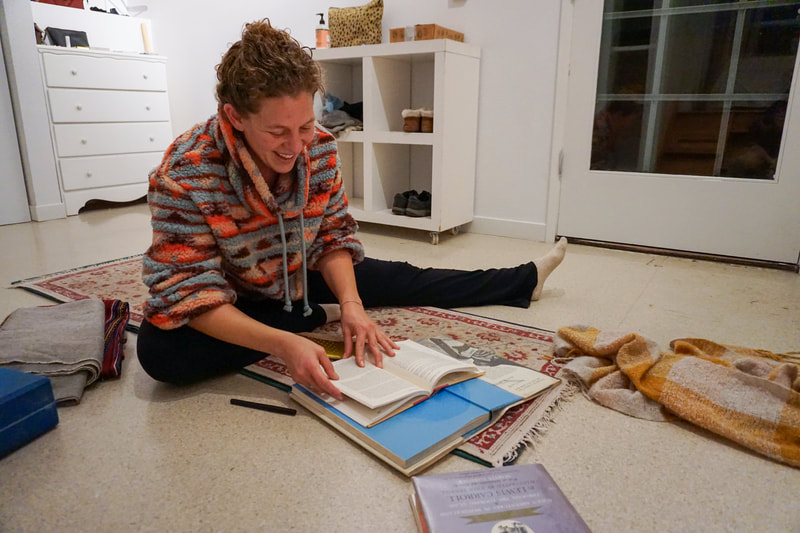
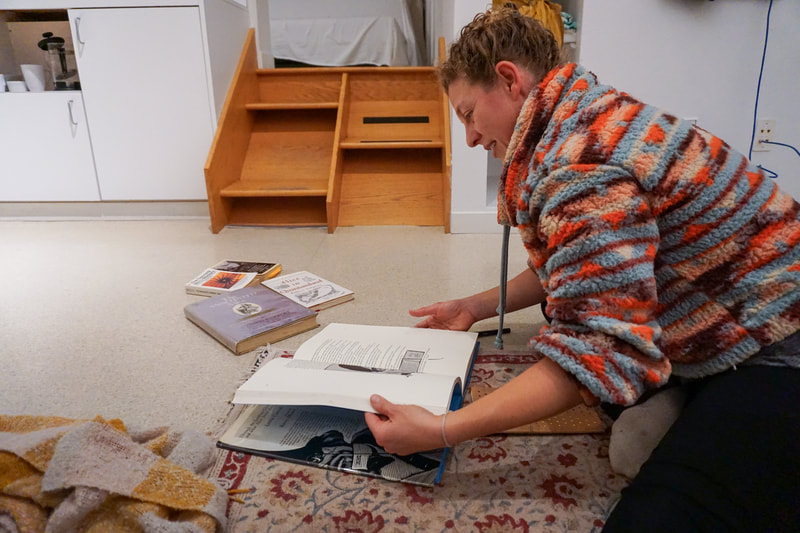
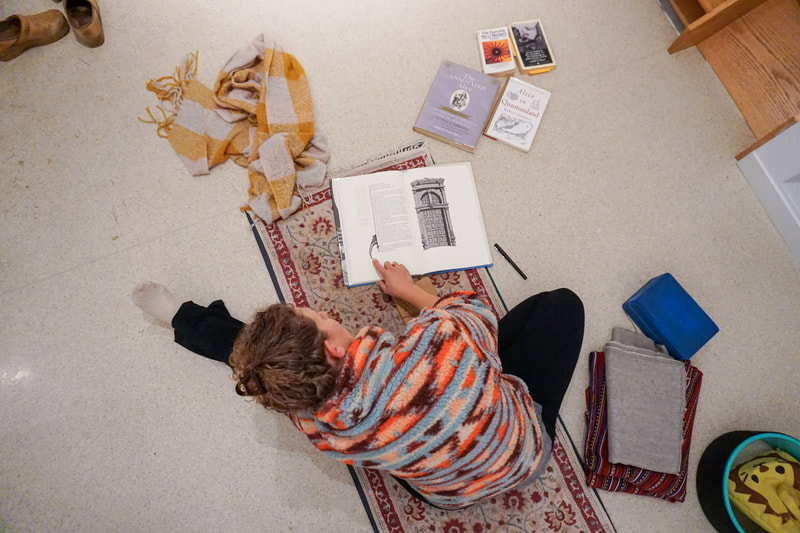

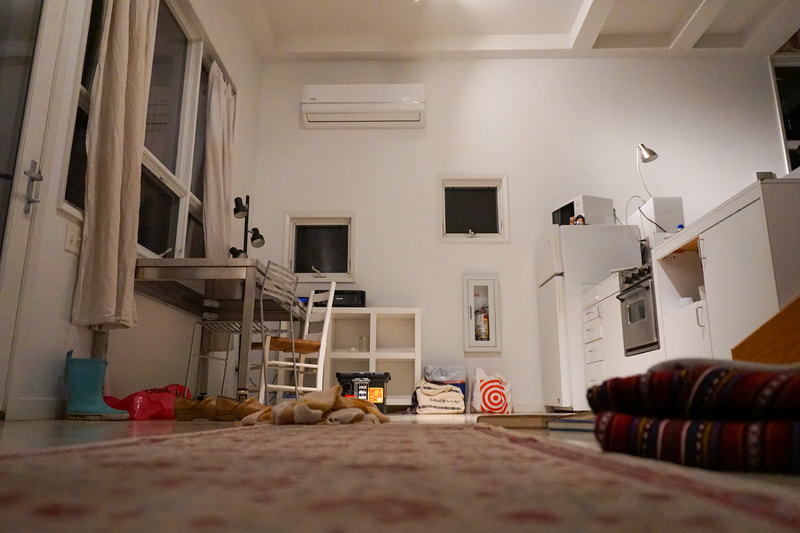

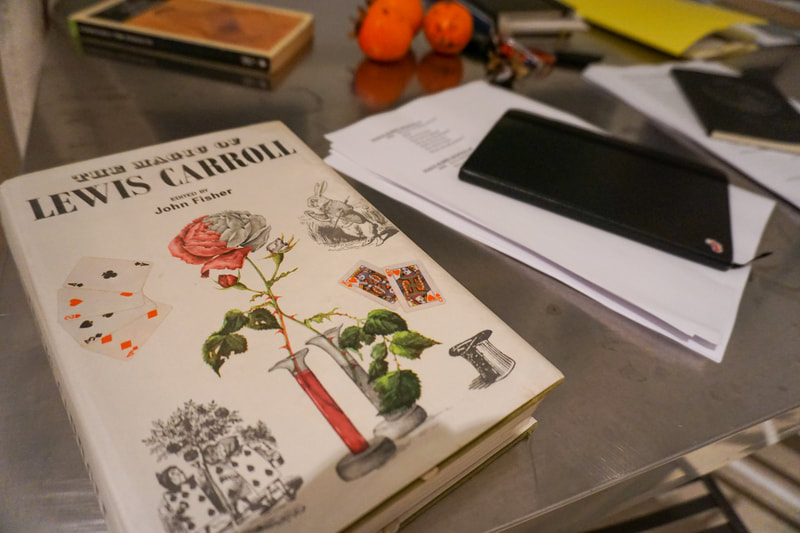
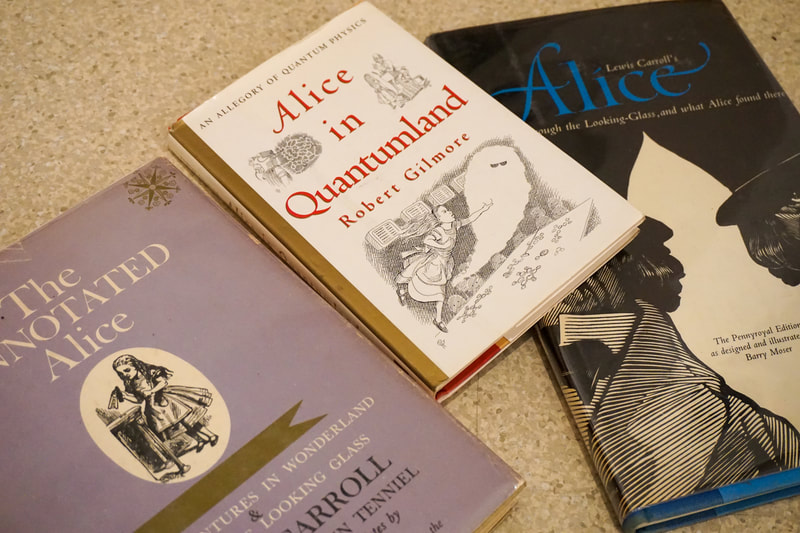
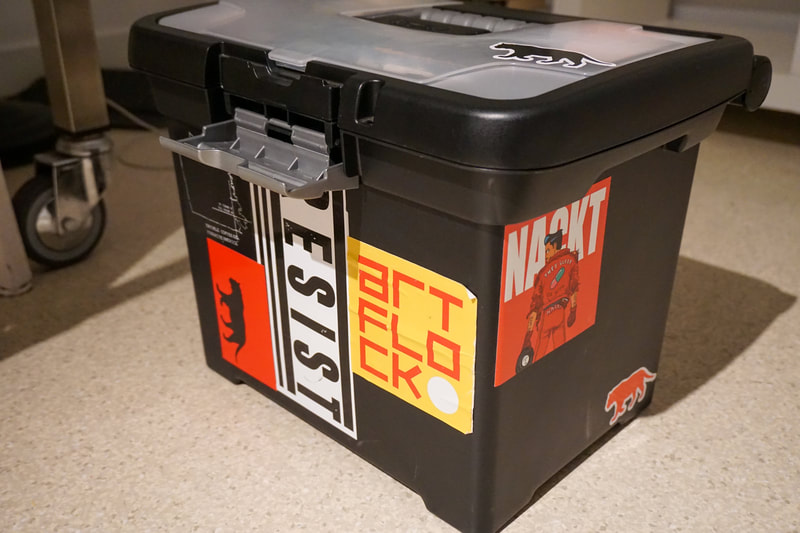
Early morning: Crack eyelids, catch streaks of luminous pink across the sky.
Morning warming: Mist rising off the ridge of deep green pines.
Glass table strewn with papers.
Concrete floor strewn with papers.
Coffee table scattered with books.
Gathering. Sifting. Collecting. Organizing.
I’m assembling a script. Writing bits of it. Mostly rearranging.
Envisioning characters, direction, design, audience participation.
What Alice Found There
Stretching from Rose Garden to Windmill in Golden Gate Park in April and May 2020
Here, Montalvo.
Precious. Space. Quiet. Time.
Synthesize. Prepare.
Afternoon: Snacks, stretching, sit on a cushion, clamber in the forest.
Afternoon: Work. Computer screen. Shift the books and pages about.
Evening: Descend the hill. Set the table. Break bread together.
Be daily ever more honored, surprised, delighted, moved, inspired by the company we keep here.
A privilege.
A gift.
Read more about Ava’s work here
Lucas Artists Fellow – Literary, Fiction; Visual Arts U.S.A. & Italy
THIS WEEK IN MY STUDIO (December 15, 2019)
Fiction Writer Zeyn Joukhadar & Visual Artist Matteo Rubbi
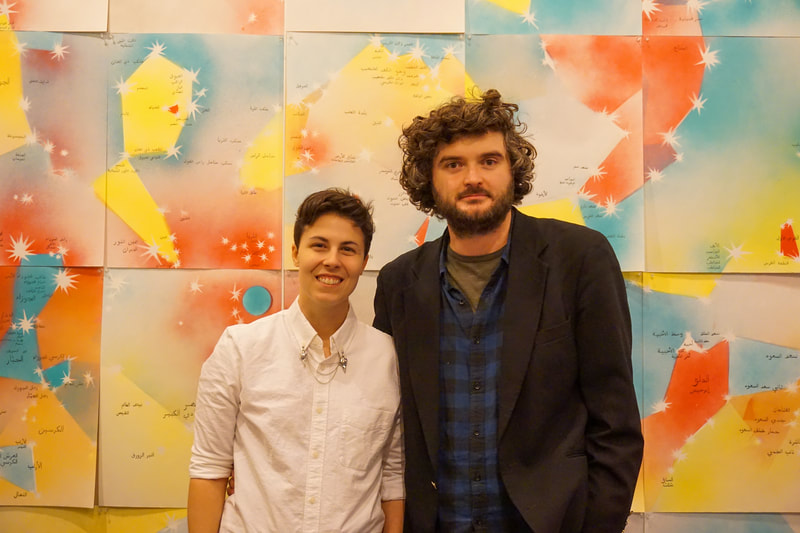
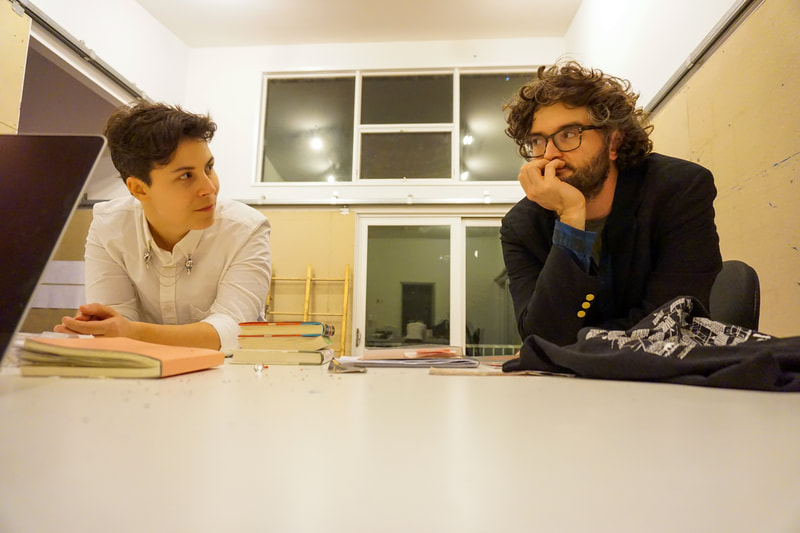
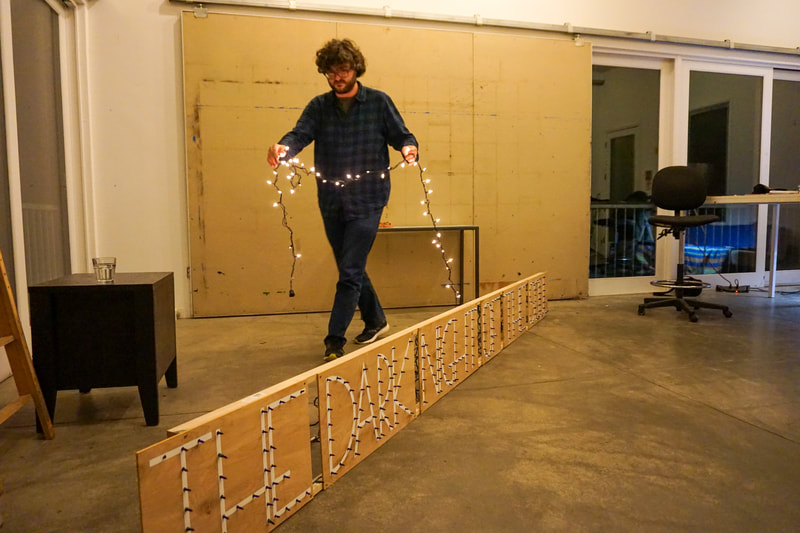
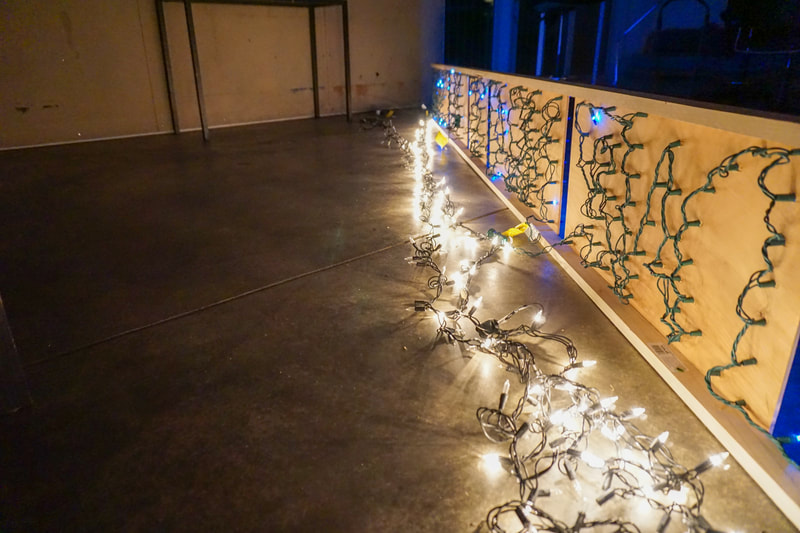
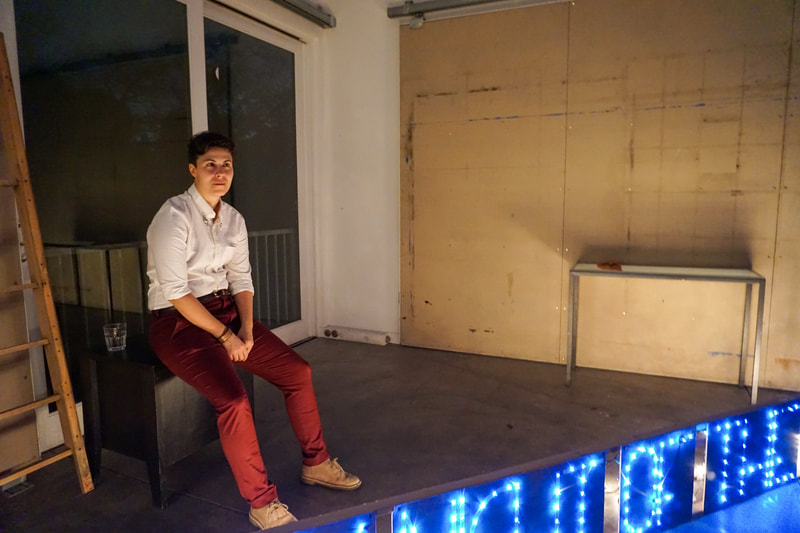

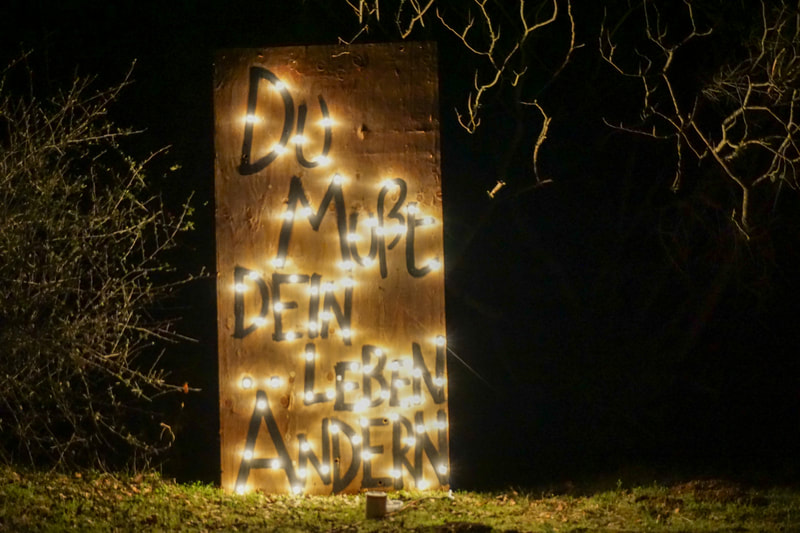
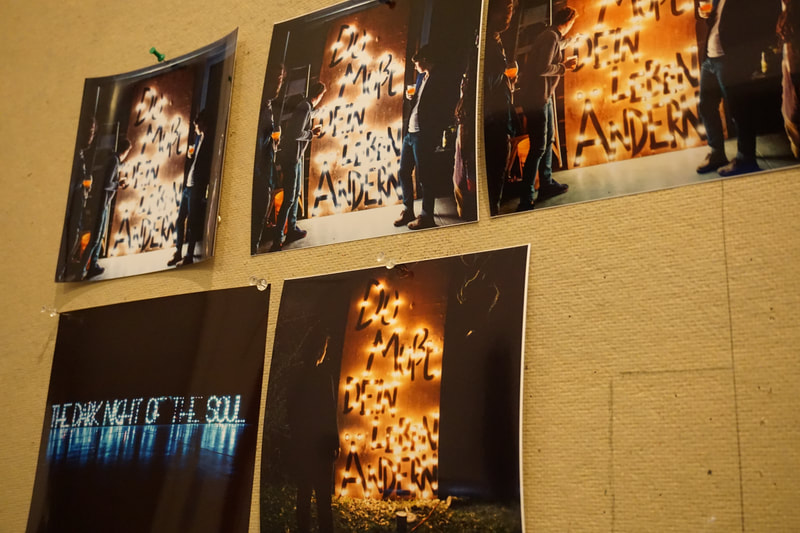

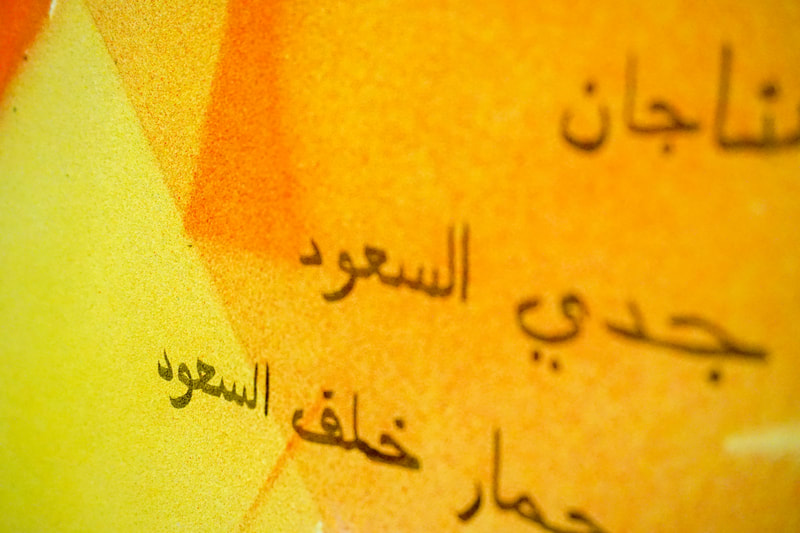
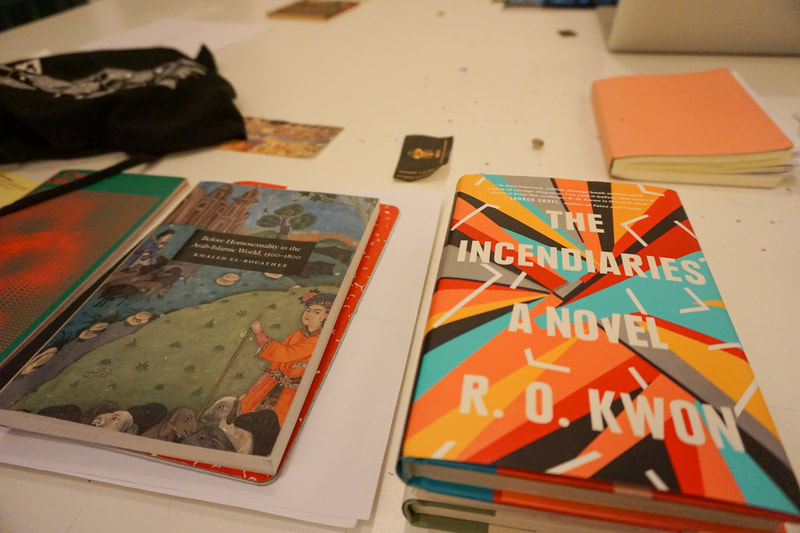
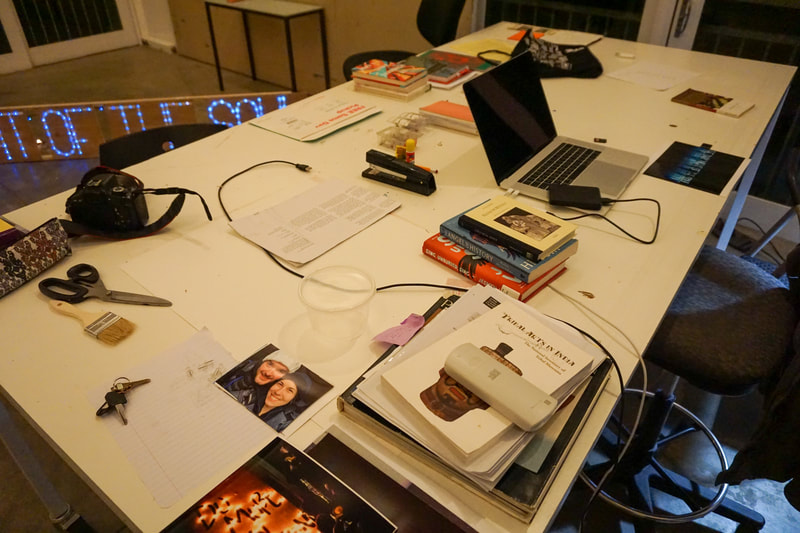
This week in our studio, Zeyn has begun drafting his next book-length project while he revises his essay for the LAP’s forthcoming book. Matteo has just completed two new light signs, “The Dark Night of the Soul” and “Du Muß Dein Leben Ändern” (you must change your life, after a line by Rilke), as well as exploring the visual art he will contribute to the LAP book. Meanwhile, we are gathering research together for a collaborative project, The Atlas of Wonders, a narrative star atlas which aims to examine trans-Mediterranean relationships and cultural exchange through the night sky. The atlas will visualize constellations from the cultures of southern Europe, the Levant, and North Africa, and star names, constellations, and accompanying legends will be given in Arabic, English, and other Mediterranean languages. The title references one of the project’s sources, a work compiled in Egypt between 1020-1050 AD entitled Kitab Ghara’ib al-Funun wa Mulah al-Uyun, roughly translated to The Book of Curiosities of the Sciences and Marvels for the Eyes. This week, we will present a draft of the artwork for the atlas along with the light signs and other works in an open studio.
Read more about Zeyn’s work here and about Matteo’s work here.
Guest Artist U.S.A.
THIS WEEK IN MY STUDIO (December 13, 2019)
Poet Garrett Hongo
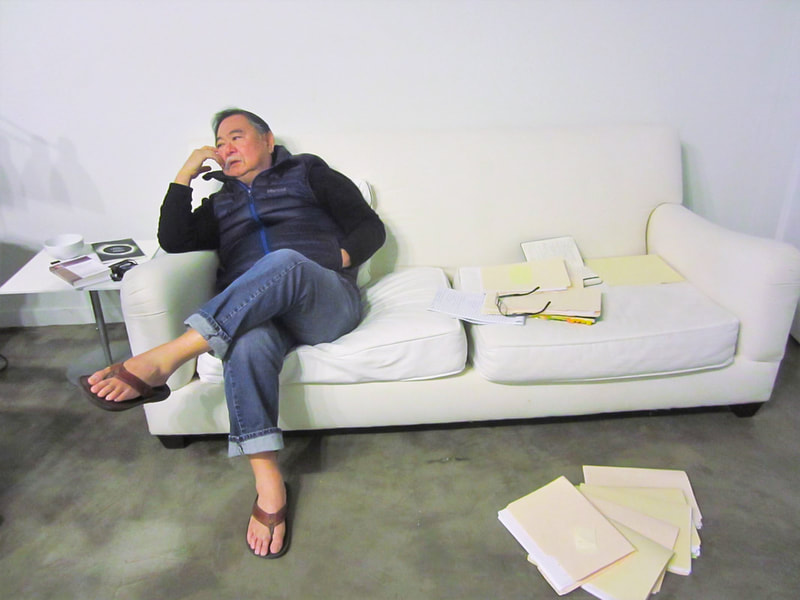
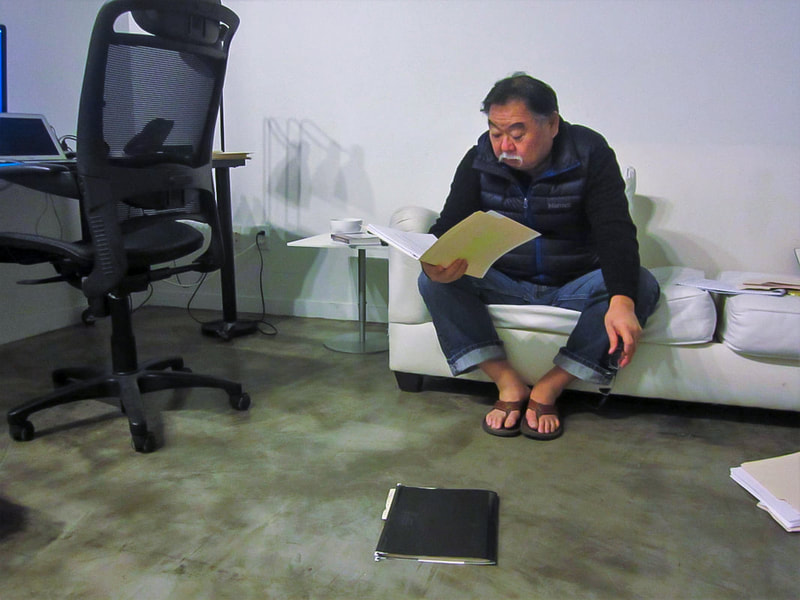

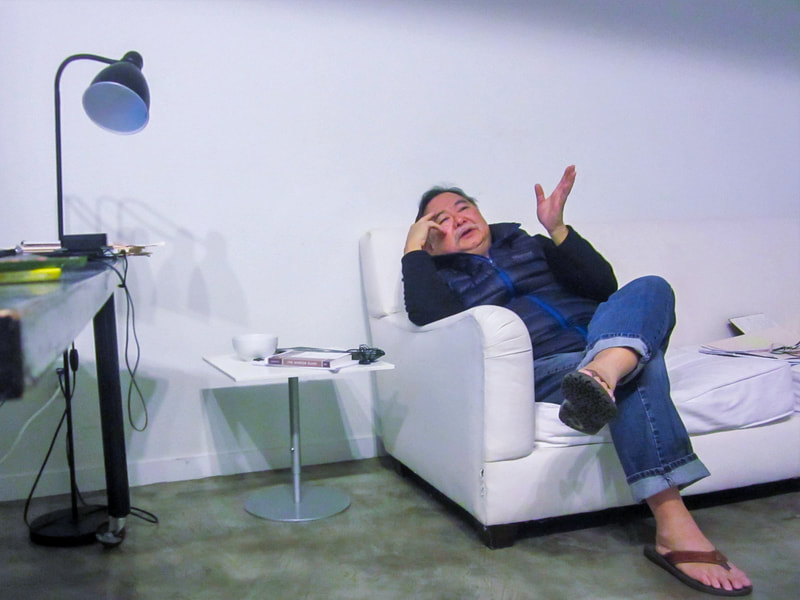
I’m trying to pull together a book about listening to the electronic reproduction of music—the world of high fidelity. I’m trying to get into the feels of it, wrestle into shape what I’ve written on the history of the Gramophone, electronic amplification, radio, the invention of stereo, the do-it-yourself home hi-fi movement, and my quest to assemble a home stereo after having fallen in love with live opera performances. To me, it’s the analysis and articulation of cultural passion itself. Electronically reproduced sound is a special order of re-creation—beauty at a remove from its source, the uncanny sonic double of an acoustic presence originating elsewhere, laced with enhanced meaning, both pure and impure. It is the embodiment of vates as though from a voice beyond the norms of human reckoning and yet decidedly meant for us. The work is called The Perfect Sound: An Autobiography in Stereo.
Read the full post here.
Guest Artist Lebanon/U.S.A.
THIS WEEK IN MY STUDIO (December 9, 2019)
Visual Artist Halim Awde
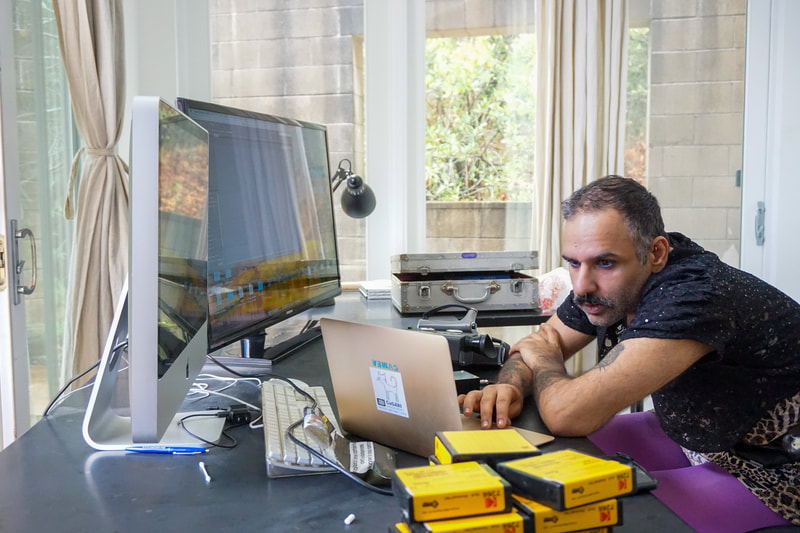
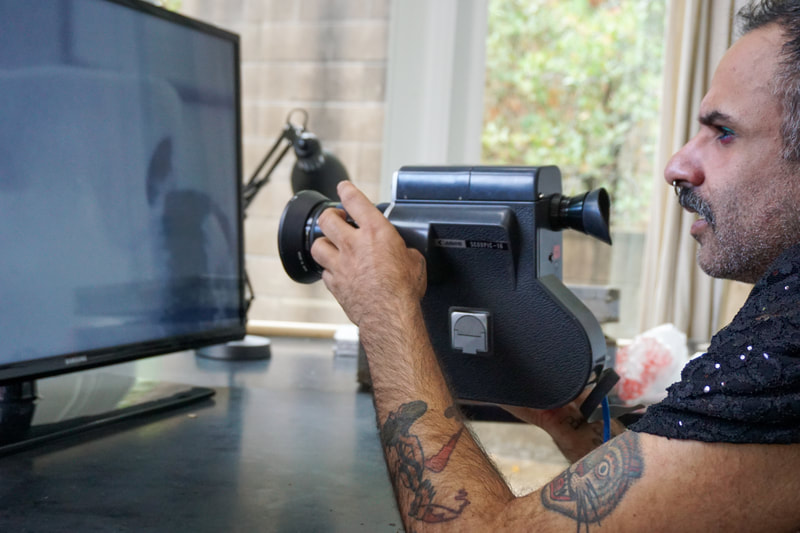


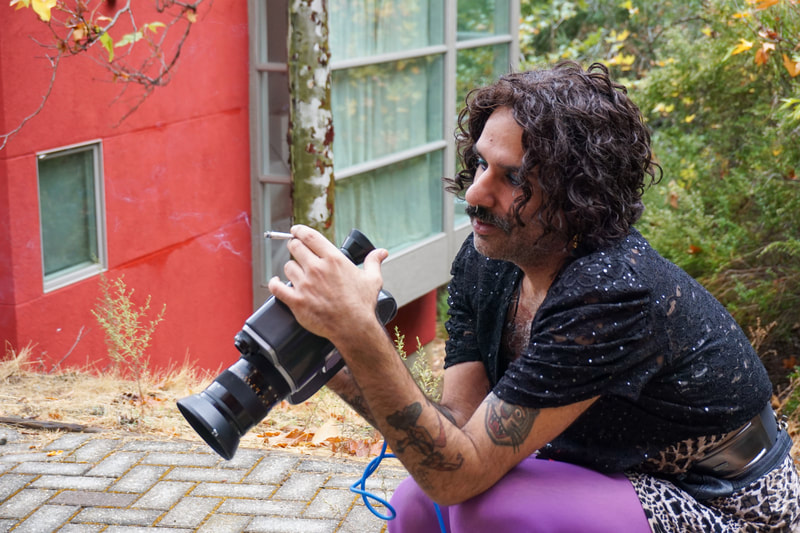
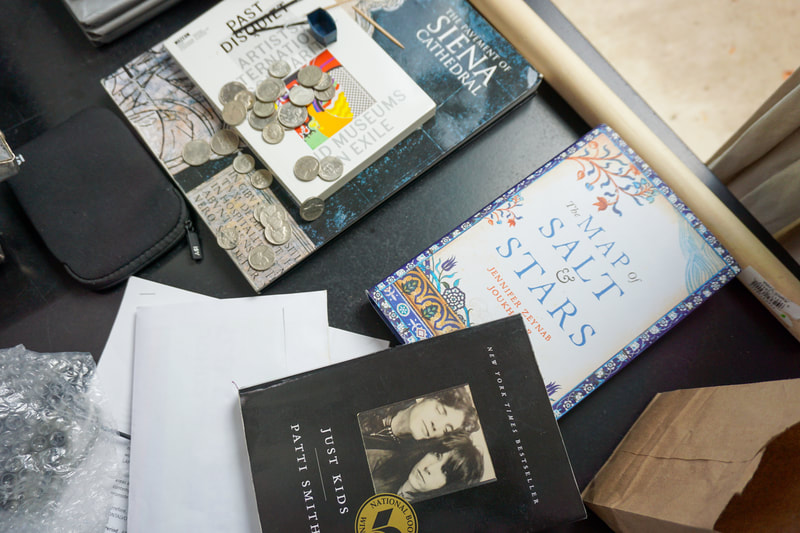
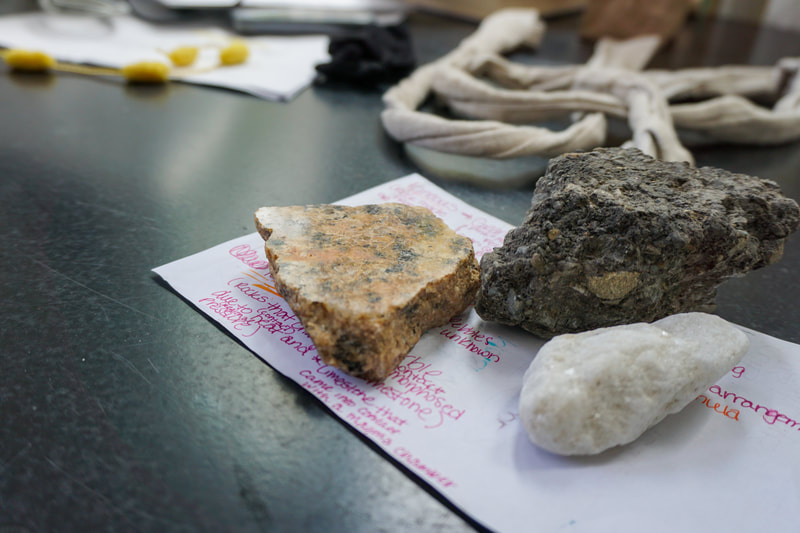
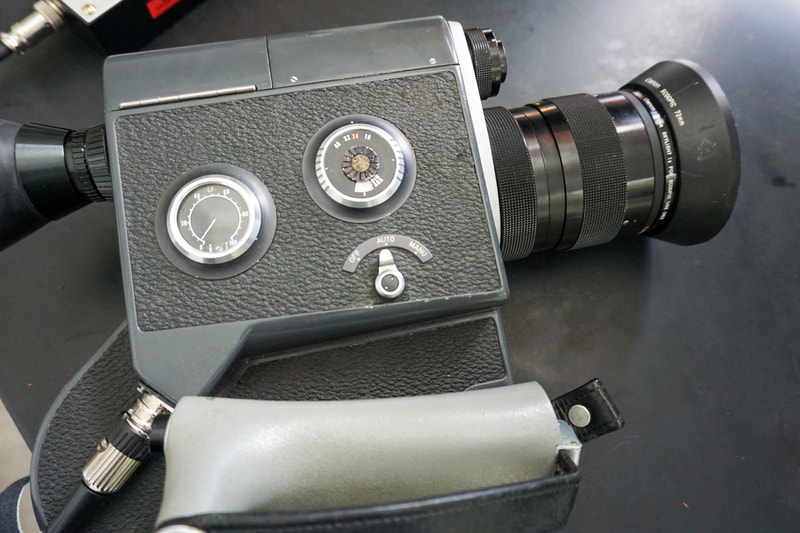
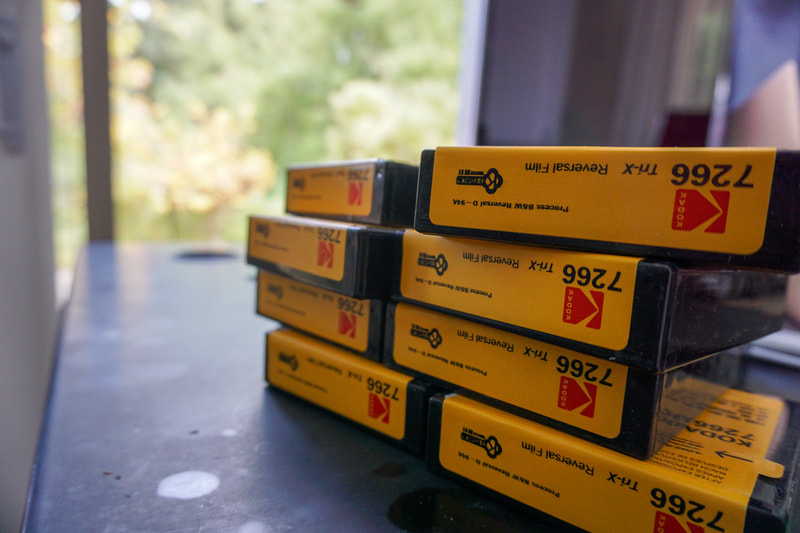
My time at Montalvo has given me the time and space to reflect, process, and collect my thoughts at a critical & transitional time in my personal life, career, and in my country (Lebanon). My time here has taken several phases, and in the last week, I have entered a new moment, shooting footage with 16 mm film, for which I have been collecting source material for years. I have enjoyed working in isolation—but also befriending and engaging with other artists who have become interlocutors and friends.
Lucas Artists Fellow – Literary Arts, Non-Fiction Lebanon
THIS WEEK IN MY STUDIO (December 5, 2019)
Non-Fiction Writer Ibrahim Nehme
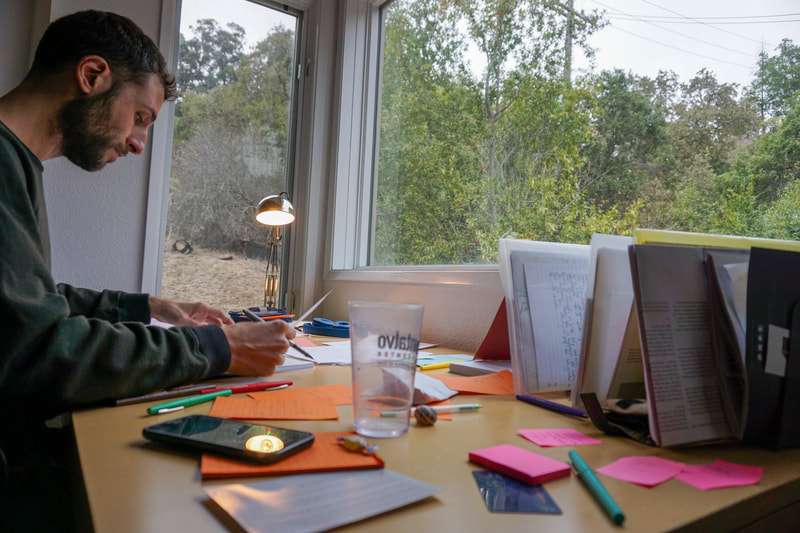
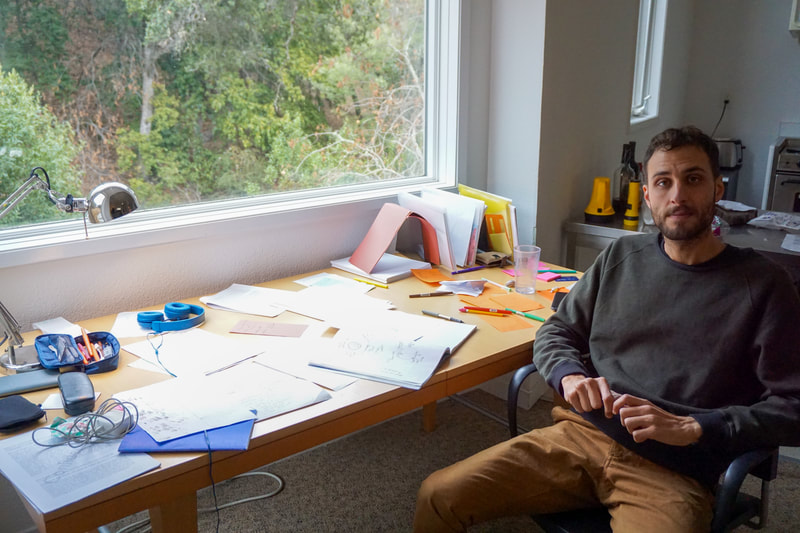

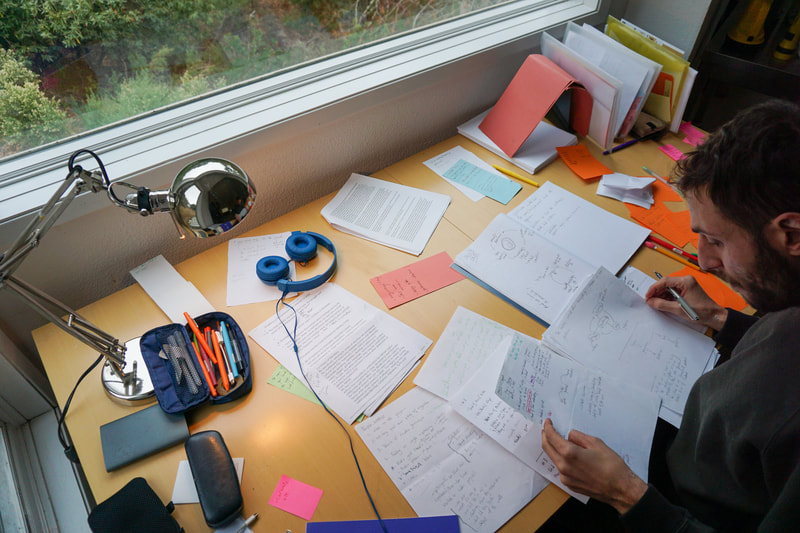
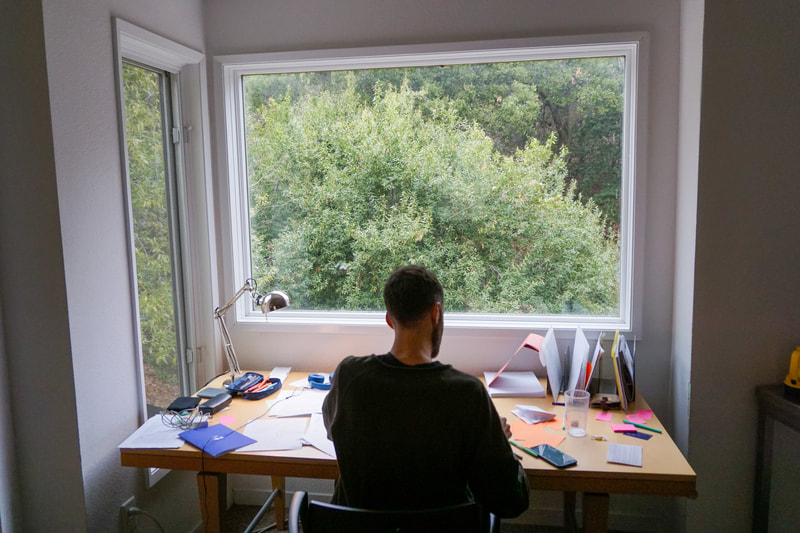

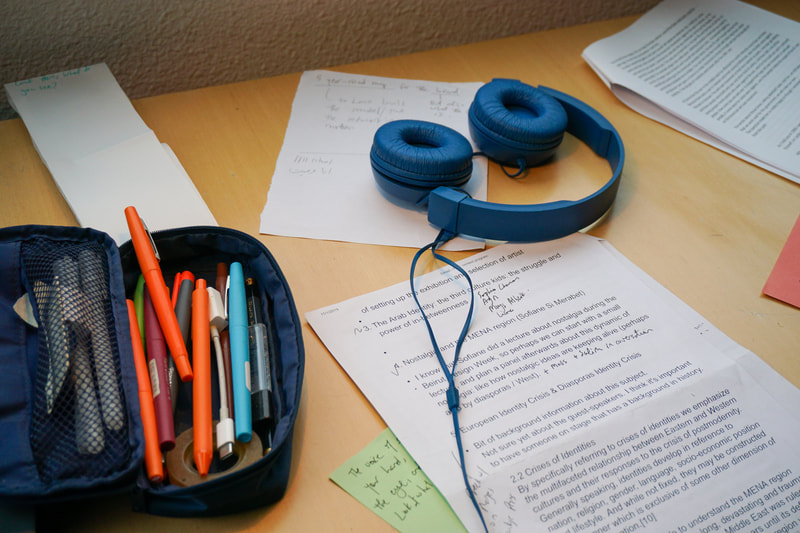
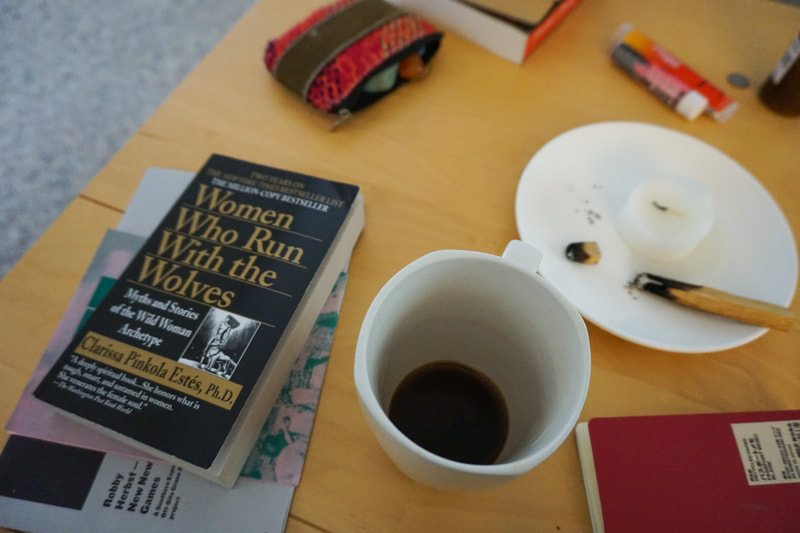
Last week in my studio I had a breakthrough. Breakthroughs come to me when I least expect them. I was sitting in my studio listening to some music and having a beer when it struck me. The perfect idea, I must say. I can’t disclose the details of its perfection right here and now, for many reasons. Yet my breakthrough did not come out of thin air. I had spent the previous weeks at Montalvo writing and rewriting and soul-searching in the woods just outside my studio. This week, which caps the month I’ve spent here, I’m laying low and recovering from last week’s head-spin. Sometimes the days following an intense breakthrough can leave me feeling hung over. I’ve learned that to rest and allow your body to integrate the breakthrough is also part of the work.
Lucas Artists Fellow – Visual Arts U.S.A.
THIS WEEK IN MY STUDIO (November 18, 2019)
Visual Artist Catie Newell
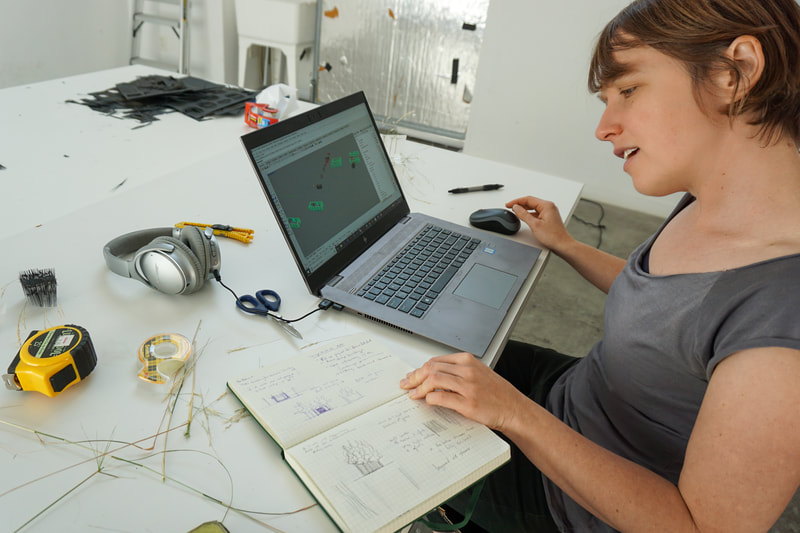
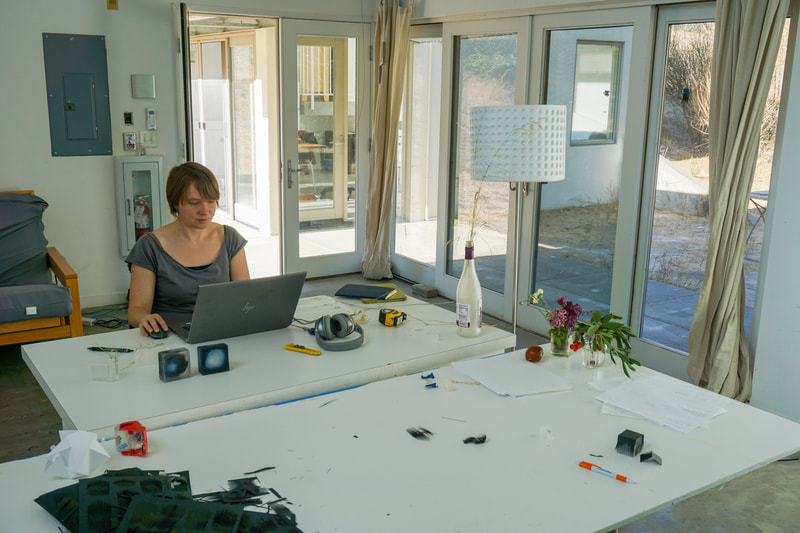
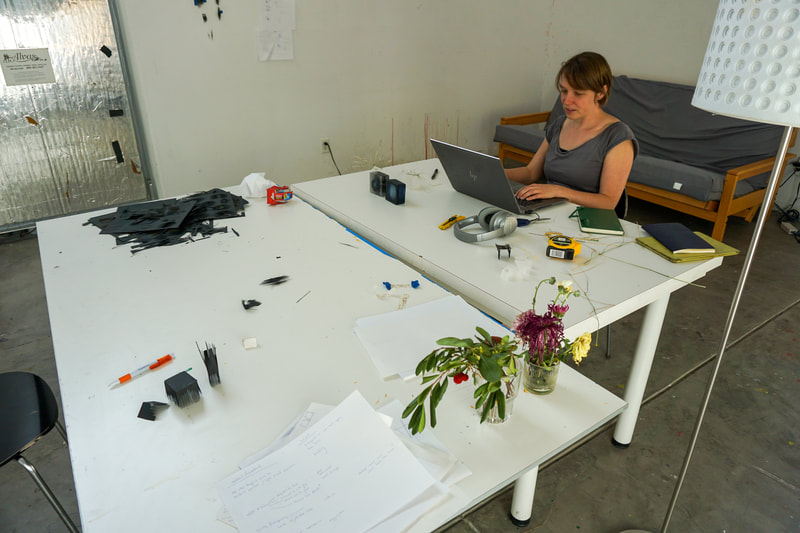
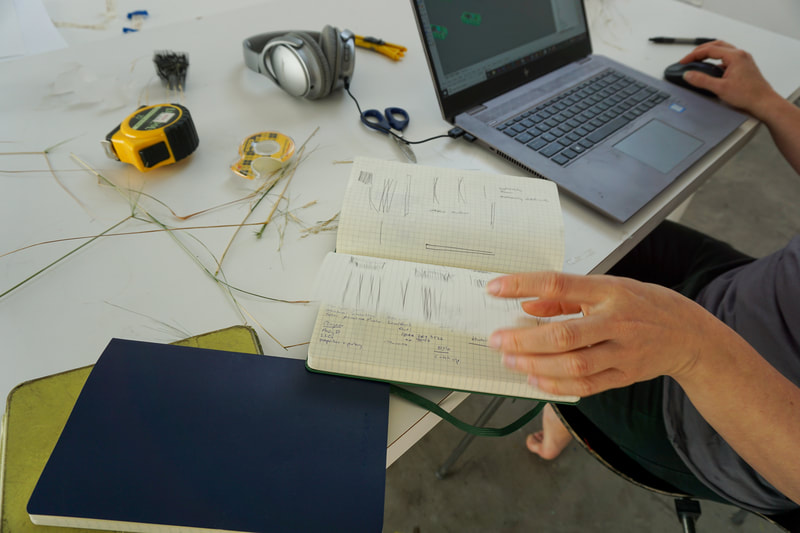

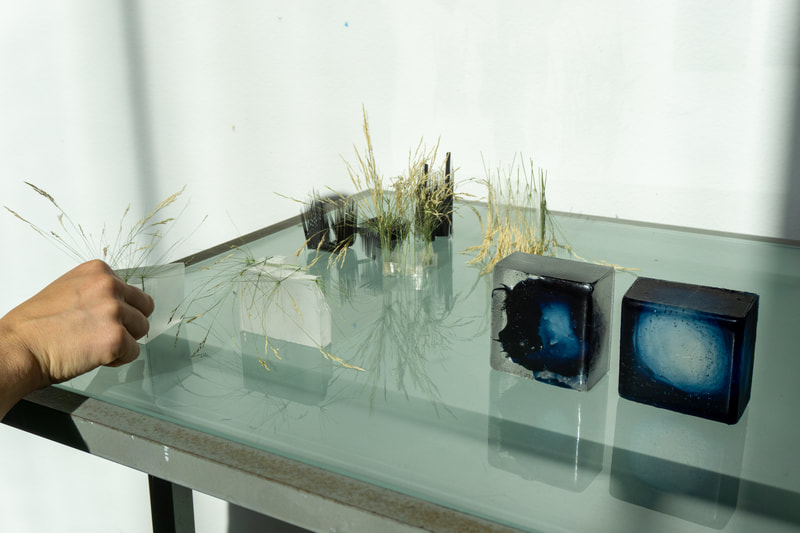

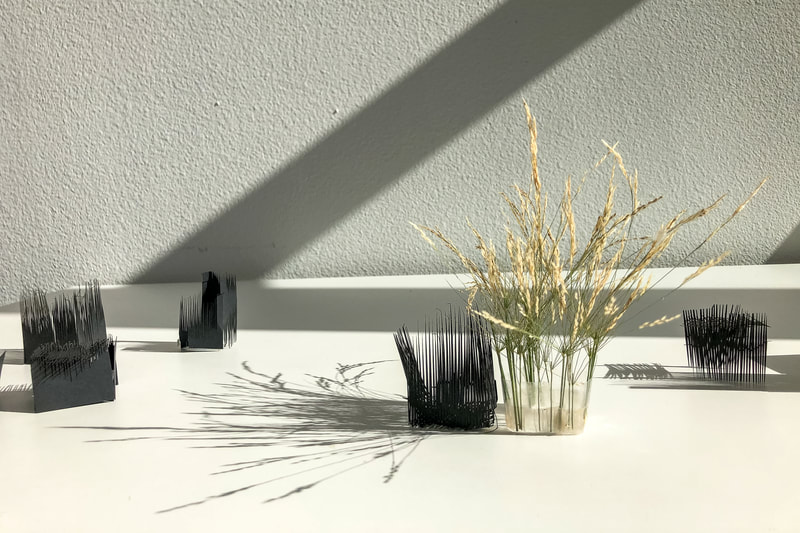
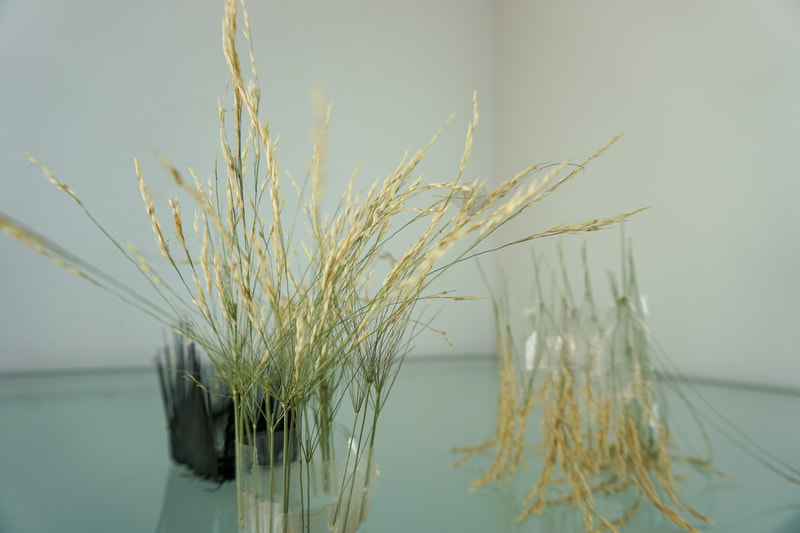


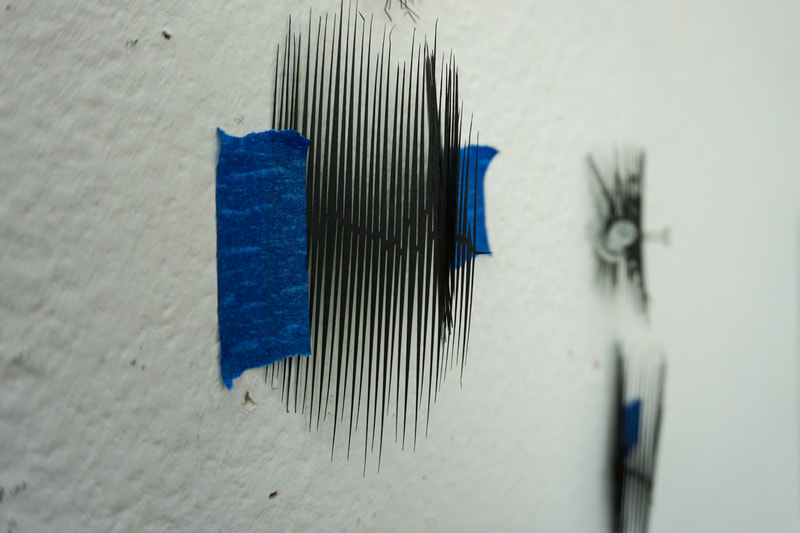
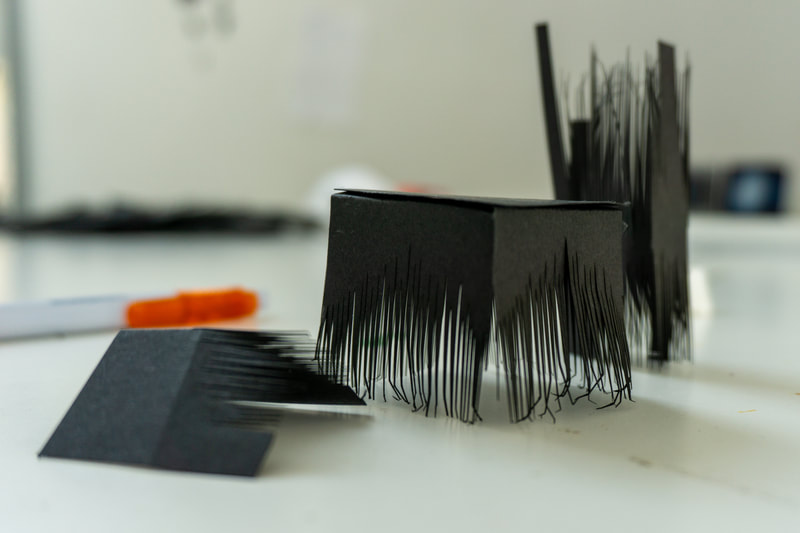
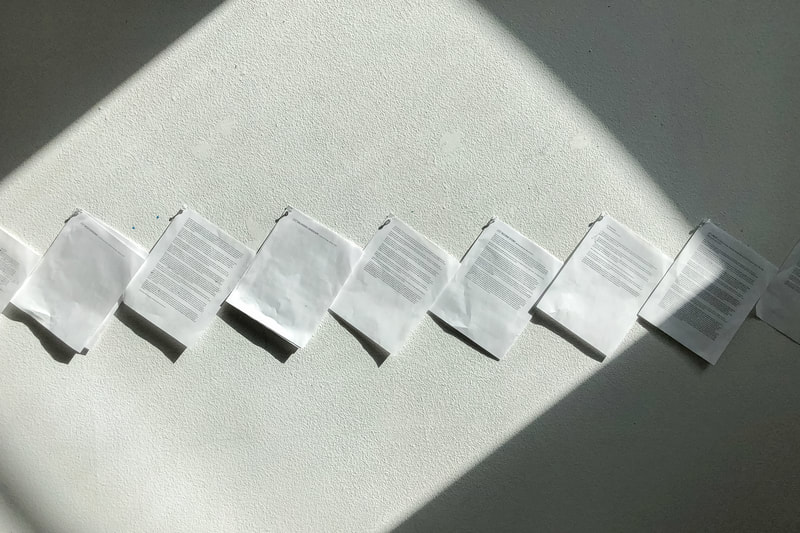
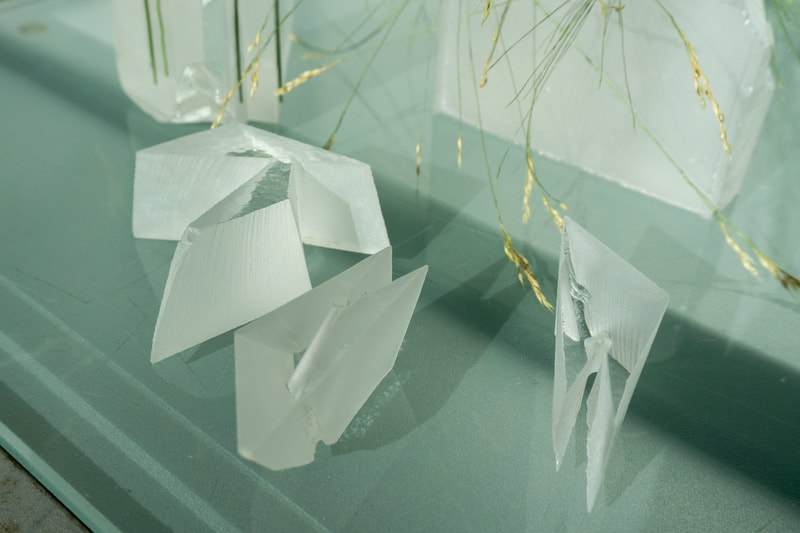
The top of the hill has been the perfect little volume of silence and changing light. My time here has been one of observation and rest, creativity and patience.
I have been using my time here to reflect on my practice and the spaces that it needs. I am designing my own studio, the Hideout, in an unusual site back at home in Detroit. The choices and the processes involved are themselves the creative act, as I turn an over-century-old abandoned roof-less sawdust building into a secret forest of a studio. The walls have been labored over and saved already, altered structurally to be self-supporting and to be cut open for existing trees to flourish and enter. The next act is the plant growth returning into the building, with trees and vines reintroduced to a lively green-autumn-green. As time and ideas permit, a little glass block studio will nestle into this hidden forest.
My time here has danced between creative rushes to challenge the big idea, and obsessive details to think through the process of literally making on the site. I value the time to think and hold and believe in the process. Read more about Catie’s work here.
Guest Artist U.S.A.
THIS WEEK IN MY STUDIO (November 15, 2019)
Vocalist and Performer Jennifer Johns
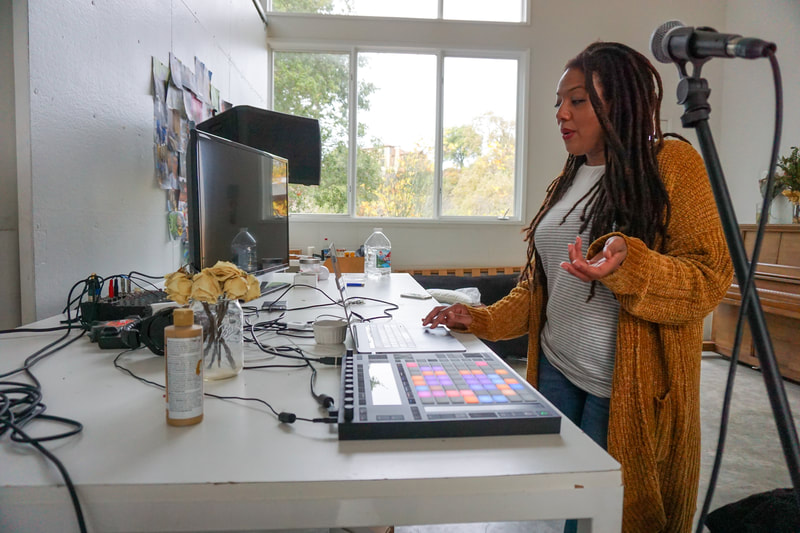
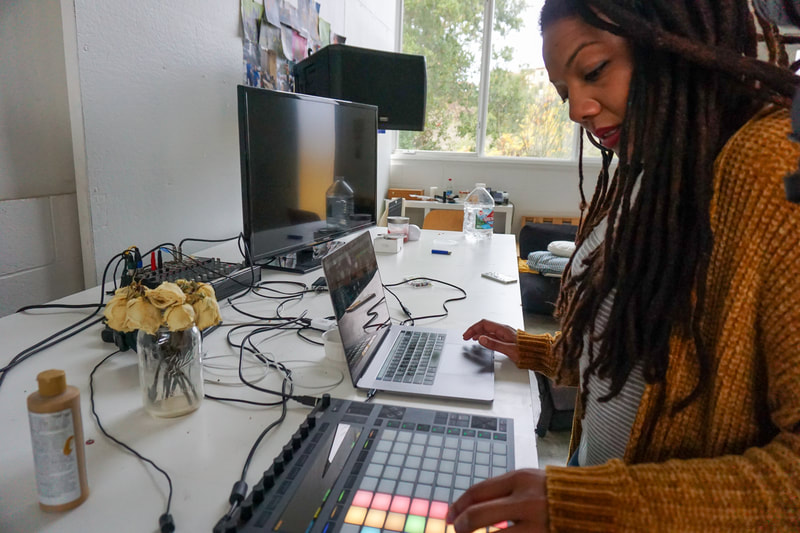
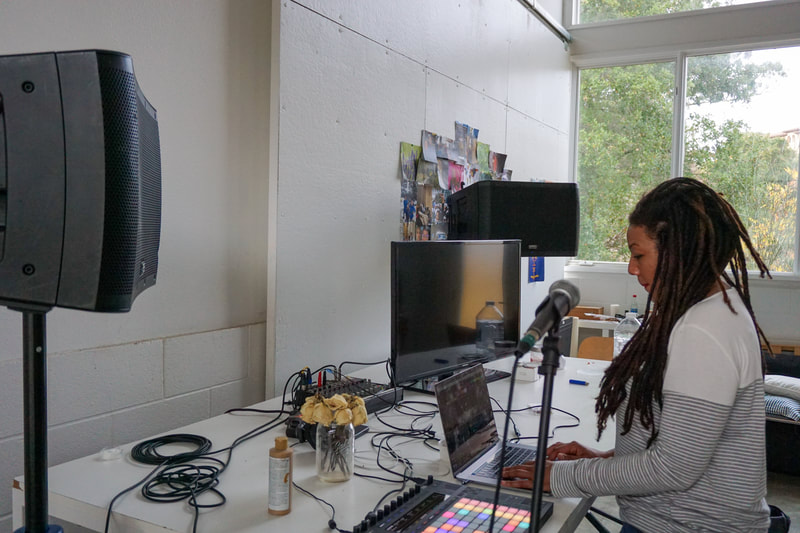
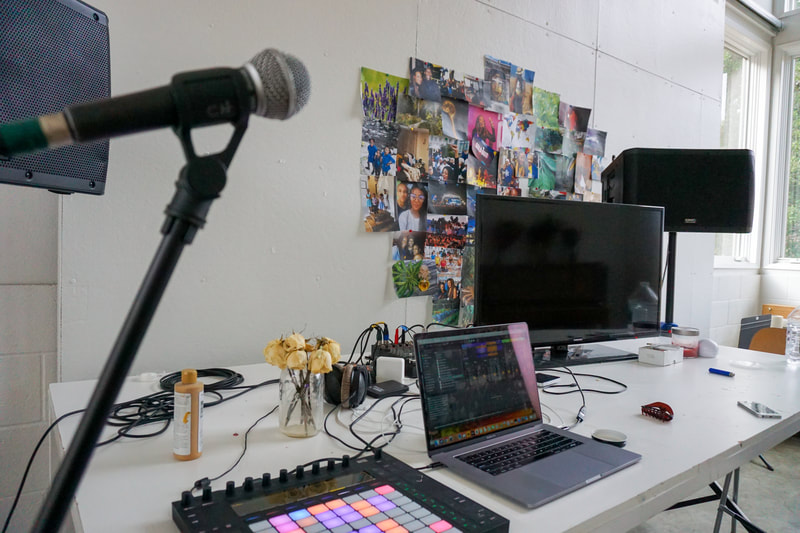

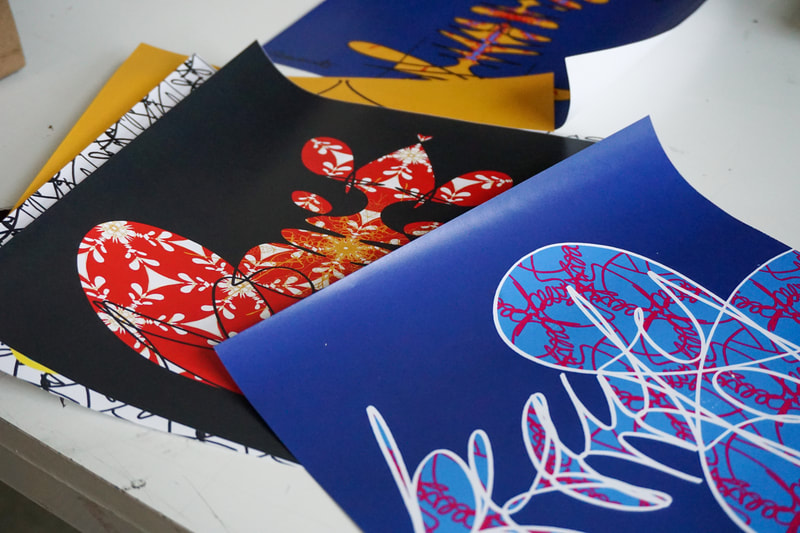
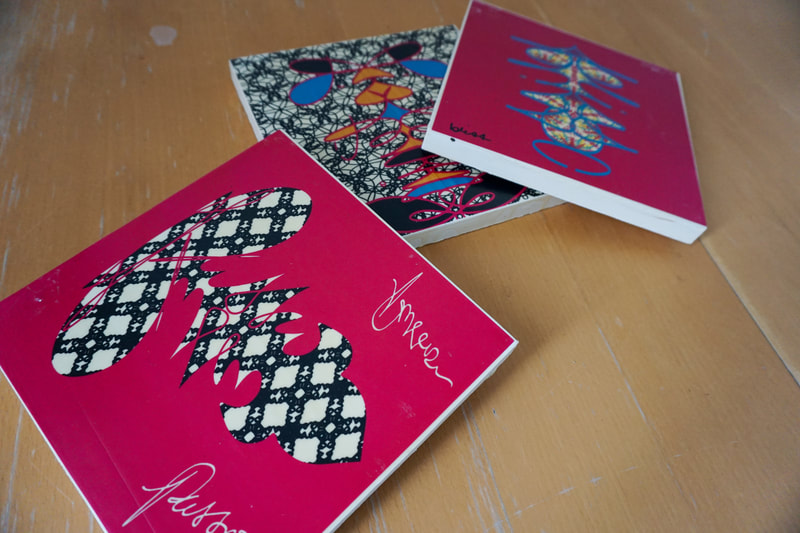
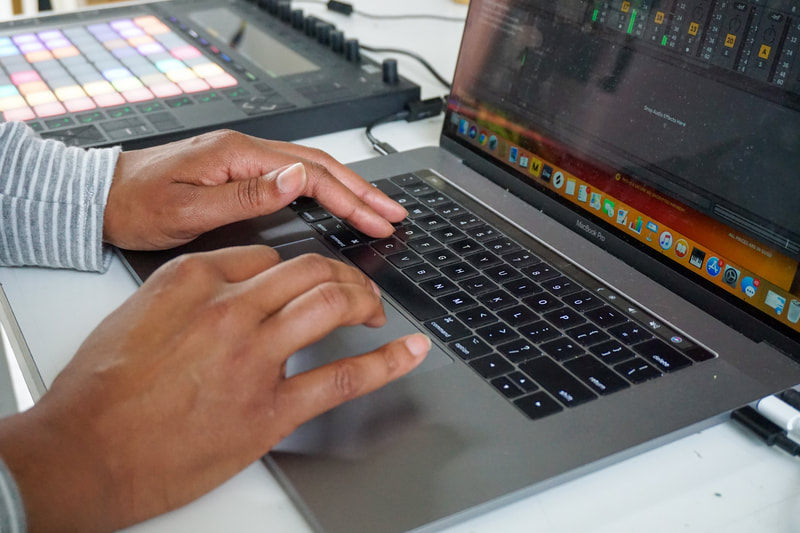
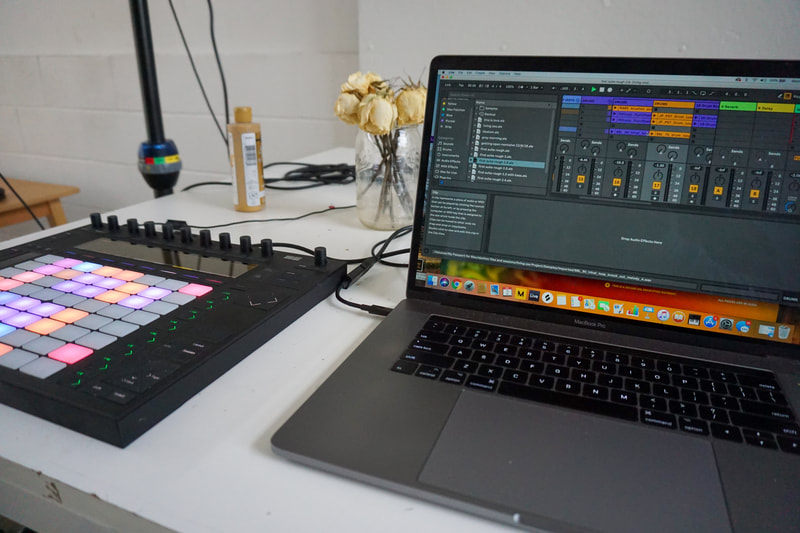
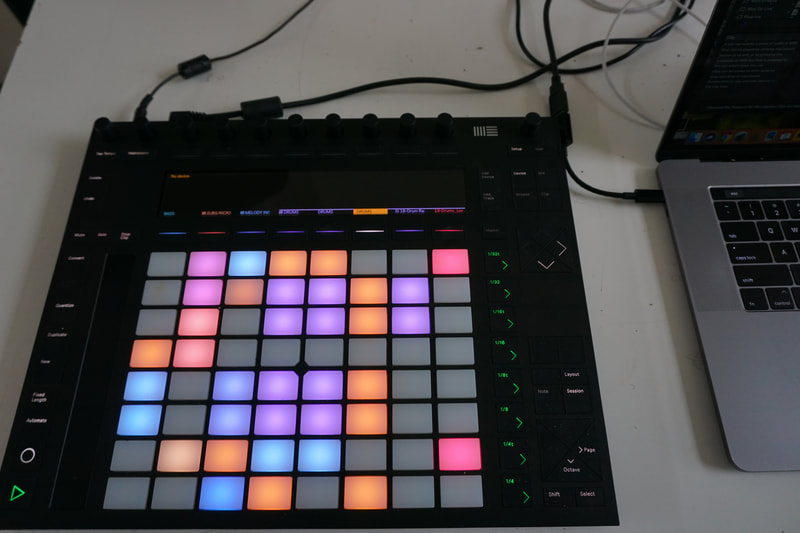

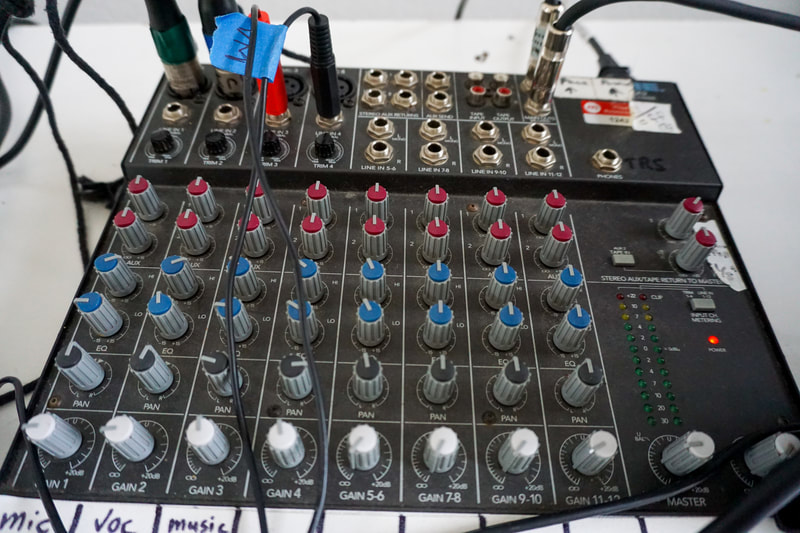
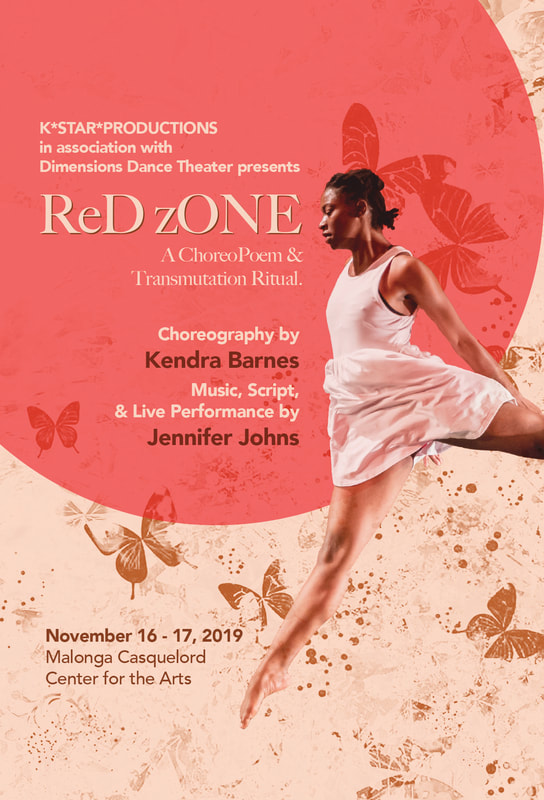
For the last month, I have been focused on a project called rEDzONE: a choreopoem and transmutation ritual. It is a healing movement through words, movement and music from pain to joy. The intention is to address the need for release amongst women who have been sexually assaulted. This project takes a look at both the science of the brain and the effects of trauma as well as the phases/cycles of healing. I am blessed to work on this piece in collaboration with an incredible choreographer and producer, Kendra Kimbroughs Barnes. Over the last few-several month, I have written all of the text, lyric and melody. Kendra has created all the movements. We have three awesome dancers, and an incredible crew of techies all coming together to make this multimedia ritual come to life and be of service. This alchemic journey is set to a pulse driven soundtrack played by a group of incomparable musicians including Kev Choice, Ajayi Jackson, Dame Drummer and DJ Aebledee. Read more about Jennifer’s work here.
Guest Artist U.S.A.
THIS WEEK IN MY STUDIO (November 14, 2019)
Multi-Disciplinary Performing Artist Margaret Kemp

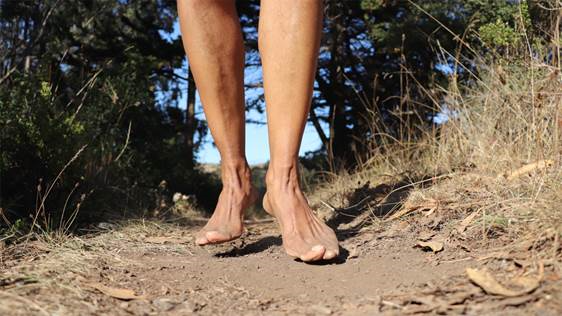
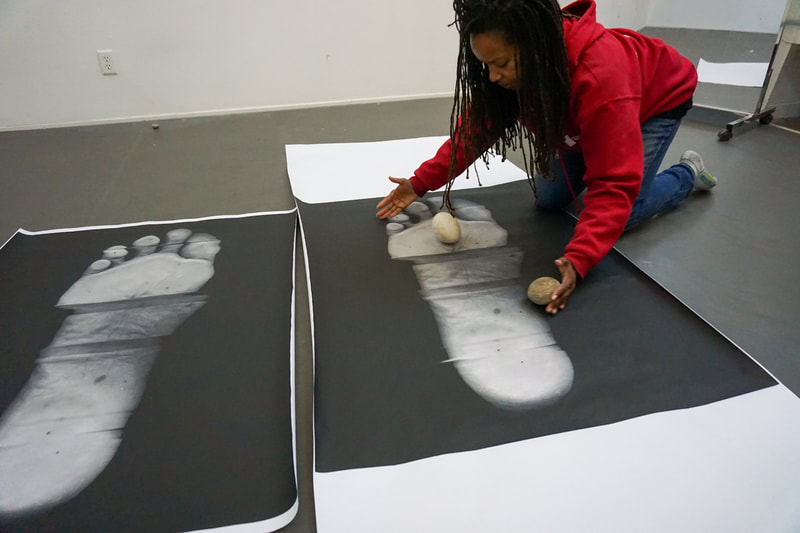
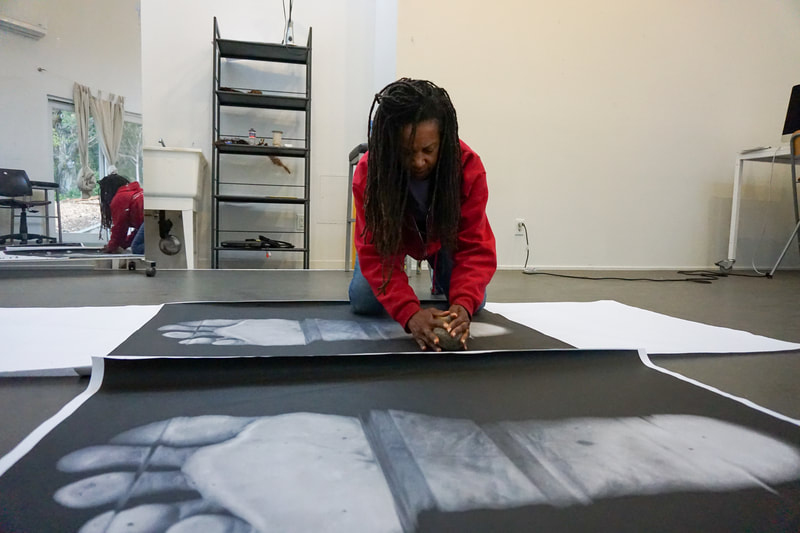
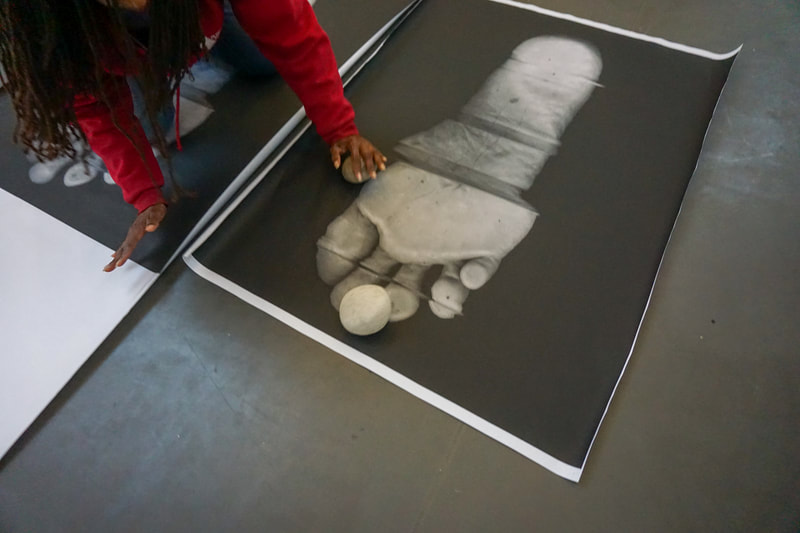
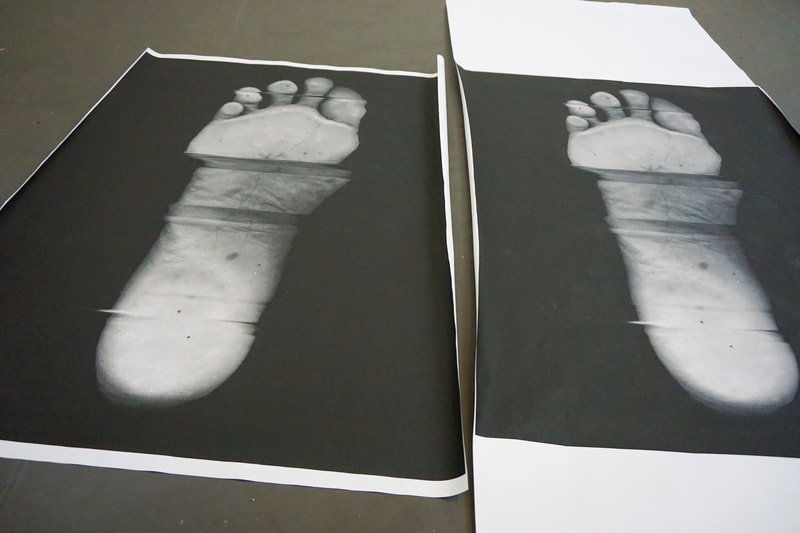

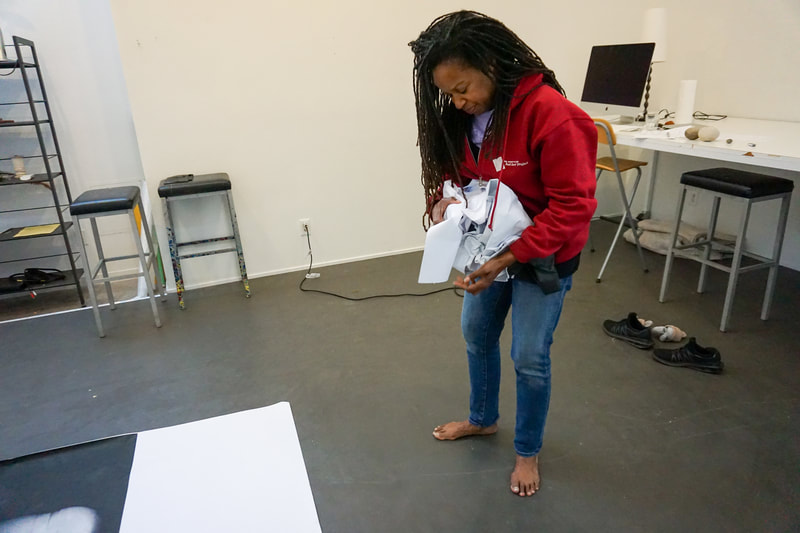

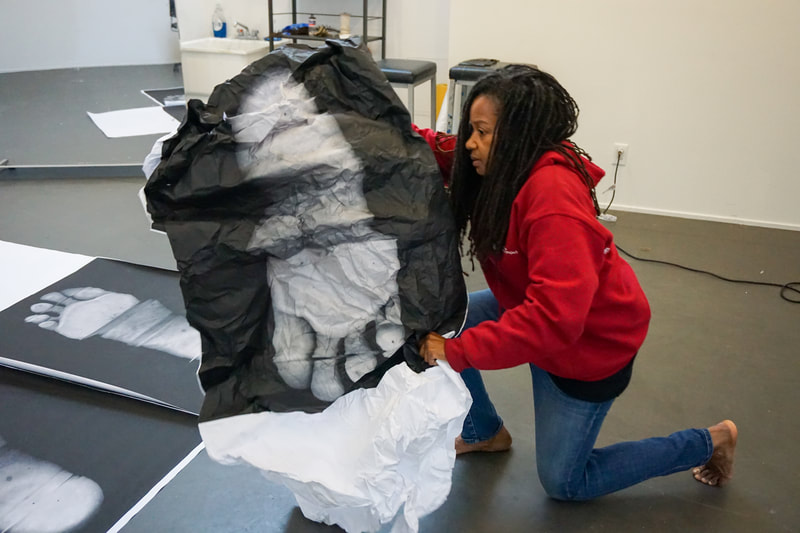
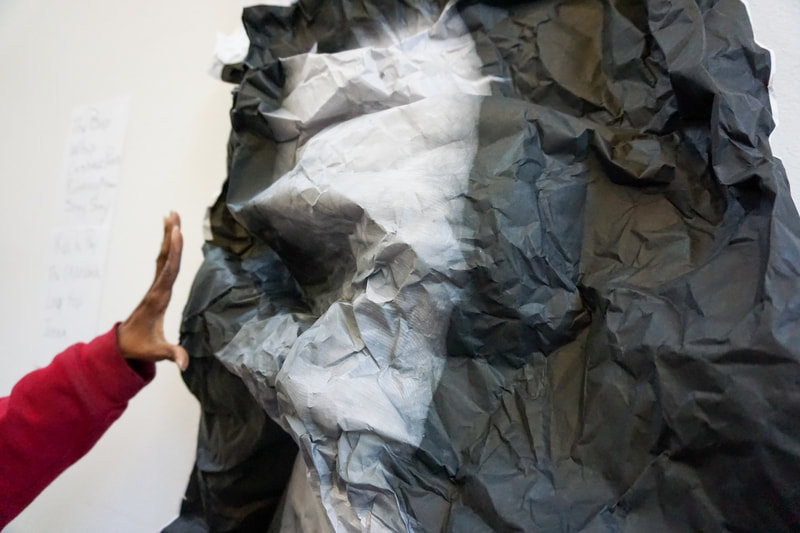

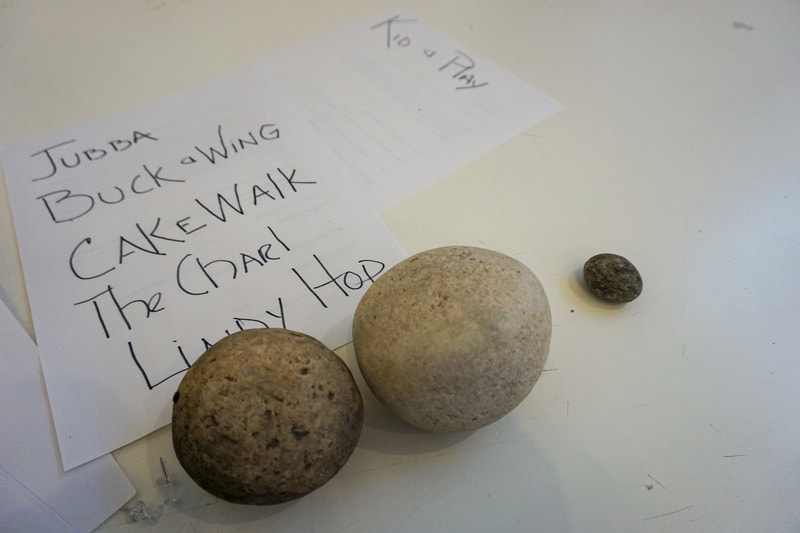
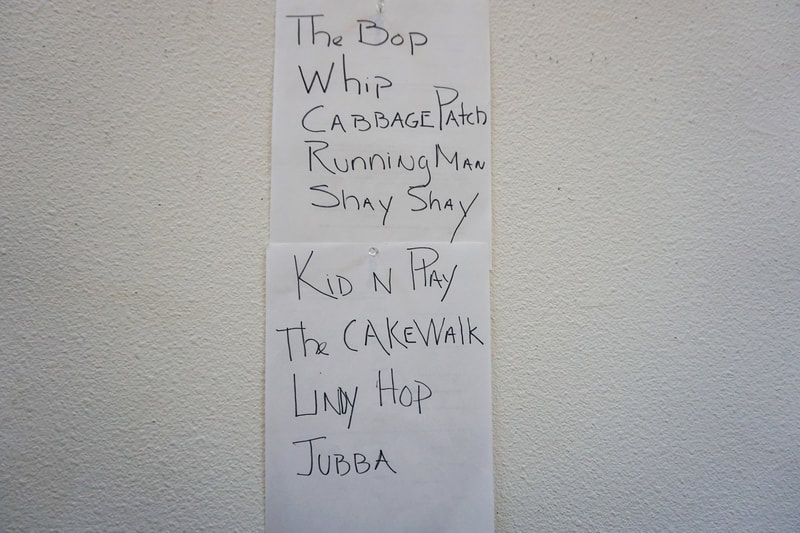
This week in my studio, I completed editing my current project, CITE. Composed of 600 images that capture movement and spirit and an experimental film that evokes the artist’s own uneasy relationship to the natural world, CITE examines the relationship of the Black Body to place and time and explores the complicated concepts of freedom, joy, and the claiming of one’s own space.
CITE will be on exhibit at the Elaine L. Jacobs Gallery from October 25-Dec 13 at Wayne State University in Detroit
Guest Artist U.S.A.
THIS WEEK IN MY STUDIO (November 10, 2019)
Visual Artist Paolo Salvagione
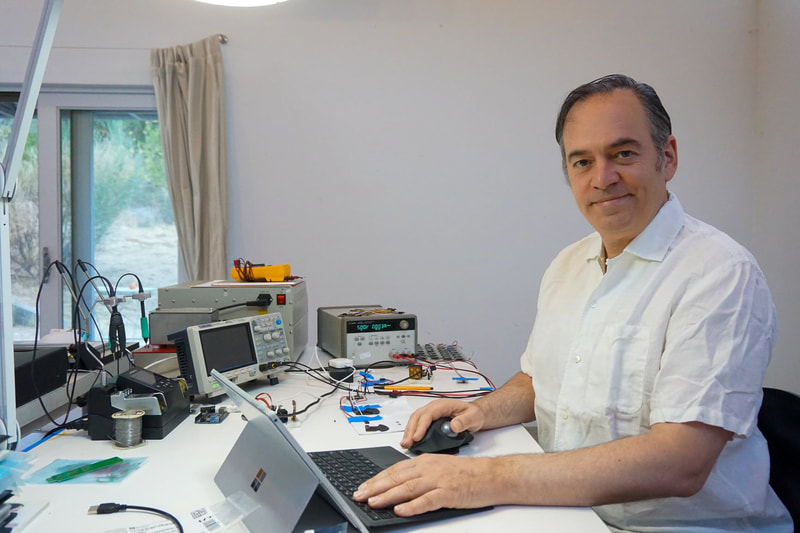
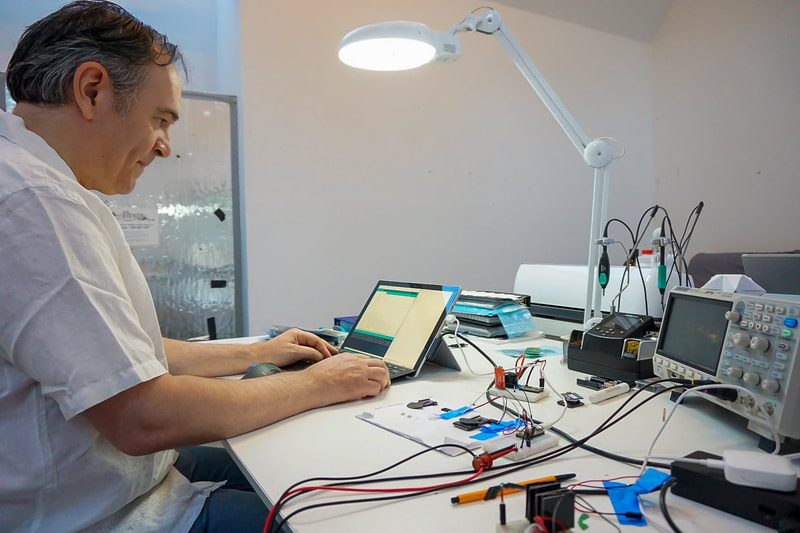
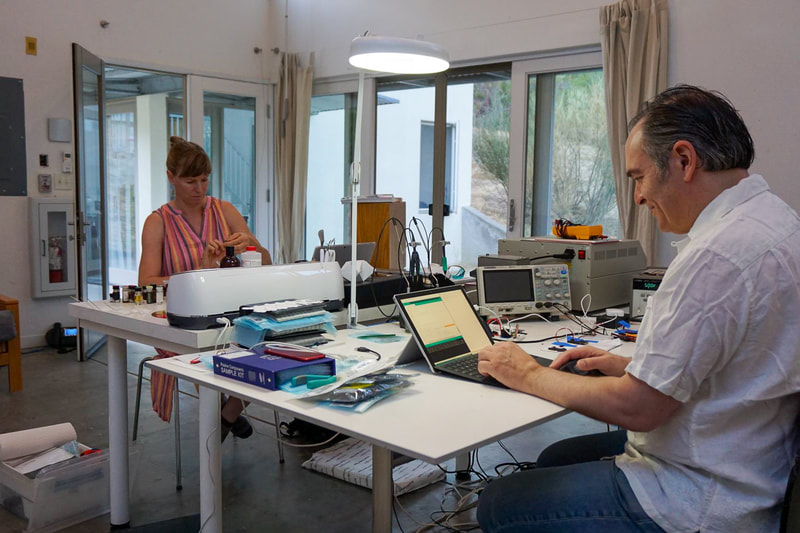
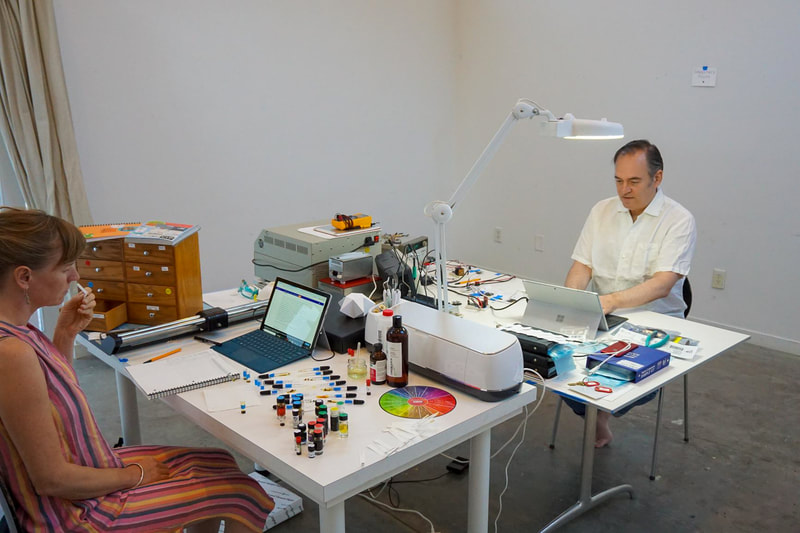
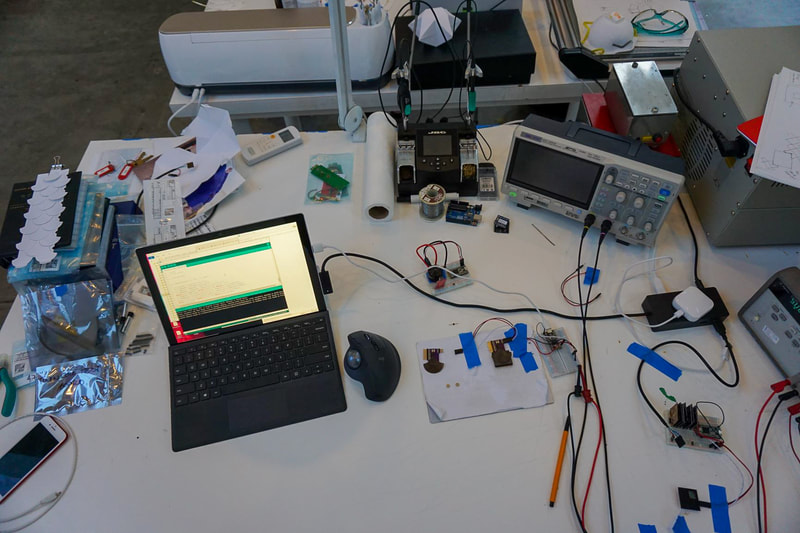
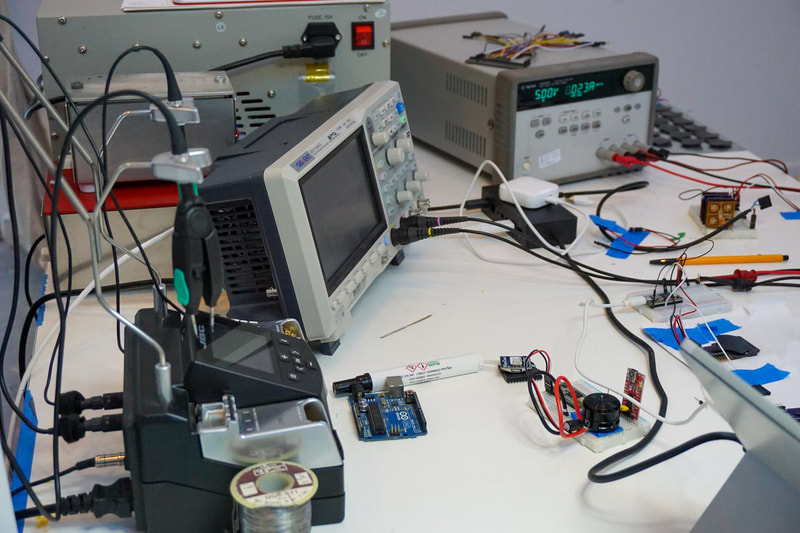
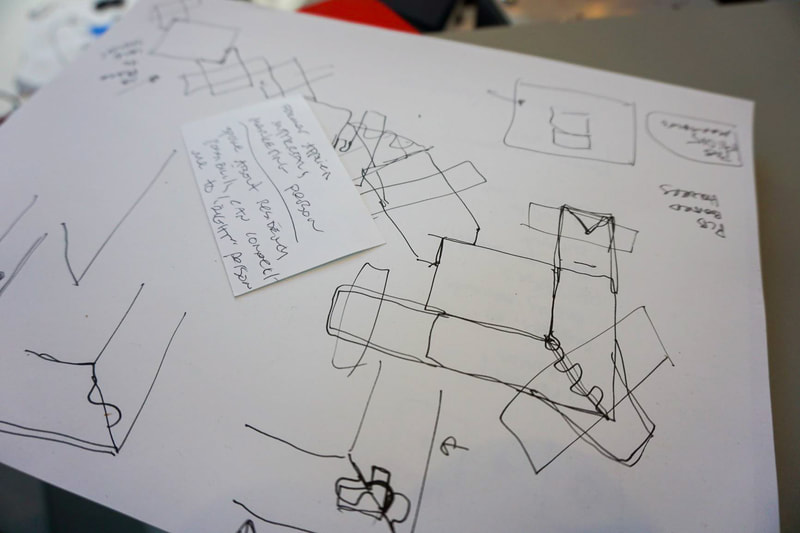
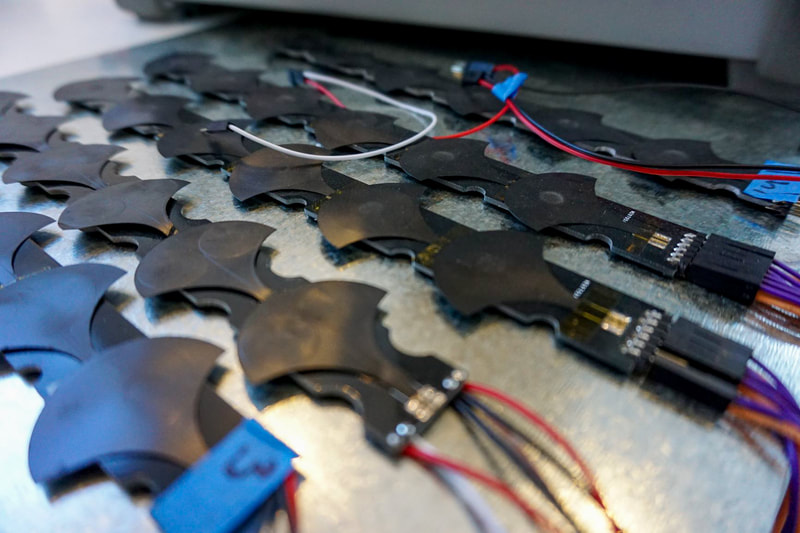
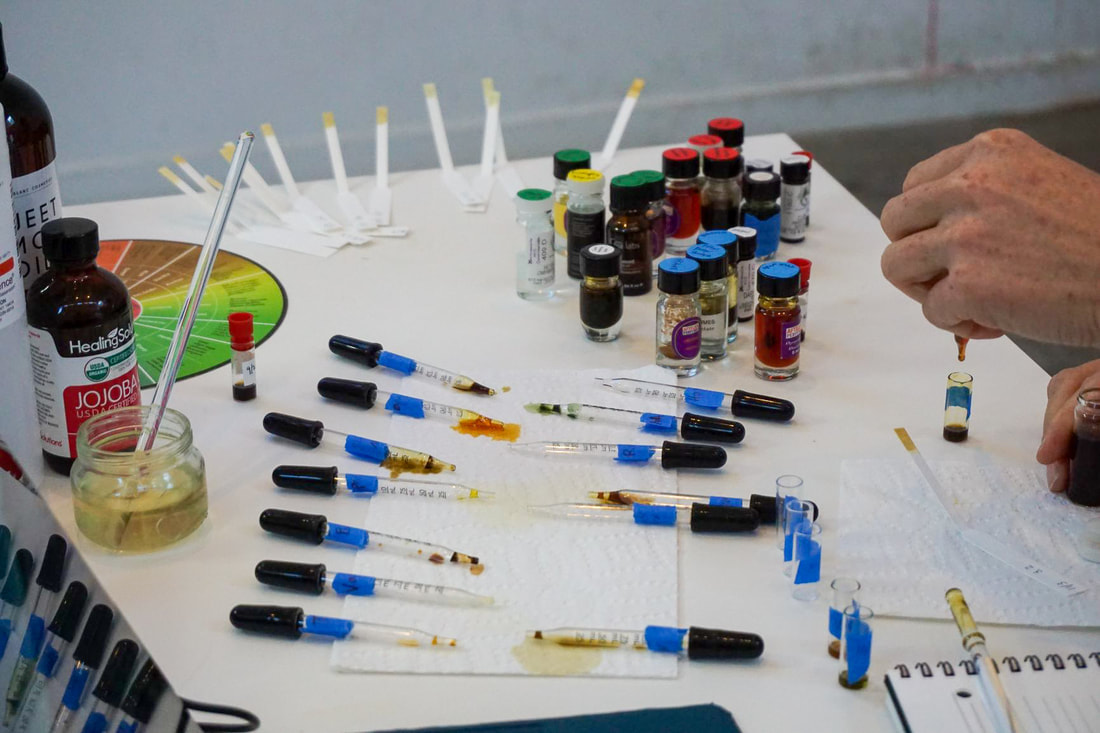
Just outside my studio are a buckeye and a persimmon. The buckeye has lost its leaves. The large, low hanging fruits will never be picked by Ohlone and roasted until safe to eat. The persimmon tree, on the other hand, is heavy with ripe fruit, just out of my reach. It is a cultivar first developed by the Chinese and cherished by the Japanese. Both trees remind me of the complicated relationship this residency has with its origin story, and how this might someday become a site of healing.
Ohlone, Chinese, Japanese – my mind wanders as I think about languages, notation, choreography. The evening dinners have been full of conversations in domains I know little about and yet still there is a place for me at the table. I’m envious of the composer’s score, its terse notation ready to be converted into sounds. I learn what a choreopoem is. While we eat, we trade stories about our lives. We learn a little more about each other in a place where it is safe to talk about difficult topics.
I’ve spent the last few weeks writing in a language that isn’t spoken and has no pronouns, a terse language with an unforgiving syntax. I’m working on a kinetic art piece; my practice loosely fits in the category of visual arts. I’m out of my comfort zone, and at times the technical threatens to extinguish the poetic. When those moments loom, the trails just outside my studio door are a sure remedy.
The language I’ve been using these past few weeks is C++, a computer language that is in every device we own. The pronouns are missing, not because of some thoughtful reasoning about gender, the id, or the ego – they are missing because the language is written for an entity without a body, without an I. These words, this thought, come into focus as I write this.
As my last day draws closer, I take an inventory of my time here. I’ve built a small collection of movements for the kinetic piece I’m working on. The dinners have nourished not only my body but my mind. New friendships formed, new adventures planned…
Read more about Paolo’s work here.
Lucas Artists Fellow – Music & Composition
THIS WEEK IN MY STUDIO (November 4, 2019)
Composer & Musician Taylor Ho Bynum

This week I’m finishing up the first draft of what I’m calling a “secular oratorio”, a piece for classical orchestra, jazz big band, vocal soloists and choir. It’s called The Temp and Mr. Prosper, with a great libretto by the poet Matthea Harvey, who used erasure processes to deconstruct Shakespeare’s Tempest into a contemporary narrative. Just a short trip to Montalvo this time, but hugely appreciated—the chance to sneak away from the day-to-day and wholly focus on composing is invaluable – especially when trying to deal with a huge piece like this, which in terms of sheer numbers is the largest composition I’ve written thus far.
Read more about Taylor’s work here.
Lucas Artists Fellow – Interdisciplinary
THIS WEEK IN MY STUDIO (October 31, 2019)
Artist, Chef, & Educator Sita Bhaumik
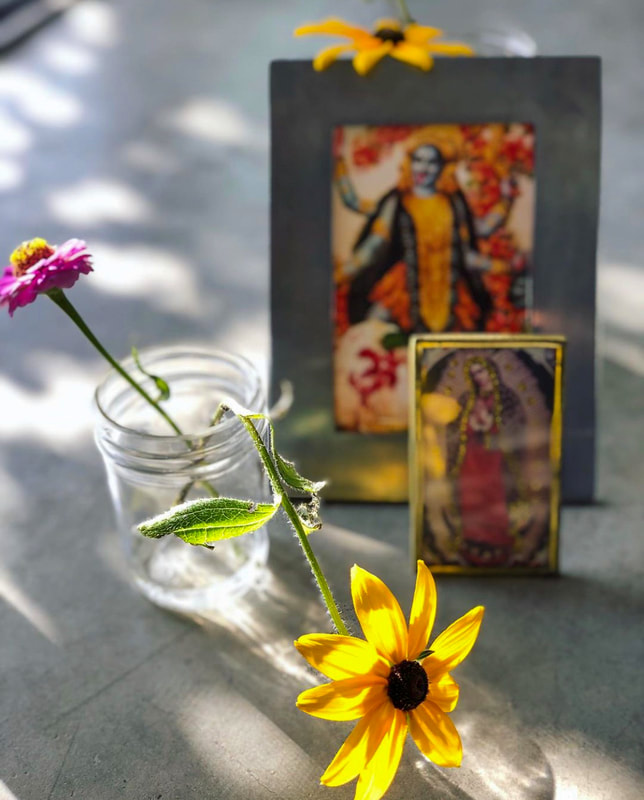
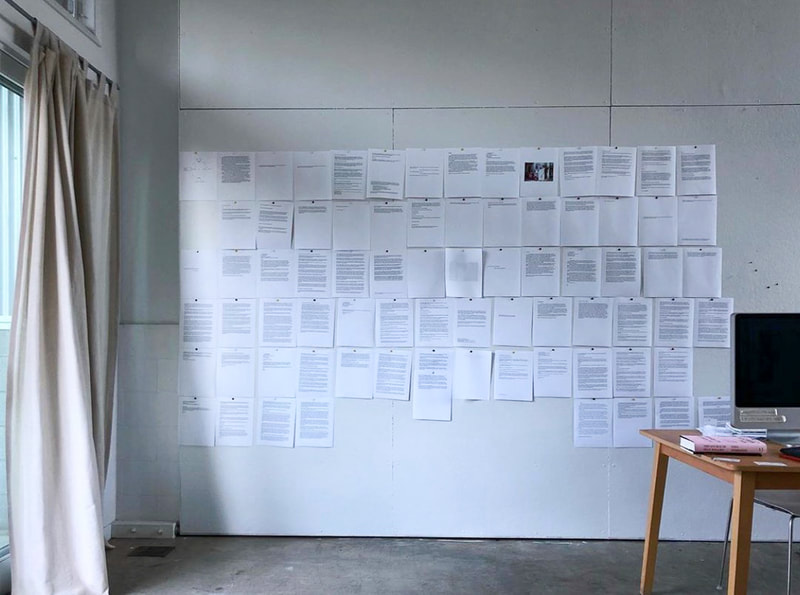
I’m working on my first book project with Kaya Press about art and creativity in conversation with the people who have shaped it. Thanks to the awesome wall-on-wheels in my studio, for the first time ever, I was able to pin up all of the pages of my manuscript. What a difference that made. I can finally see how the pages speak to each other. I had nearly forgotten that book pages come in pairs, and what lives on one page informs the other. This book is feeling possible.
Read more about Sita’s work here
Lucas Artists Fellow – Literary Arts, Playwriting
THIS WEEK IN MY STUDIO (September 16, 2019)
Playwright Alva Rogers
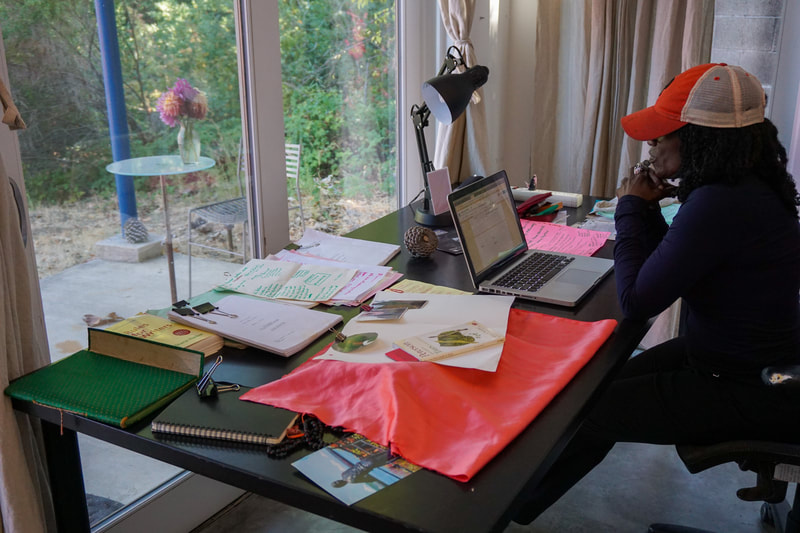
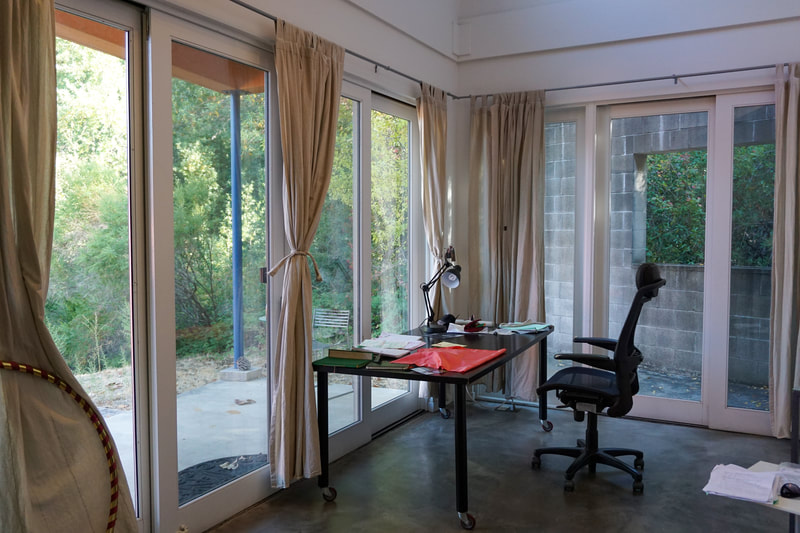

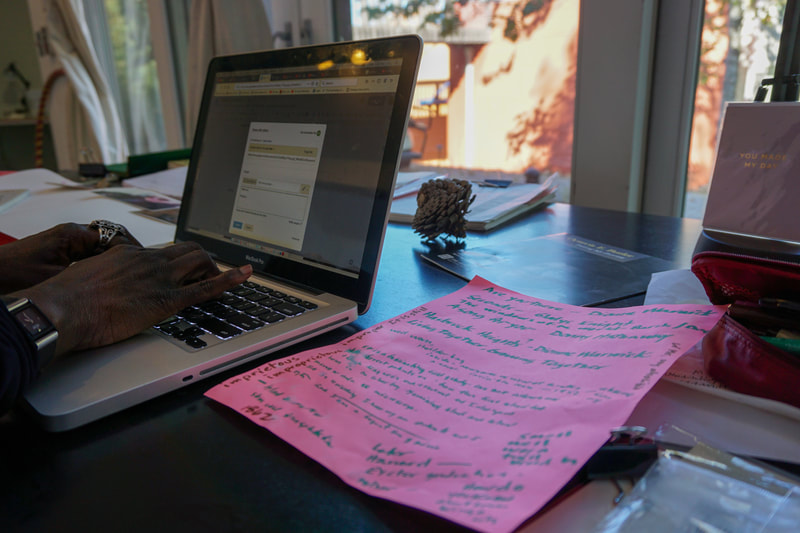

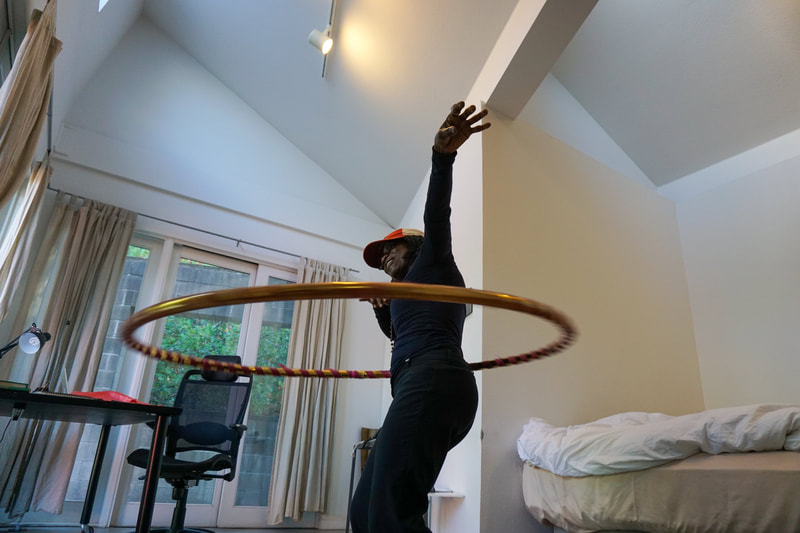
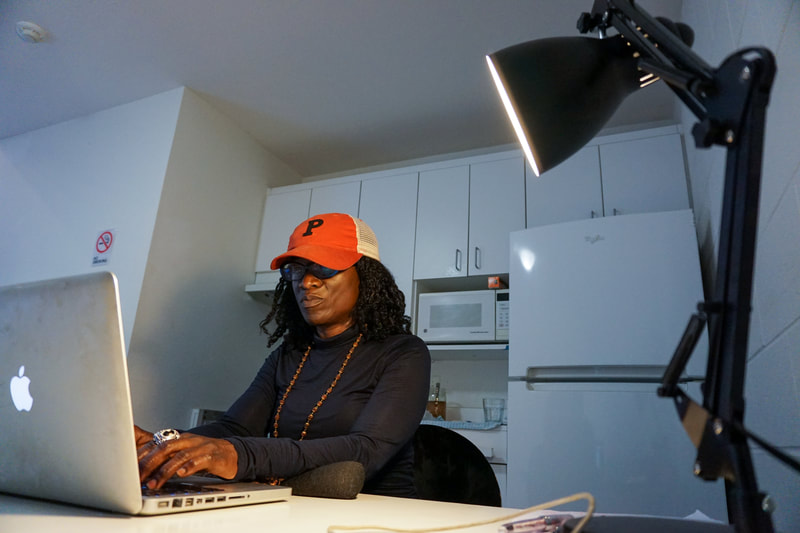
This is my third month (and third year) writing in the William Donner Foundation Studio. Thank you, William Donner Foundation. My first year (and month), I wrote primarily at the desk in the office area of the studio, which provided an orchestra view of the cacophonous quails in the forest theater on the other side of the studio’s sliding glass doors.
Year two: I alternated writing outside on a round glass table on the front porch, playing possum with bunnies, then retreated to the office theater desk.
This year, my third month (and year), I set my laptop onto the kitchen table to remain mindful of the boiling kettle.
It is week two and I am still in the kitchen.
I love kitchens.
They are the heart of one’s home.
I am cooking a play dealing with historical and cultural constraints on matters of the heart
A preponderance of pine trees
Flocks of birds
Blood rivers
And autumn leaves
Excuse me, while I kiss the sky – Jimi Hendrix
Read more about Alva’s work here
Lucas Artists Fellow – Music & Composition U.S.A./U.K.
THIS WEEK IN MY STUDIO (September 12, 2019)
Composer & Musician Gina Leishman
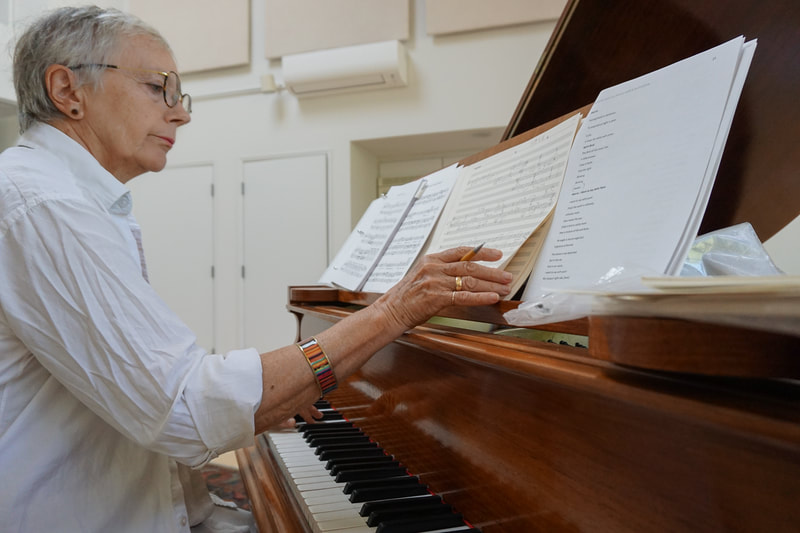
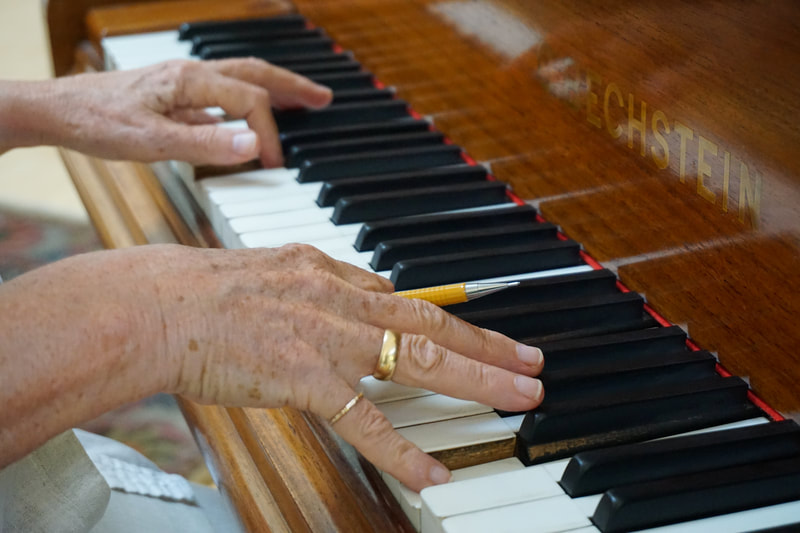
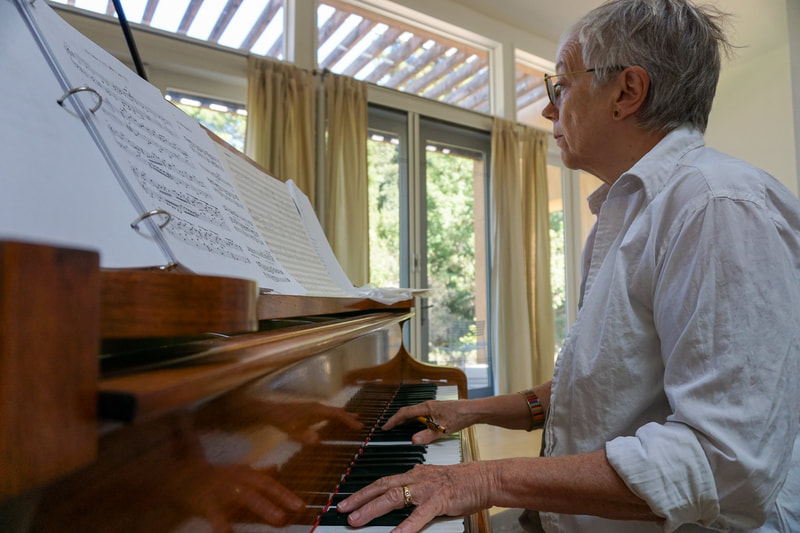
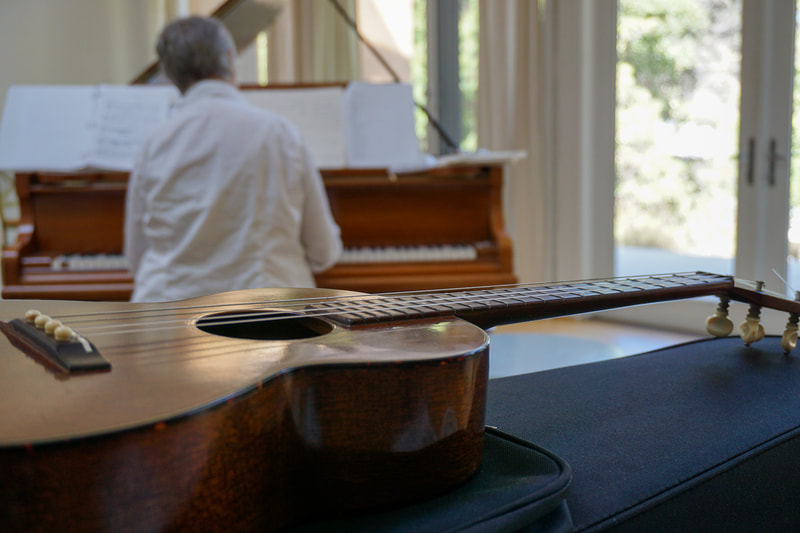

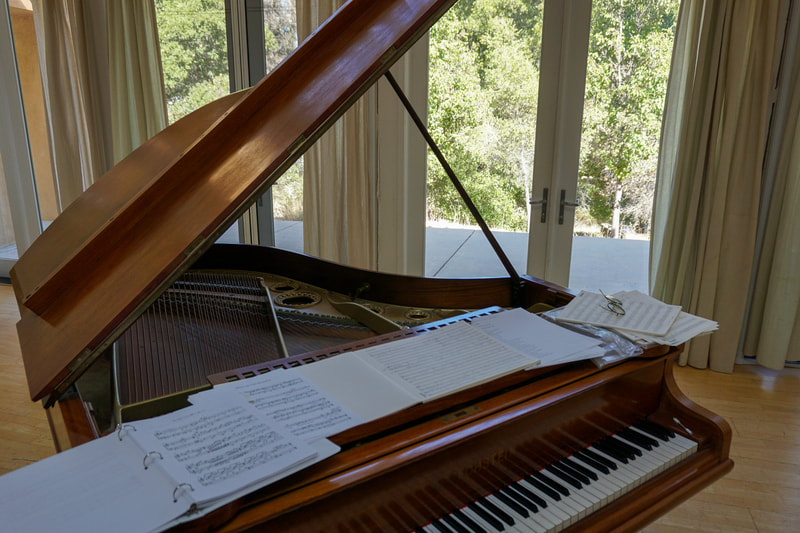
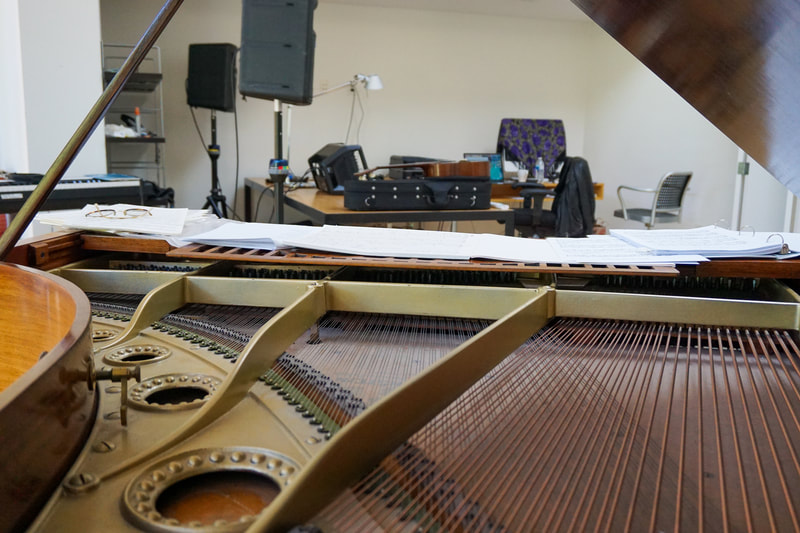


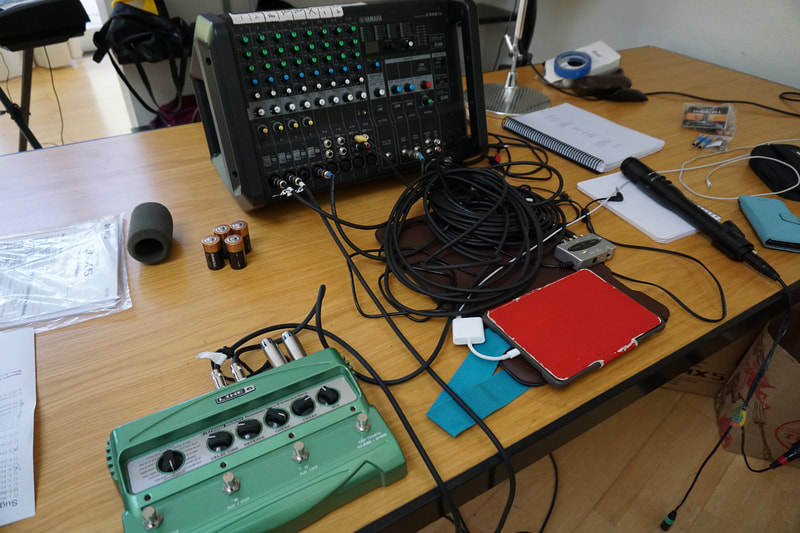
I’m currently working on a chamber opera about Pacific Northwest painter Morris Graves (1910-2001). He was a recluse and spiritual seeker, needing much solitude, but also a prankster with many friends; he was imprisoned as a conscientious objector during WWII, just as he hit big time fame in the art world. He spent the last 35 years of his life deep in the redwoods of Northern California, so I walk every early morning and evening in the woods here, then spend my day split between writing longhand at the grand piano, and building loops with my digital sampler based on recordings of the natural world around me. Funded in part by Opera America, I go straight into first rehearsals with singers when I leave here—nothing like a deadline!
Read more about Gina’s work here.
Lucas Artists Fellow – Literary Arts, Non-Fiction Germany
THIS WEEK IN MY STUDIO (September 12, 2019)
Non-Fiction Writer Malte Herwig
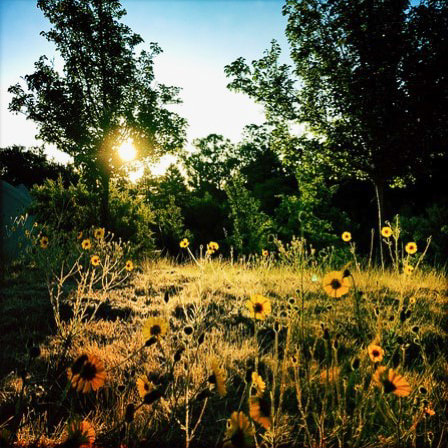
I hate writing. No, don’t get me wrong: I also love writing. Sounds complicated? Thomas Mann once said that a writer is someone for whom writing is more difficult than it is for other people. See the point? It’s a blessing and a curse, writing.
It’s so easy until you start thinking about it. That’s not just true for fiction. Telling real stories, as I do, not only means a lot of research (which I enjoy unconditionally and could go on with forever). It also requires artful implementation of language and logic.
Love it; hate it. It never gets boring, neither for me nor for you. Always at your service, dear reader. The hummingbirds fly outside my window, the water tap has run dry. So here I am, clutching a golden bottle and pouring my mind out onto paper beneath the Californian sun.
Lucas Artists Fellow – Music & Composition U.S.A./U.K.
THIS WEEK IN MY STUDIO (September 05, 2019)
Composer Luciano Chessa
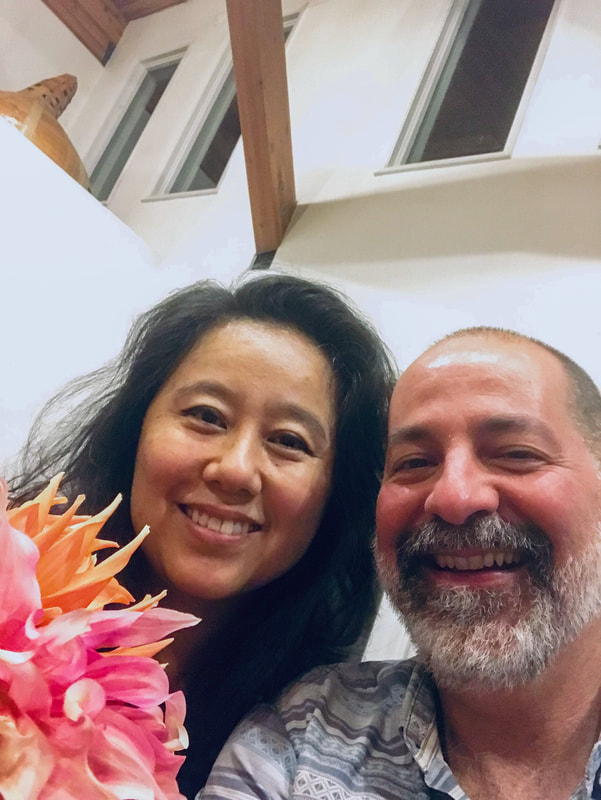
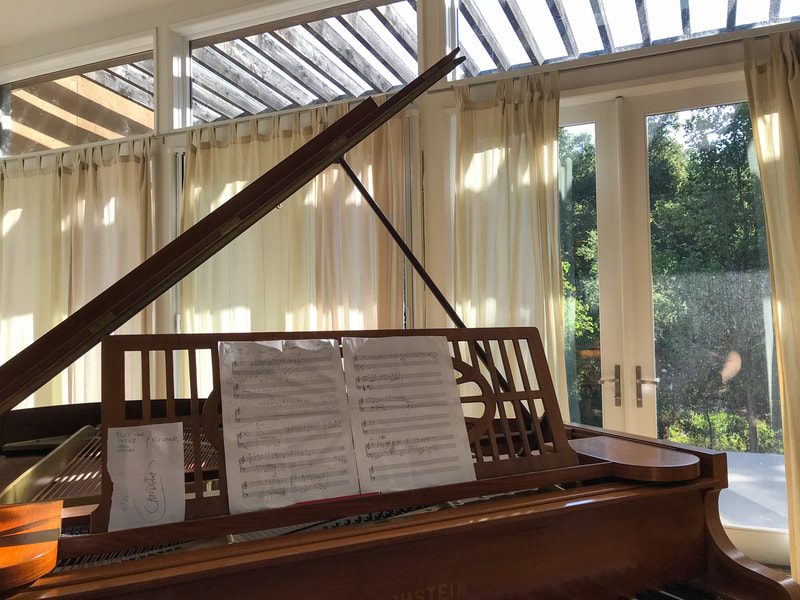
It’s been very inspiring to return to Montalvo! The atmosphere is especially conducive to focus on music. This quiet, beautiful place, surrounded by redwood trees, really muffles distractions to a minimum: perfect when you have deadlines. Here I have been working on sketches for the next two pieces: a commission for a sextet I am writing for the Melbourne group Inventi, and another one for a larger work for the Cleveland Museum of Art.
Musical ideas flow very naturally when playing on the Bechstein in a sunny morning. My favorite sport? Jump on the piano from the bed as soon as I open my eyes and play the first line that comes to mind. Improvising as I slowly wake up is priceless, I feel.
Read more about Luciano’s work here.
Guest Artist U.S.A.
THIS WEEK IN MY STUDIO (August 21, 2019)
Visual Artist Amanda Beech

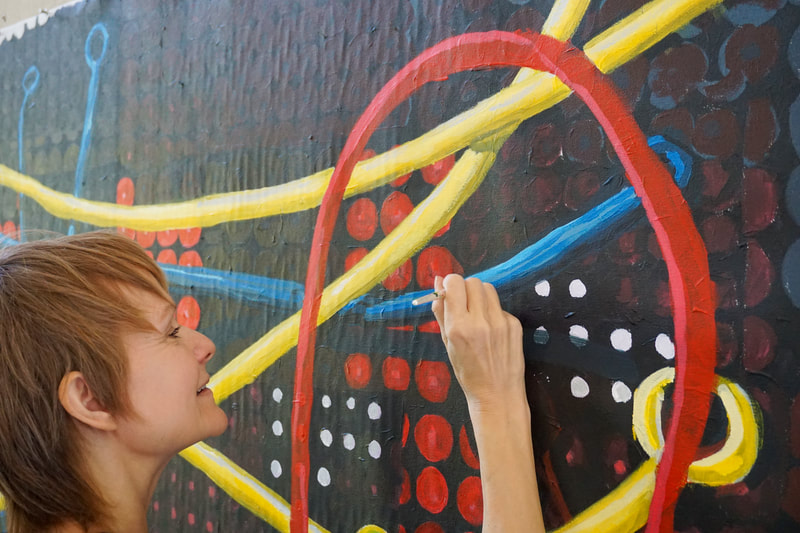
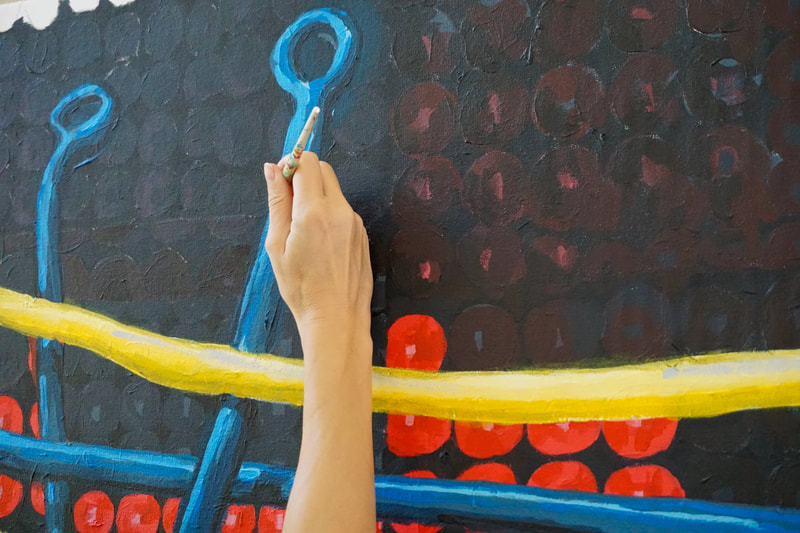
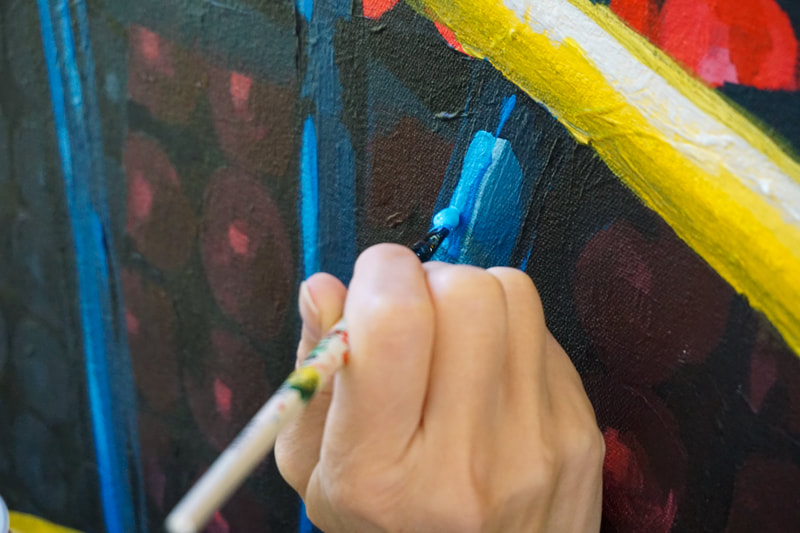
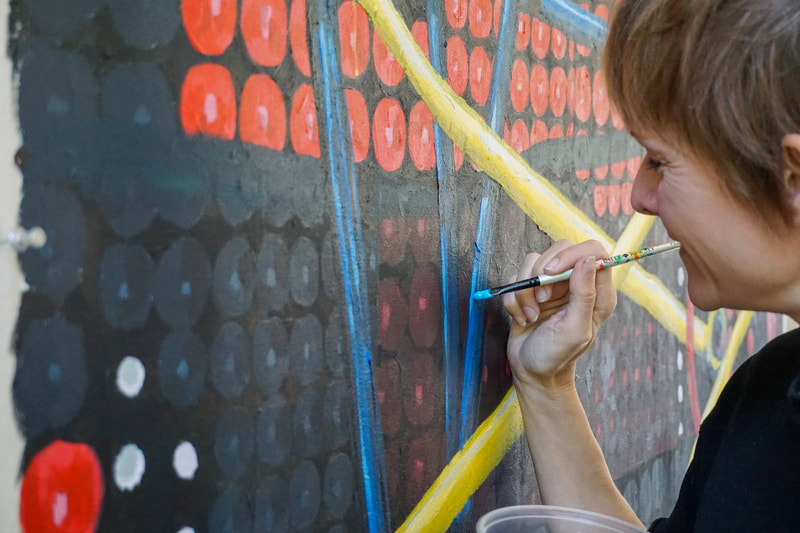
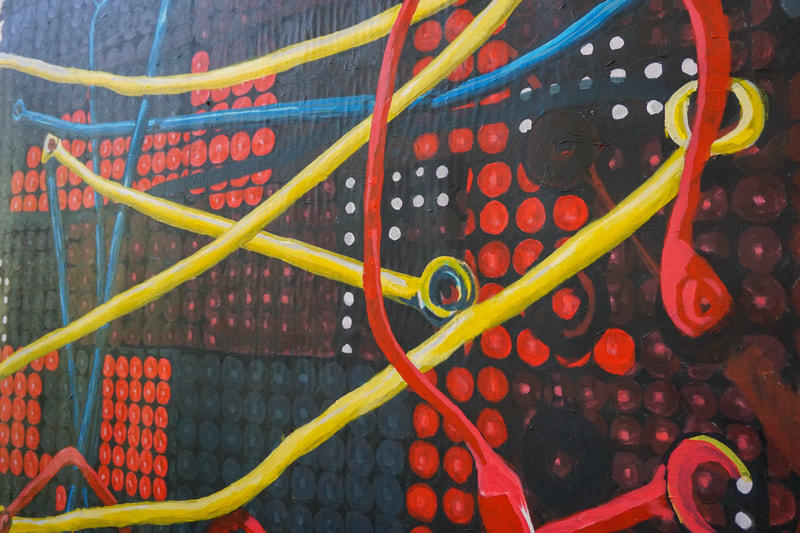
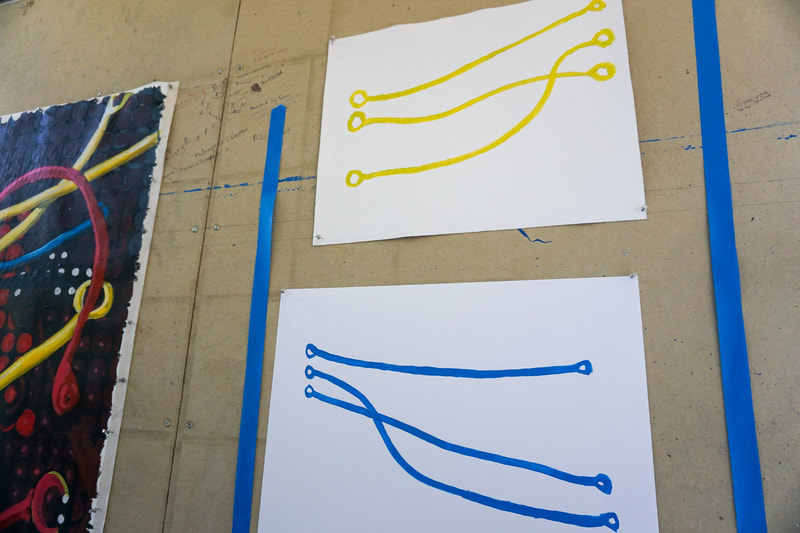
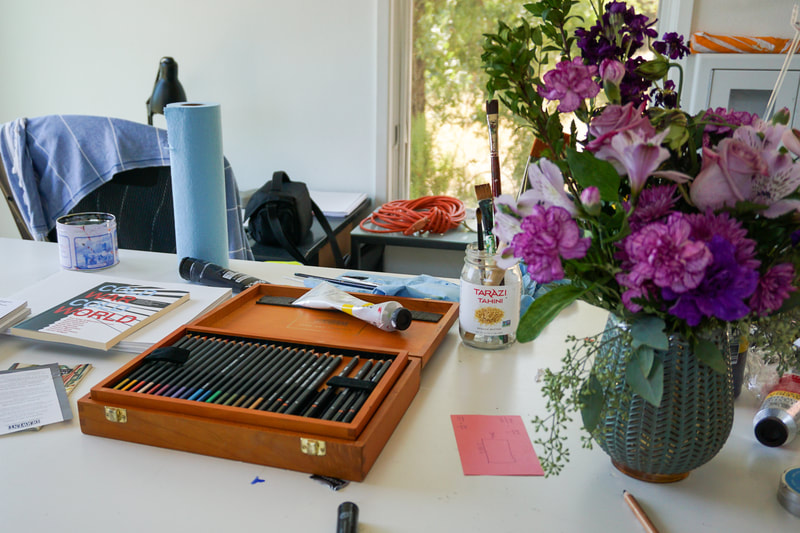
The daylight in the studio has been great for concentrating on the development of a new painting series that uses quite rough brushwork to depict abstracted and broken-up LED style text/image displays. The evenings have been dedicated to reviewing the edits for my large-scale video installation piece, Map of the Bomb, which I’ve been editing with experimental sound since I arrived here. Both works speak to the questions of: what is a language, how do we recognize patterns to form it, and how from this relation between pattern and noise, do we understand what change is? All of these are abstract questions but play out in the space where everyday experience in the political and philosophy meet.
Read More about Amanda’s work here.
Guest Artist U.S.A.
THIS WEEK IN MY STUDIO (August 17, 2019)
Visual Artist SoHyun Bae
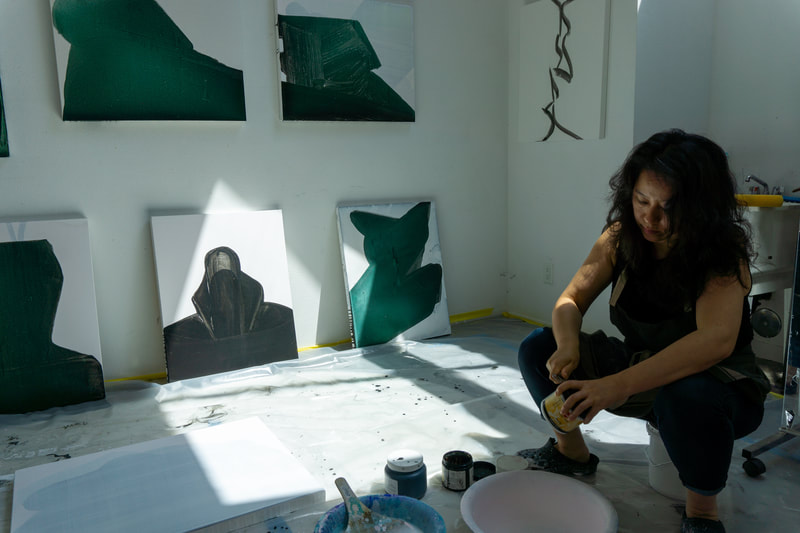
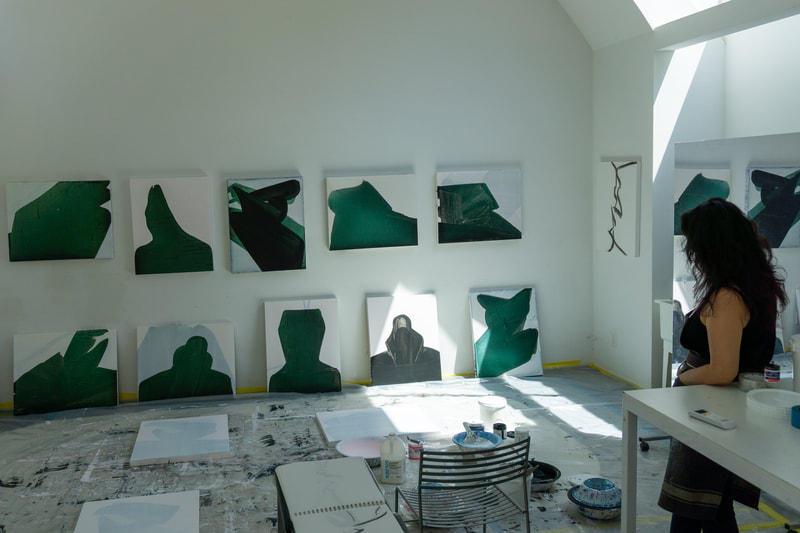
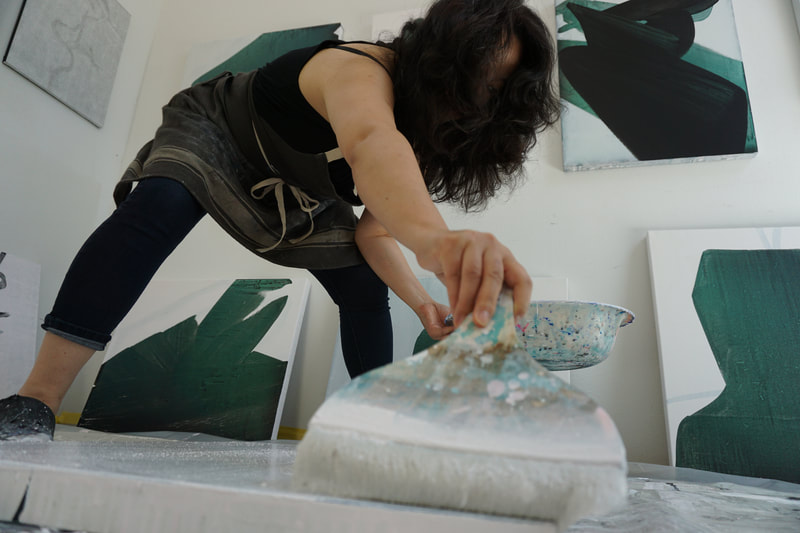
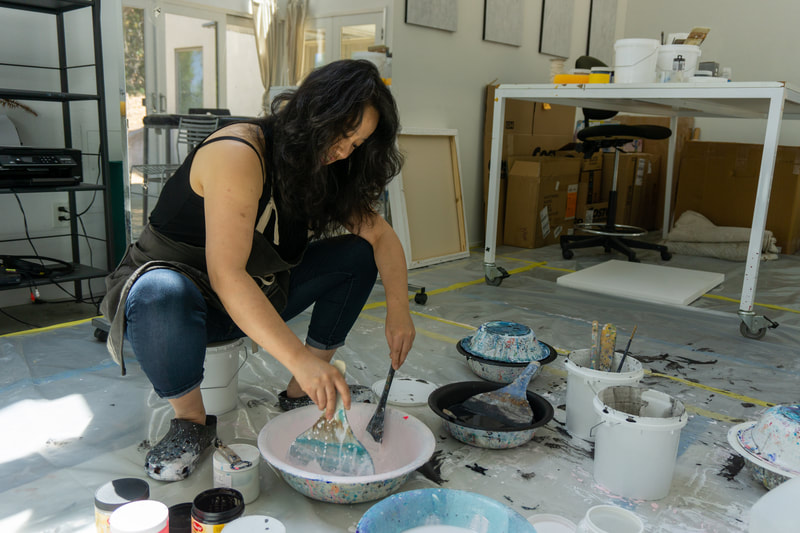
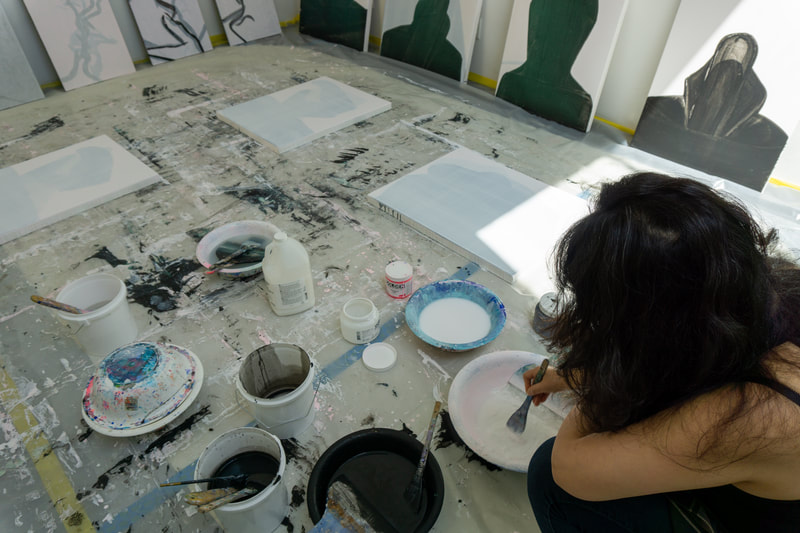
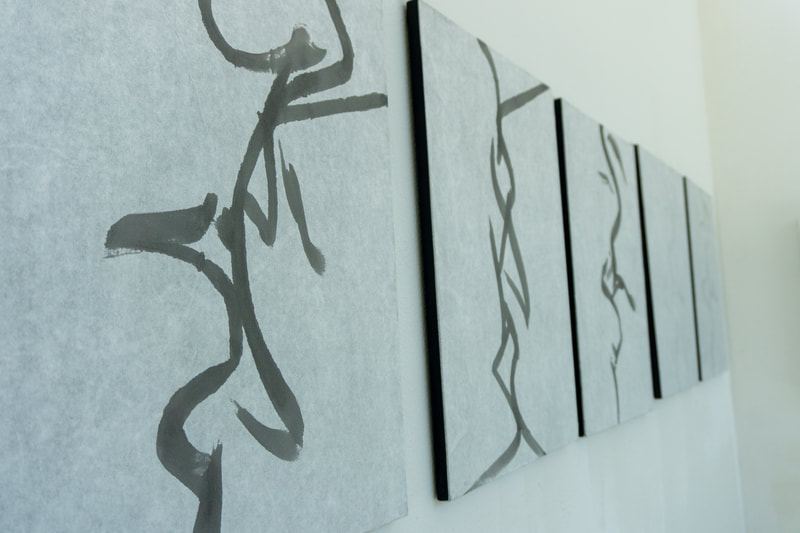
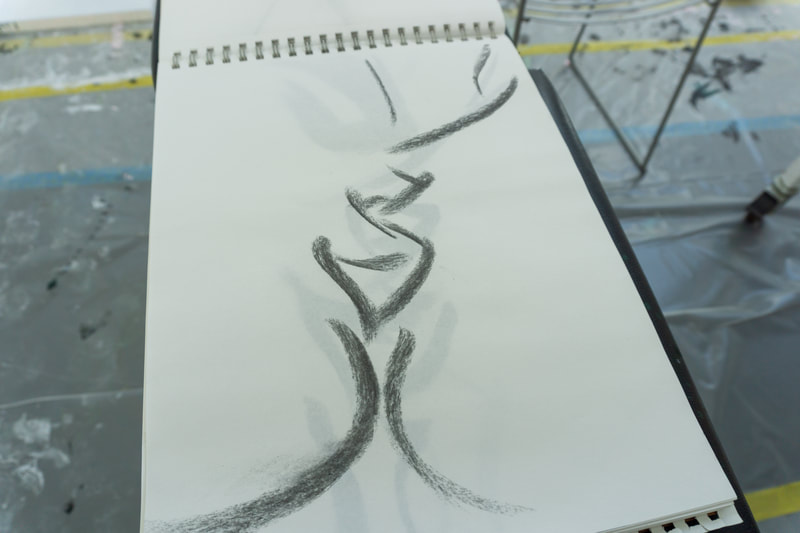
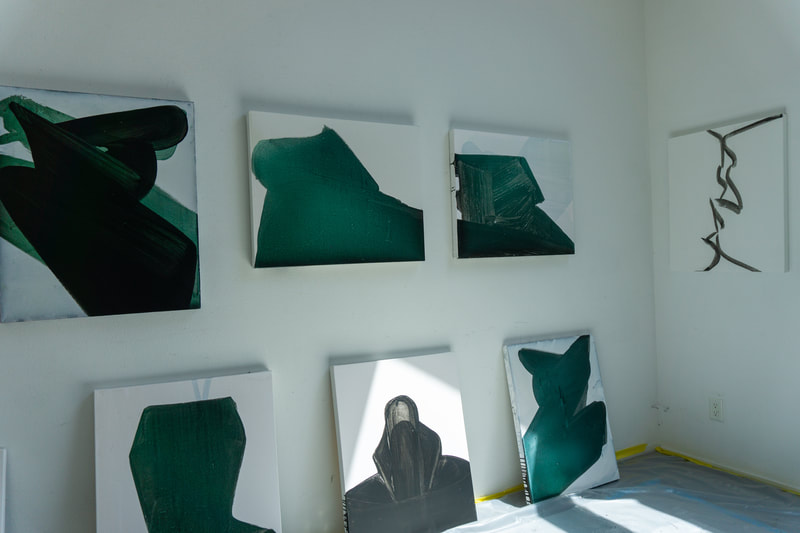
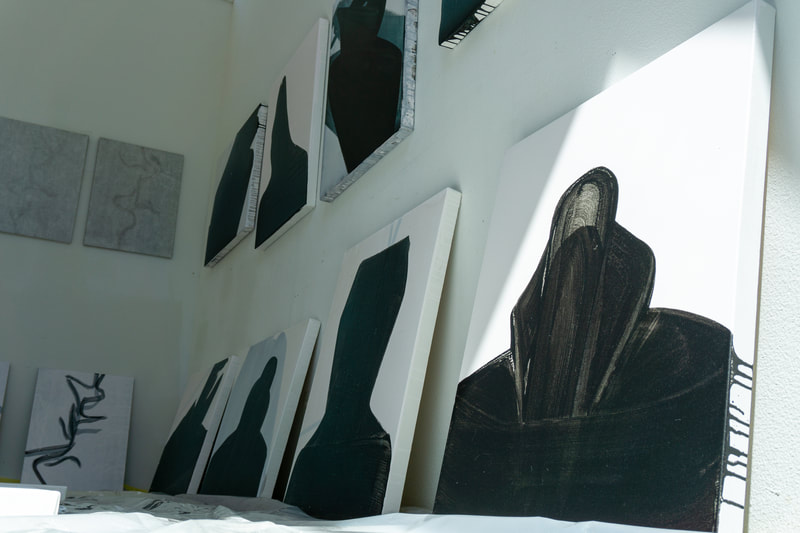
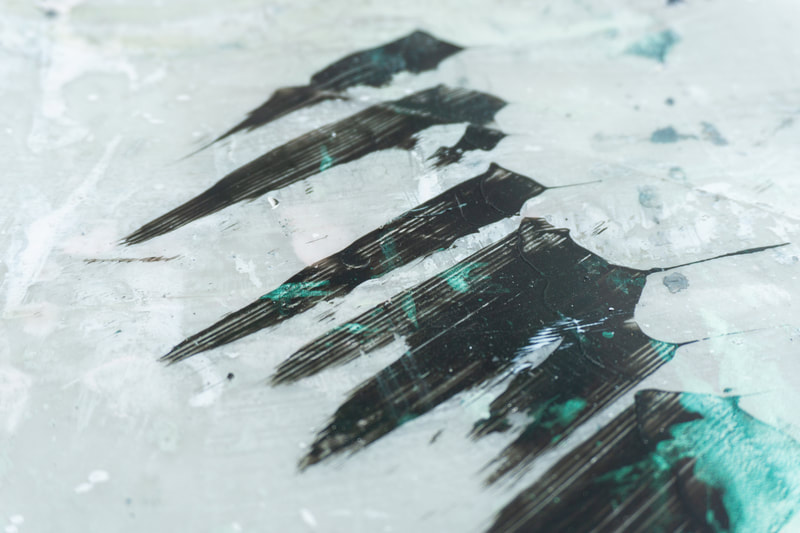
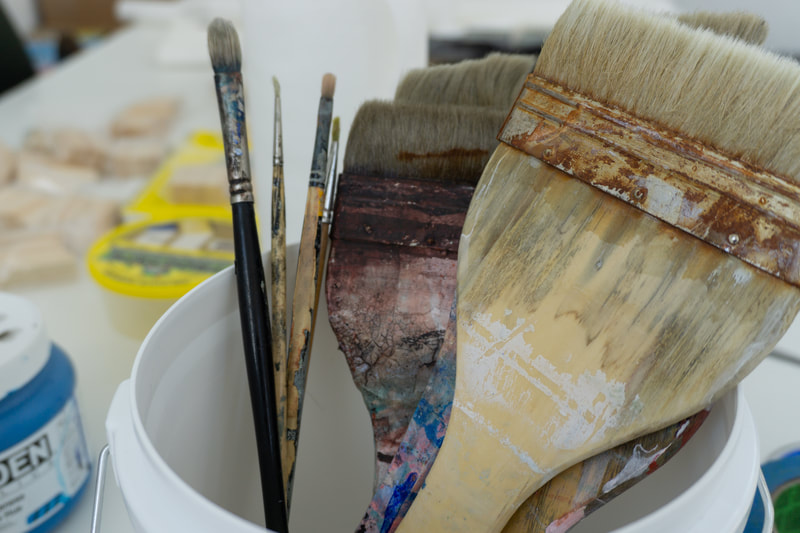
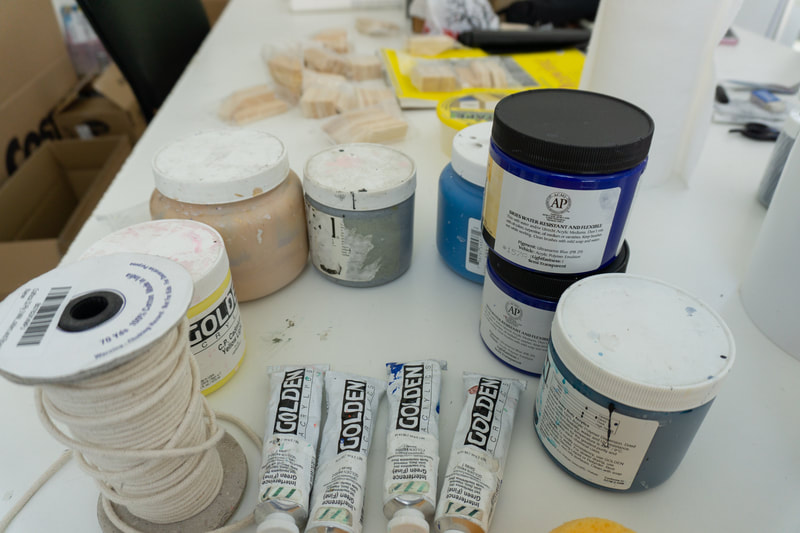
Day 11. . . So after getting lost, I found a better road. The line, the gesture, the cloak. Went into six canvases with a big broad brush marking the movements of Lamentation. A few are decent. The rest, start over. . . Seeing Martha Graham, herself, perform the Lamentation, I see that the movements are slower than what the still images imply. I will have to keep that in mind as I move the brush across my canvases. . . The interference green is a definite yes. I only wish I could order the coarse version. They don’t make this anymore. Also, I need a thicker black so that the brush marks are more evident. There is always room for improvement but for now, I am moving in the right direction. . .
Read more about SoHyun’s work here.
Lucas Artists Fellow – Music & Composition; Guest Artist
THIS WEEK IN MY STUDIO (July 25, 2019)
Composer & Musician Fernando Vigueras& Visual Artist Daniel Godínez Nivón
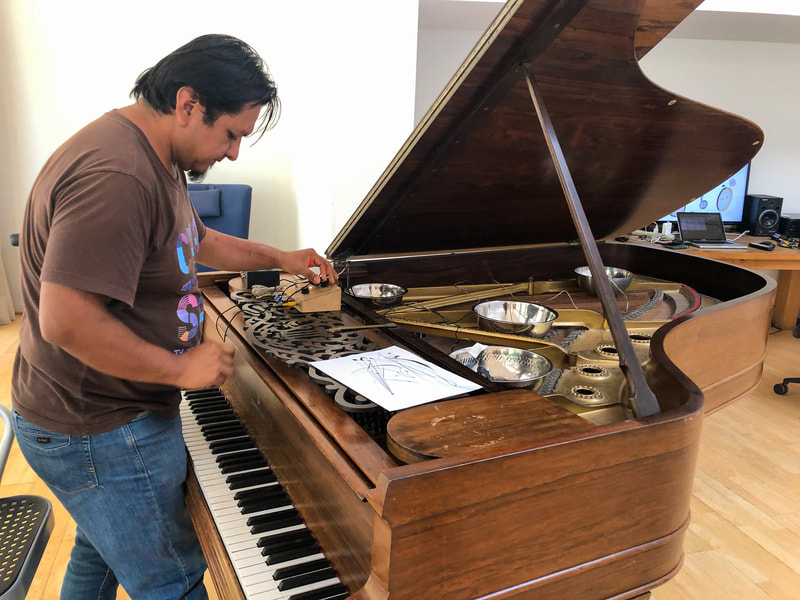
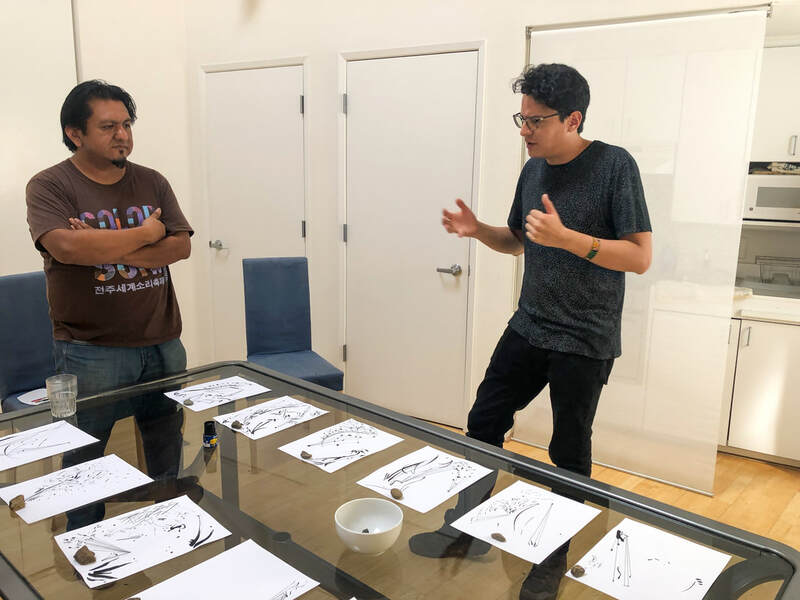
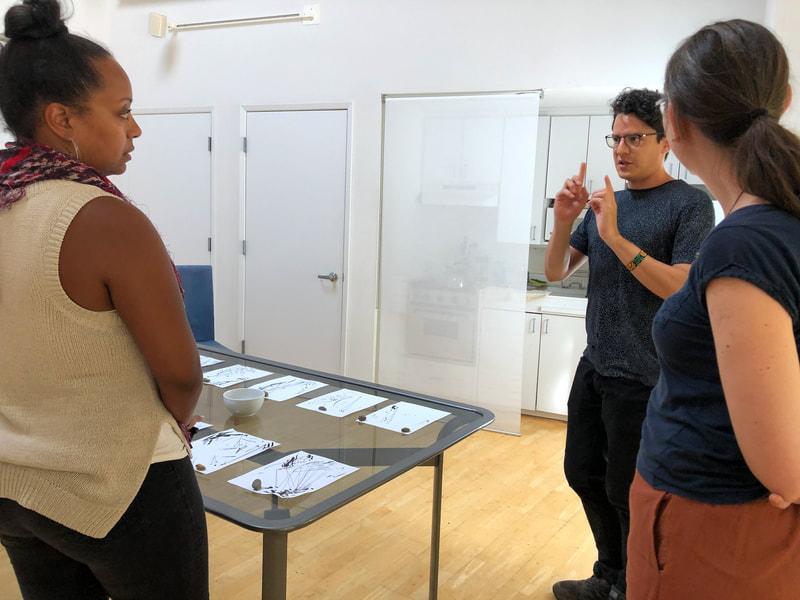
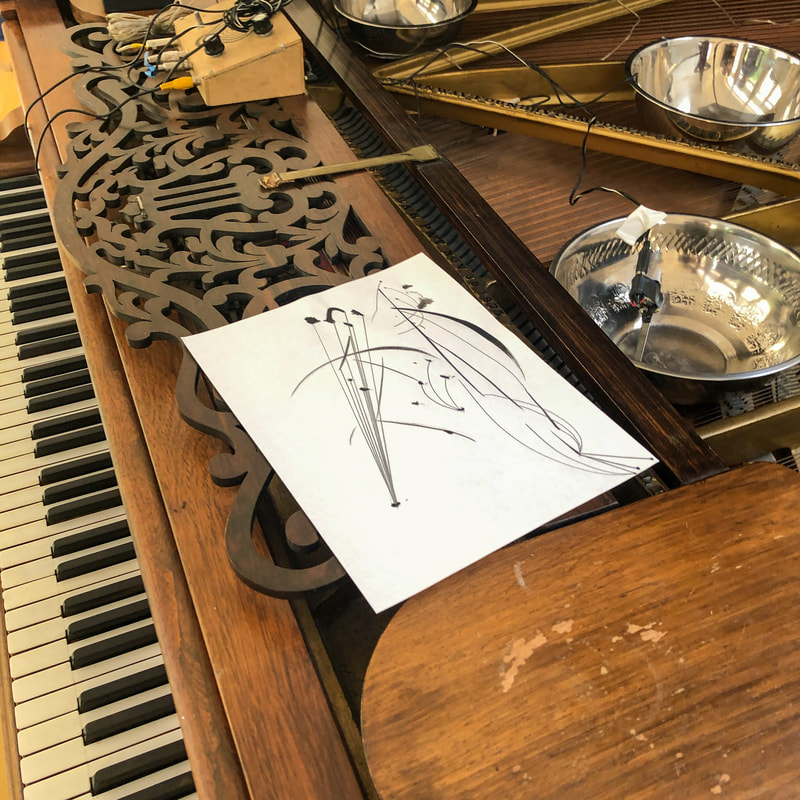
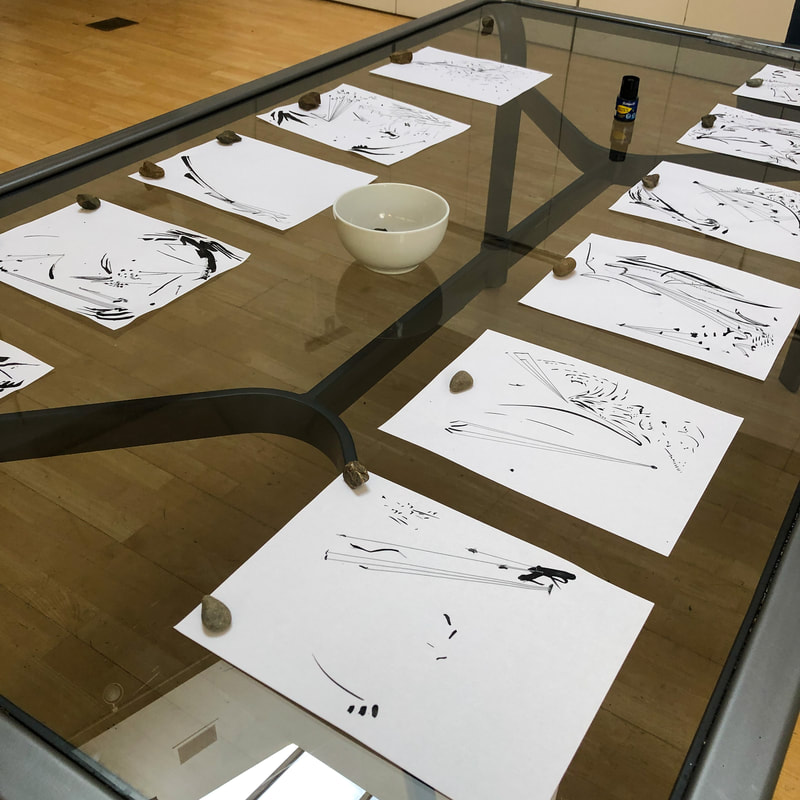
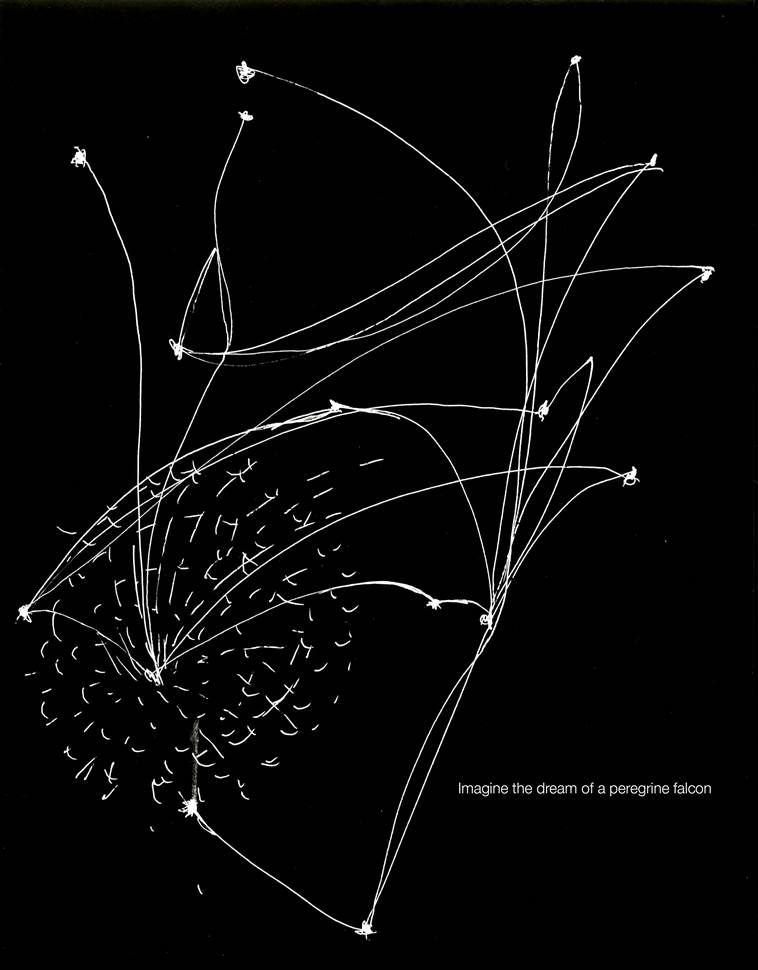
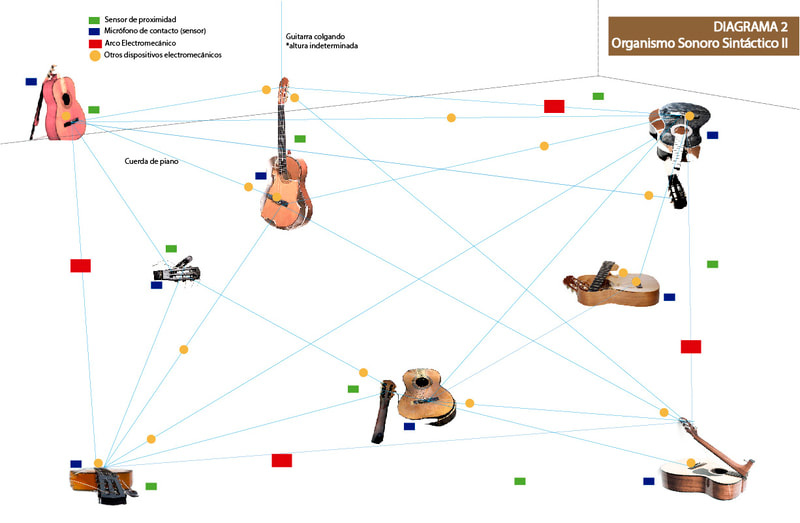
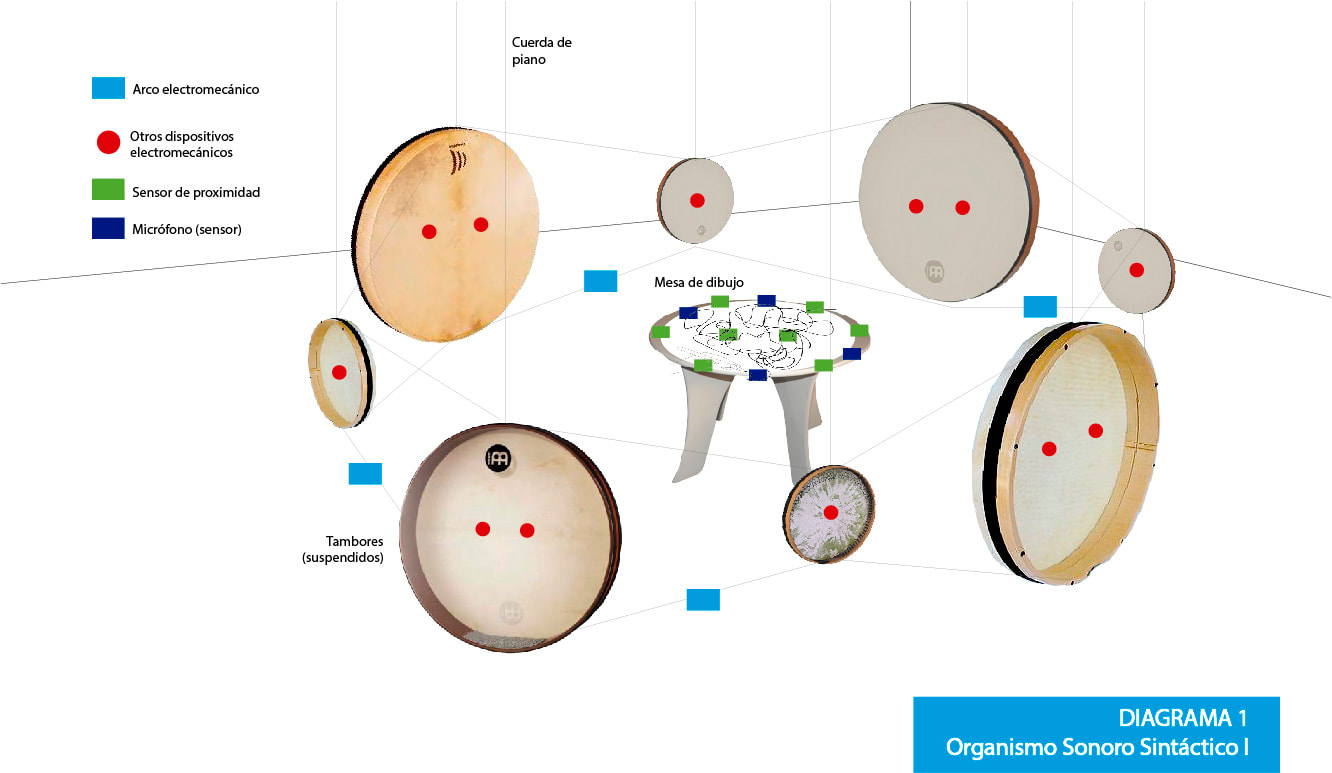
A couple of years ago, during my first stay at Montalvo’s LAP, Daniel Godínez Nivón (my current collaborator) and I organized a series of meetings and talks that we called dream meetings or oneiric assemblies—an exercise that consisted of meeting with the community of LAP artists every Wednesday at 3 am—inside the dream. There were many coincidences and situations that created an enduring resonance, not only with the community of artists here, but with the space and time we shared within this artistic residence.
During that time, we also made a series of recordings with guitarist and composer Mike Gamble and trombonist Alex Asher, based on the graphic scores drawn by Daniel Godínez (see drawing in the photo gallery at left). These scores are based on the experience of these dream encounters. A recording of this work can be heard here: https://soundcloud.com/oneiricassembly/sets/oneiric-assembly.
This time around, during our second LAP residency, we are developing a project that extends from the context of dreams to the materiality of the body, to space and memory as a stroke in time. Once again, we have been working with dream encounters with some of the current LAP artist residents, but above all, we have been archiving and observing the trajectory of our work in relation to these meetings and exploring how the tracings of our work are drawn over time. Faces, voices, sounds, landscapes … a cluster of moments in constant flow that forewarn new ways of coming into being.
In addition to presenting a small sound activation during the festival Threads: Weaving Humanity, I have also been able to dedicate time to my work, drawing sketches and diagrams for a new sound installation project called Syllabary: Syntactic Sound Organisms, which explores new ways of confronting space and sonic experience from the perspective of the body and the tracings of movement (see diagrams in the photo gallery). I have also worked on my audiovisual archive of concerts and sound interventions. Several finished editions can be found here: www.desbordamientos.com.
Daniel and I have been discussing creating a book together, drawn from the dream encounters at Montalvo, perhaps including texts and graphic scores about dreams, sound and creative practice. We are excited to be planning our next stay at Montalvo and working on our book.
I am deeply grateful for the enduring coincidences that this encounter has generated.
Lucas Artists Fellow – Literary Arts, Non-fiction & Poetry
THIS WEEK IN MY STUDIO (July 25, 2019)
Poet & Non-Fiction Writer Yona Harvey
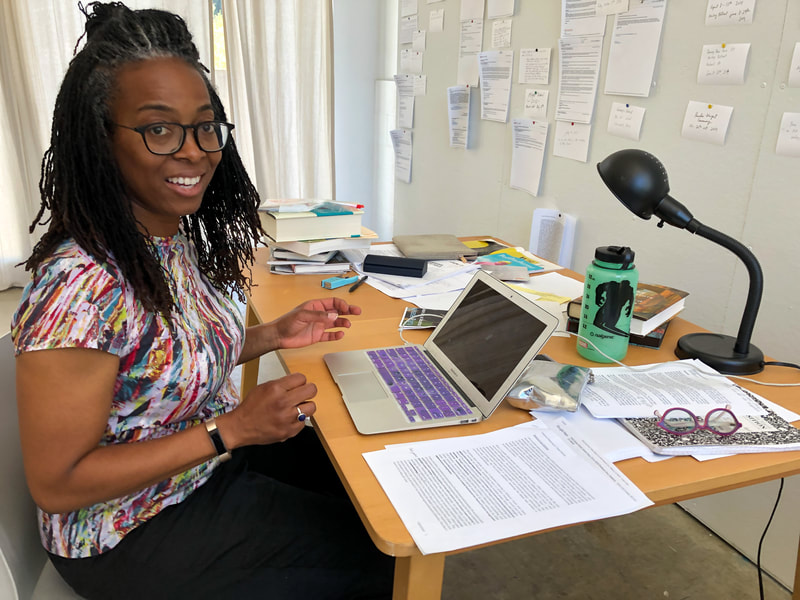
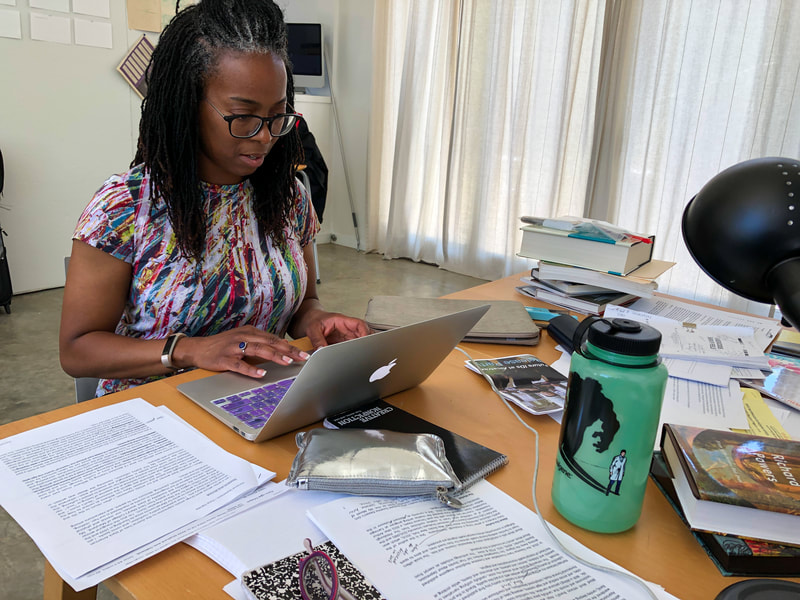

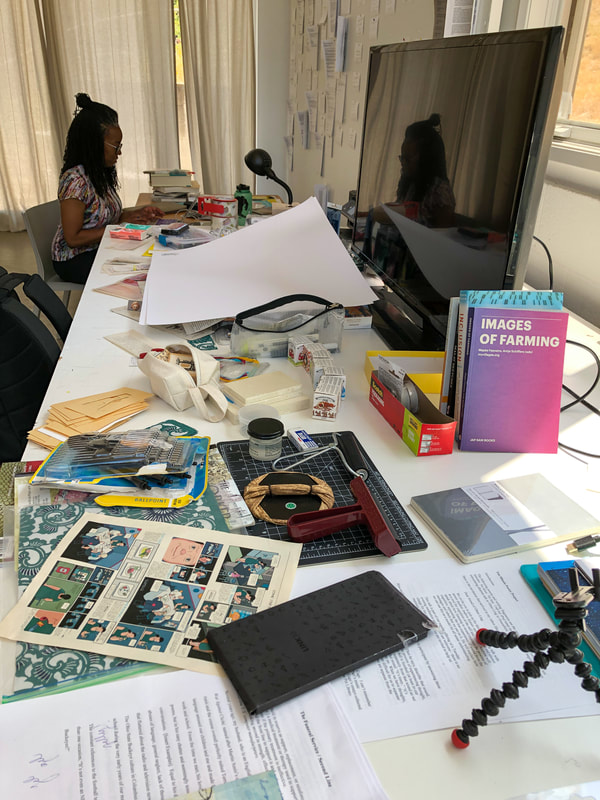
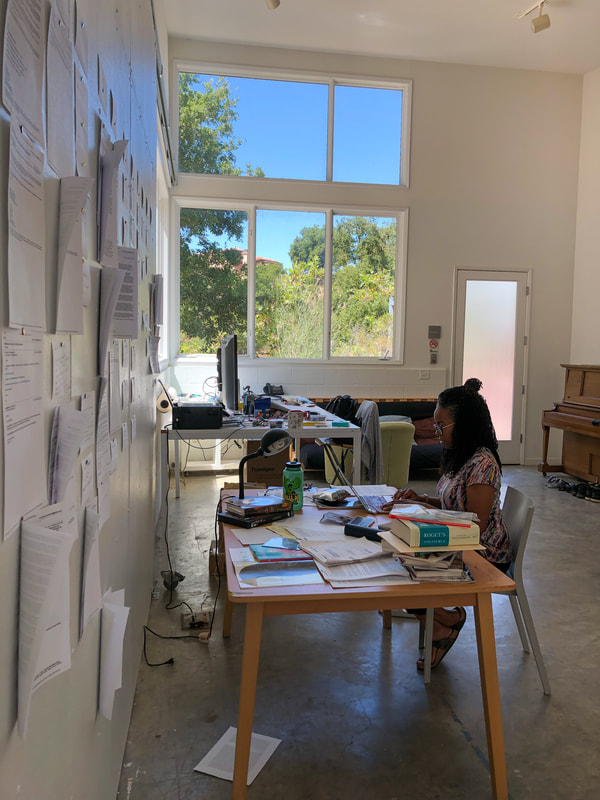
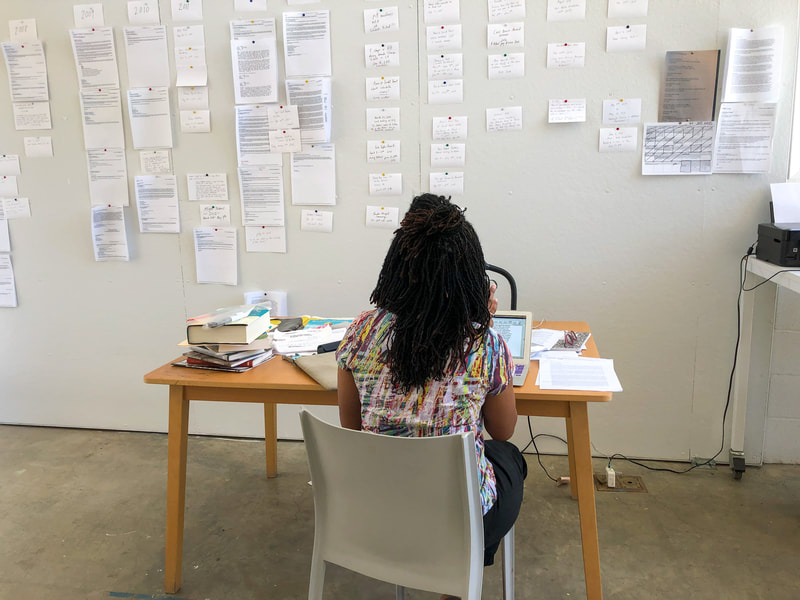
This week in the studio, I’m focusing on humor. Because some issues in my memoir—my sister’s death, grief, and family upheaval—can trigger the blues, depicting people fully and with complexity is a priority. My sister, especially, could make my stomach ache from so much laughter. It’s important that her narrative is not limited to her struggles with depression, but includes her vitality and silliness—for instance, showing my daughter in the bathroom mirror how to apply lip gloss and make “kissable” lips.
I spent the first week here reconstructing a timeline of events from the hundreds of pages I’ve already written. I’m grateful for the time and space to collate and arrange these massive notes and data from my notebooks and emails. Viewing my sprawling timeline on the cork-board wall with every high and low in view from the writing table, I’m amazed I survived!
Part of the process is not taking myself too seriously, though. Mapping everything like this makes me feel kind of out-of-body. Like I’m storyboarding a comic. And I’m thrilled about my time here at Montalvo to reconstruct the tale.
Read more about Yona’s work here.
Guest Artist
THIS WEEK IN MY STUDIO (June 13, 2019)
Visual Artist Hellen Ascoli
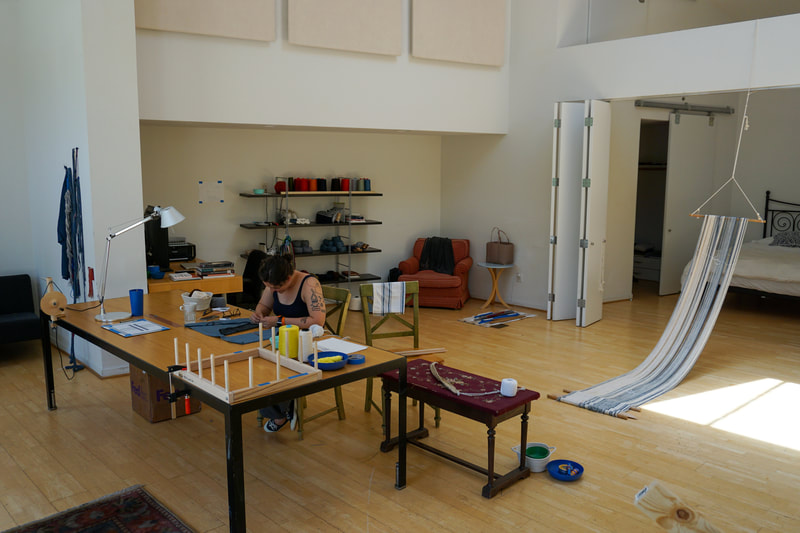
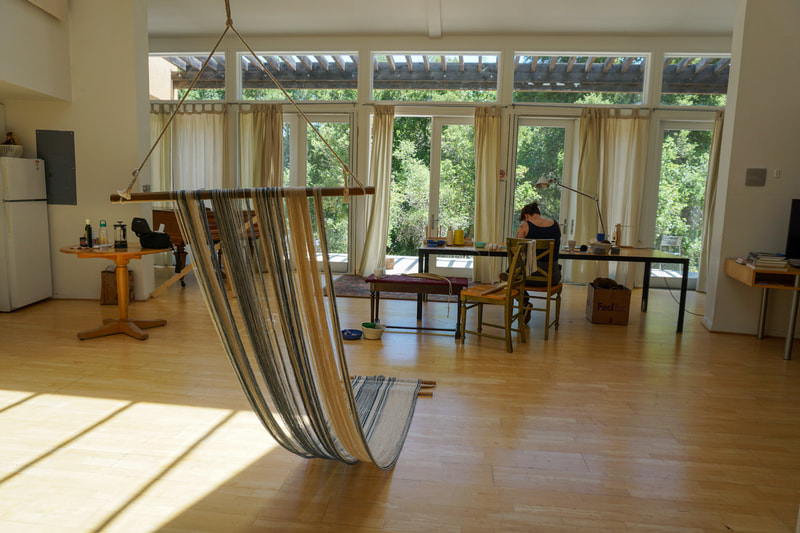


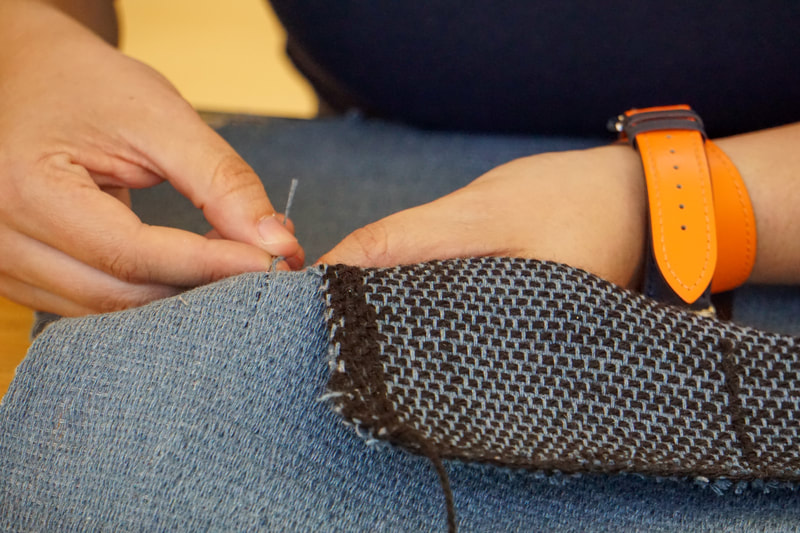
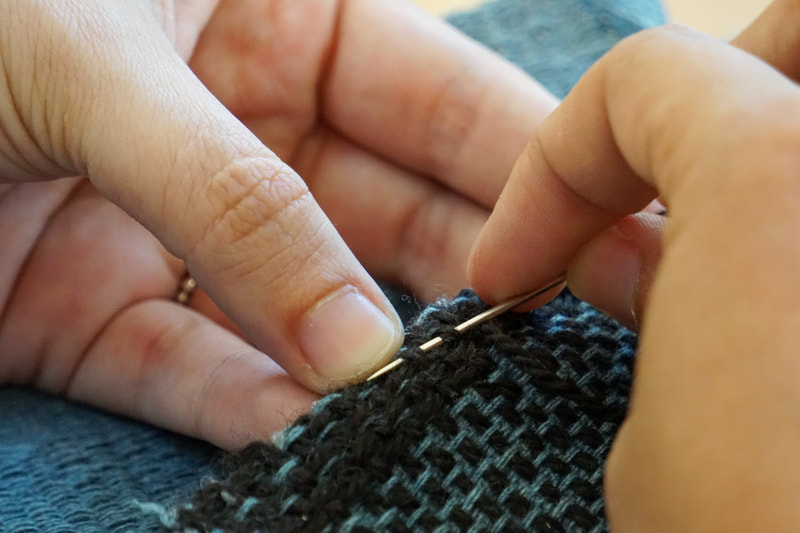



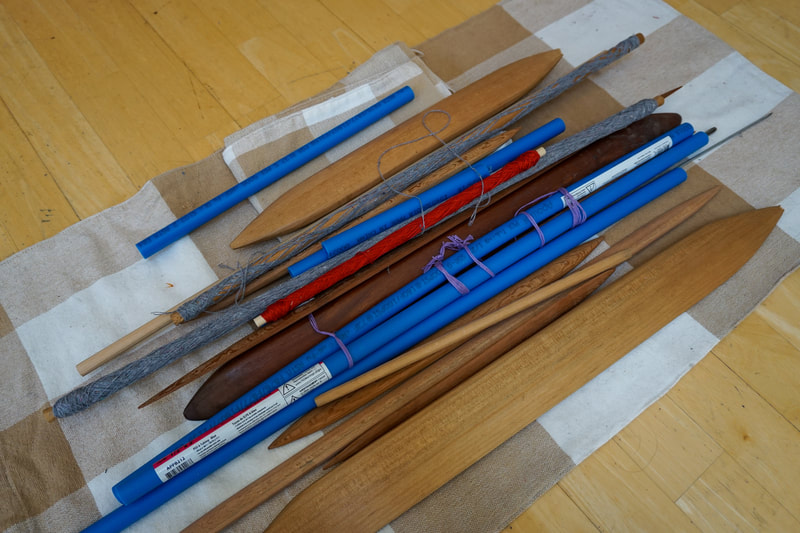
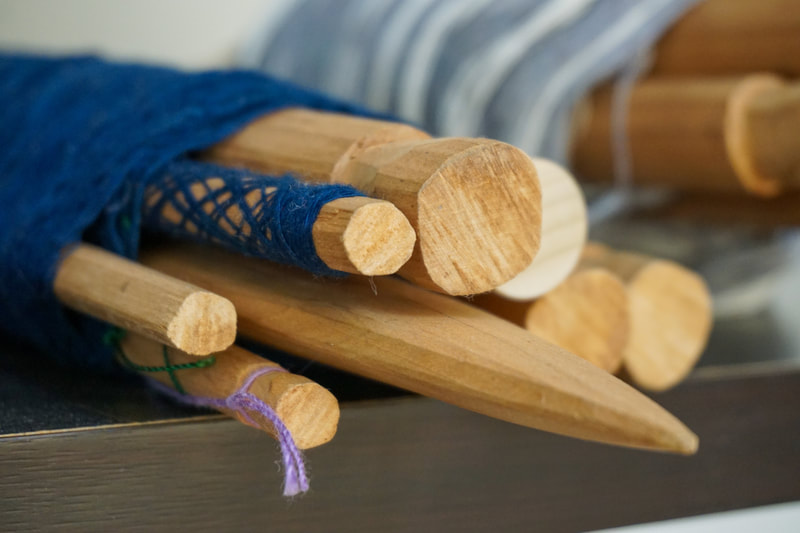
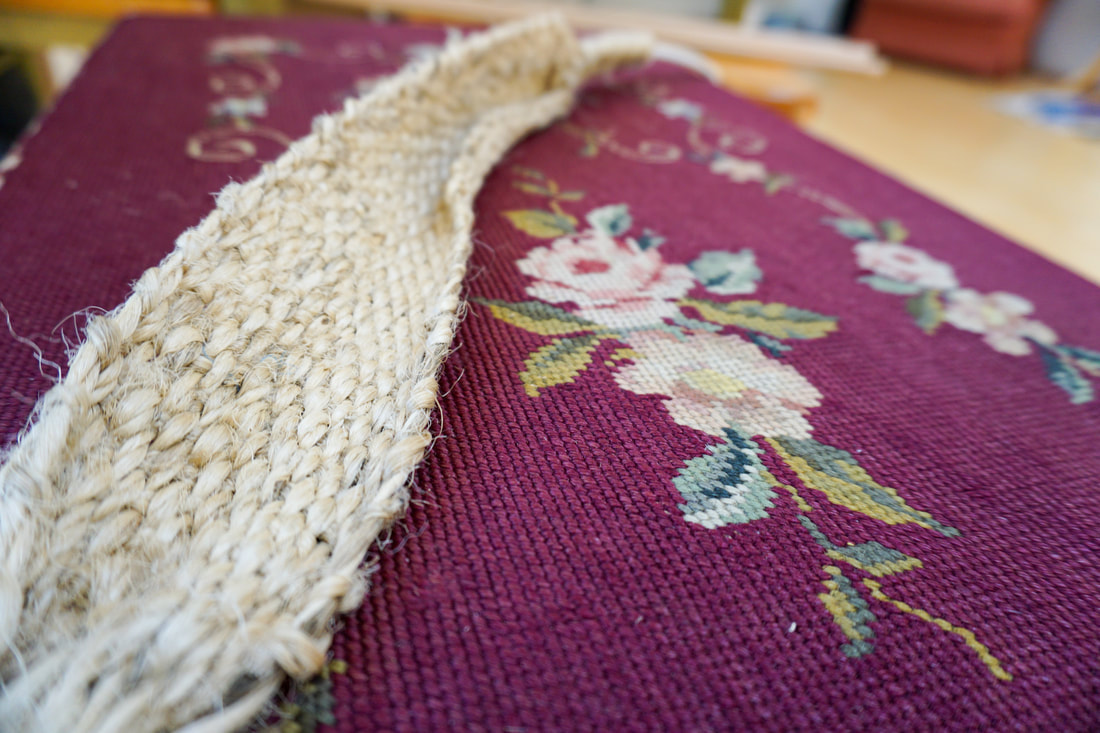
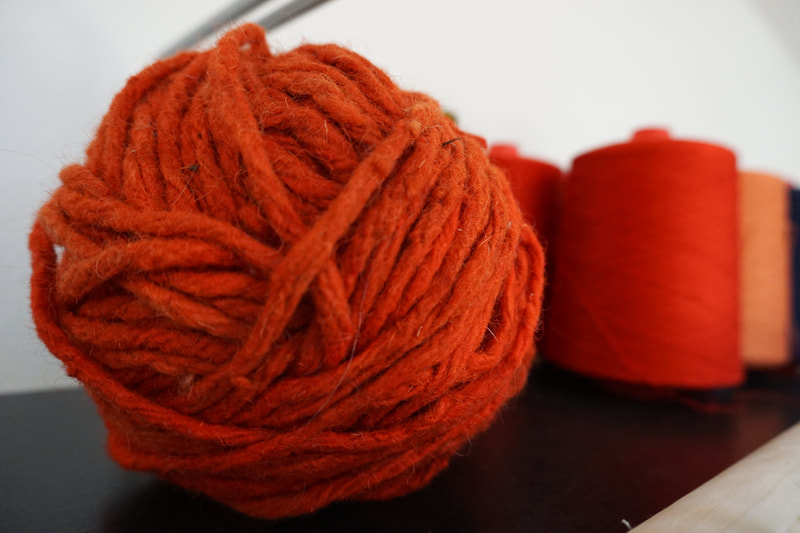
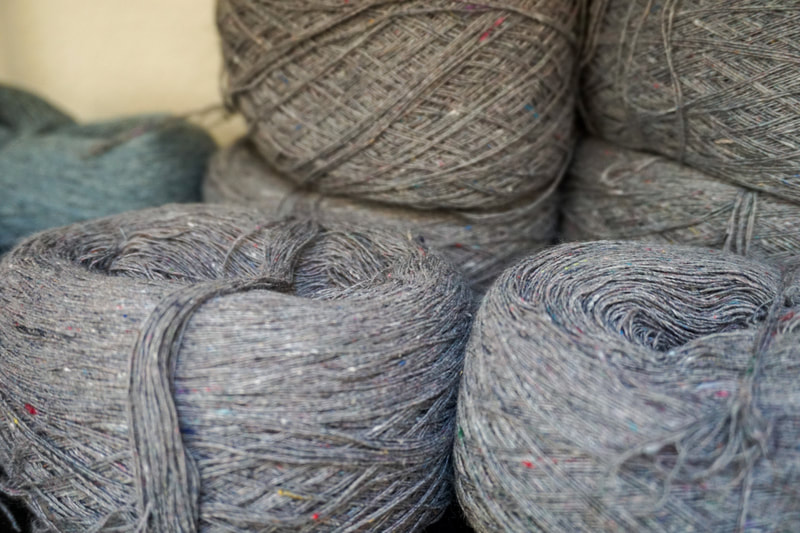
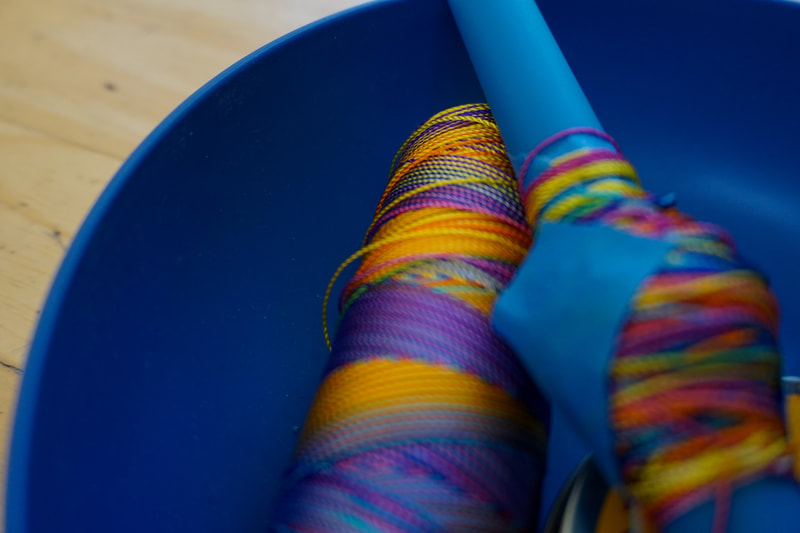
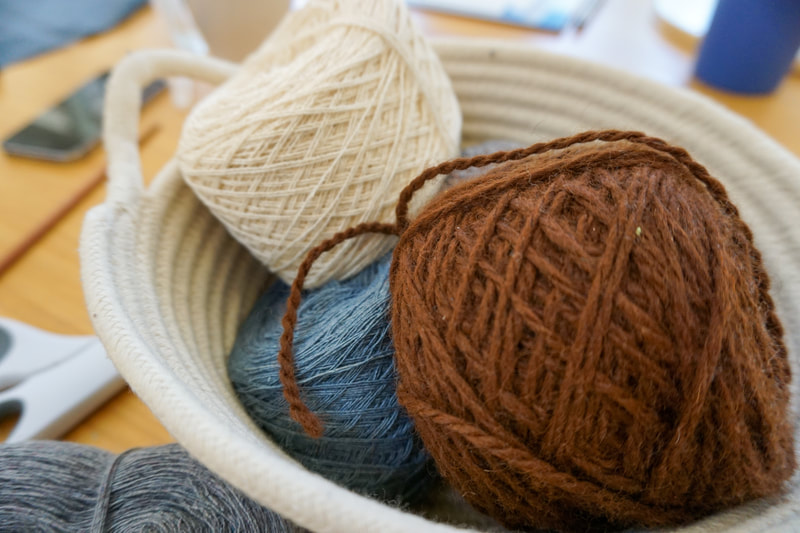

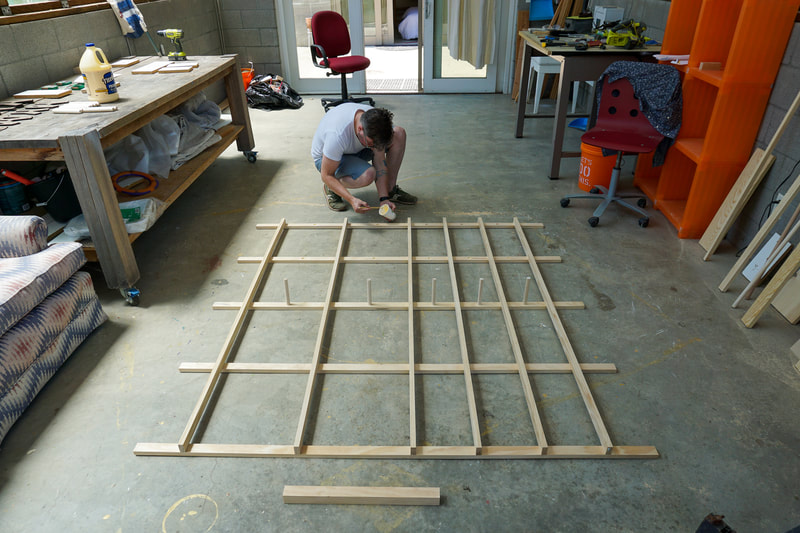
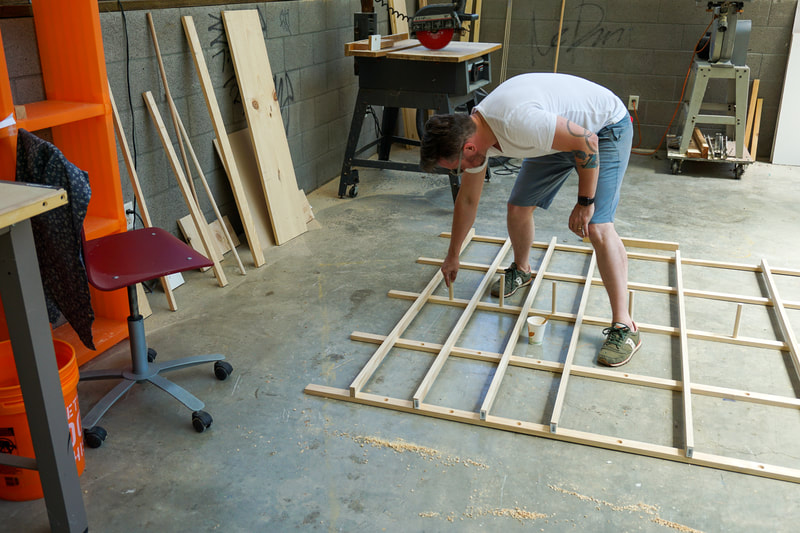
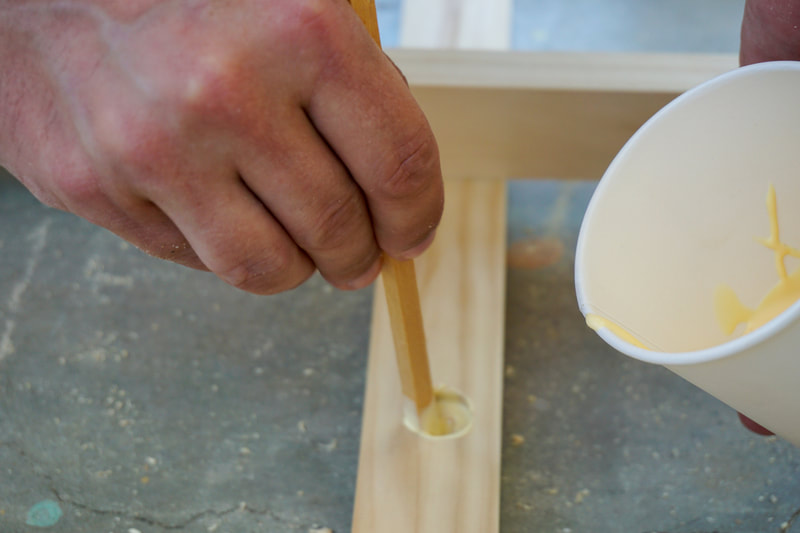
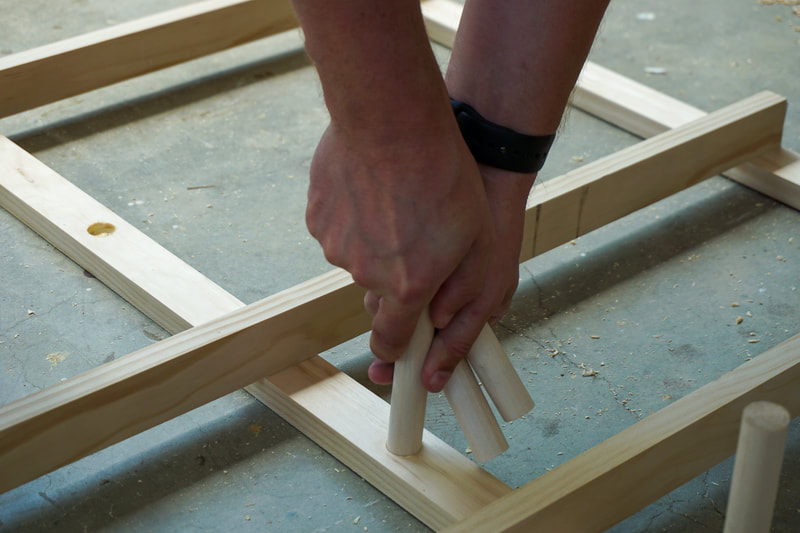

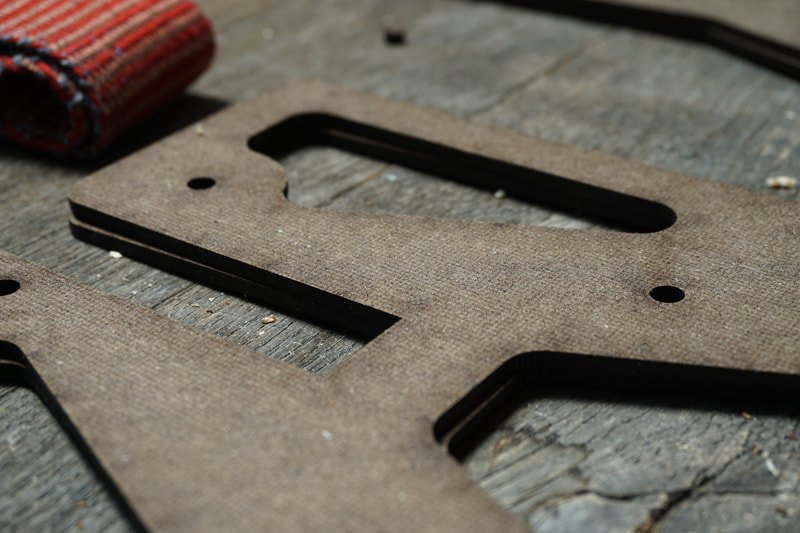

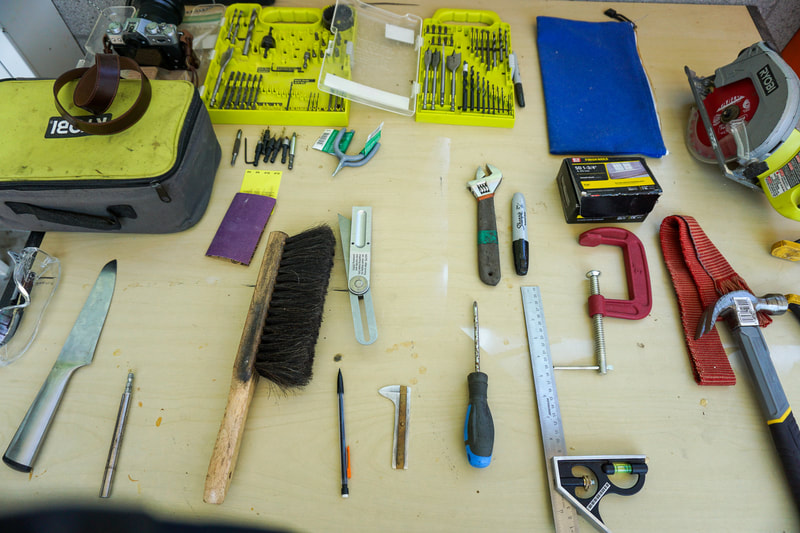
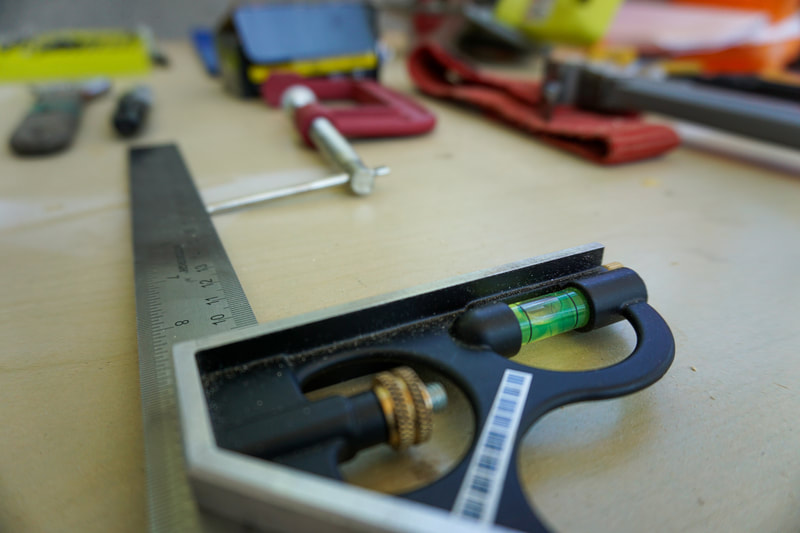
This week as I begin my stay at Montalvo, I find direction by staring at a small tattoo on my right arm that says “Na'”—and this is what I am searching for.
Na’ is the Tzotzil word for knowledge of the soul or heart. It also requires memory and calculation, and implies both character and habit. Na’ is a larger word for knowledge and for me, it also means allowing my body to settle into its new surroundings and trusting the weaving process.
The first days of sitting long hours strapped into my loom, I easily grow restless, not entirely knowing where each panel will take me or how it will be configured into a larger installation of wooden furniture and flowers. I am preoccupied with how the natural and material world inform our identity, and how knowledge is embedded in the tools and language that we use. I use weaving on the back-strap loom to situate myself in the USA as well as to remember Guatemala.
On day four here, my husband and collaborator Karl Williamson arrives to build wooden components of the installation. We go back and forth from the reference photos from Guatemala and the tools on my table to the hot wood shop in studio 51. He has designed an initial module and then adjusts each piece to my feedback or a newfound insight while building.
Na’ is the playful enjoyment of making something new until we realize that the rising temperature is too much to handle.
Na’ responds to our surroundings, which means waking up at 6:00 am to be able to work before the heat tells us to stop and take a mid-day nap and shower to cool off.
In the late afternoon, I return to my fabric designs that are based on the rhythm of traditional stripes on Mayan garments and adjust the measurements so that they may relate back to the wooden pieces. I warp the new measurements in.
Na’ is constantly adjusting to find precision.
I wind several sticks for the weft and sit down for a session of weaving, feeding the loom back and forth, a bit more centered.
Na’ is this habitual practice and rhythm that we struggle to find and adjust every day.
Read more about Hellen’s work here.
¹ Greenfield, Patricia Marks. Weaving Generations Together, Evolving Creativity in the Maya of Chiapas. School of American Research 2004.
Visual Artist Karla Diaz
THIS WEEK IN MY STUDIO (June 12, 2019)
Visual Artist Karla Diaz
Lucas Artists Fellow – Visual Arts
U.S.A.
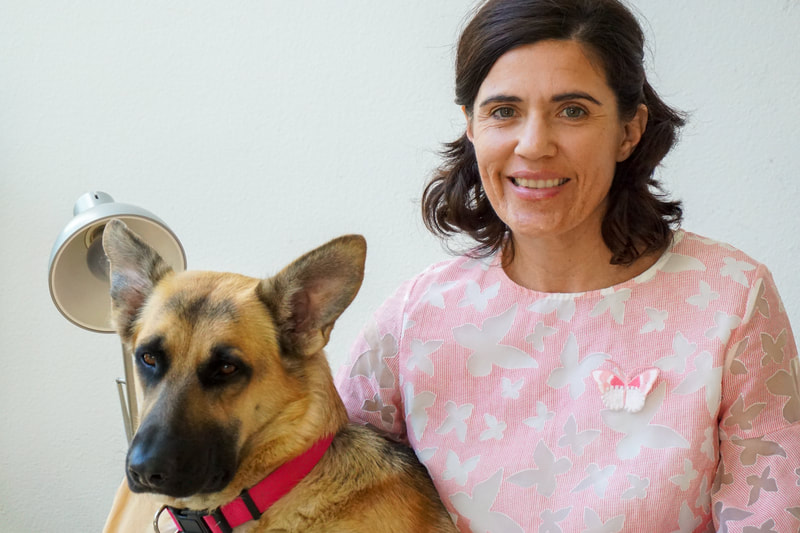
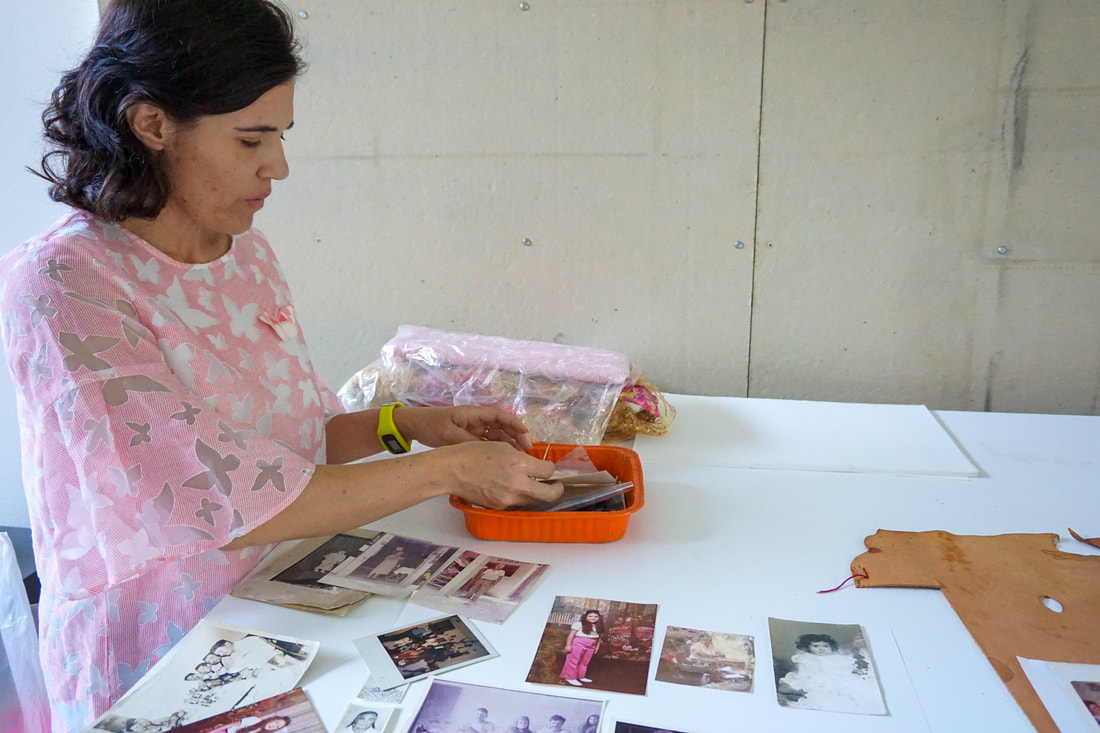
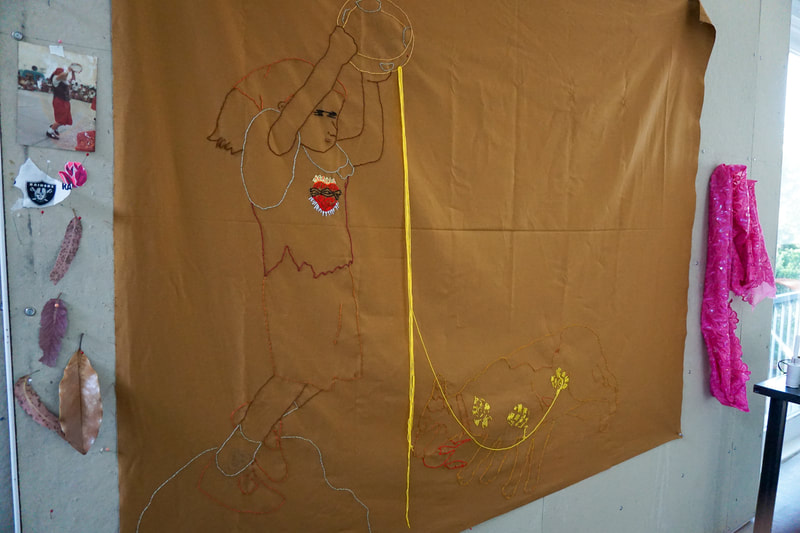
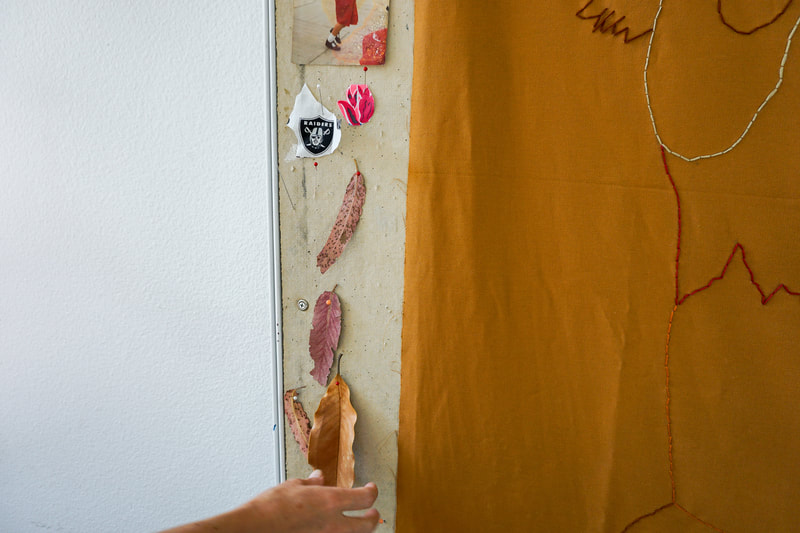
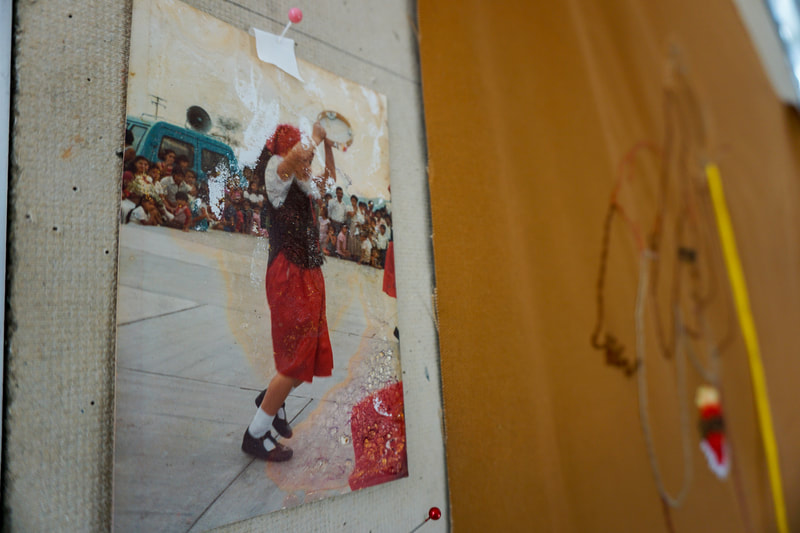
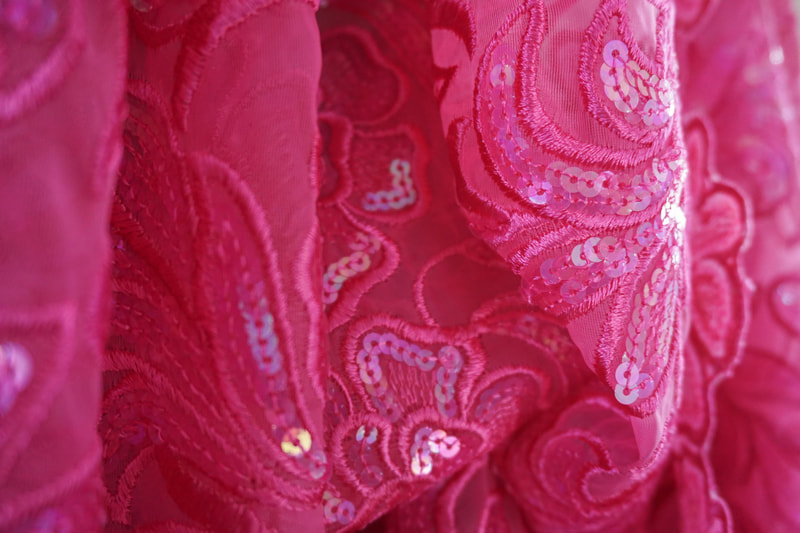
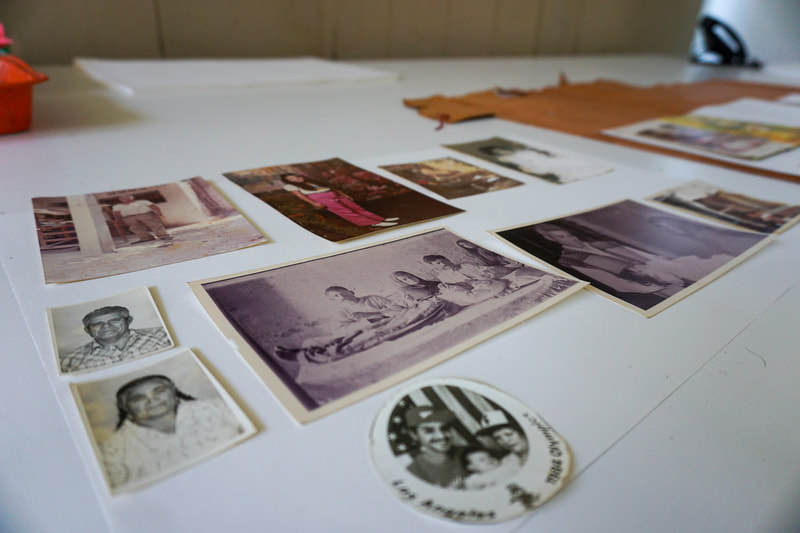

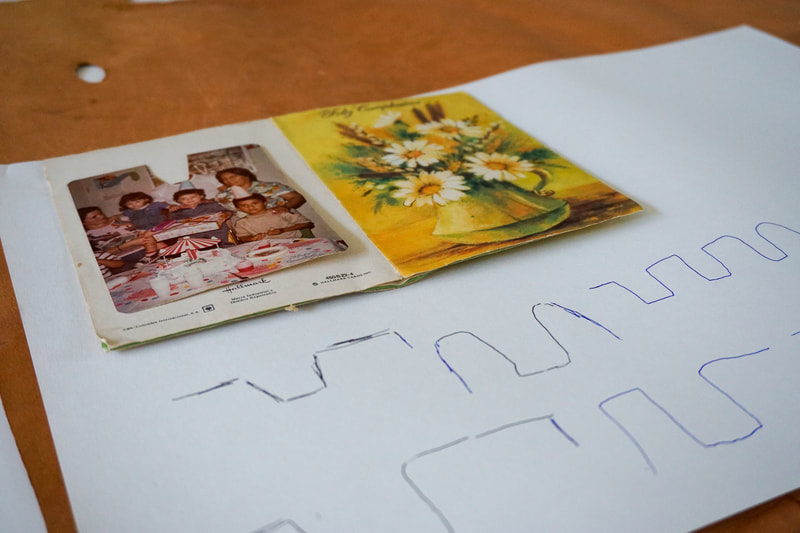
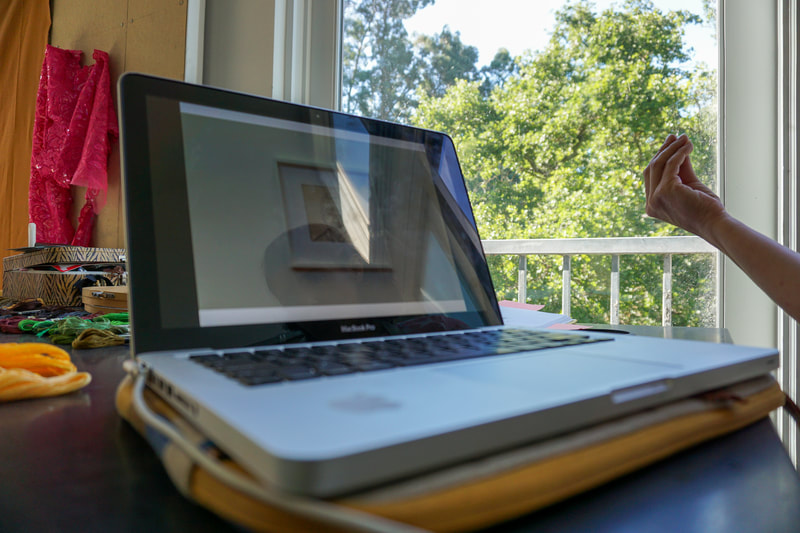
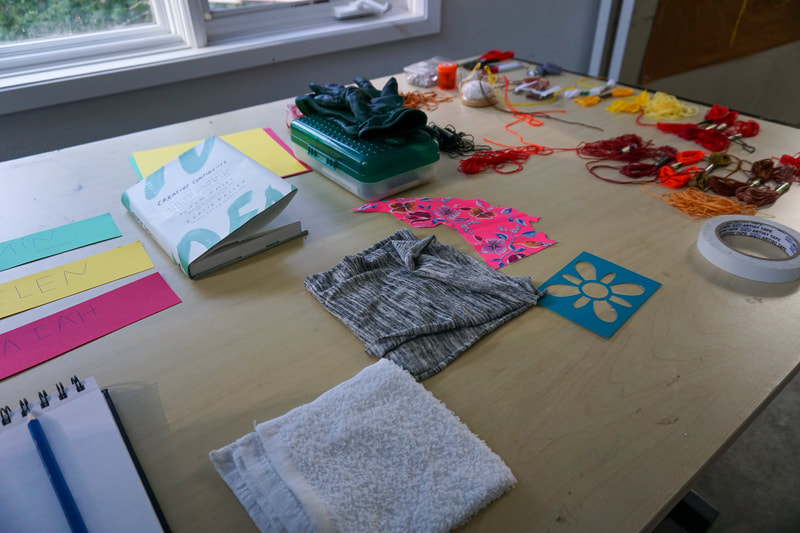
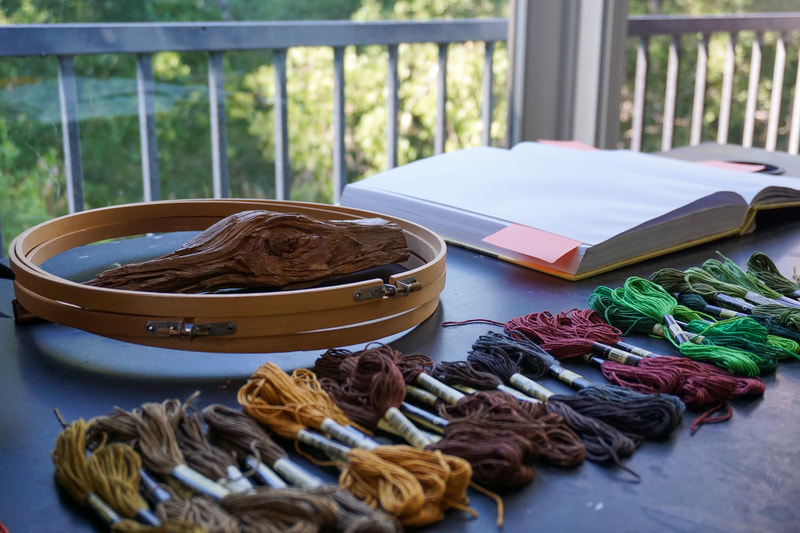

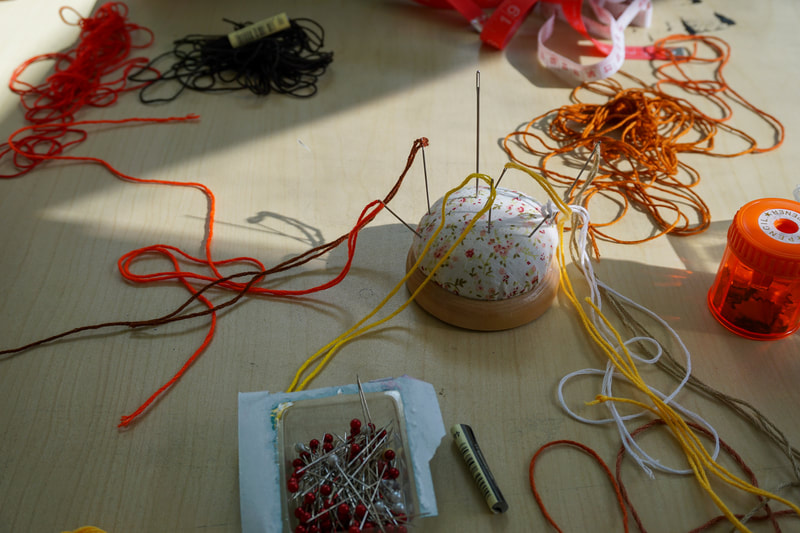
This. Second week.
Adjusting.
Body arches, stumbles, memory fades like sweat, practice. Practice.
Practice letters. Practice drawing. Practice patterns. Practice lines. Practice patience.
This is not easy for a body used to resistance
Used to running from police
Hills are tricky
I stumble tongue twisted
Gasp for air
Call the dog’s name
I must remember
Yet.
Forget
Faith makes me believe
Without looking
I come upon—a tiny black fuzz ball
It doesn’t move. I know by the chalkout-blood map
The layout of her body
That she is gone—to squirrel heaven
I stop myself.
Dog wants to eat it. Smells familiar trauma.
This. Second week.
I built an alter/altar out of sticks and found leaves.
I mark on the spot the place where I found her.
I say a prayer.
To remind myself. Perhaps. Selfishly. I am human.
Lucas Artists Fellow – Literary Arts, Non-Fiction U.S.A.
THIS WEEK IN MY STUDIO (June 11, 2019)
Non-Fiction Writer Donna Johnson
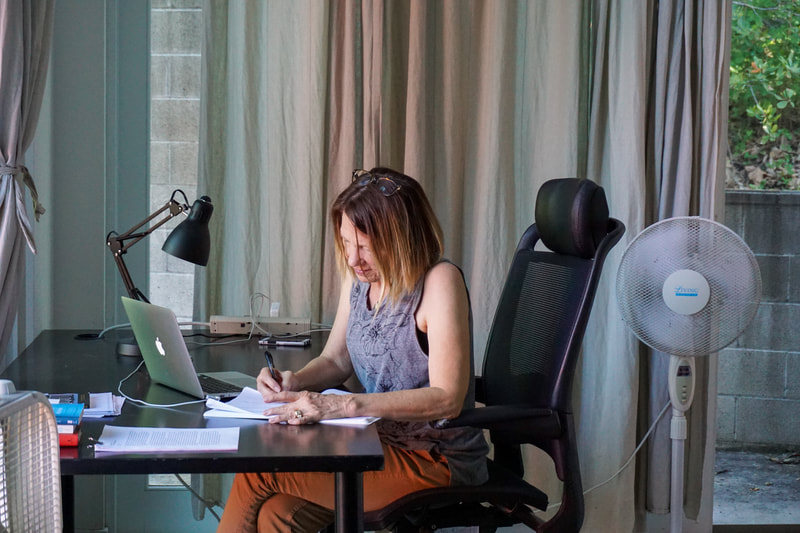


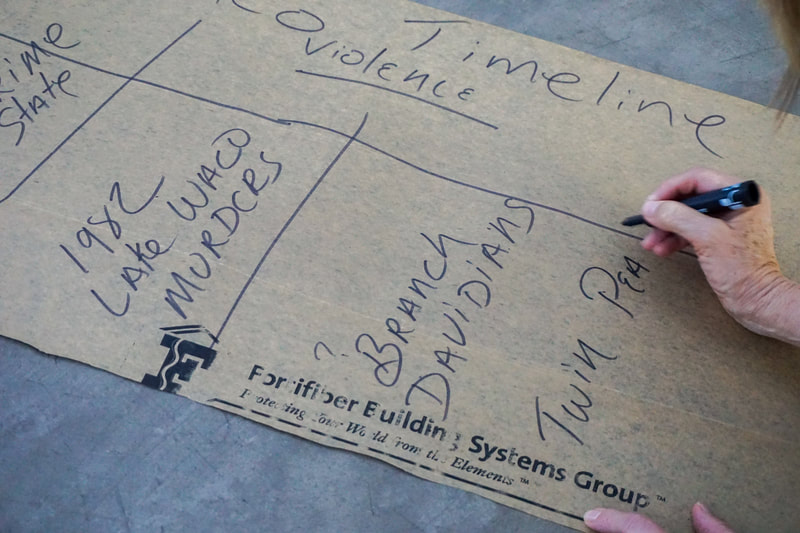
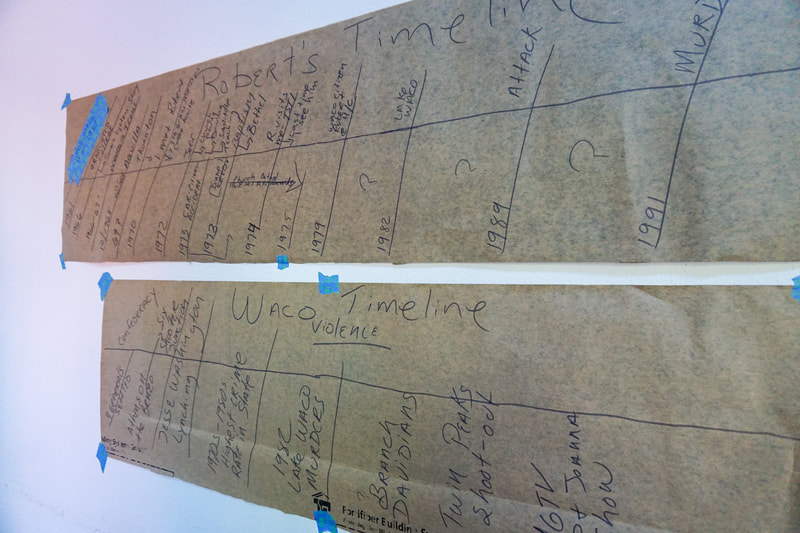
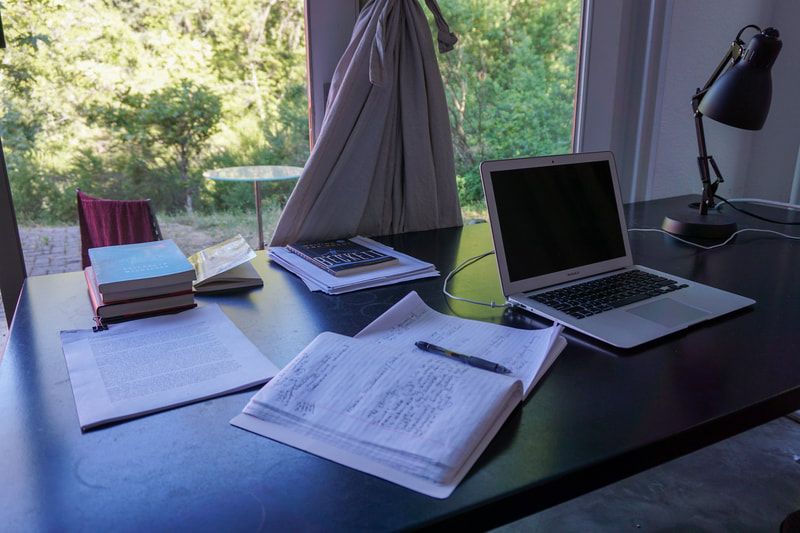
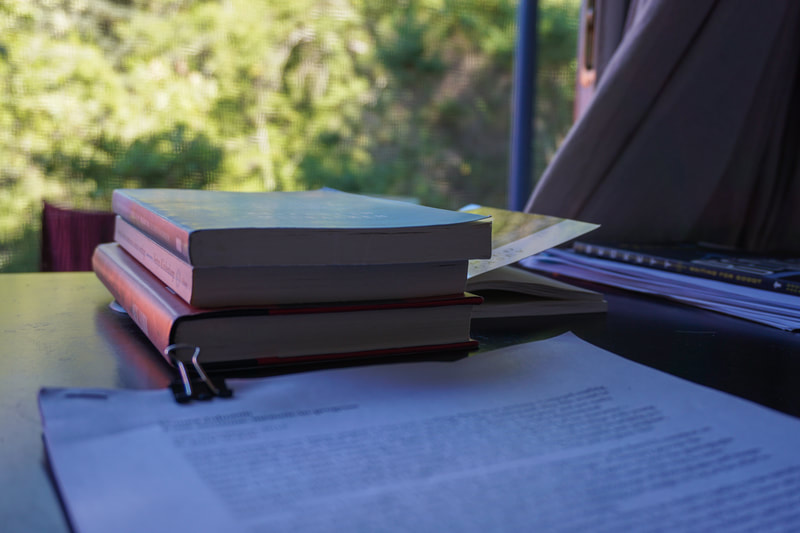
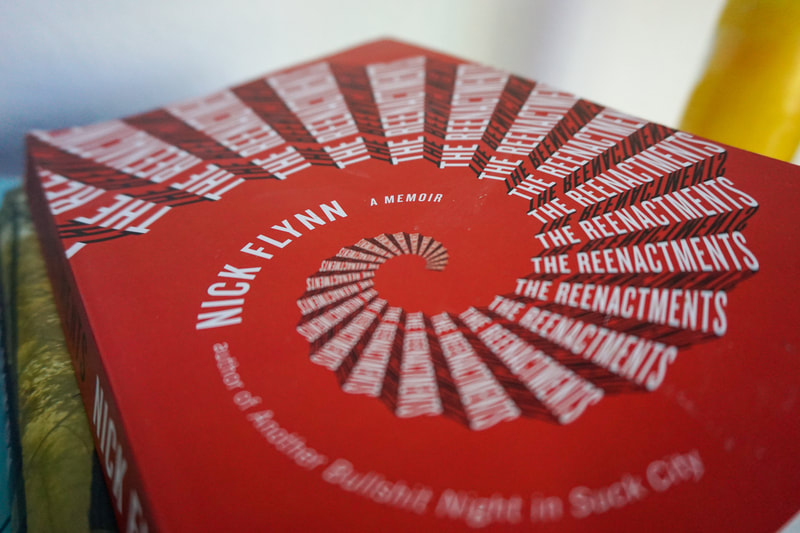
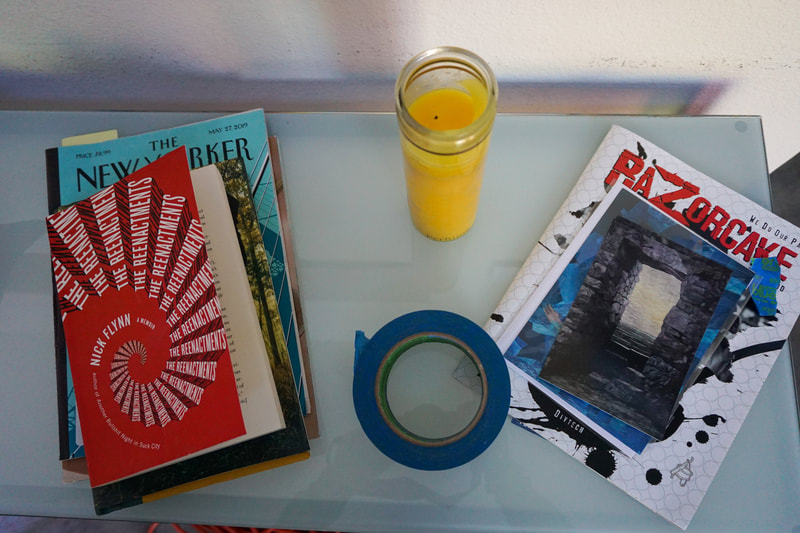

It’s hot in Studio 31 this week. I sit here with the curtains drawn against the sun, sinking deeper into the basement of my thoughts. The word basement conjures a delicious, dark coolness. I try not to dwell on that. I think instead of the Jungian inspired notion that in dream interpretation, the attic of a house corresponds with heightened awareness, while the basement signifies the unconscious. I’m engaged in a kind of waking dream here at my desk. That’s what memory is, isn’t it?
As a writer obsessed with the past, I know the unconscious holds the images, shadows and dreams that connect memory with meaning. Why do I remember this? Why do I remember it this way? This week, I’m sifting through the life of a friend who died just before the Internet age. News reports, high school annuals, and interviews provide glimpses into the who, what, where and when of him. The why of who he was is harder. It requires patience and a kind of intense listening. I wait for the basement tapes to begin playing. I wonder if the music will come before the heat wave breaks.
Read more about Donna’s work here.
Lucas Artists Fellow – Visual Arts U.S.A.
THIS WEEK IN MY STUDIO (June 11, 2019)
Visual Artists Jonas Becker

I am staying in studio 41, which is my favorite studio because it allows me to live inside my work. As soon as I wake up and walk downstairs I am inside my working studio space. This kind of time is invaluable. It allows me to live with my photographs and other artworks, see them when I am sleepy-eyed, see them as they change with the day’s light. In this way, I get to know the work intimately and have a different kind of clarity about my projects’ formal and conceptual directions.
Currently, the work on the wall is a series of photographs titled “Better or Equal Use.” The work is a series of photographs made from coal dust that depict former mining sites redeveloped under the Surface-Mining Control and Reclamation Act of 1977 – so far including detention facilities, strip malls, and golf courses. This congressional act mandates that after mining is complete, companies reinstate the façade of the mountain or redevelop the site for “equal or better public or economic use,” directly weighing the value of a mountain and surrounding communities against other industrial and commercial functions. One of the surprises I had working with the coal is how good the prints are – how seamlessly they pass as more traditional black and white or alternative process images. So in the studio, I am thinking through visual affect – how obvious the coal process needs to be – and how much information I need to give viewers so they can have access to the content of the works.
I began my stay with an intensive work week with my collaborator and colleague from the School of the Art Institute of Chicago, Delinda Collier. We outlined the book we are writing together on extraction. We are using our experiences and backgrounds, mine primarily in the United States and hers in Africa, to draw out the complex relationships of class, race, and aesthetics in extraction-based economies.
I’ve also been working on my performance work “New Normal.” The phrase frames a process of coping with and normalizing mass cultural trauma, whether political, environmental, or otherwise. We respond to the shifting baseline of our current moment through endurance and illusion, struggle and support. Some radical bodies resist normalization, and for others, the new normal is nothing new. My performance explores the way the body mediates this process, testing our limits, adjusting, and readjusting. Here at Montalvo, I’ve been editing the video documentation of the performance at the Museum of Contemporary Art, Chicago, and conceptualizing an expansion of the work for an upcoming exhibition.
One of the highlights of my time here was meeting Preston, who is a playwright also born and raised in the Appalachian region of the United States – he and I have talked about future collaborations. I’ve been working on site-specific interventions and performances on former mining sites in West Virginia and Kentucky for a few years, and I am eager to see how we could work together on one of these powerful events.
When we all sat around the table last Saturday reflecting on our day, the two things that came to mind seem an apt sum of my time here. I said, “today I went on a hike and jumped in a river, and also I’ve conceived of my last three bodies of work here at Montalvo, and those things seem related.”
Read more about Jonas’ work here.
Lucas Artists Fellow – Poetry U.S.A.
THIS WEEK IN MY STUDIO (May 22, 2019)
Poet Willie Perdomo
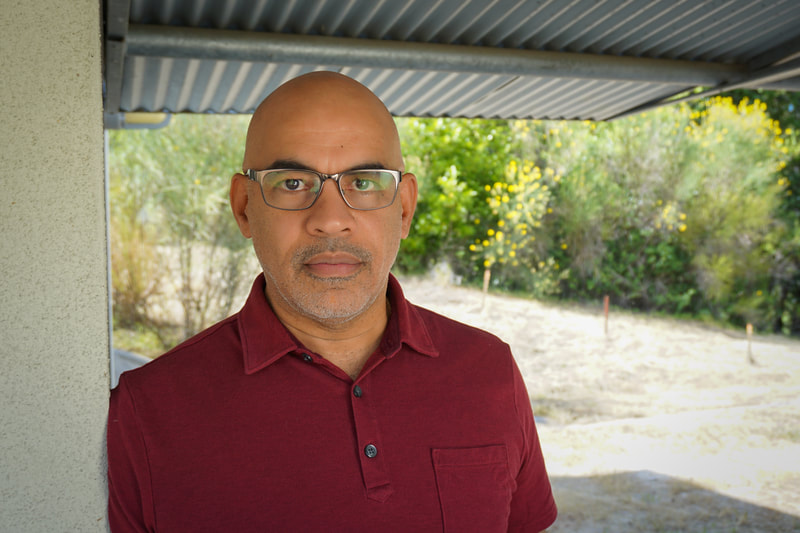
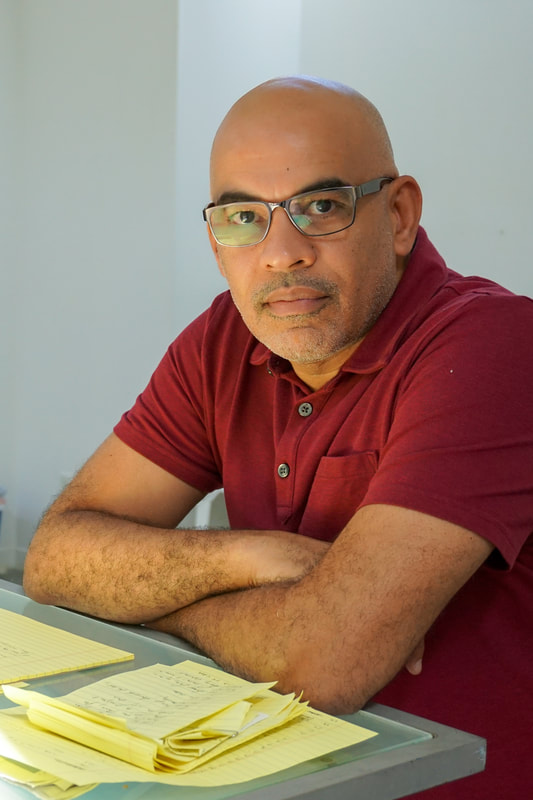
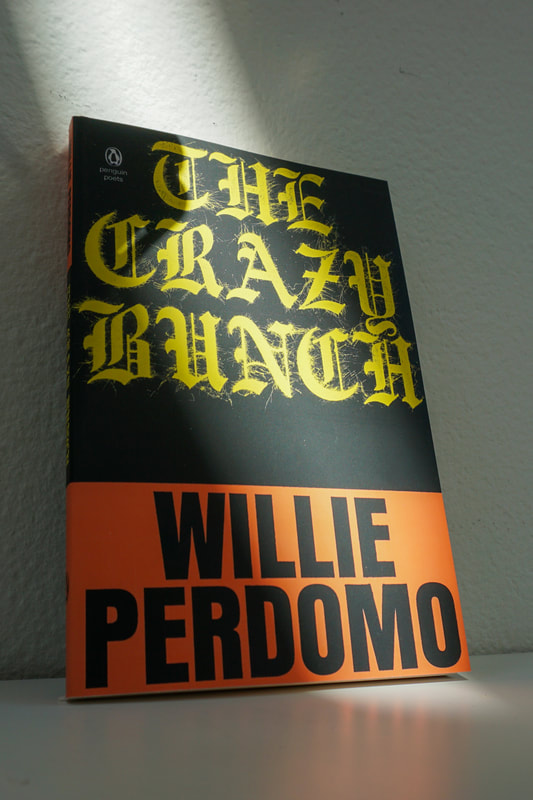
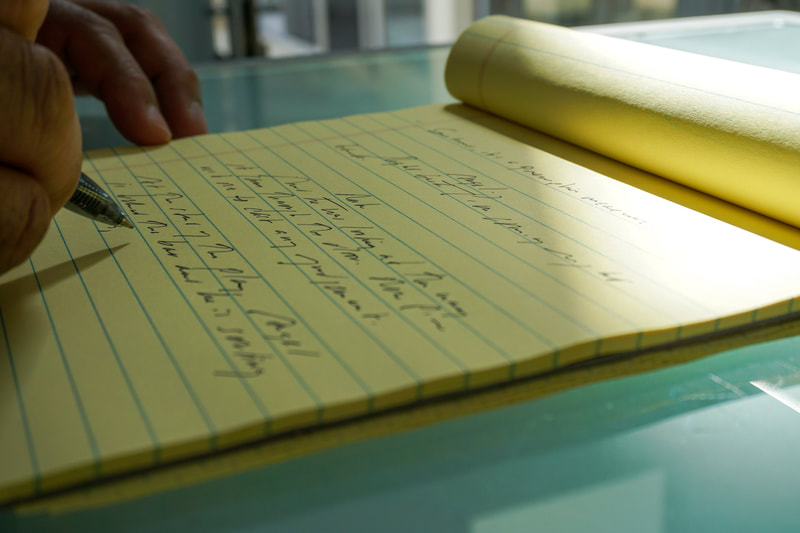
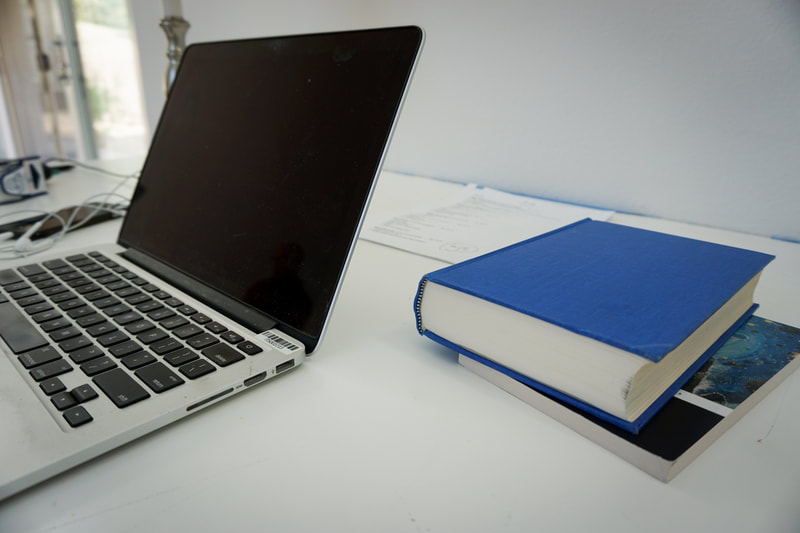
I have seven nights left in Studio 61 and the goal is to focus on one project with monastic fervor. I’ve succeeded in pilfering my 2018-2019 notebooks and have collected a number of gems in the process. Having just had a book published, Studio 61 allowed me to see and hear what’s next for me and it looks like I’m going to spend the next seven days working on a play that is part of what I’m now calling the “THE ANGEL PLAYS.” Also, I had a battle with army ants today. The army’s organization and tactical skill were impressive. I felt like I was in a Lorca poem. Now I’m just waiting for the ghosts.
Read more about Willie’s work here.
Guest Artist Bangladesh
THIS WEEK IN MY STUDIO (May 19, 2019)
Visual and Performance Artist Yasmin Jahan Nupur
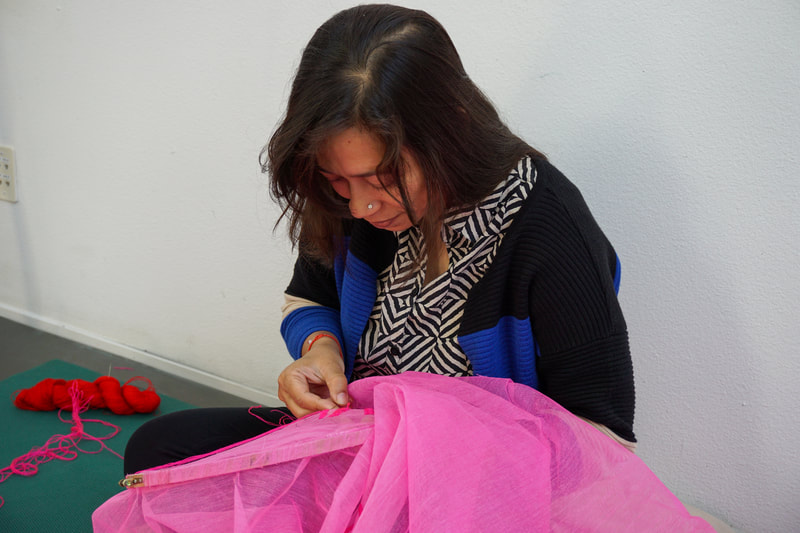
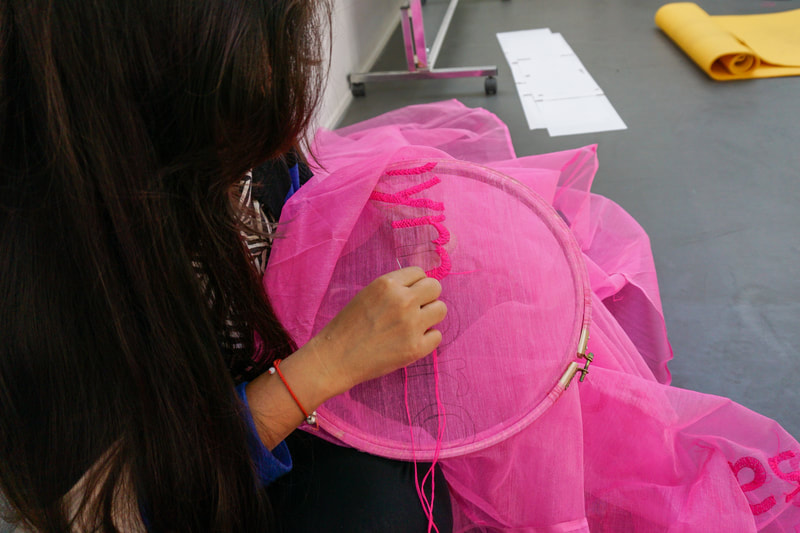
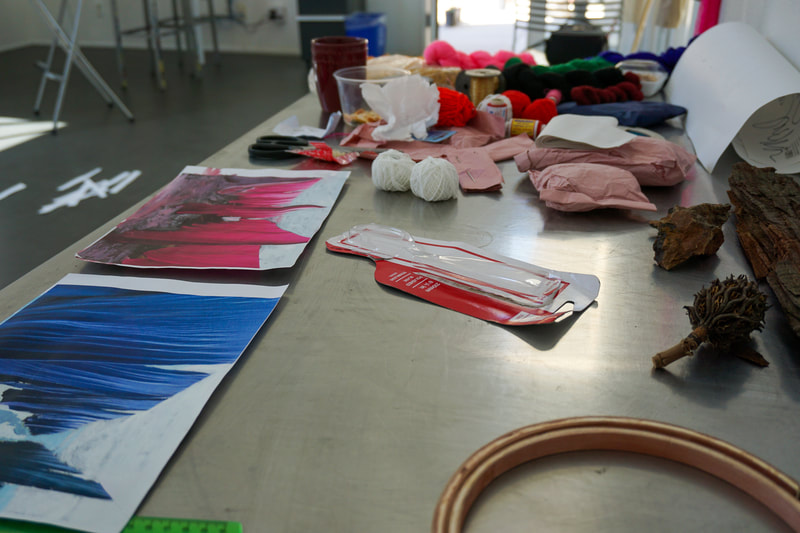
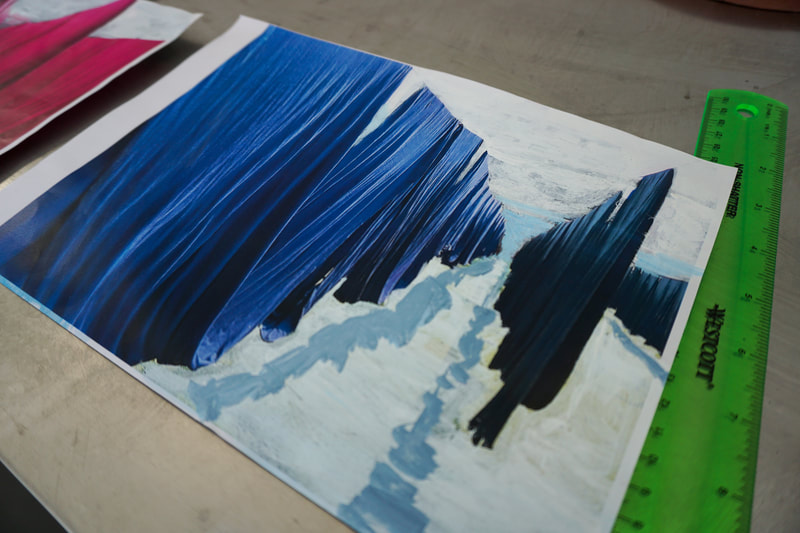
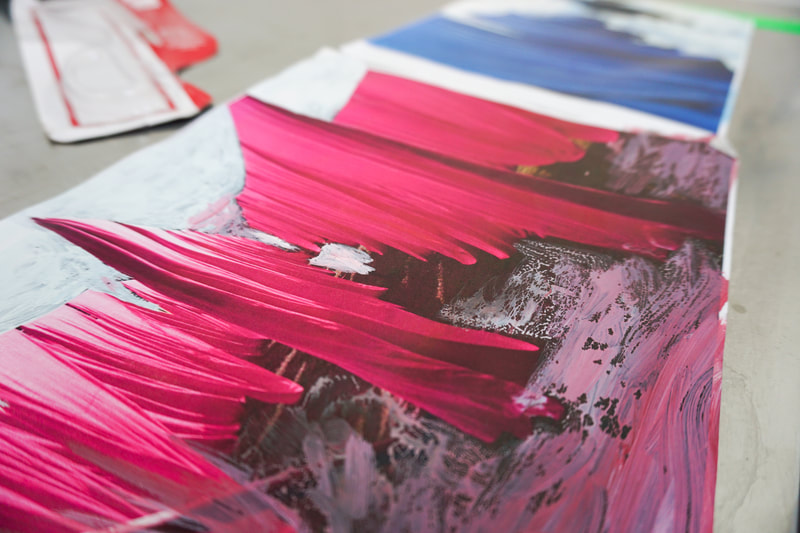

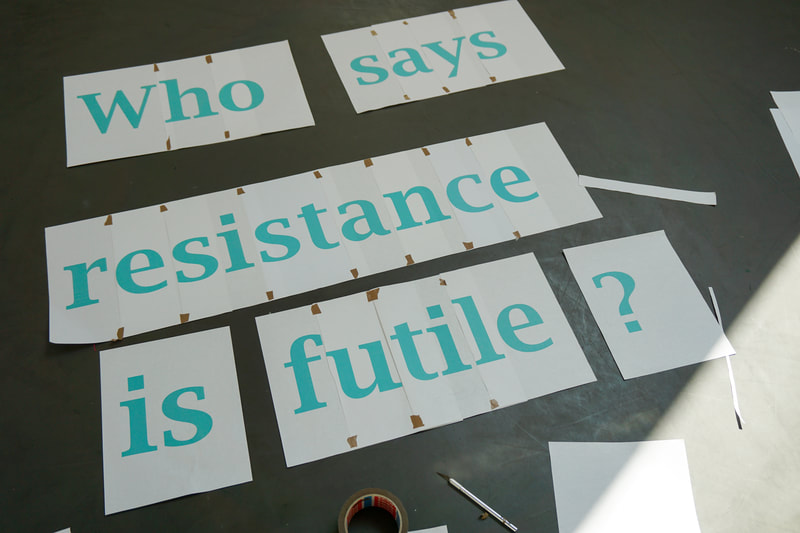
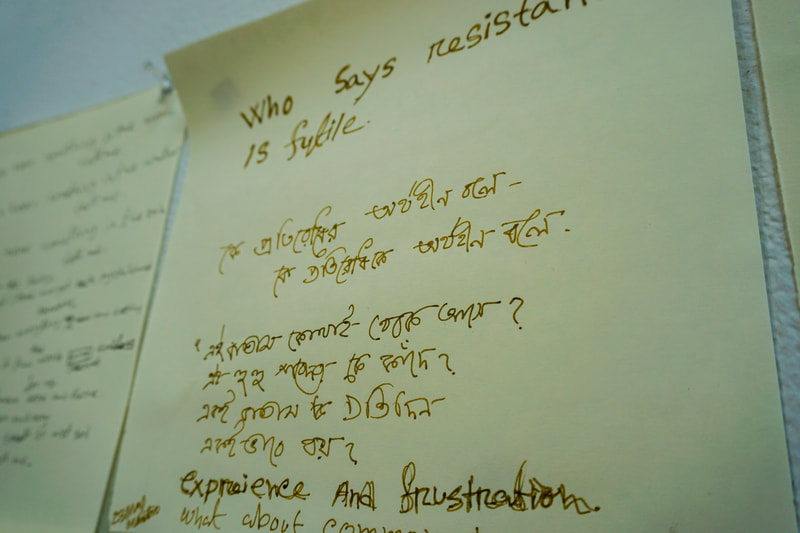
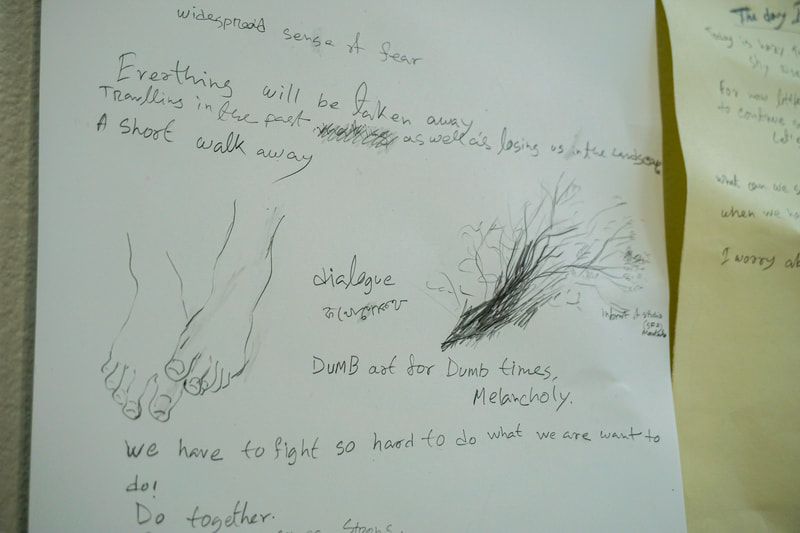
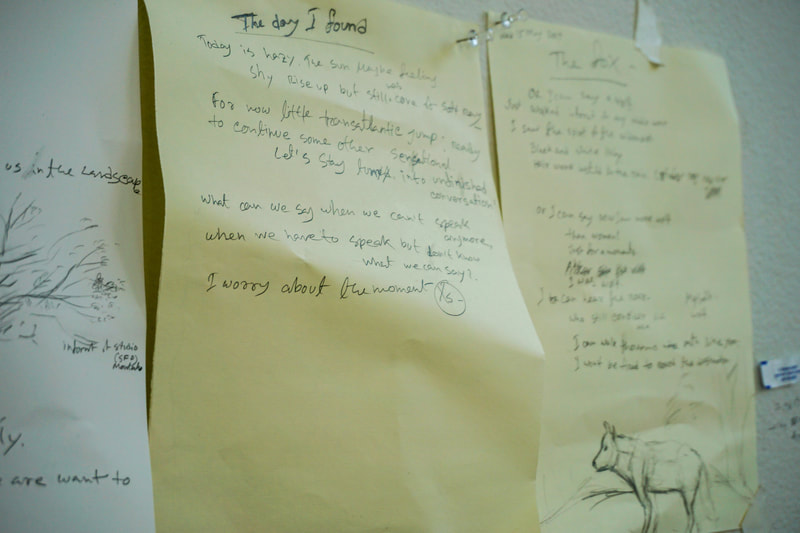
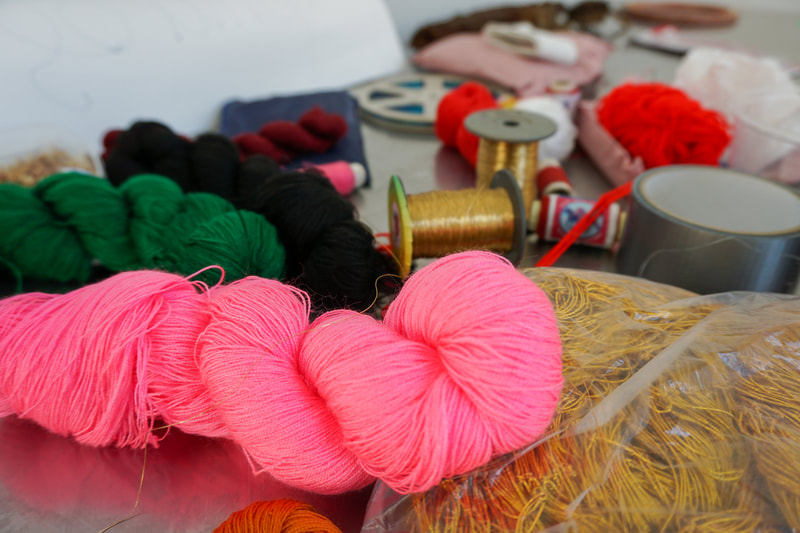
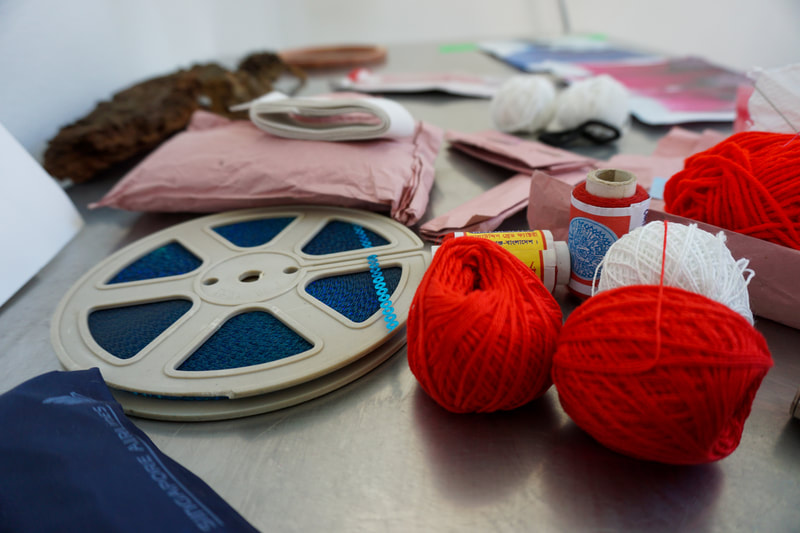
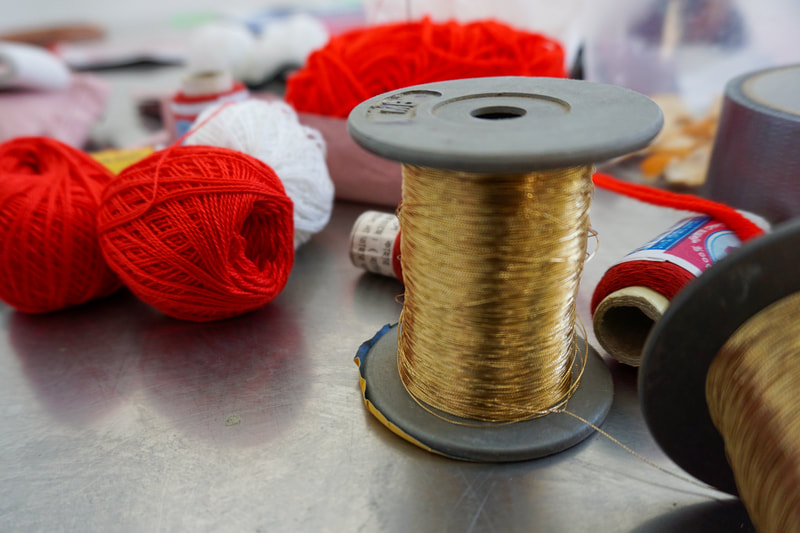
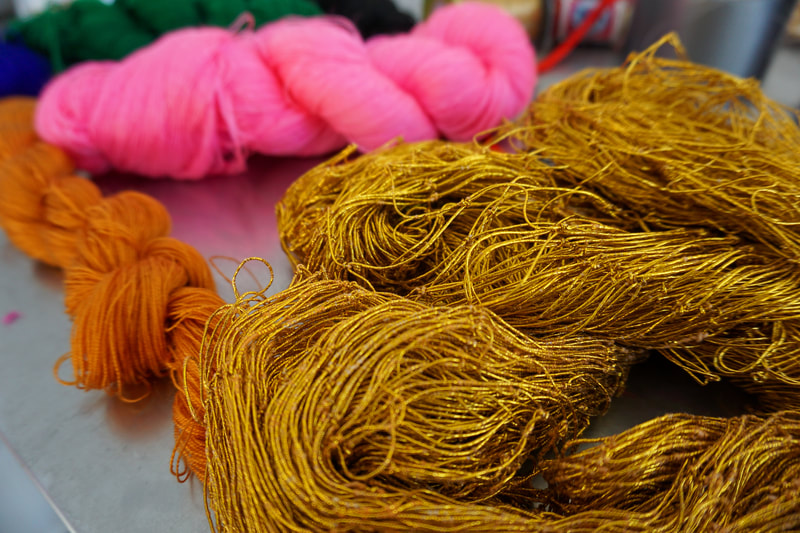
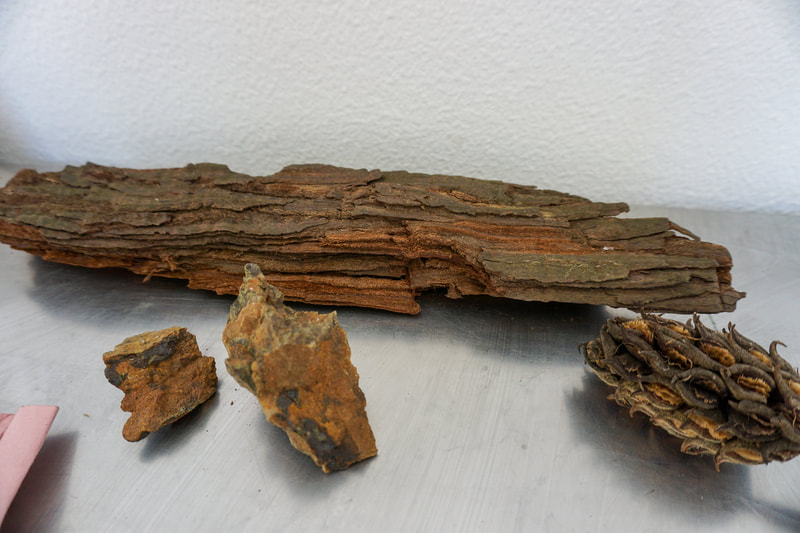
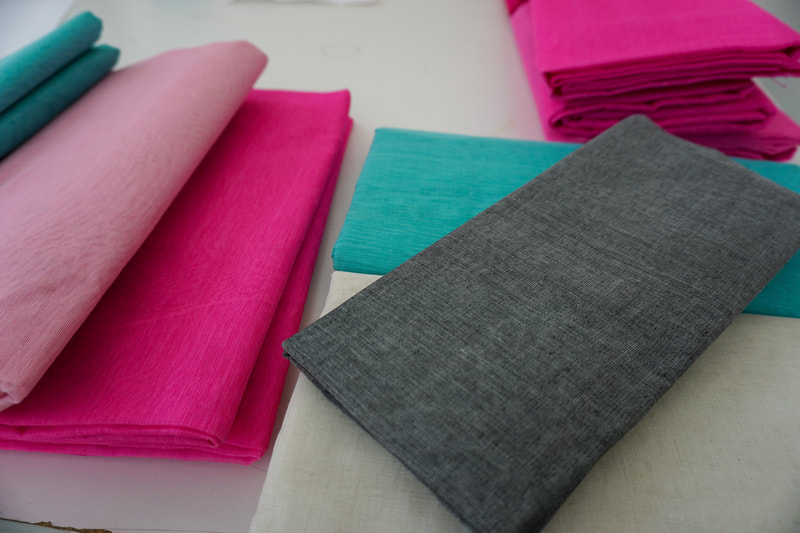
This week in my studio, I’m trying to deal with movement, energy, and minimalism. This is a new environment for me. I am totally inspired by nature and landscapes and I’m enjoying quietness/silence. I’ve been setting up and organizing materials in my studio: reading, writing, and enjoying the rain.
Read more about Yasmin’s work here.
Lucas Artists Fellow – Literary Arts, Playwrighting U.S.A.
THIS WEEK IN MY STUDIO (May 17, 2019)
Playwright Preston Lane
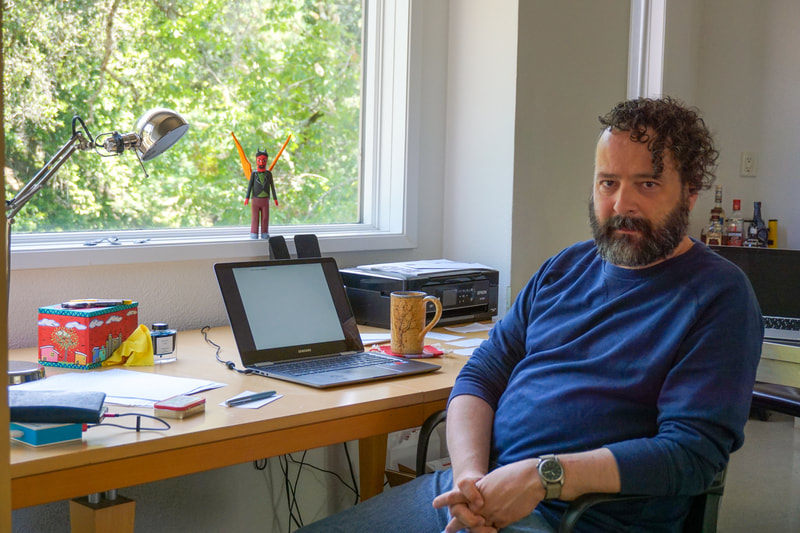
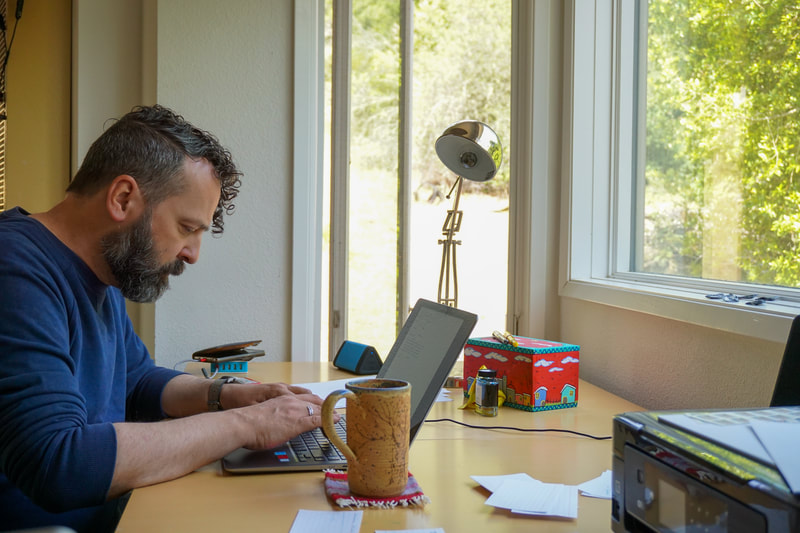
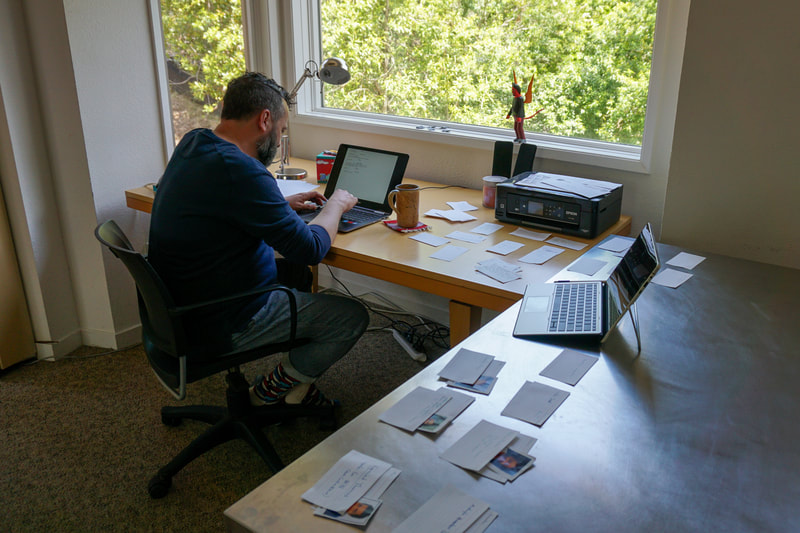
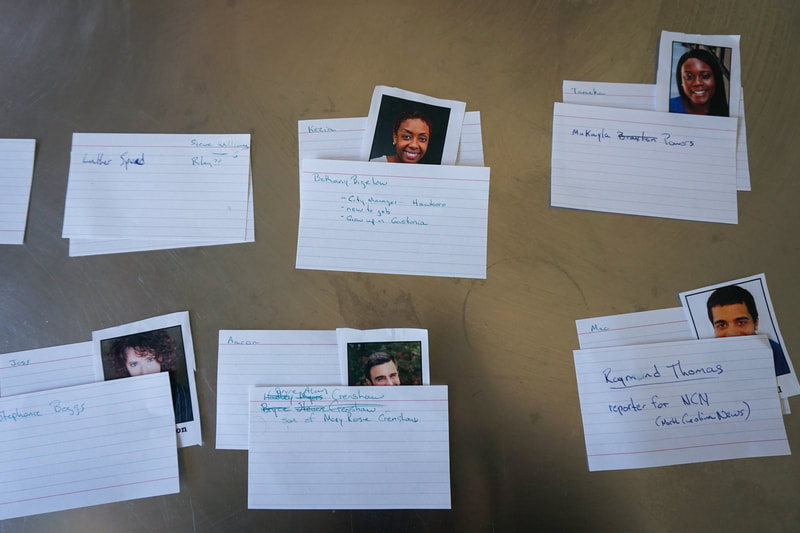

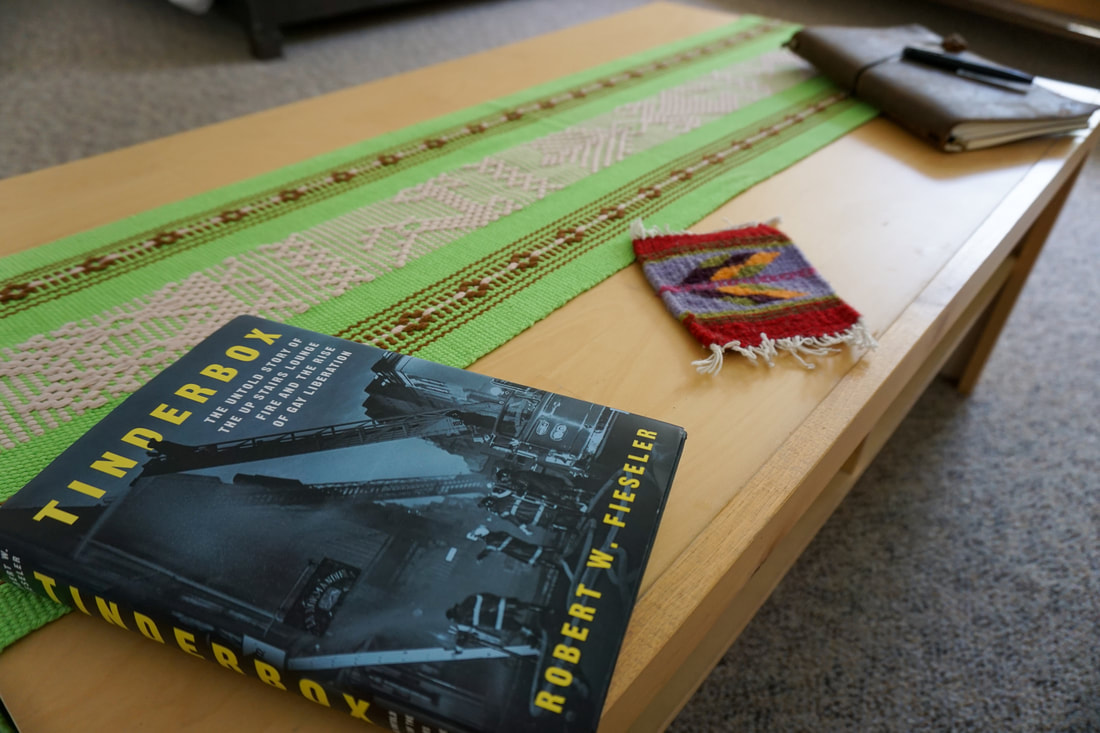
At the end of my first week back at Montalvo after nearly a year, I’m amazed again at how the sudden and delirious shift of time that happens here clears away so many obstacles to creating. With transformational change going on with my company back in North Carolina, I’m having to give up a bit of my writing time to the needs of my theater, but when I’ve answered all the emails and dealt with the phone calls, I shift right into the flow of Montalvo.
I’m continuing writing Two Wolves and a Lamb, a project I first started on my last visit. I discarded it back then but have since returned to it. The play completes a trilogy of plays about power set in the fictional NC town of Hawboro. I’m experimenting with forms as I write myself as a character, explore shifting styles of narrative, mix live theater with film and craft sections of audience participation and co-authorship. I’m also digging deep into books about local politics, especially in the south.
This visit to Montalvo, I’m trying to understand how the time and space of Montalvo unleash a kind of concentrated creativity. I’m trying to parse my ways of working here to better understand the process, create a ritual of beginning, and embrace a simplicity of dedicated work. This election play is an ugly world of greed and deception, but when I look up from the words, I see a perfect view of trees and sky and, on occasion, a young spring deer with furry new antlers who comes to feed outside my window, reminding me to walk the trails of this fantastic place and breathe deeply.
Lucas Artists Fellow – Literary Arts, Fiction U.S.A.
THIS WEEK IN MY STUDIO (May 16, 2019)
Fiction Writer Allegra Hyde
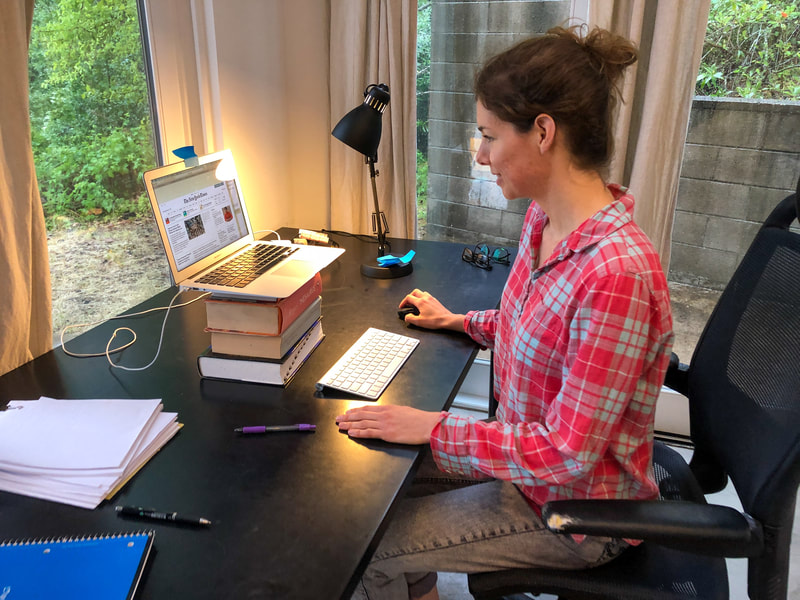
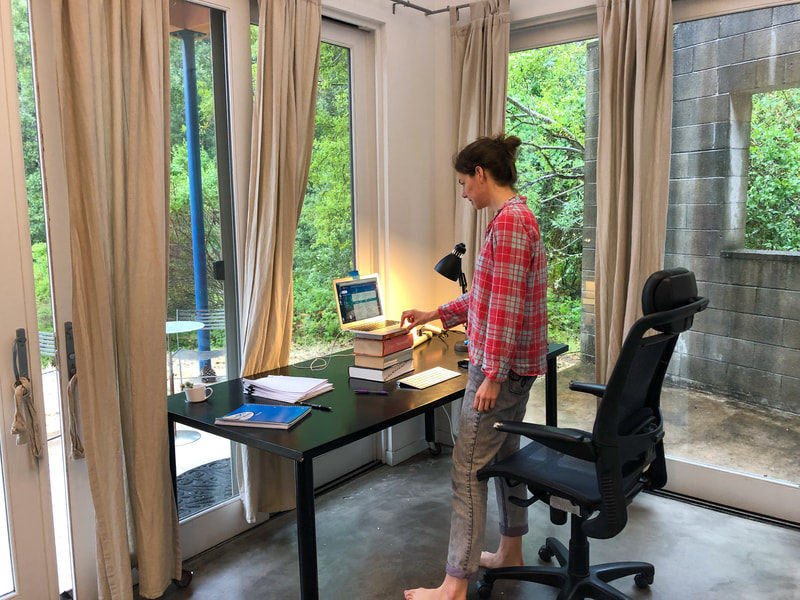
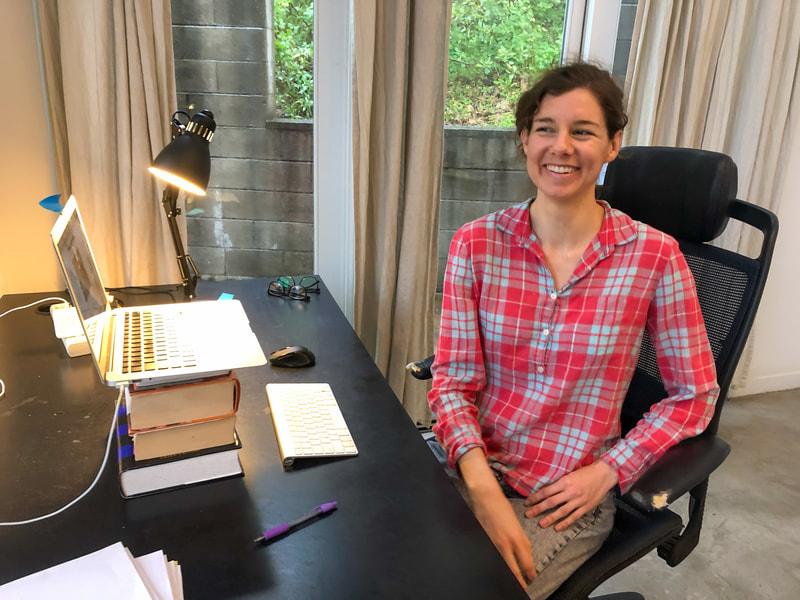
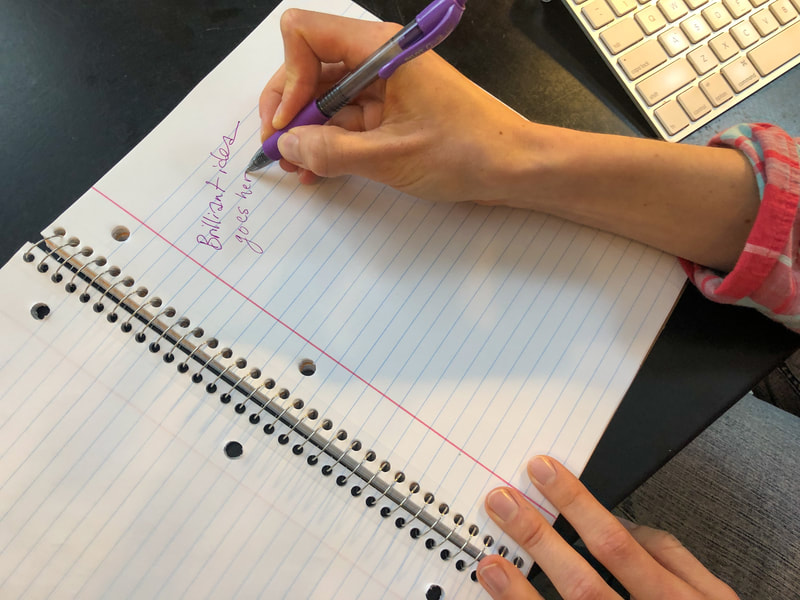

Endings, they’re on my mind. This week in my studio, I’m working on finishing my first novel—a project that has been in progress for a number of years. I’m contemplating the novel’s “done-ness.” I’m thinking about what it means to let go of the myriad of directions a fictional premise can take and commit to what, in its final form, the novel will be, say, do.
Other endings include my imminent departure later this summer from Houston—my home for the past few years— as well as the conclusion of my residency time at Montalvo. Endings, though, are really transitions in disguise. In terms of writing, living, residency-ing, I’m excited for what’s ahead.
Read more about Allegra’s work here.
Lucas Artists Fellow – Literary Arts, Non-Fiction U.S.A.
THIS WEEK IN MY STUDIO (May 14, 2019)
Novelist Alix Christie

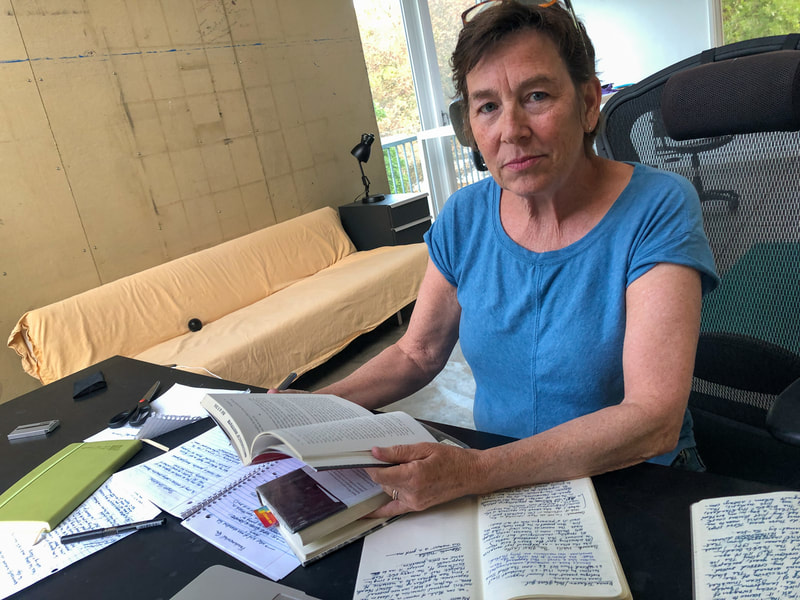
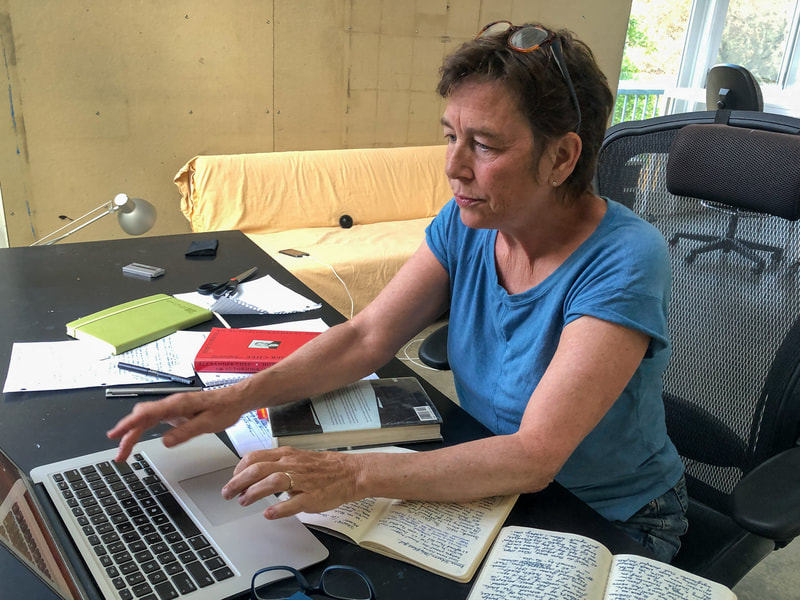
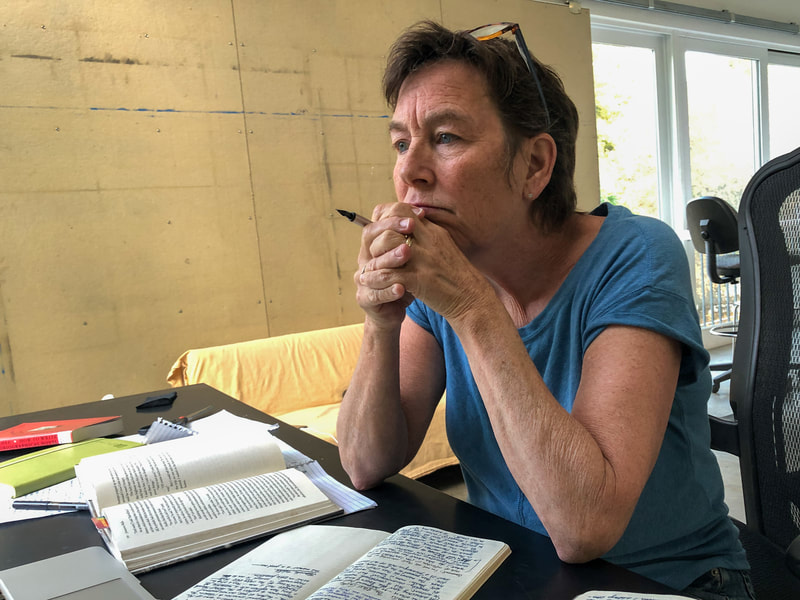
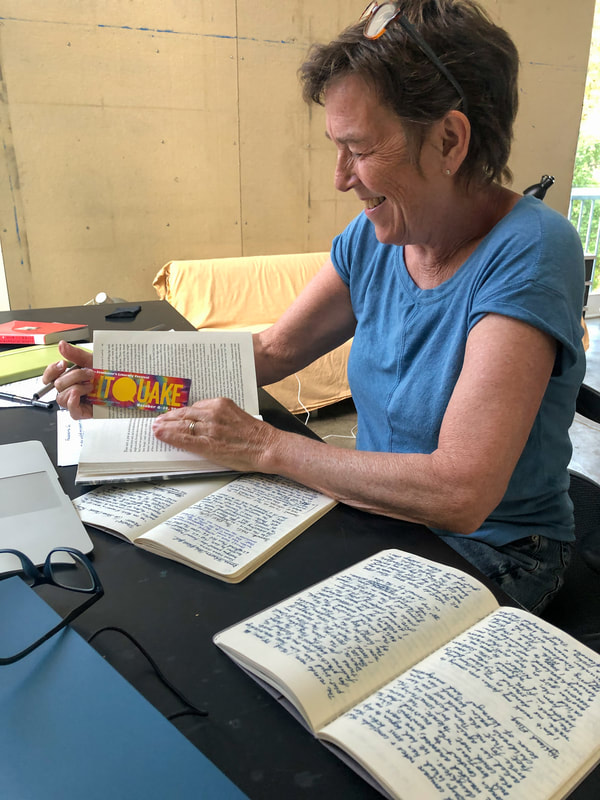
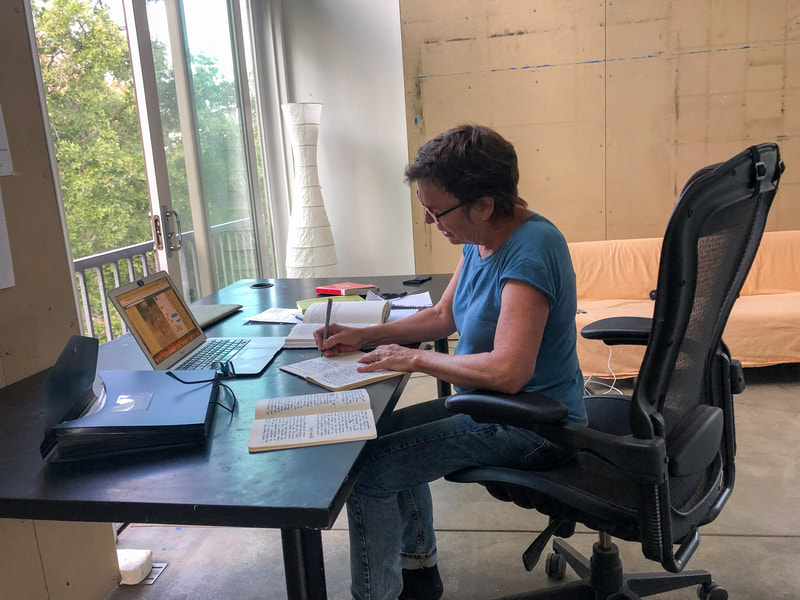
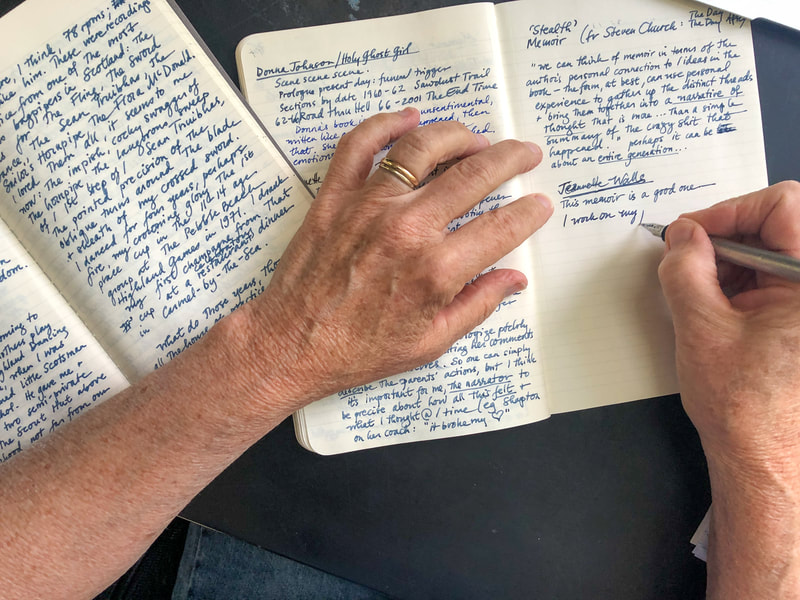
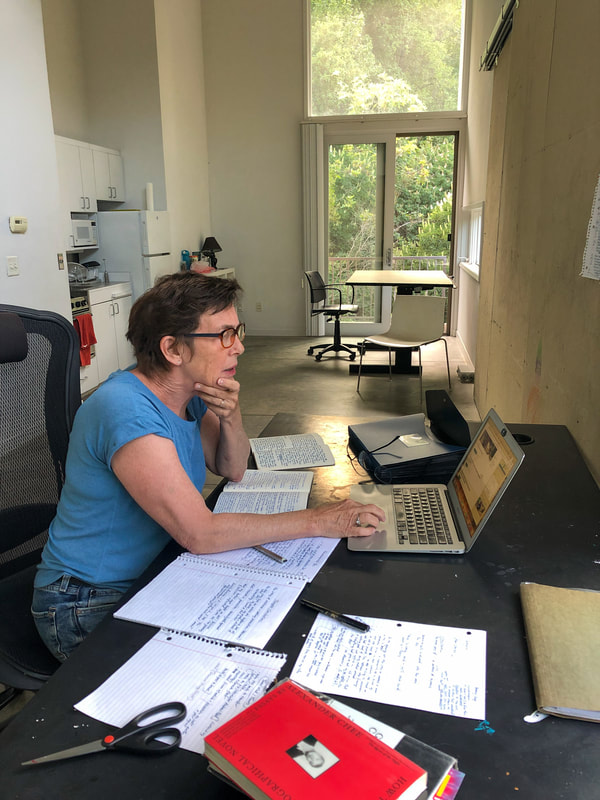
Studio 41 is for visual artists so that’s what I, a writer, tried to keep in mind as I began assembling memories and ideas for a memoir I am just starting here at Montalvo. Pushpins and papers appeared on the great moveable walls. More helpfully, shapes began to float in my mind. Circles, waves, spirals, fractals, and more. I kept three notebooks open—two analogue, one digital, while reading three different memoirs and two books on shape and structure in narrative and memoir. I found that the process of reading other people’s memories made my own bubble up like a veritable fountain. At the same time, I tracked possible ways of organizing this mass. When it all got a bit much I just looked out one of the plate-glass windows at the live oaks and eucalyptus, the sea of green shrubs, or put on my sneakers and hiked up to the lookout above the South Bay and gave thanks for this beautiful place.
Read more about Alix’s work here.
Lucas Artists Fellow – Music & Composition Belgium
THIS WEEK IN MY STUDIO (May 9, 2019)
Composer & Musician Aurelie Lierman
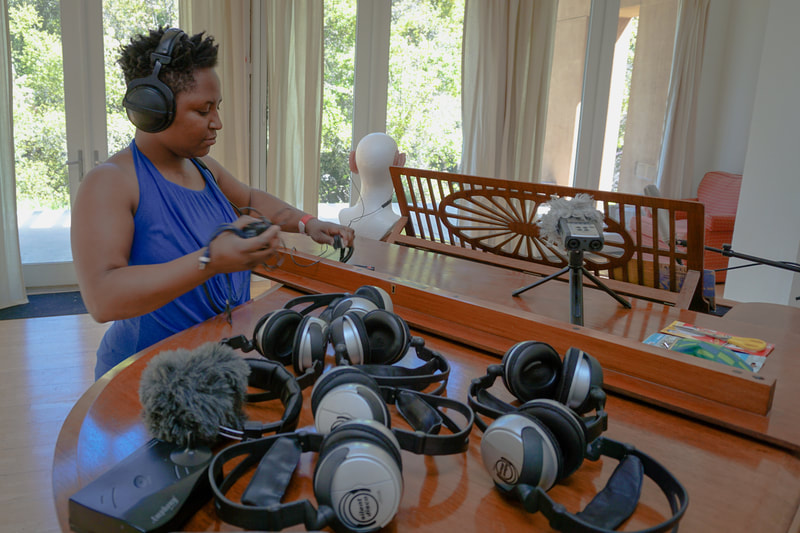
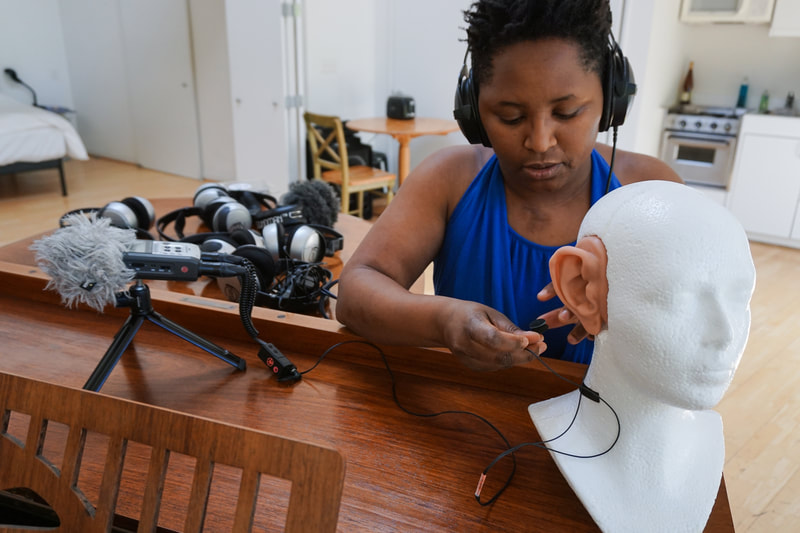
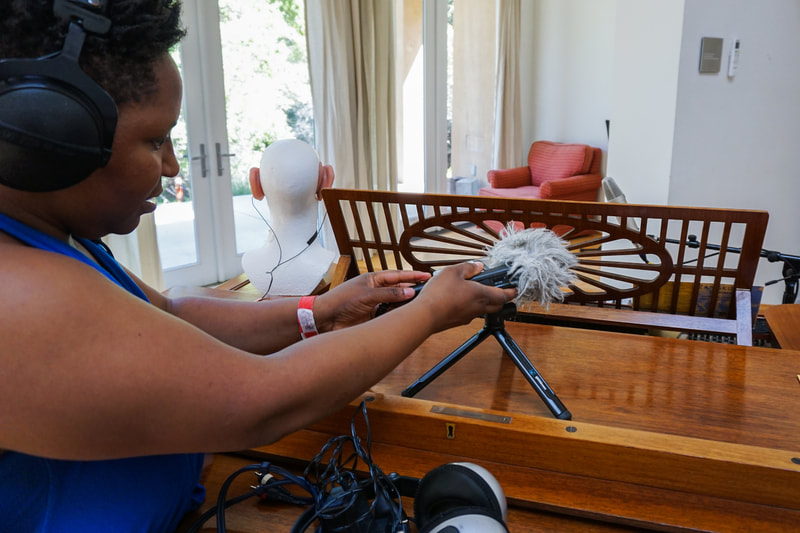
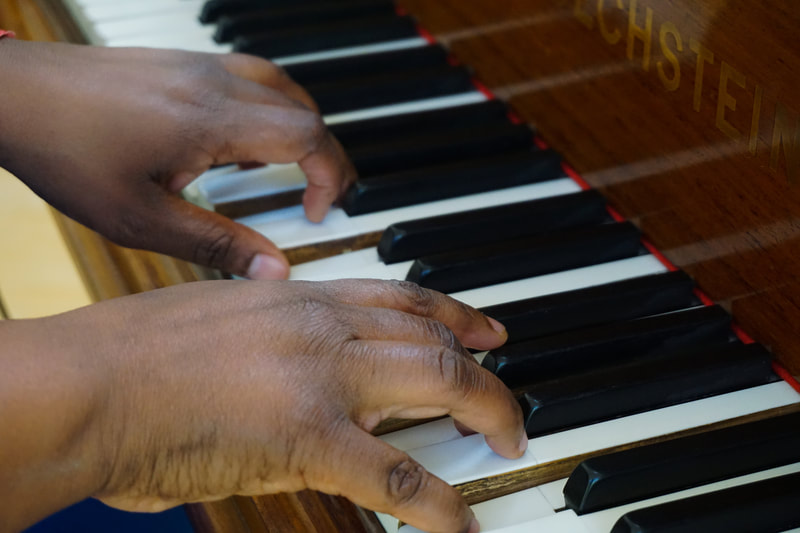
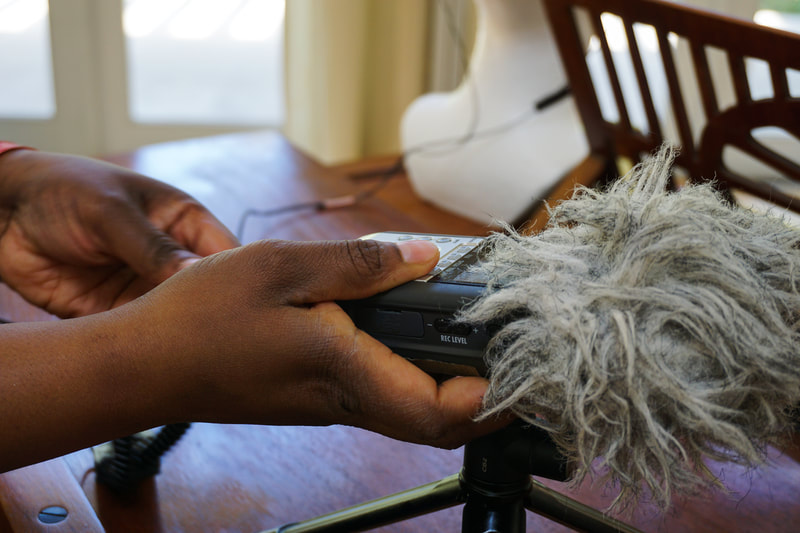
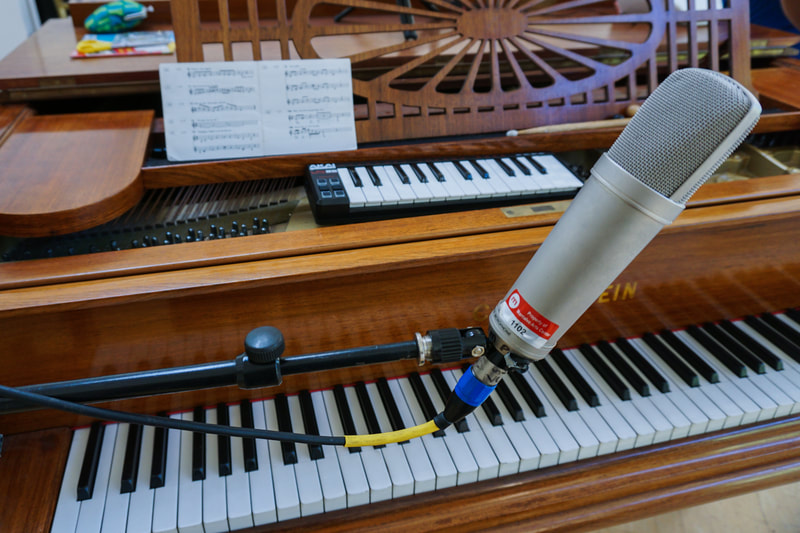
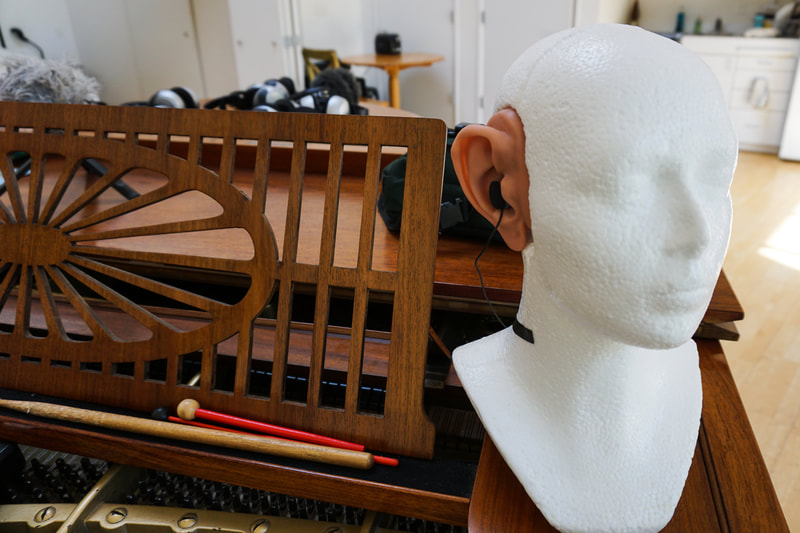
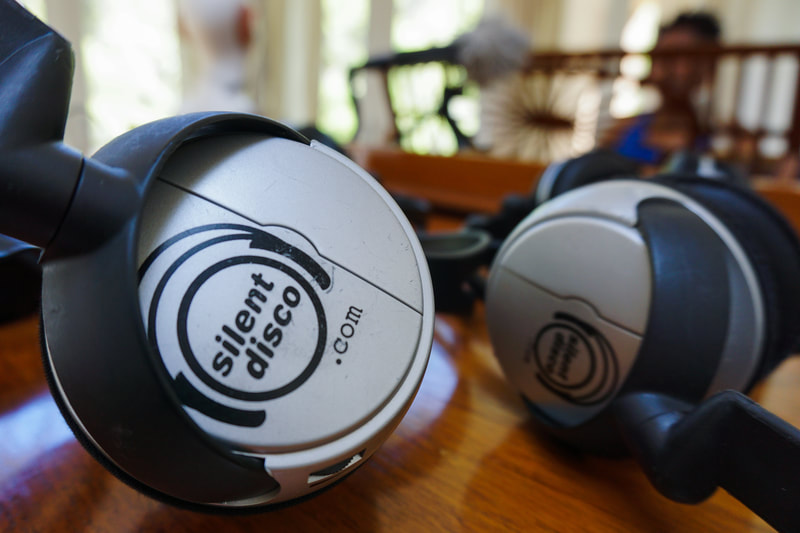

Shortly before arriving at Montalvo I premiered Sogokuru, a new performance dedicated to my grandfather Kanyoni Ladislas, who lives on the Karisimbi volcano in Rwanda. He just turned 109 and is one of the last living Rwandan traditional hunters, beekeepers and doctors who has seen the pre-colonial country of his childhood pass through two colonization events (German and Belgian), the 1950s revolution for independence, the genocide and post-war massacres of the 90s, and the country’s present-day status quo. You can find a bit more about his story here on my website. And here in this recent interview about the making of Sogokuru at The Lake Radio.
Sogokuru (Kinyarwanda for grandfather) became a performative installation for four moving musicians, singing and speaking, playing with foley objects, a selection of Western and African instruments and field recordings from my grandfather’s village. Sogokuru is conceived for live 3D audio (binaural sound) to give the audience an immersive experience. And I’m now sketching out a full cycle of live 3D audio performances: all will be part of an ongoing research into (modern) forms of animism, and how animistic world views have managed to survive in spite of severe oppression through heavy colonization. So the full cycle will be a focus on the oral histories of my ancestral land—the Virunga and its unique mountain rain forests—as well as a tribute to the incredible resilience and wisdom of my grandfather.
The residency at Montalvo Arts Center also gives me extra time to better prepare my new visits to Rwanda in the coming months: where I will continue archiving the oral history of the Virunga Mountains (for AFRICA ON TAPE) as well as continue the ongoing (and right now very urgent) conversations with my super-centenarian grandfather.
Curious? Well, here you can download or stream the radio edit of Sogokuru for Deutschlandfunk Kultur and the CTM Festival in Berlin. Be sure to listen with HEADPHONES ONLY, so that you are able to experience the very distinctive 3D audio experience that binaural sound offers.
Read more about Aurelie’s work here.
Lucas Artists Fellow – Visual Arts U.S.A.
THIS WEEK IN MY STUDIO (April 26, 2019)
Interdisciplinary Artist & Filmmaker Christy Chan
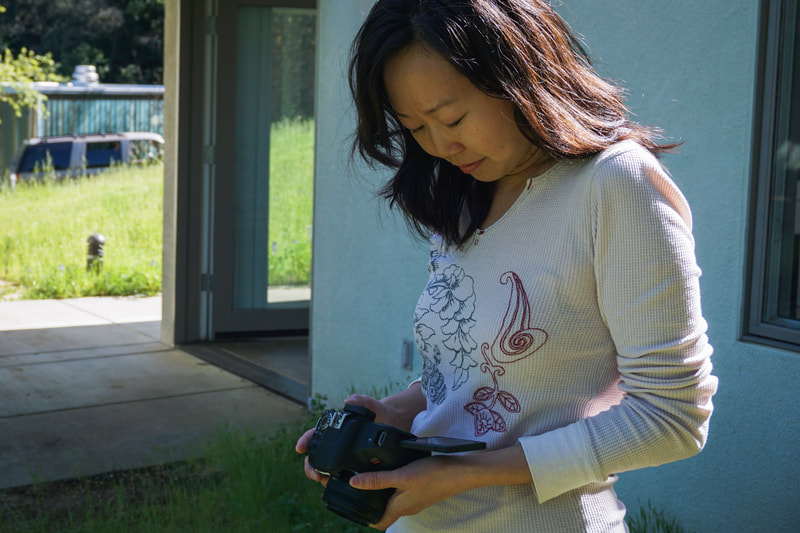
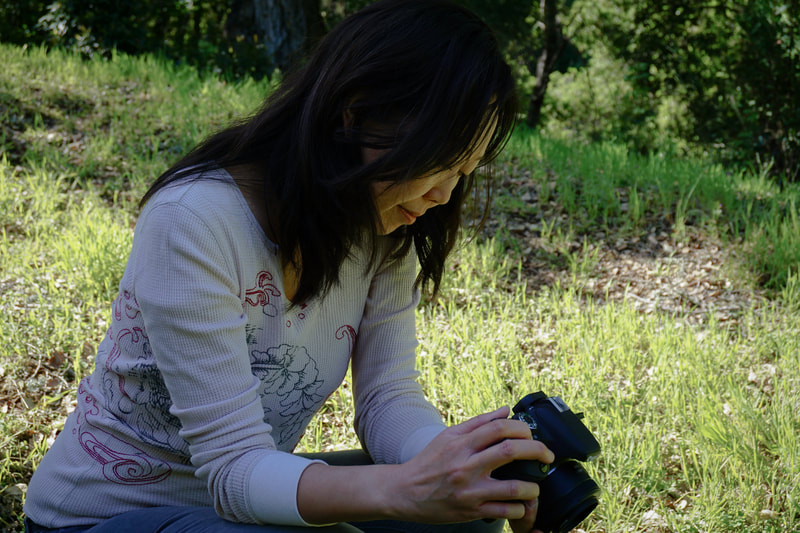
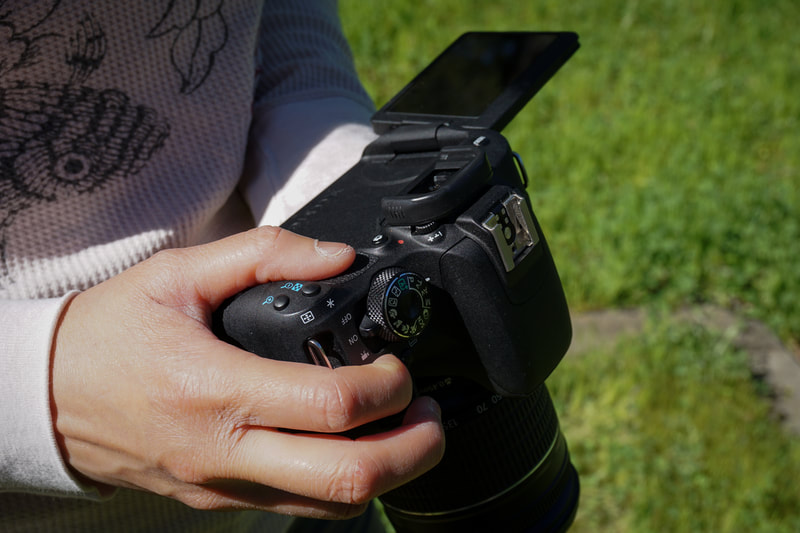
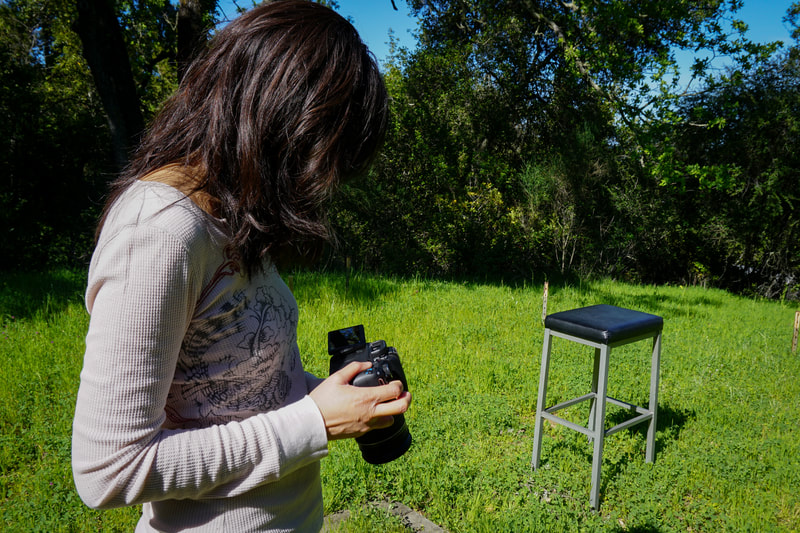
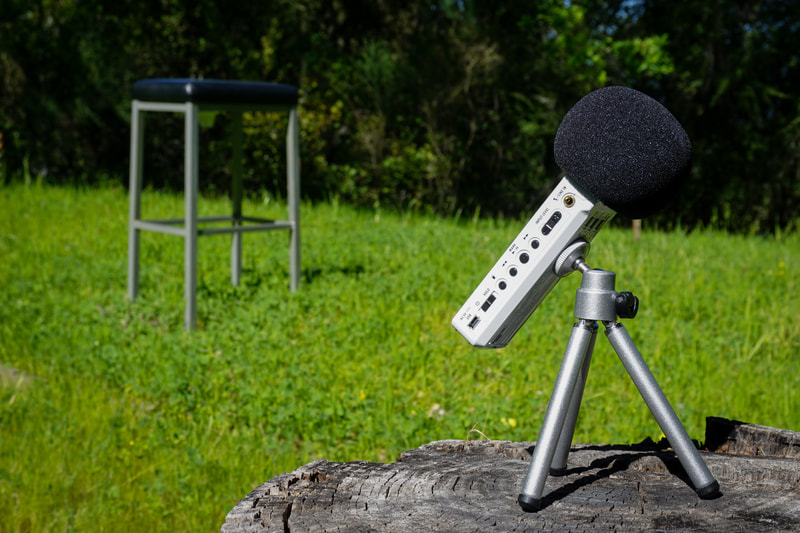

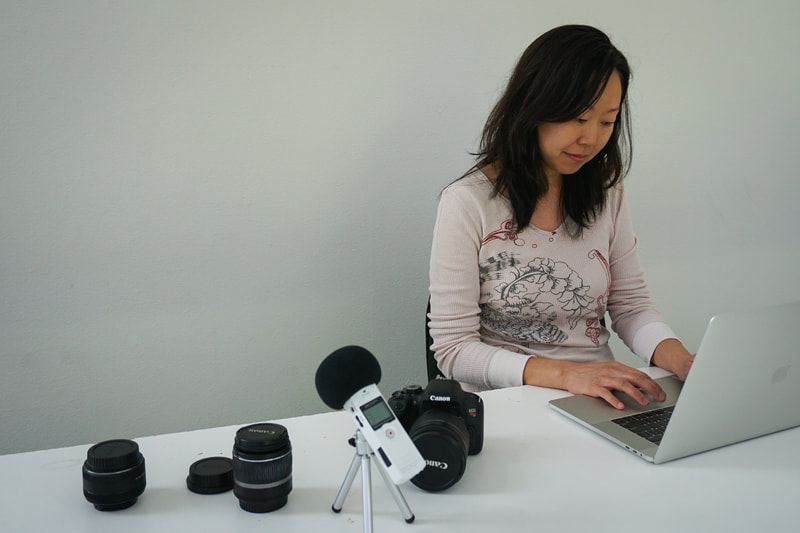
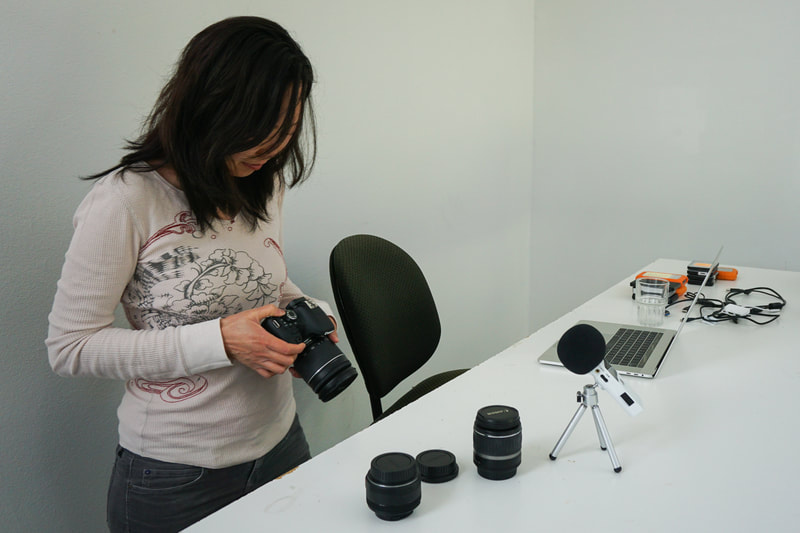
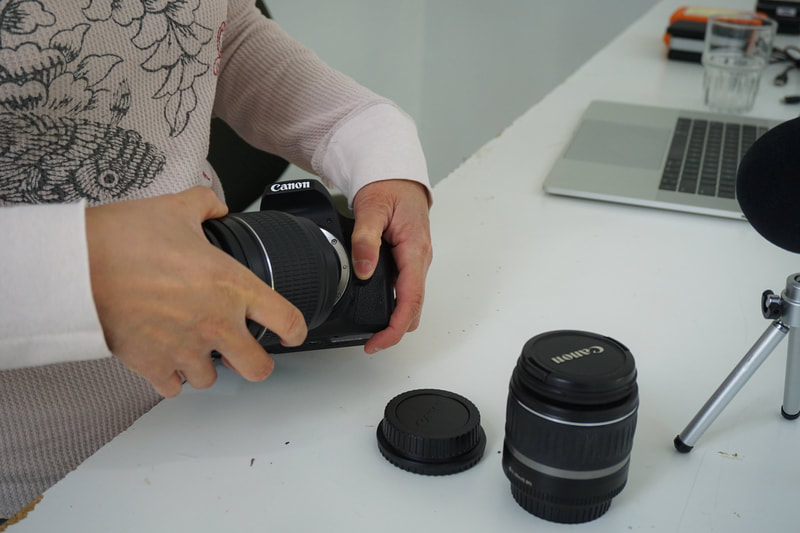
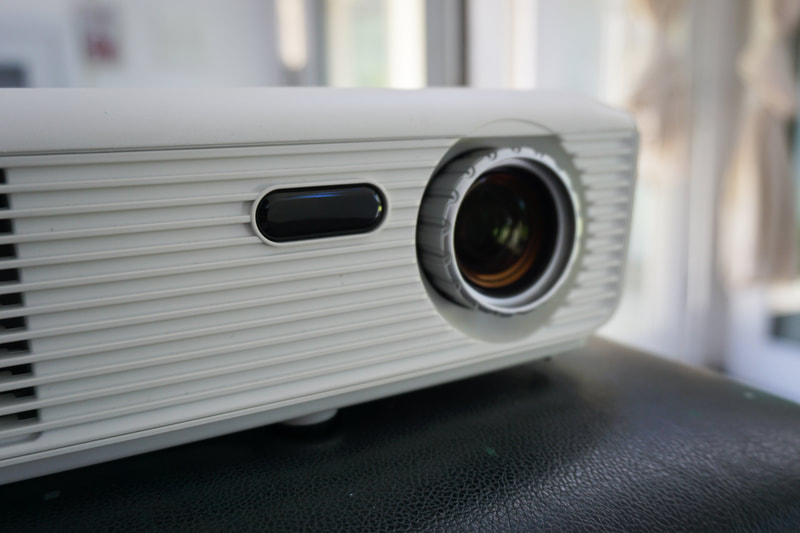
During my month at Montalvo, I am preparing photos and installation designs for an upcoming show at Kala Art Institute. “You Are Not My Stranger” is a social practice project two years in the making that paired strangers for conversation. Our project just finished production before I arrived, so now I have many hours of audio and thousands of photos to dive into and sift through. Sitting in studio 60, with its giant, ten-foot-long table covered with photos, and looking at the oak trees outside, is the perfect way to sift through the content and get a feel for the where the work wants to go.
I am also doing test projections of “Permanent Temporary Happiness Forever,” an outdoor video projection of a five-story waterfall that I’m preparing for a multi-year installation at The Wassaic Project in New York this fall. It’s been ideal to be able to test this on the outside walls of my studio at Montalvo, where there is so little light pollution, yet where the walls have interesting geometric shapes. On Saturday, the other residents and I are doing visits to each other’s studios and I plan to project this work for feedback.
Being at Montalvo is like traveling through time for my work. While working here, I seem to find more space and perspectives to work from. I can see ahead to what really is the focus. The days expand and I forget to be in a hurry; I forget to answer emails or look at my phone.
It’s been great to return for a second time at Montalvo.
Read more about Christy’s work here.
Lucas Artists Fellows – Music & Composition U.S.A.
THIS WEEK IN MY STUDIO (April 23, 2019)
Composer and Musician Hans Tammen & Composer and Musician Dafna Naphtali
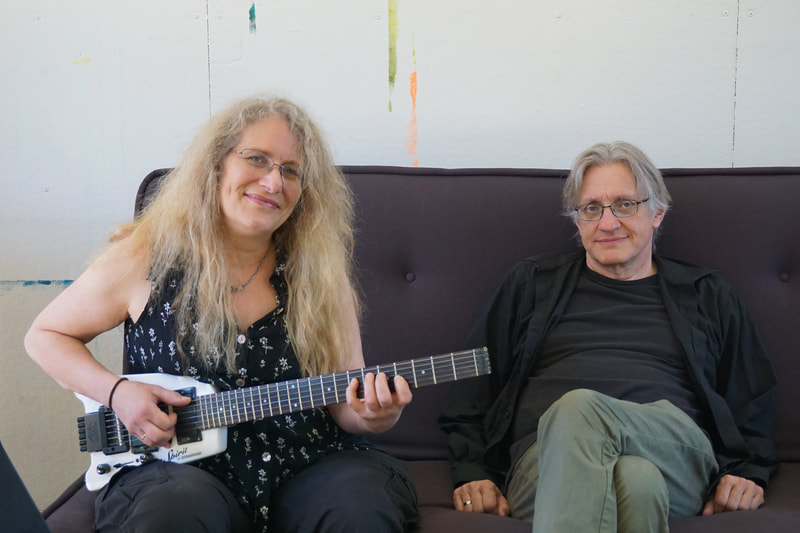
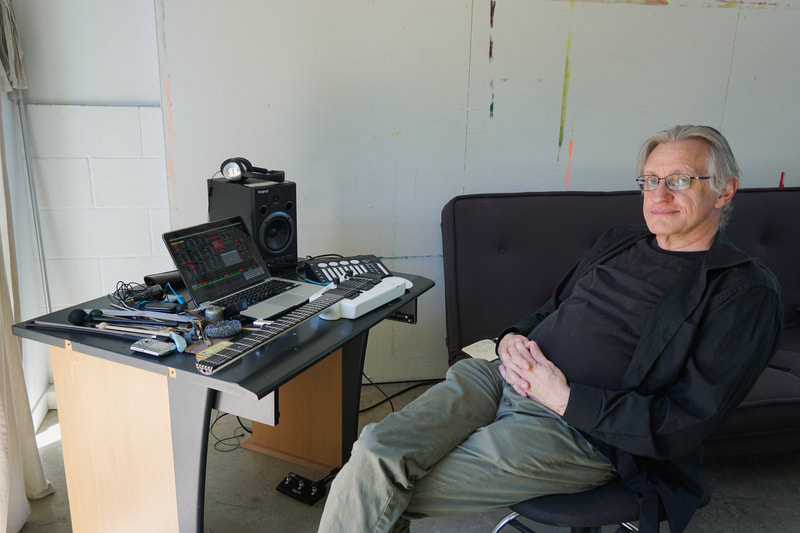
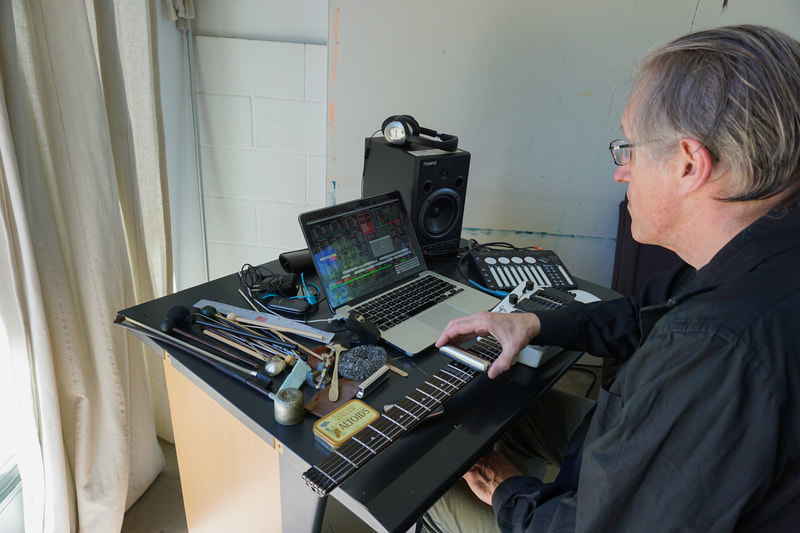
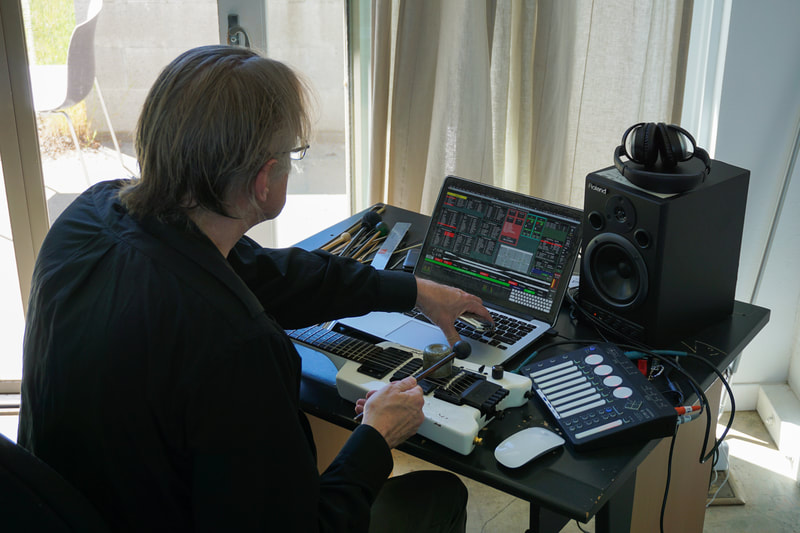
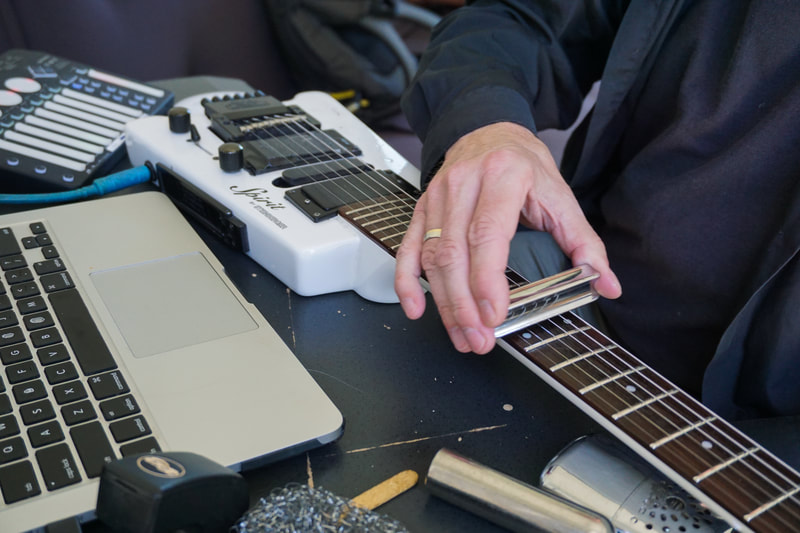
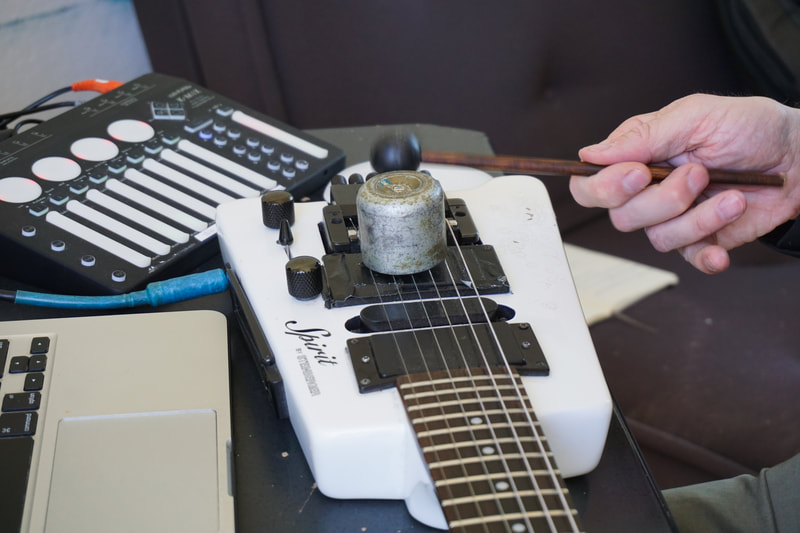
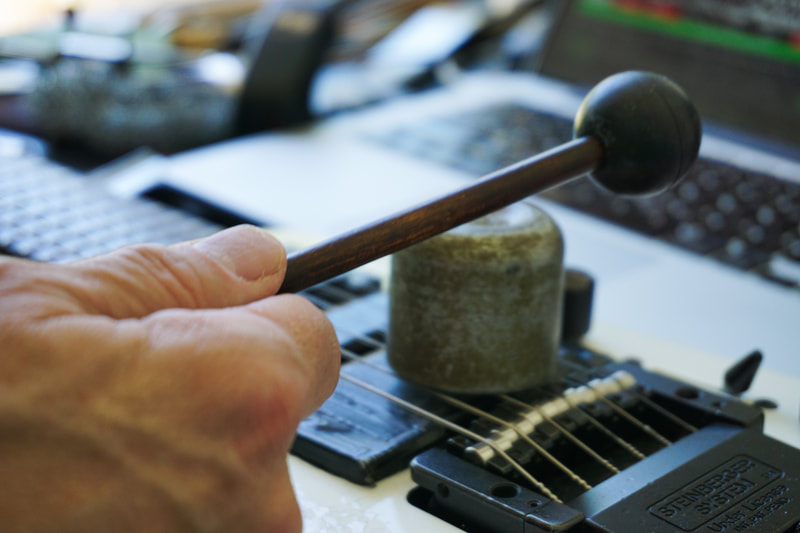
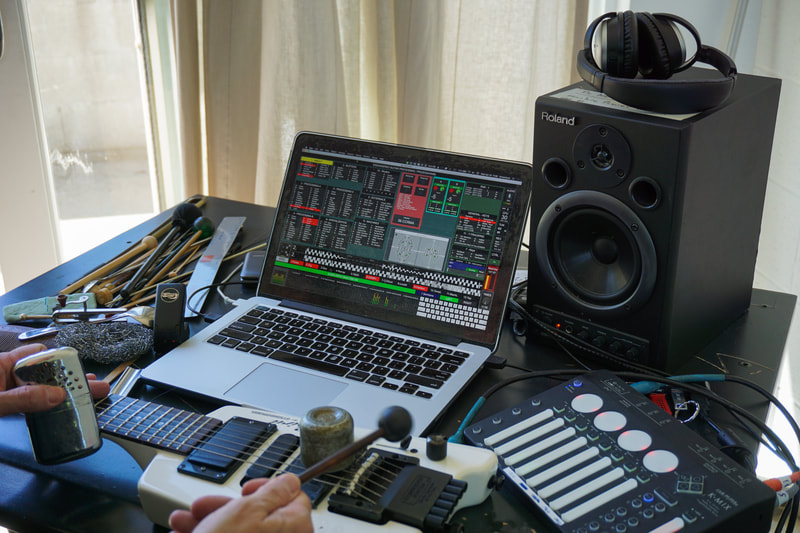
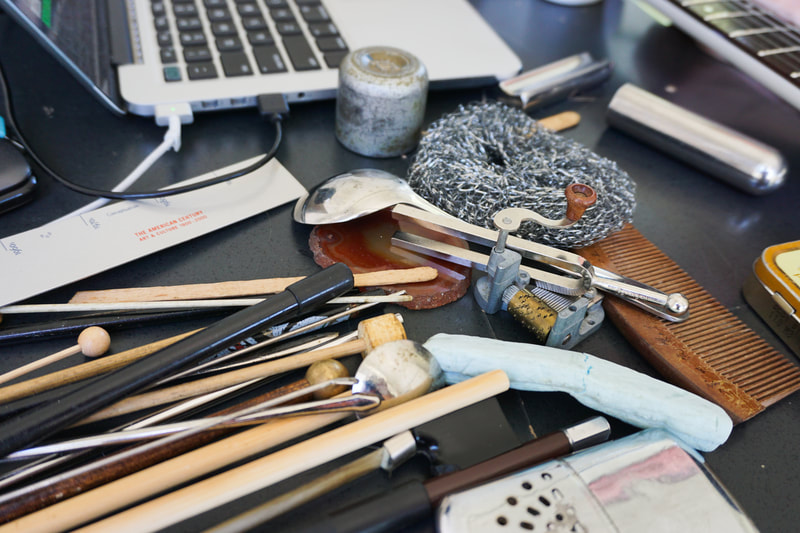
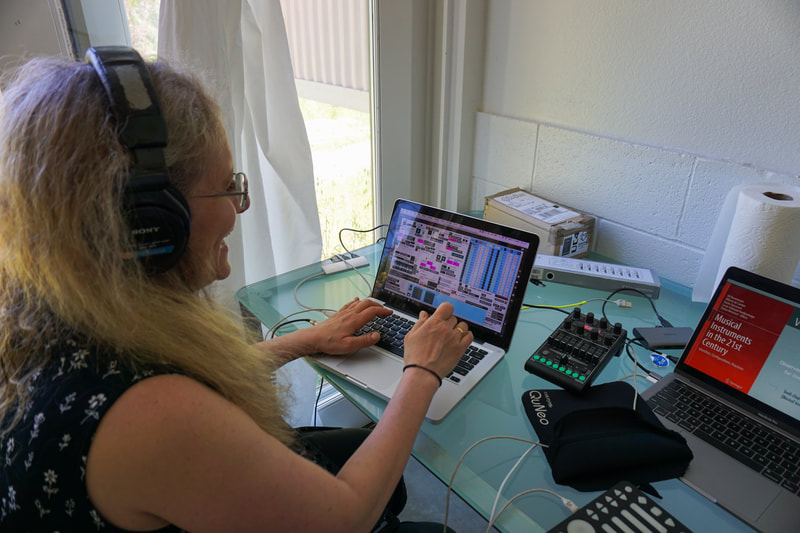



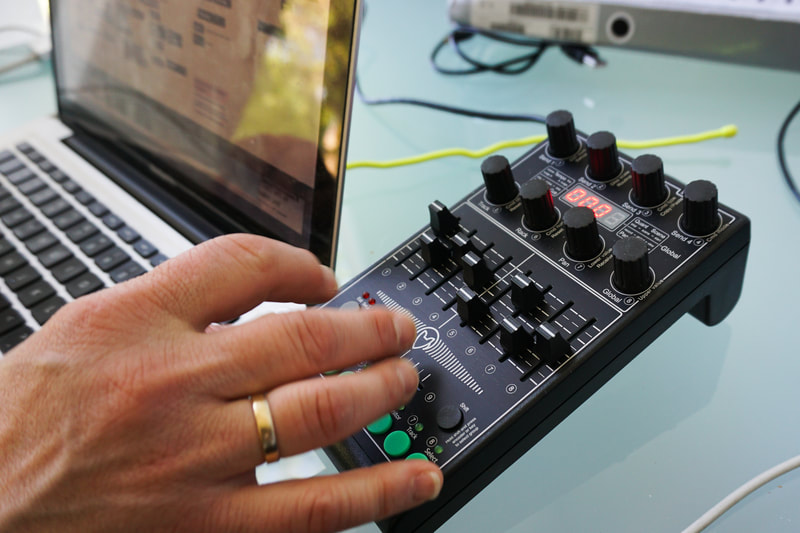
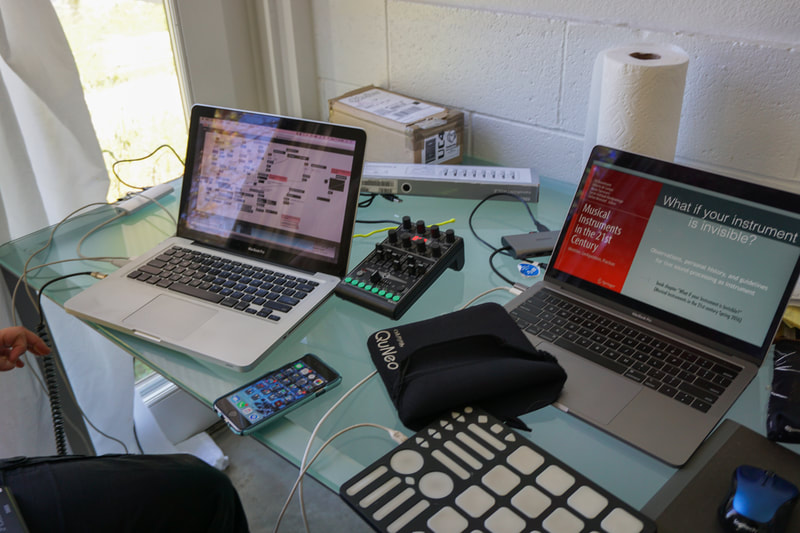
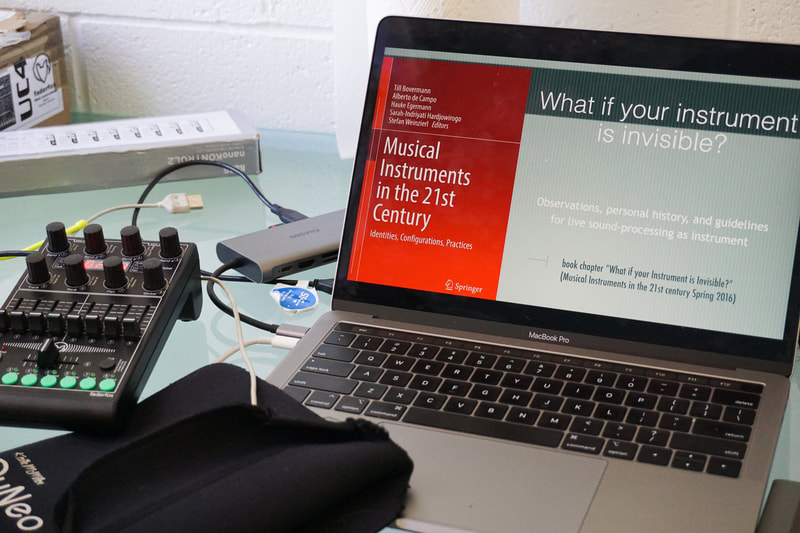
The tradition of placing sounds in space is as old as the 1500s, where composers placed choirs or other music ensembles at different locations in churches (or if one thinks big, across the Piazza San Marco in Venetia). In electronics, this practice has been used since the 1950s, by placing multiple loudspeakers around the room. Dafna & I have both been working with this “multichannel sound” for almost two decades now, and we will perform our works on April 25th at Stanford’s “Center for Computer Research in Music and Acoustics” (CCRMA) in their 56-channel sound room. We are using our time at Montalvo’s to prepare for this work, as every place that offers a multichannel sound setup has different loudspeaker configurations. While we will each present individual works on April 25th, we both share a common interest in “immersive environments.” Our strategy is to use a small number of sound sources, then distribute them to the speakers as slightly altered versions, so we are able to create an immersive experience for the audience.
Read more about Hans’ work here and Dafna’s work here.
Image rendering of the speaker locations at CCRMA. Photo: HansTammen
Lucas Artists Fellow – Visual Arts U.S.A.
THIS WEEK IN MY STUDIO (April 19, 2019)
Multidisciplinary Artist Gregory Sale
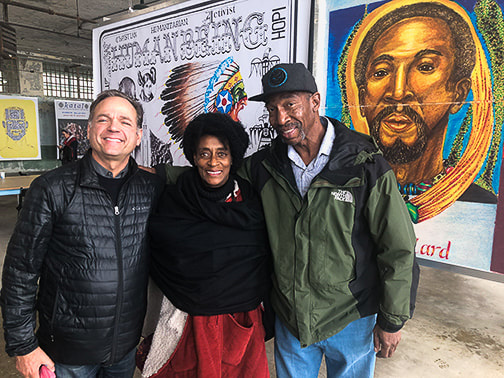
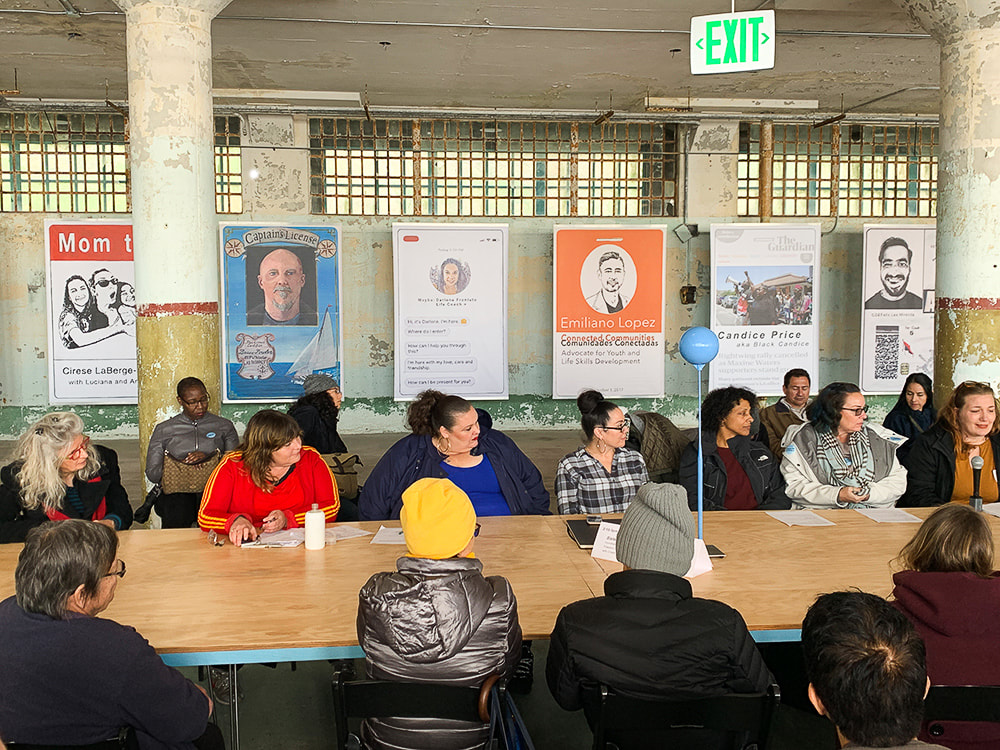

This week as I split my time between the studio at Montalvo and Alcatraz island, I contemplated and wrote about how Alcatraz is an International Site of Conscience, providing a safe space to remember and preserve traumatic memories, while connecting the past to today’s social justice movements. Future IDs at Alcatraz shares in this endeavor by using artistic and social engagement to invite reflection on the criminal justice system, second chances, and individual freedoms in the United States. Our project uses visual language for individuals to capture the trauma of their experiences and creatively engage with the past while envisioning a new future.
Read more about Gregory’s work here.
Lucas Artists Fellow – Music & Composition Germany
THIS WEEK IN MY STUDIO (April 10, 2019)
Pianist Magda Mayas
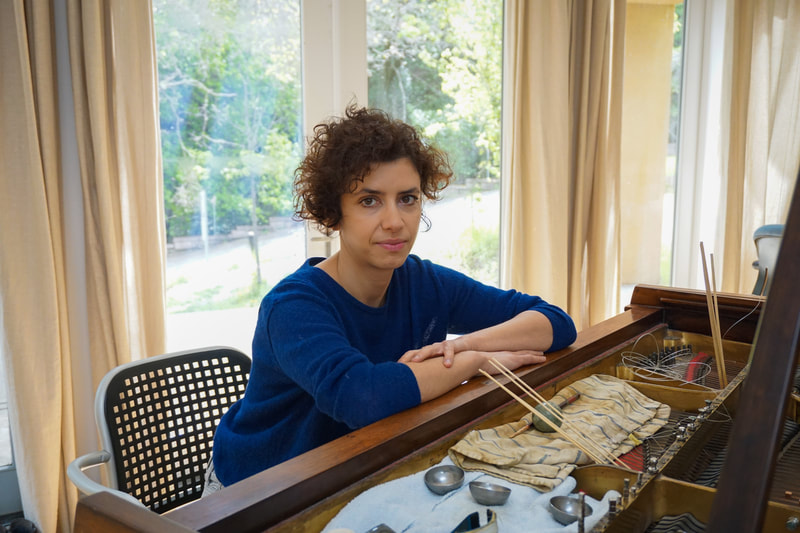
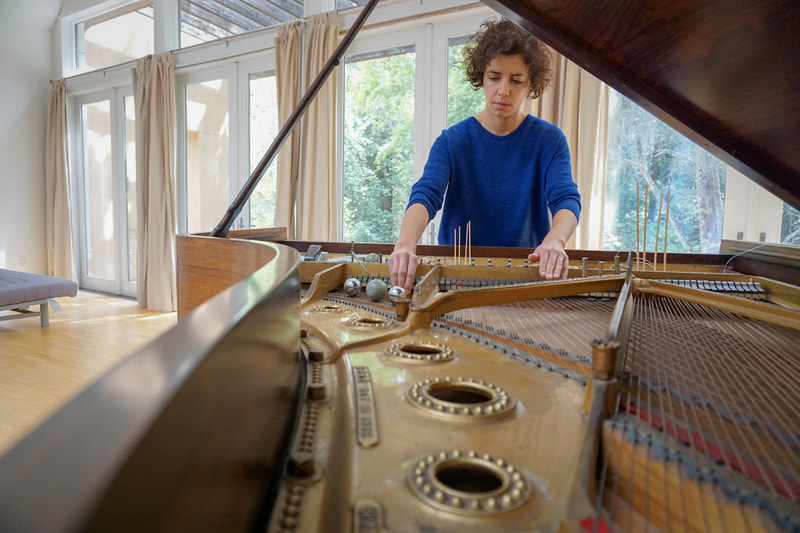
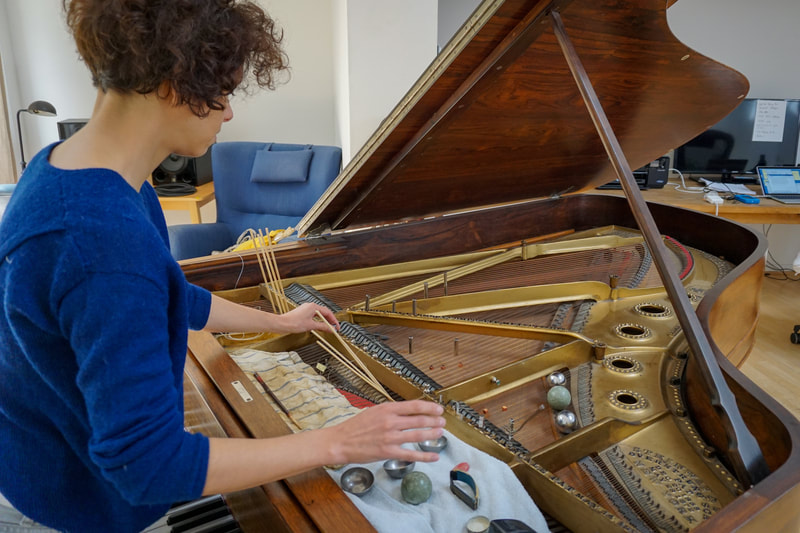
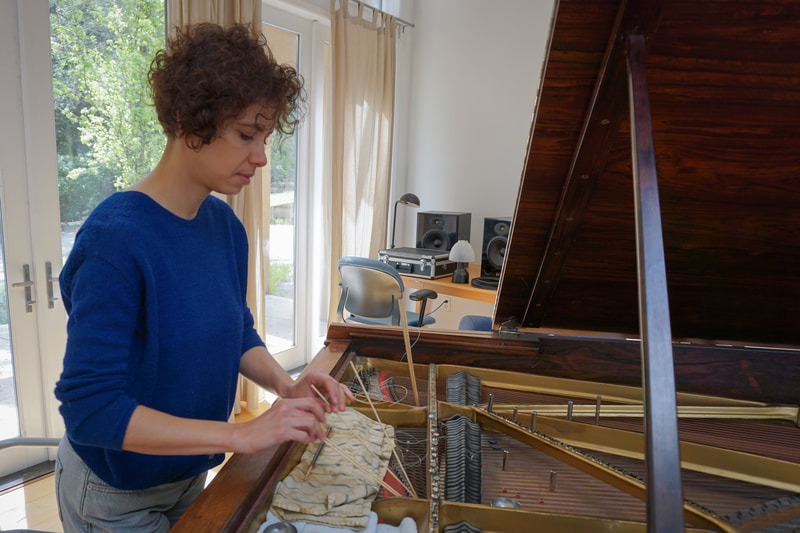
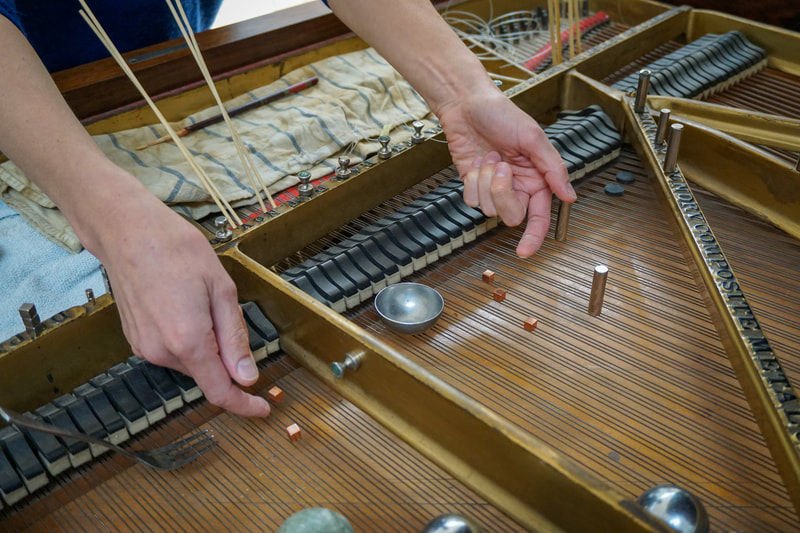
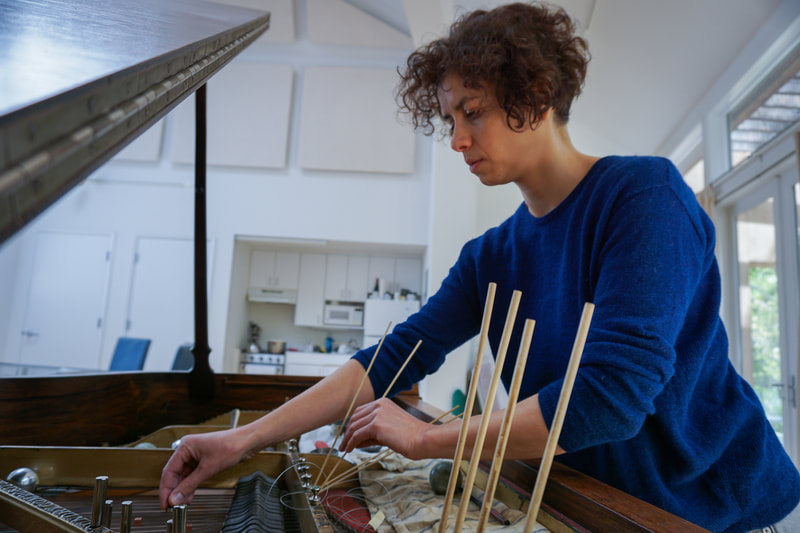
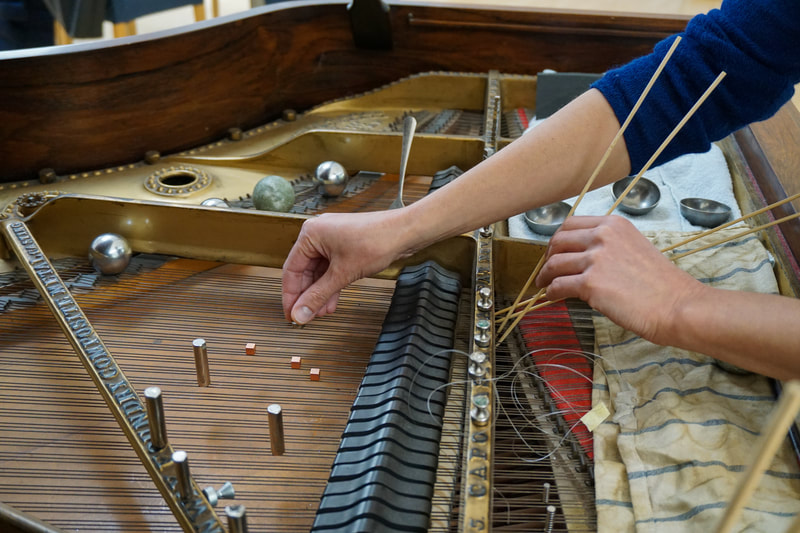
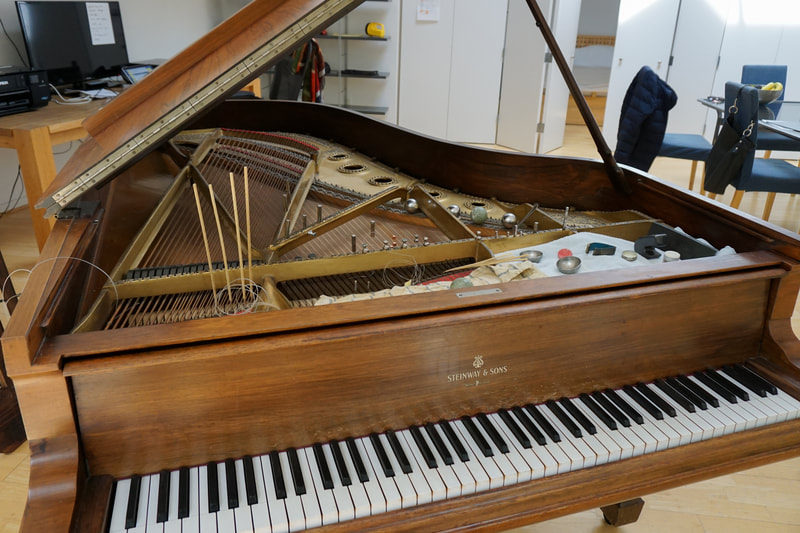
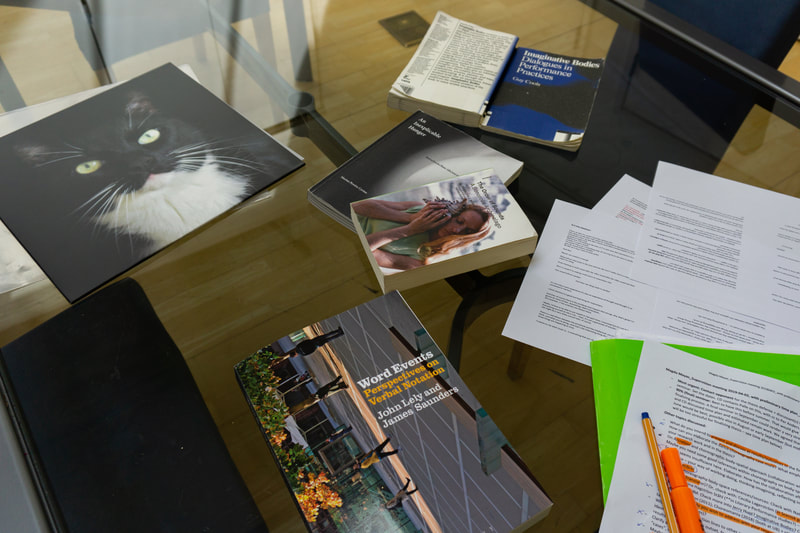
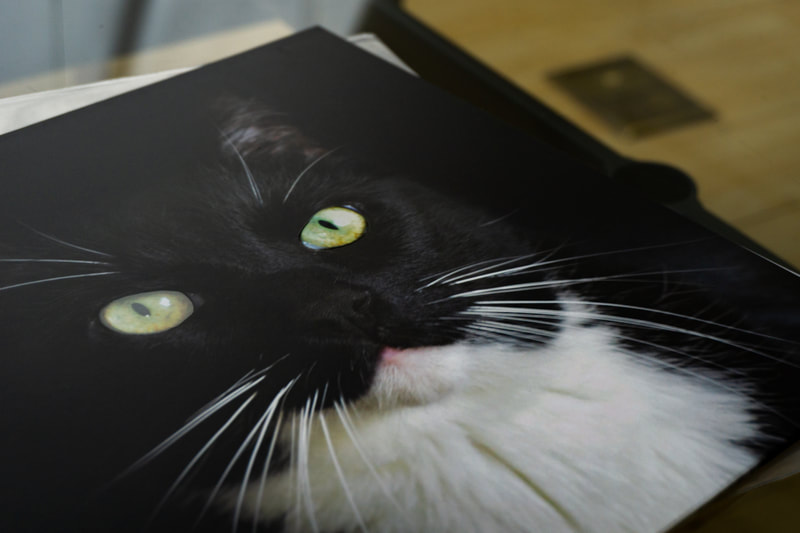
This is my second time around at Montalvo, and I am spending the next 4 weeks here finishing (or at least getting close to finishing!) my PhD thesis in Music Performance. This means re-working and reflecting upon a lot of projects which were partly developed and refined here at Montalvo a year and a half ago—for example, the Memory Pieces I composed here, multi-channel compositions for piano and adapted for the duo Spill with Tony Buck, drums and percussion, which came out as the LP Stereo on Corvo records last year.
I am also researching and creating verbal and graphic notations of some of my compositions and sound pieces and experimenting a lot with different formats. As objects are a big part of my musical vocabulary and technique, which I use inside the piano to change and modify the sound, right now I am collecting and editing stories from musicians and artists around the world about their unique ways of working with objects—found, recycled, quotidian, invented—as instruments and things to think and create with. I’m planning to publish them as a small book at some point…
Read more about Magda’s work here.
Lucas Artists Fellow – Visual Arts UK/France
THIS WEEK IN MY STUDIO (April 7, 2019)
Director, Filmmaker & Designer of Experiences Nelly Ben Hayoun
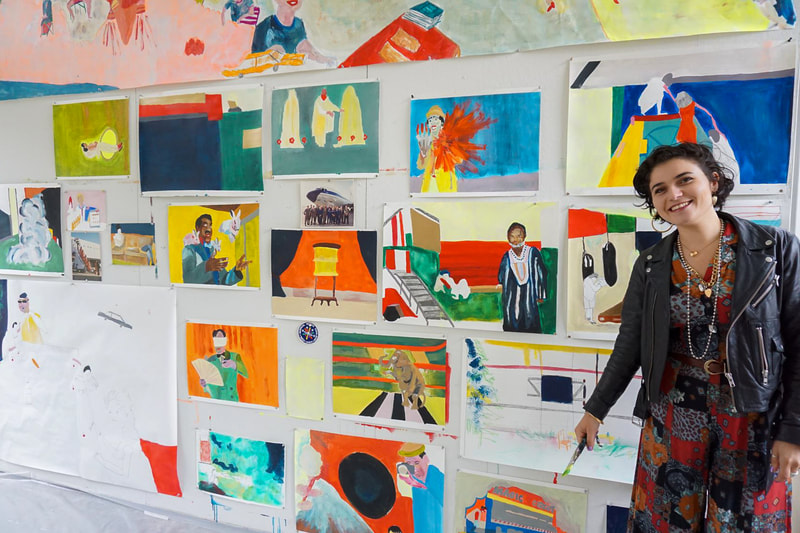

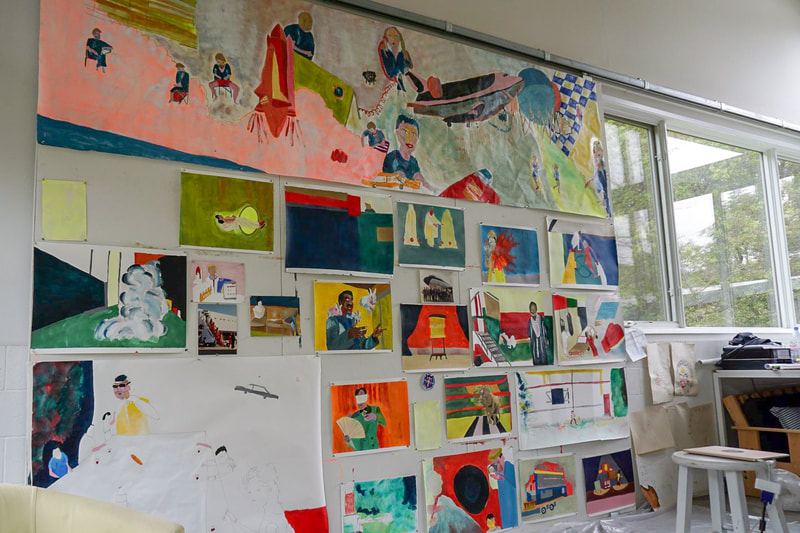
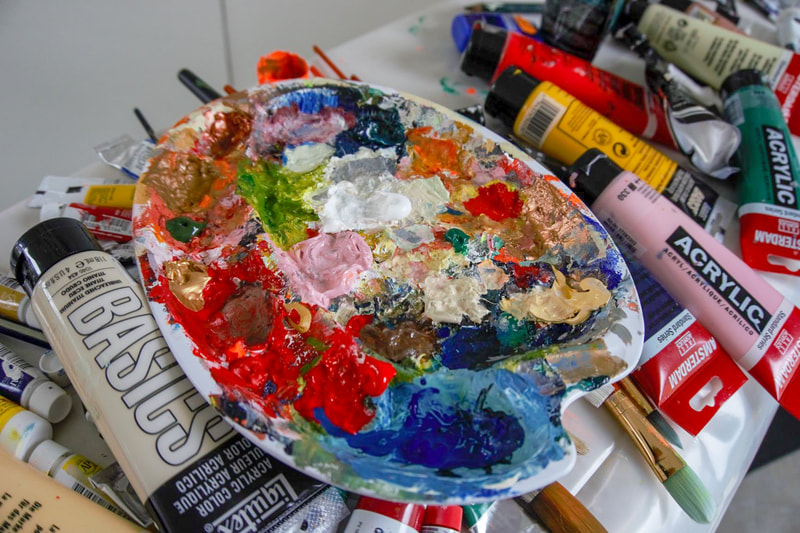

While at Montalvo, I was at work developing the next experience I will present to the public in 2020. While political theorist Hannah Arendt used to lay on her sofa to think in silence, painting is for me the best way to materialize and conceptualize thinking. So I’ve been painting … a lot … and thinking a lot. One of my favorite painters—Luc Tuymans—said that “while we might not remember the scene of a painting, we remember its tone and texture.” And that is why he never works with glossy colors which come directly out of the tube—he develops a palette for each of the scenes he depicts in his work.
Similarly, while I work on my next project, which involves research on underground magic communities in Algeria and Armenia—I’ve been experimenting with tones and textures which members of the public will get to experience some time in 2020. Of course, I’m not saying it all—indeed, I’m involved with a sort of ‘secret’ that I can’t reveal—but the walls of Montalvo Arts Center—if they could speak—could tell….
Read more about Nelly’s work here.
Guest Artist United Arab Emirates
THIS WEEK IN MY STUDIO (March 3, 2019)
Conceptual Artist and Designer Zeinab Alhashemi
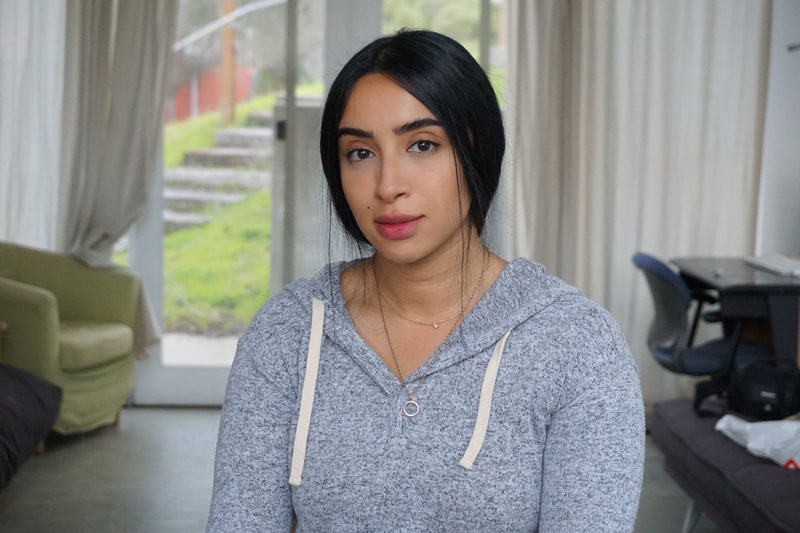
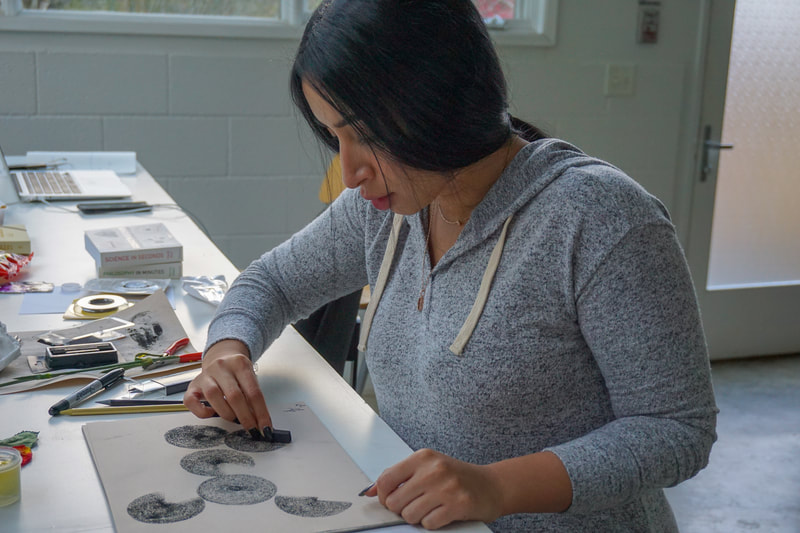
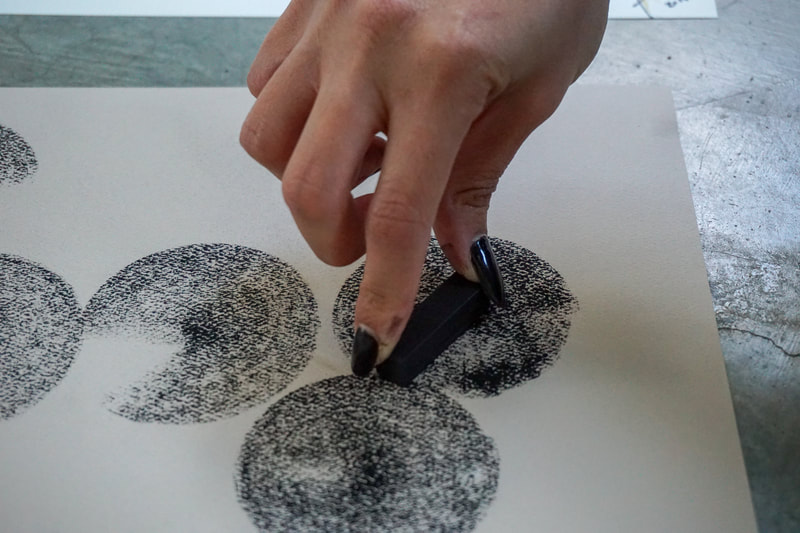
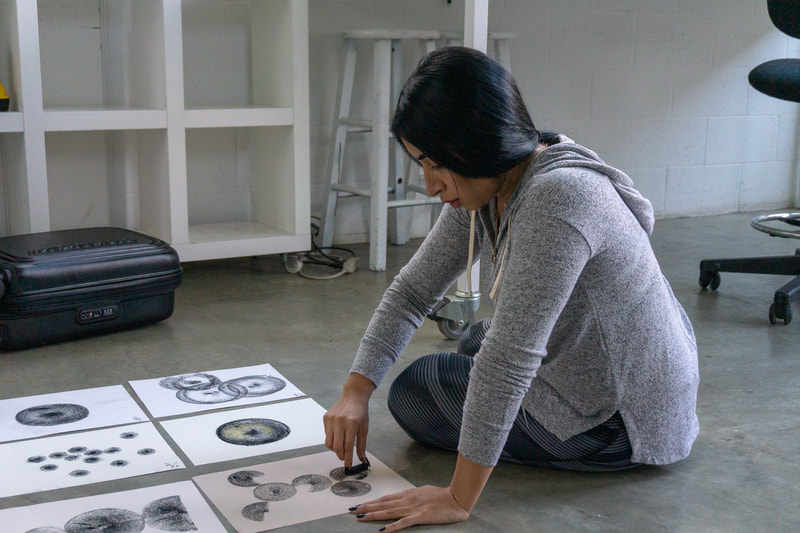
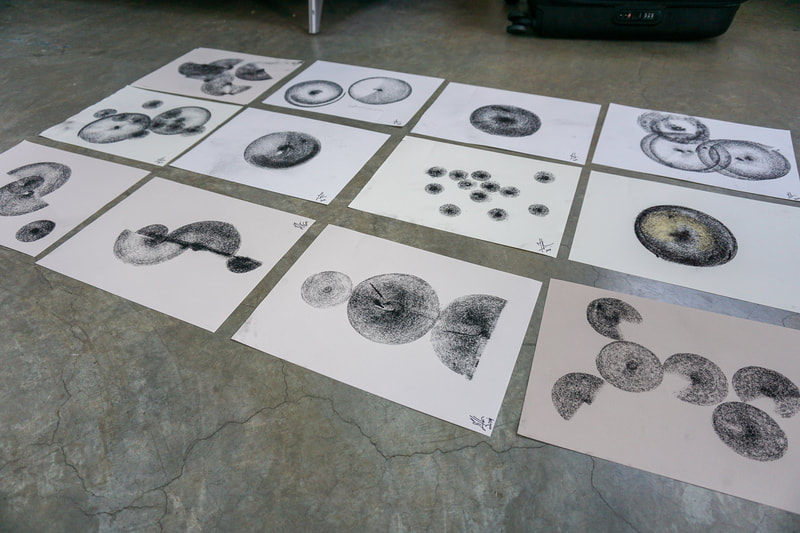
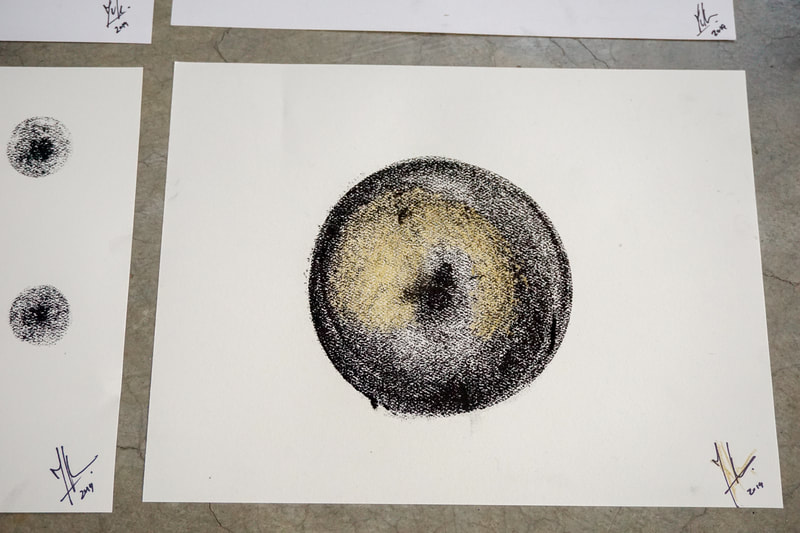
Change is the only constant thing. The change of scenery can reflect how we feel. All the feelings of a new place always come with being more aware of our surroundings and environment. I like to be mindful when I am in a new place and around new people. The walks in Saratoga filled with ancient trees whispering in the wind. That morning walk gazing at the light coming through the trees. Repetition in nature is something I like to be conscious of. Looking at the golden ratio in nature is always fascinating and brings even more clarity. This time my focus is on the shape of circles and rings, rings and spheres. One that I have been avoiding for some time. But I am liking curves more than lines with edges, these days. The continuous lines of a circle have no ending. Tree trunks, for instance, and the circles that count the age of a tree. These circles seem to be stretching themselves all around us.
Having my first introductory visit to the SETI Artist in Residence program. and being in the SETI Institute, I had the chance to meet many accomplished and well-known scientists, including Mark Showalter, with whom I am working closely on this program. After a few interesting meetings with Mark, talking about Saturn rings and other planetarium rings expanding in space, we found out that we are both big fans of rings. Charles Lindsay had the right intuition when he introduced me to the SETI AIR program, and the idea of science and art as a natural next step. My stay at Montalvo was short but one that will be followed with a longer stay.
Read more about Zeinab’s work here.
Zeinab was in residence at the Lucas Artists Program through a partnership between the LAP and the SETI Artists in Residence Program.
Lucas Artists Fellow – Visual Arts U.S.A.
THIS WEEK IN MY STUDIO (March 2, 2019)
Photographer Jeanne Moutoussamy-Ashe
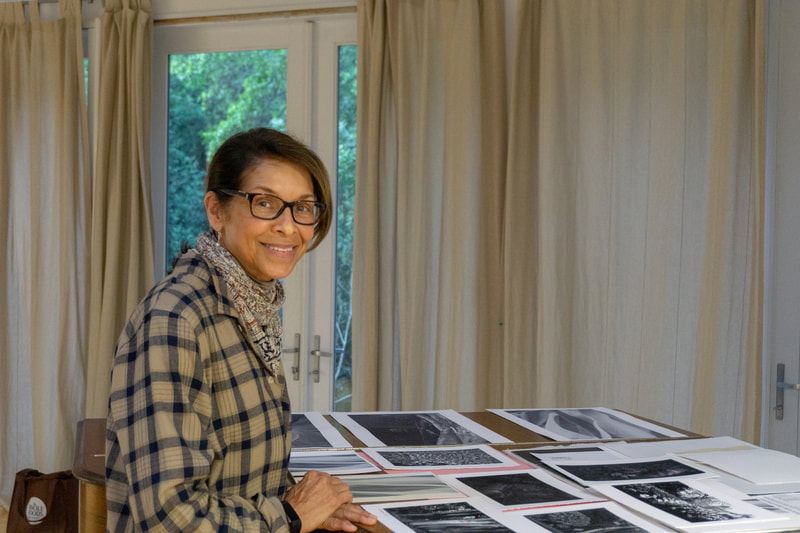
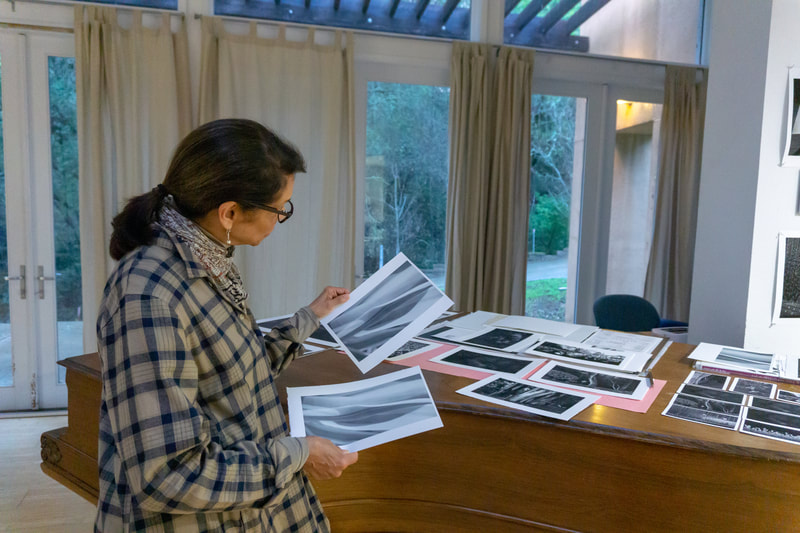
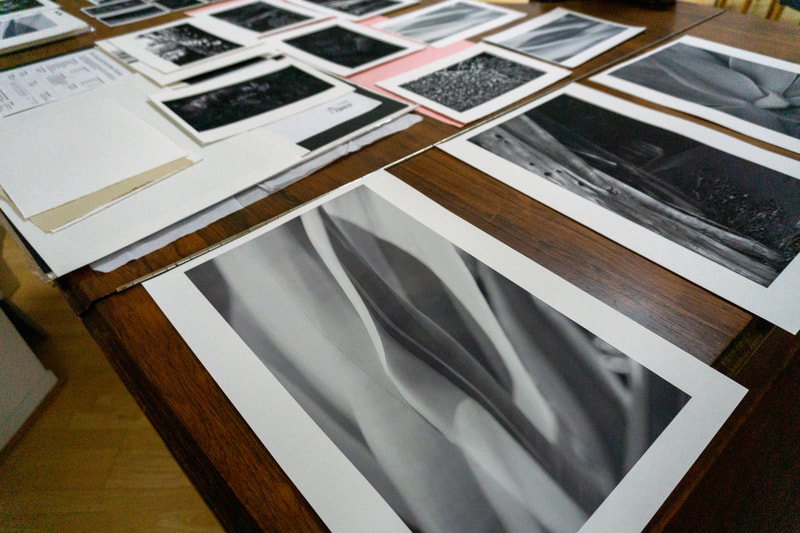
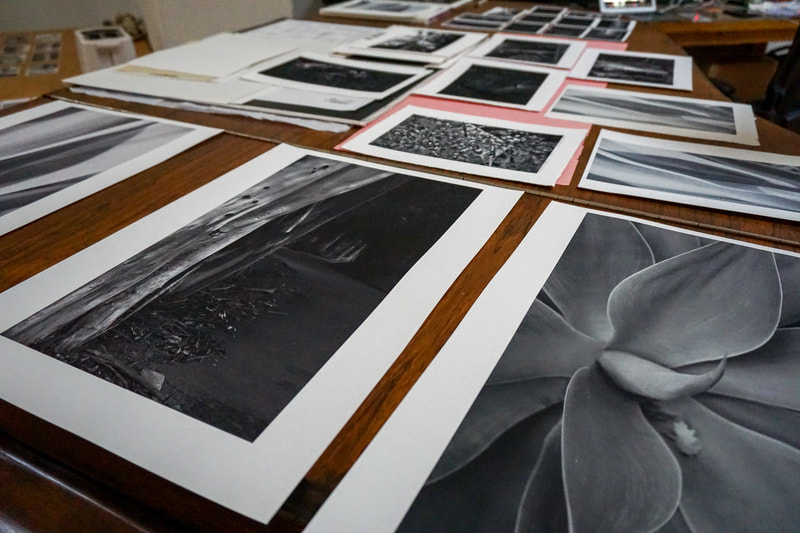
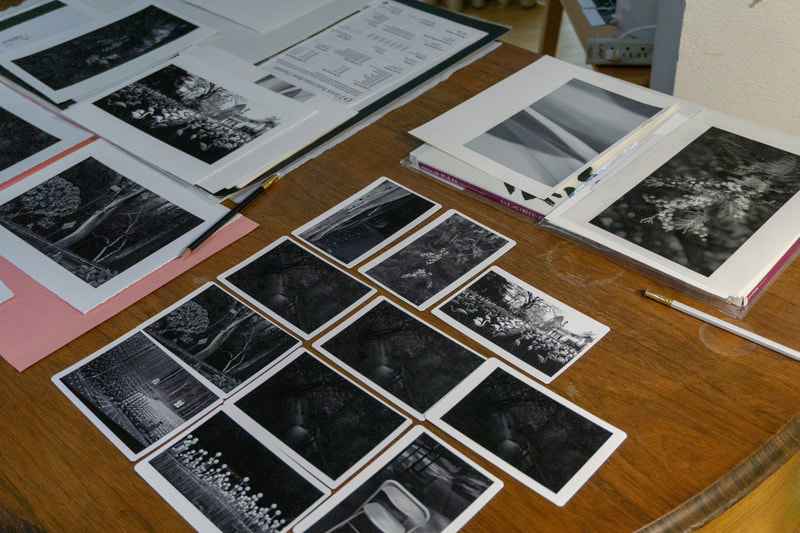
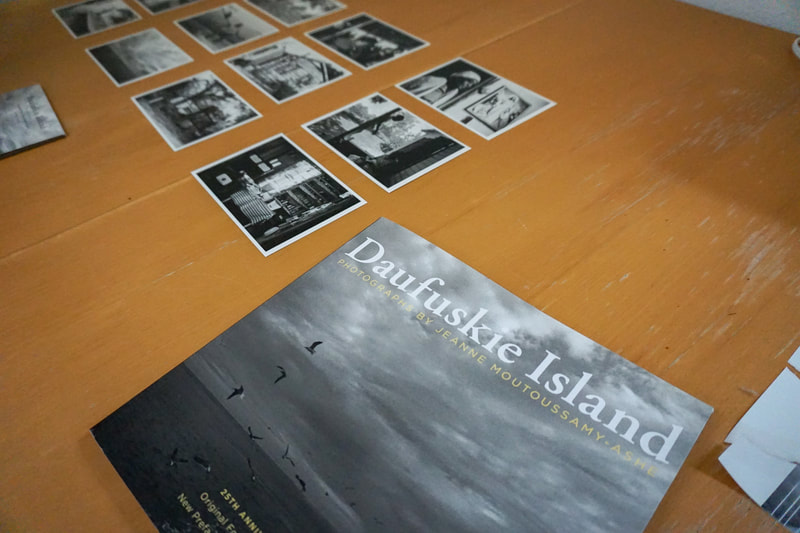

With the intention to forward the work on my Gumbo Family project, I am grateful for the decades that consumed my consciousness while working in my studio, moving this project at least a chapter forward. Only in a congenial and supportive environment like Montalvo could this happen with such clarity. What completely caught me by surprise was the connection revealed between science and art. In working through a portfolio project consisting of my archival photographic prints from the late 1970s (that will last 200 to 300 years or more), how do I place sound technology into the same portfolio in a way that can last as long? The solution appeared at artist dinner one evening when the SETI Institute, Artist in Residence Program (scientists and astronomers included!) joined us for dinner. Simply put, my mind was BLOWN! Expanded in thought and ideas…an intergalactic experience. Only at Montalvo.
Read more about Jeanne’s work here.
Lucas Artists Fellow – Literary Arts, Poetry U.S.A.
THIS WEEK IN MY STUDIO (February 28, 2019)
Poet Simon Pettet
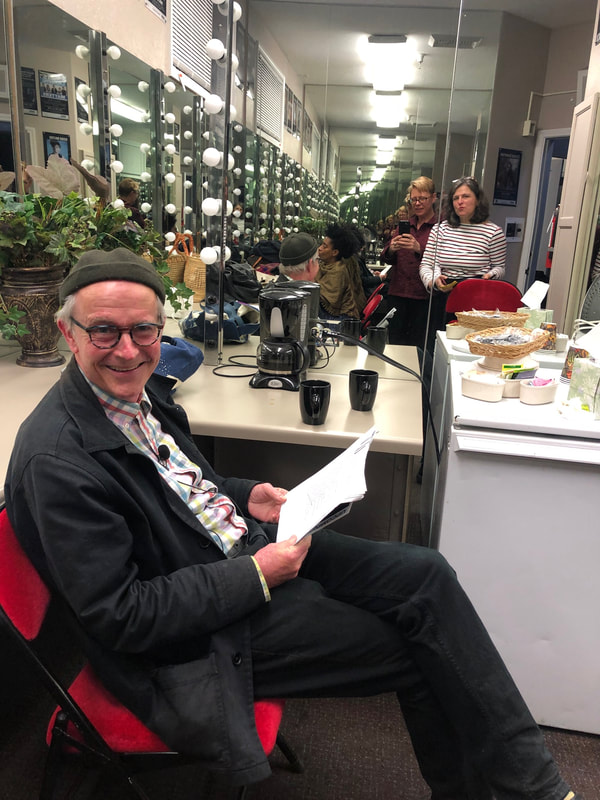

I have a book available called MORE WINNOWED FRAGMENTS and that was one of the things that I was doing at Montalvo—winnowing—writing new poems too but doing a lot of careful editing, excising and honing down. Here is a six-line poem (about that very task) entitled “My Methodology”:
“I accrue hordes/and then/winnow away,/It is a thankless task,/tho’ not without/occult comfort.”
Among the “hordes” that you might find me winnowing (if you’d peeked through the window of my studio up the hill) were notes and pages from a historical/investigative poem about the history of New York (my current home), which I first started many years ago, abandoned, and have now taken up again.
To have the extraordinary gift of uninterrupted time and space to give close attention to a project such as this was invaluable, but no less helpful was the opportunity to “winnow away” on other shorter poems, ruminate, cross-out, revise, re-insert, (or, indeed, to just quietly and unashamedly add to the mess!).
Read more about Simon’s work here.
Photos: Simon Pettet waits backstage in the Carriage House Theatre with Joie Lee, Kelly Sicat, and Lori Wood for the Open Access program on February 25
Lucas Artists Fellow – Visual Arts New Zealand
THIS WEEK IN MY STUDIO (February 28, 2019)
Visual Artist Judith Darragh
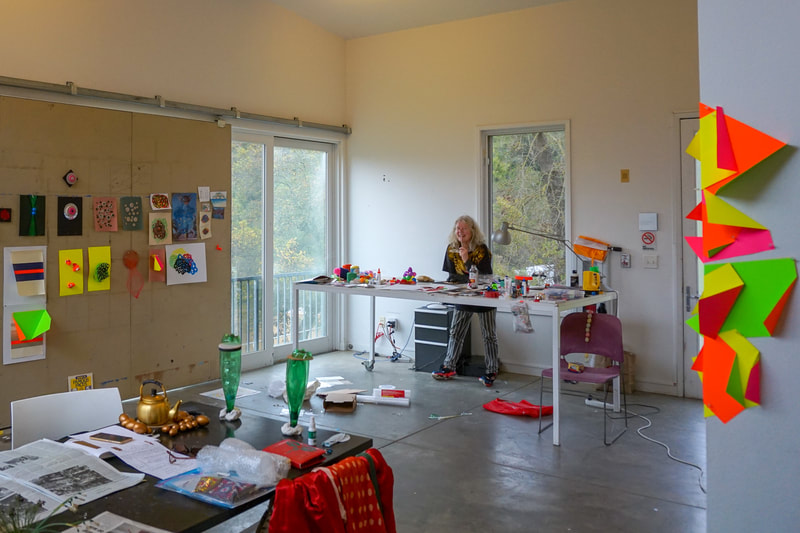
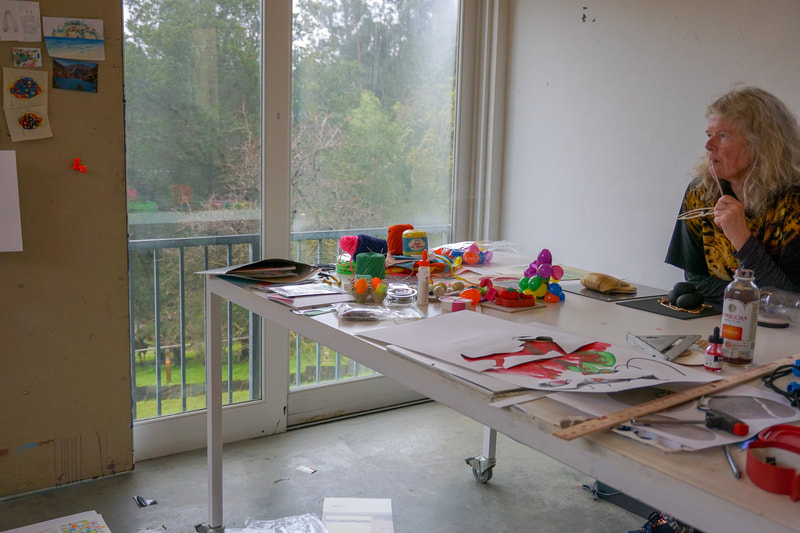

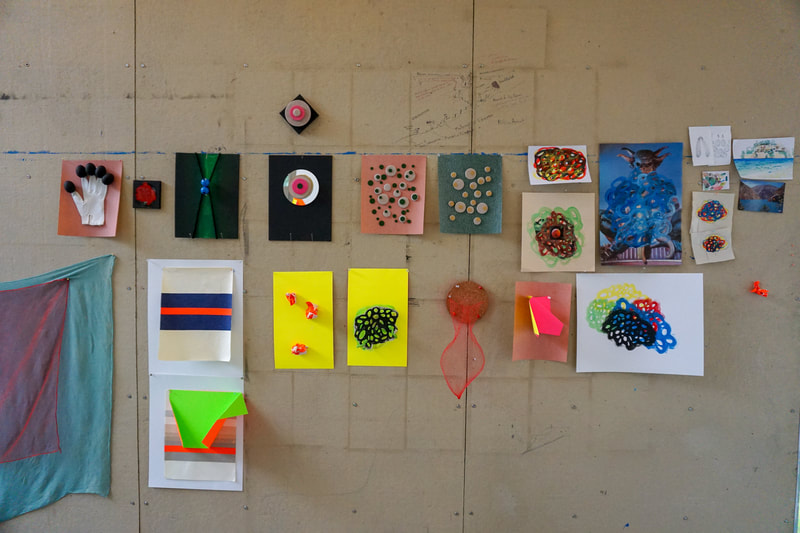
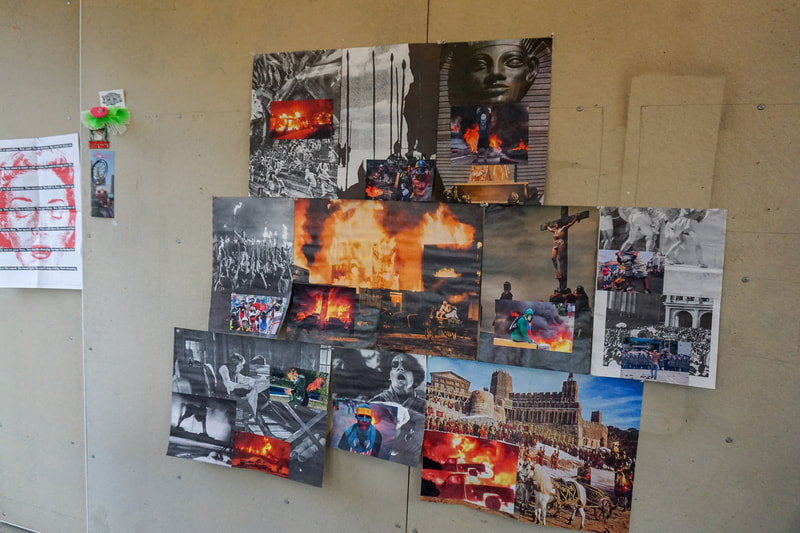
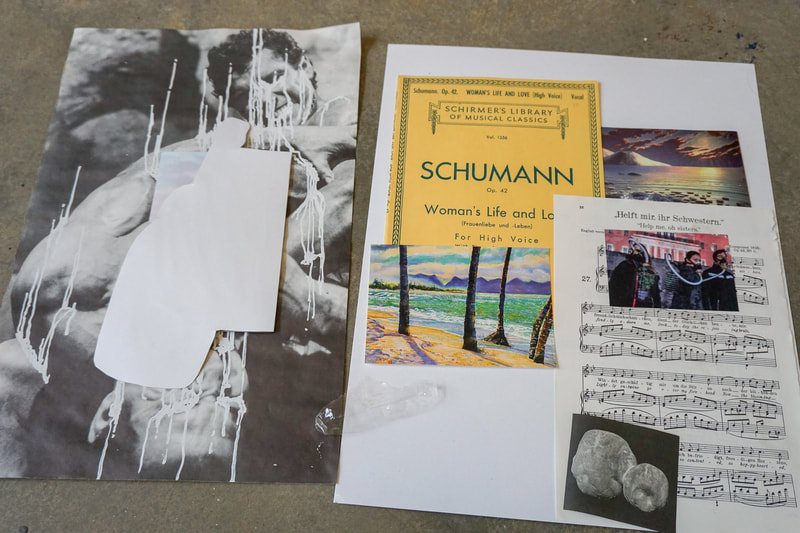
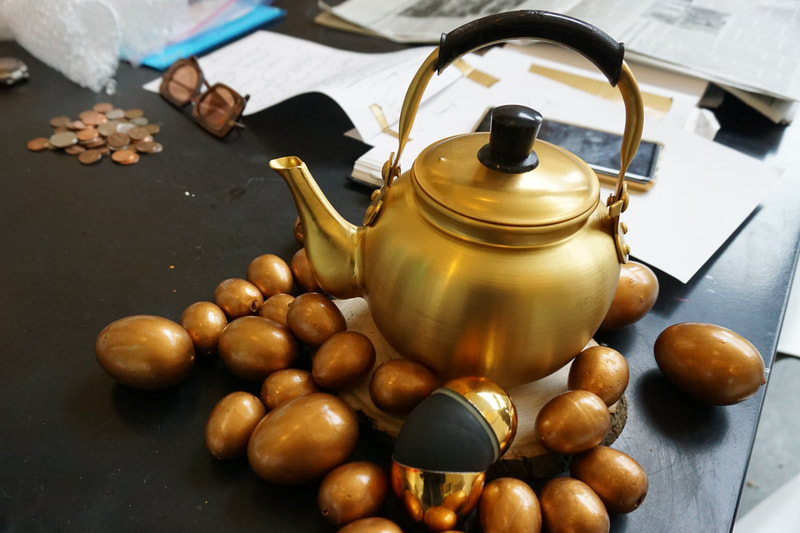


It was so great to return for the third time to the Lucas Artists Residency. I developed a new series of works from materials found in local hardware and opportunity shops around the area, all new materials to me. These small works will become incorporated into larger works back in the studio in New Zealand. Conversations and connections with other artists, making, looking at and thinking about art every day—amazing !!!
Lucas Artists Fellow – Visual Arts U.S.A.
THIS WEEK IN MY STUDIO (February 18, 2019)
Mixed Media/Painter Monica Lundy
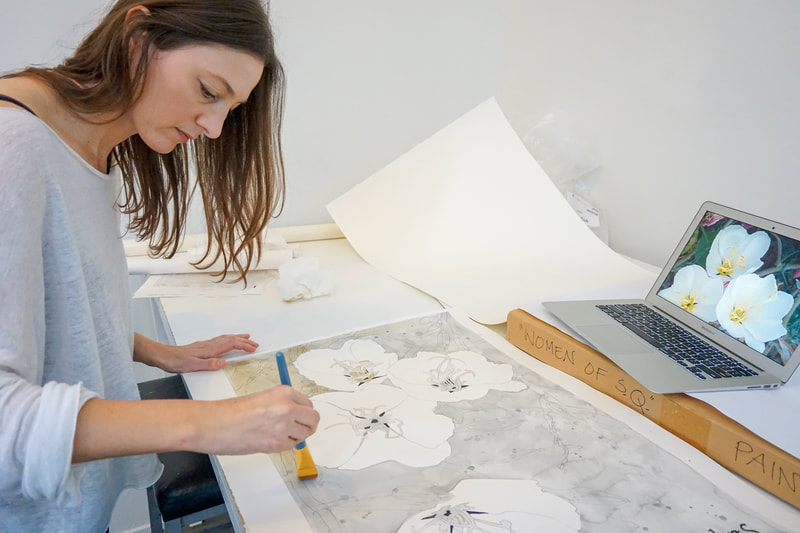
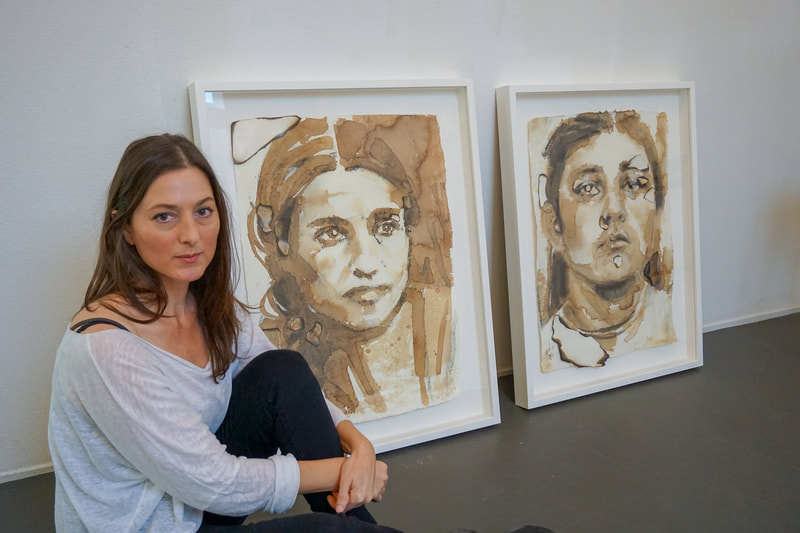
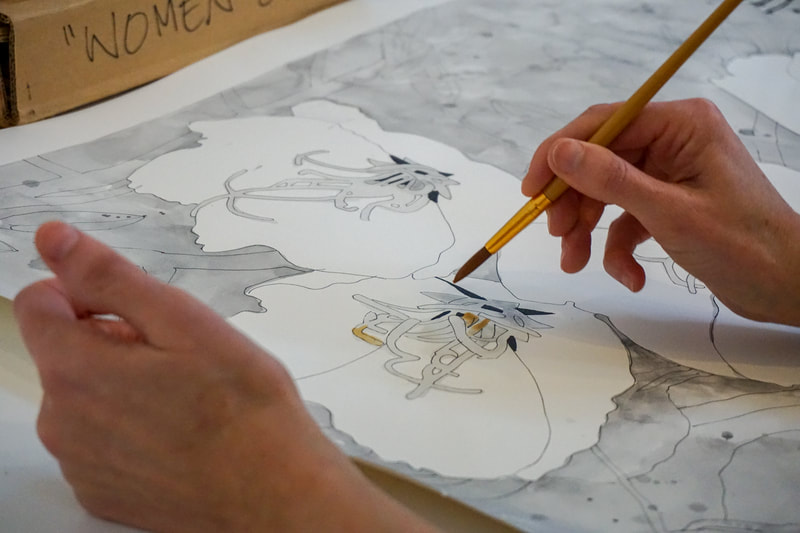
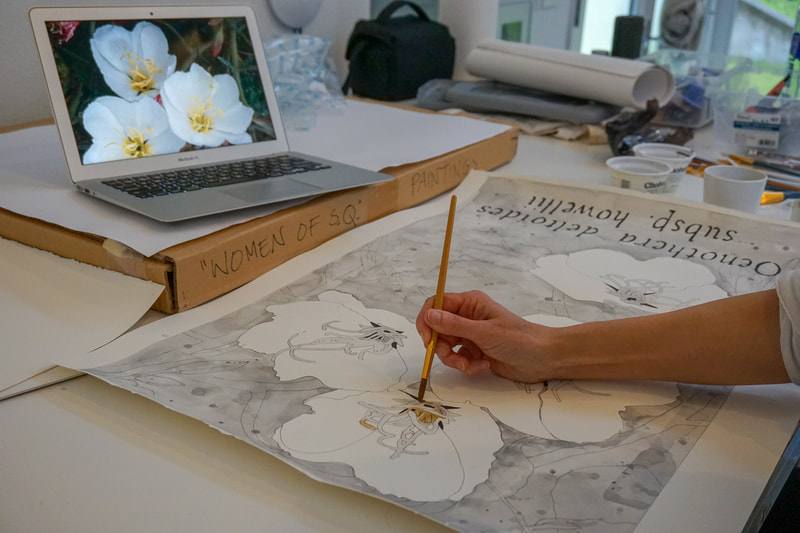
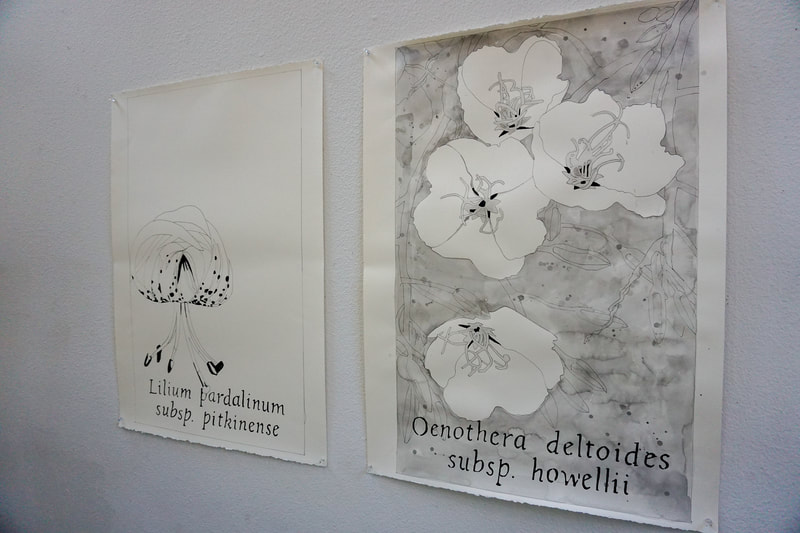
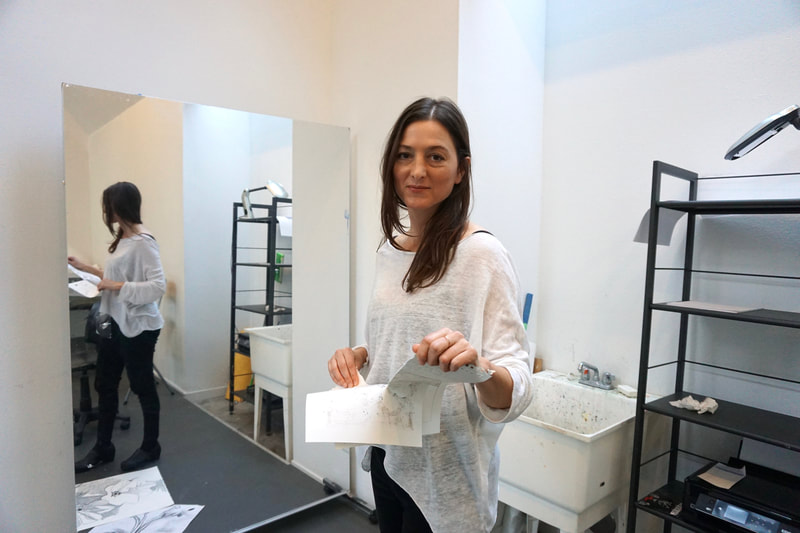


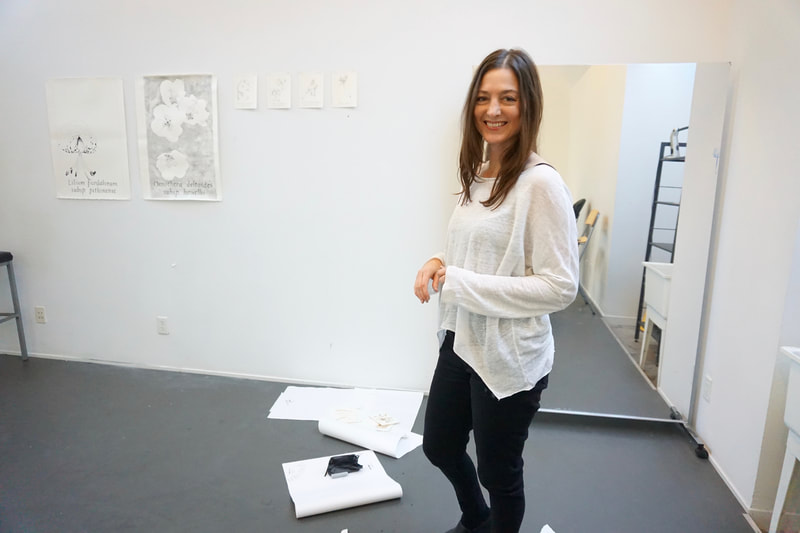
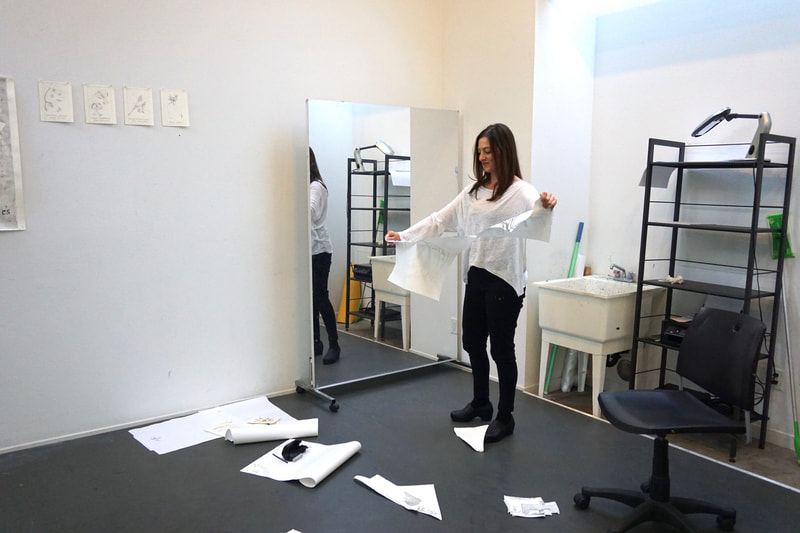
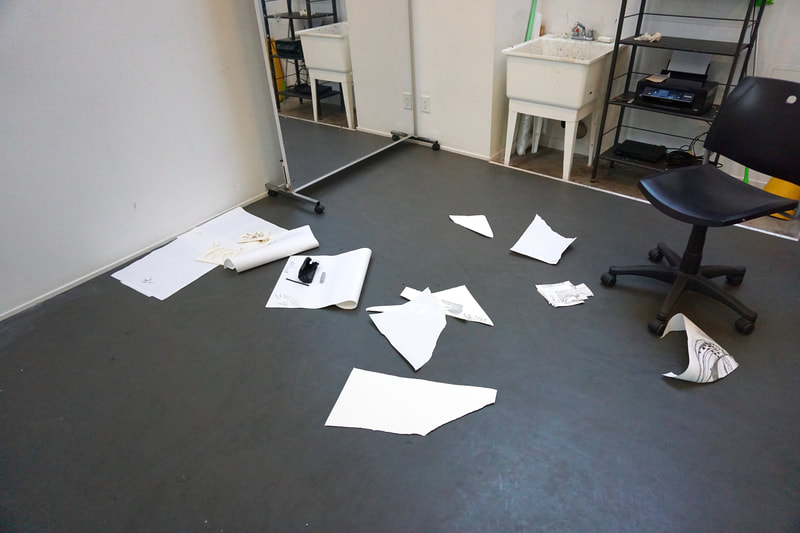
Destruction is a part of creation. Artists must be able to experiment in the studio and make “failures” without anyone else seeing them. Experimentation is necessary to discover new ideas and techniques, and failure is crucial to understand what does not work. Therefore, I embrace failure as a fundamental part of growth. My attitude is that all the work I do is an experiment. The days when I return to the studio to discover that what I had worked on the day before resulted in an exciting discovery, are exhilarating days. Conversely, the days when I realize I had merely created another failure are important to learn from, and are then followed by liberating moments of destruction.
Read more about Monica’s work here.
Lucas Artists Fellow – Literary Arts, Poetry U.S.A.
THIS WEEK IN MY STUDIO (February 1, 2019)
Poet Julian Talamantez Brolaski
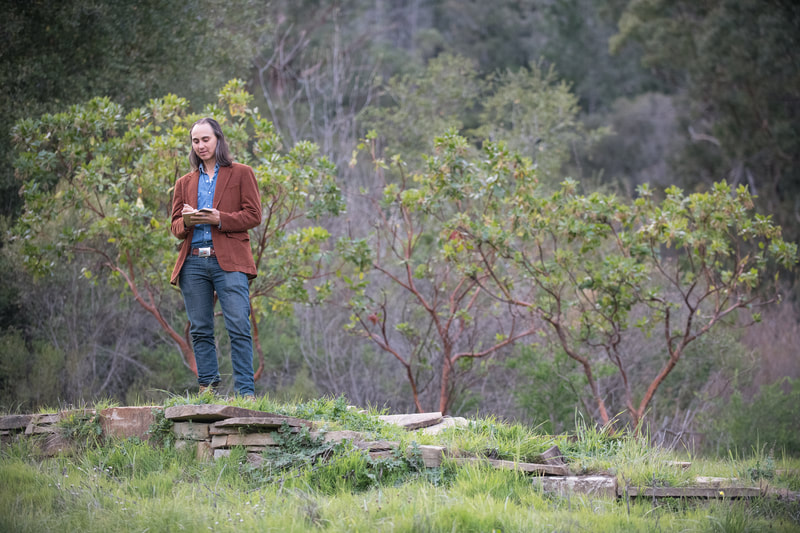
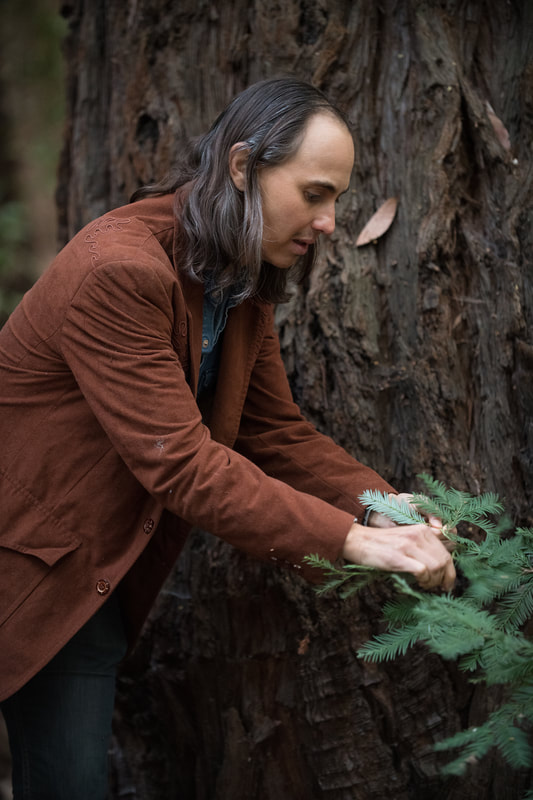
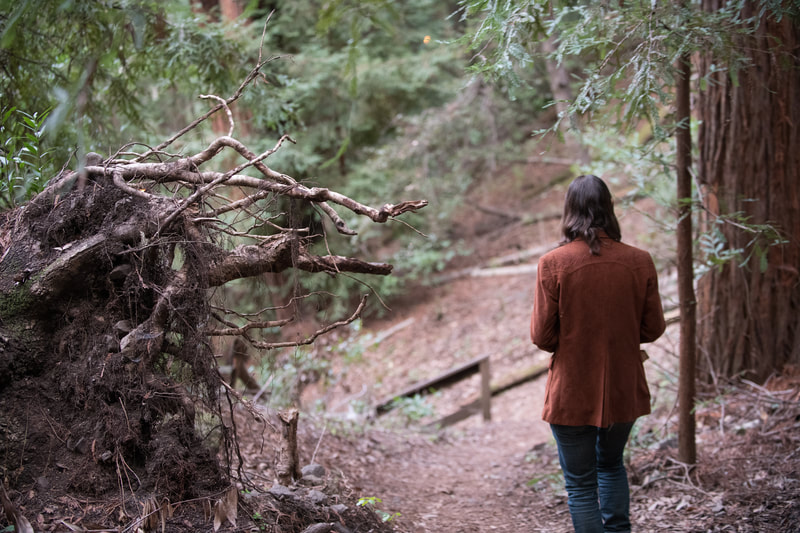

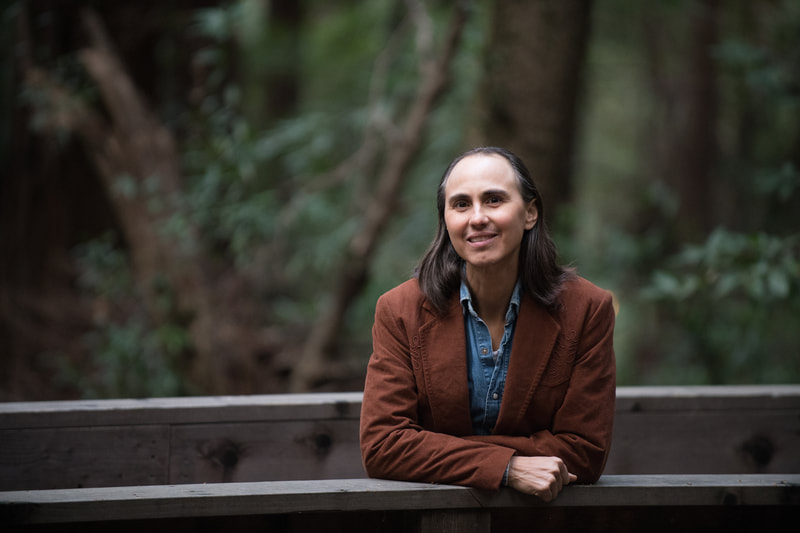
I started this tumblr at Montalvo last year and the first posts were most careful like carefully penned and now I’m experimenting with putting messier or at least more real-looking poems up there, these are the poems as they were written not the ‘fair copies.’ So they are like sketches, and they sometimes include my doodles. And I love the look of the blue ink on yellow legal paper. I’ve always written my poems this way and enjoyed them as written objects, but when they would become published they’d be denuded of some of this magic. So somehow posting these poems is letting me become a visual artist.
The first of the new poems I wrote last week came out of a walk with Ariana from the creek up to the Italianate Garden, when I told her the colors on the bark of the eucalyptus tree made me want to be a watercolor painter, and she called me a liar, and I had to admit that it was a lie, and I said well it makes me want to want to be a watercolor painter. I had been thinking also about the flammability of eucalyptus, its non-indigeneity, and its suitability and malsuitability to its environment in California. The poem has an epigraph from Dickinson ‘Twas Awkward, but it fitted me.’
Read more about Julian’s work here.
Click on the images to the left to read his latest poems “Valentimes.”
Lucas Artists Fellow – Visual Arts U.S.A.
THIS WEEK IN MY STUDIO (January 10, 2019)
Visual Artist Dana Harel

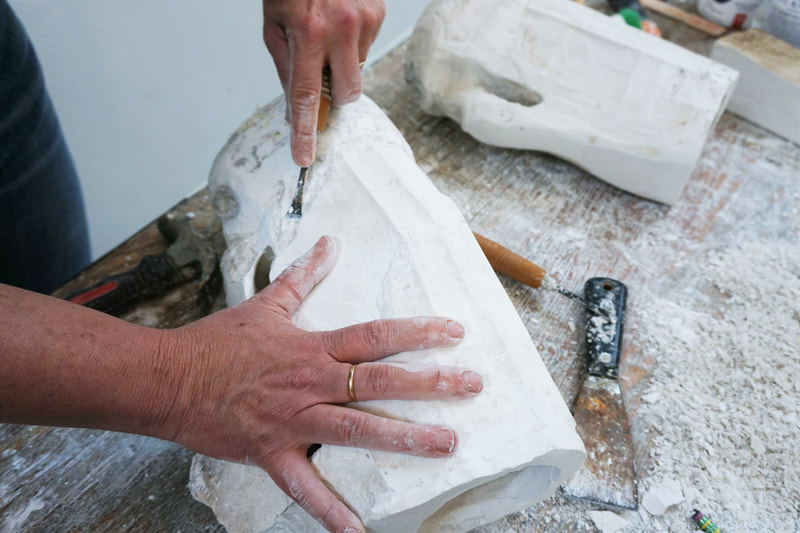

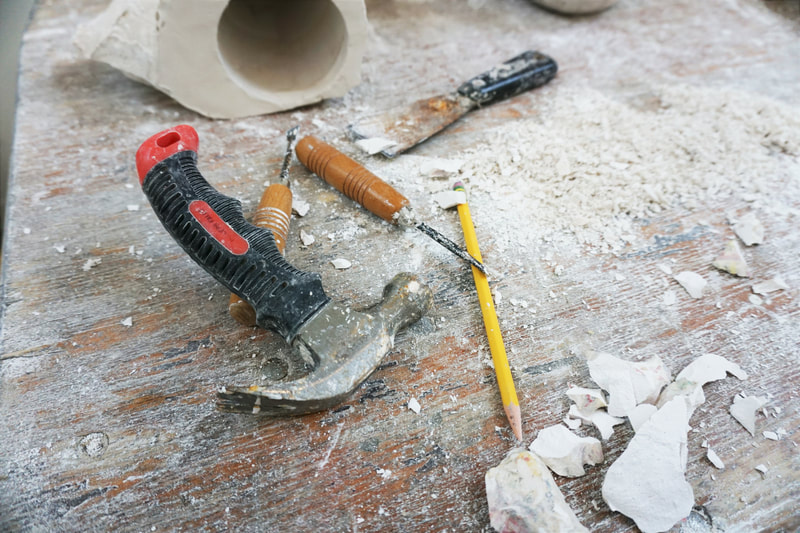
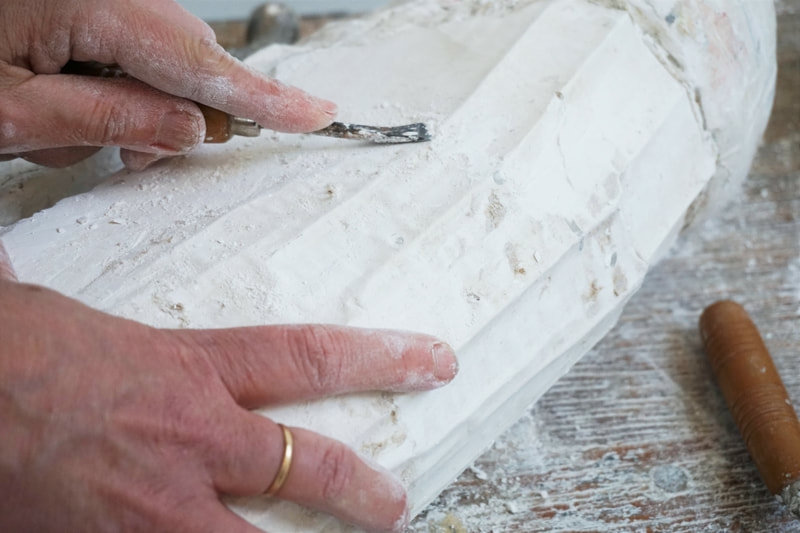
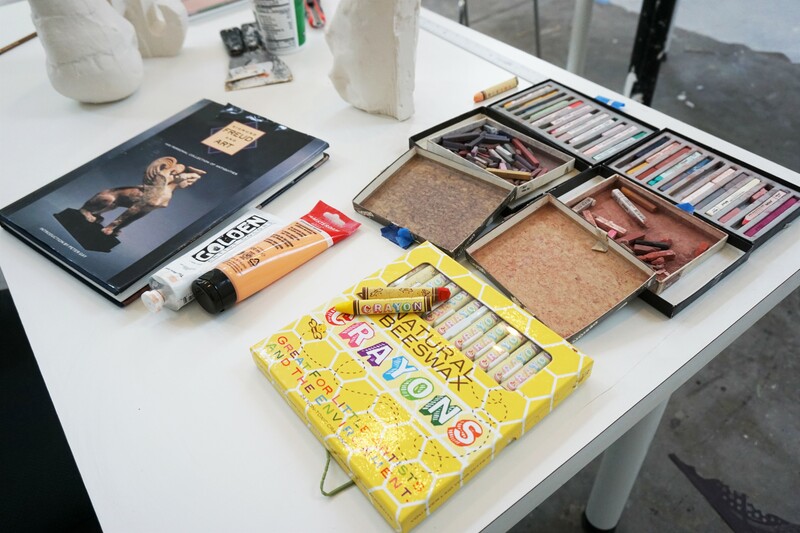
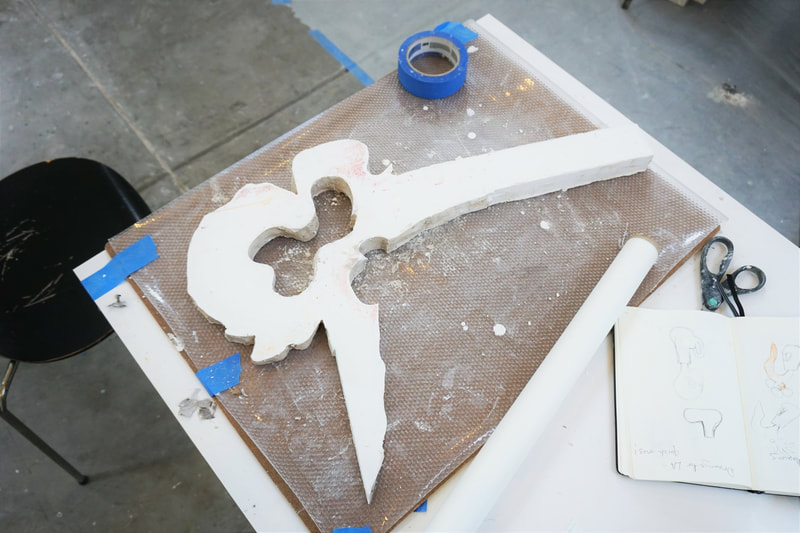
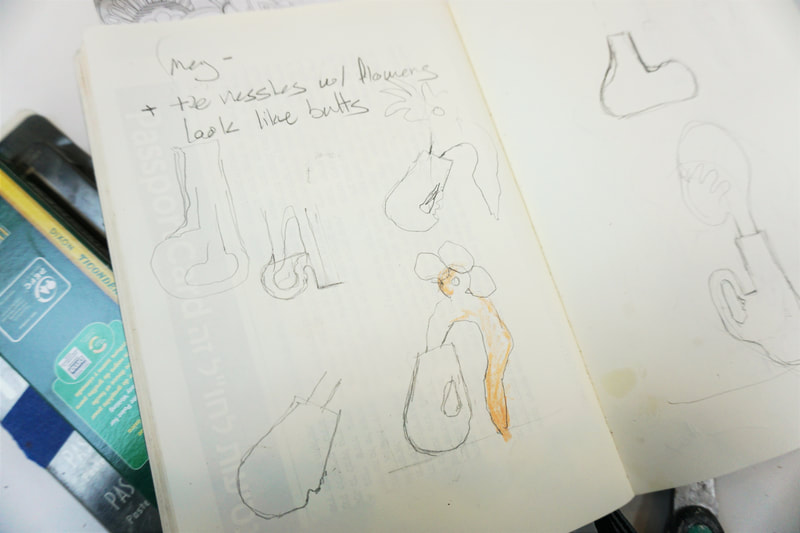
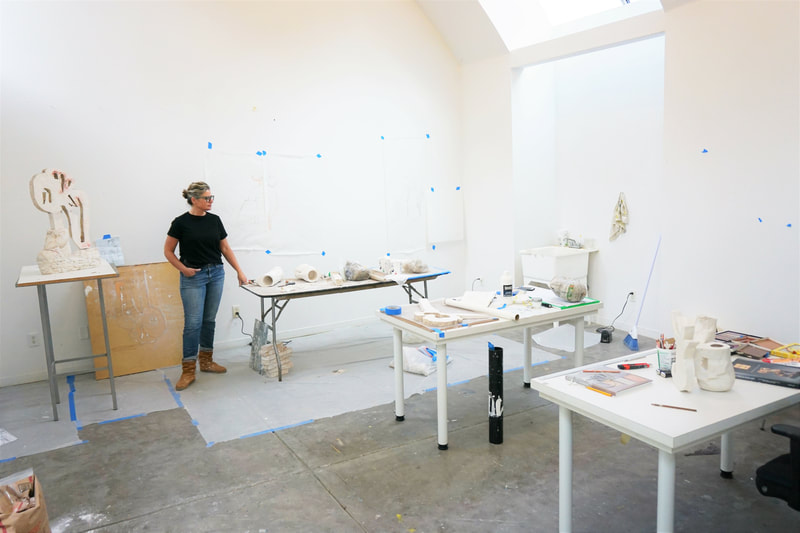
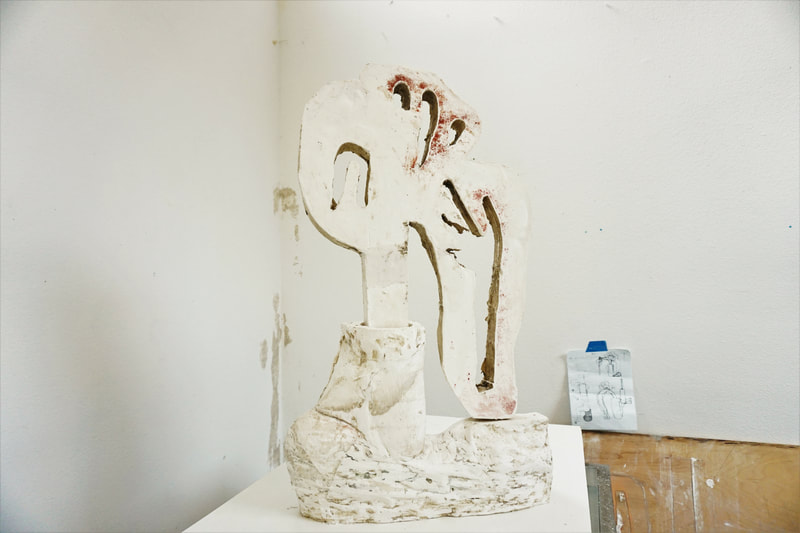
This week at the studio, I spent my time producing and reflecting on a new body of work. My main medium had always been drawing on paper, incorporating sculpture, photography, printmaking techniques, and clay on paper. Clay always informed my large-scale drawings and recently I leaped further into experimental mode, creating sculptures. I find the shift from two-dimensional work to three-dimensional exciting. Yet I haven’t had the time to write about this new way of working, shifting between mediums. The time at Montalvo allowed me to reflect and write about my process, and put into words an otherwise intuitive process of making.
Read more about Dana’s work here.
Lucas Artists Fellow – Composer & Musician U.S.A.
THIS WEEK IN MY STUDIO (January 6, 2019)
Composer and Musician Jane Rigler
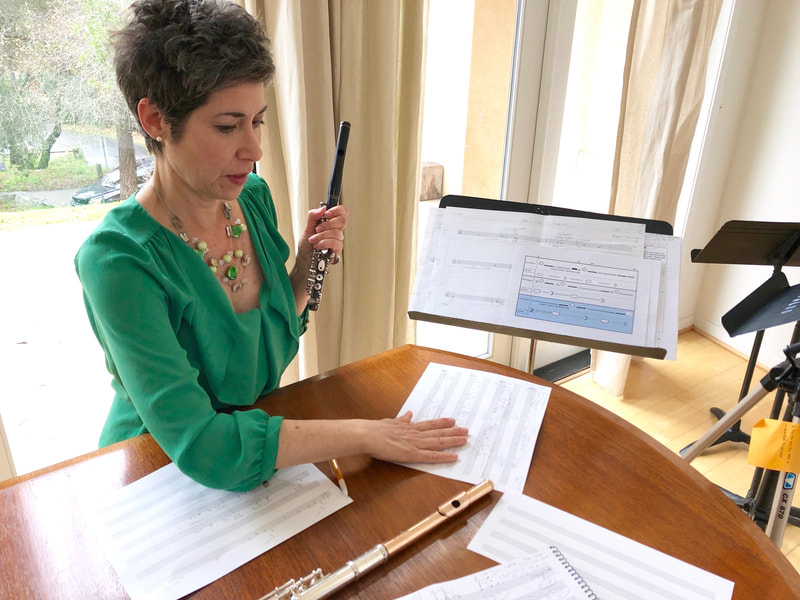
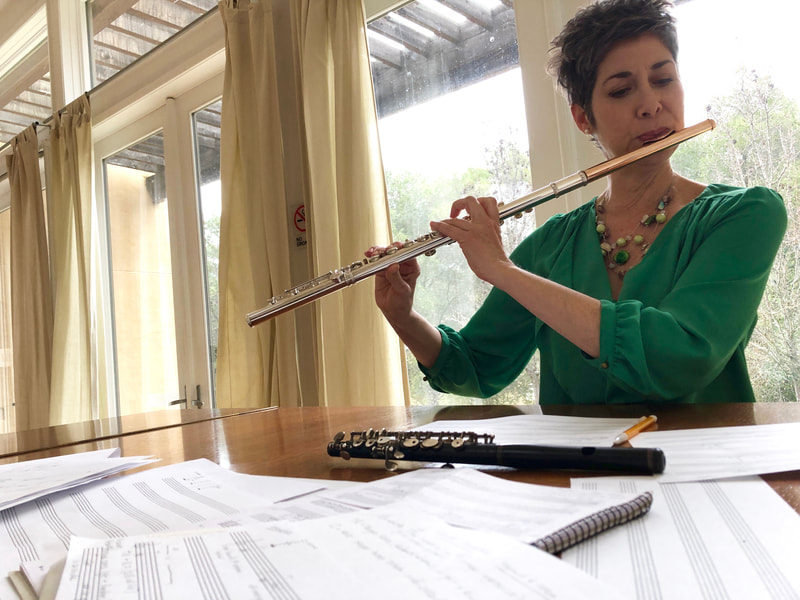
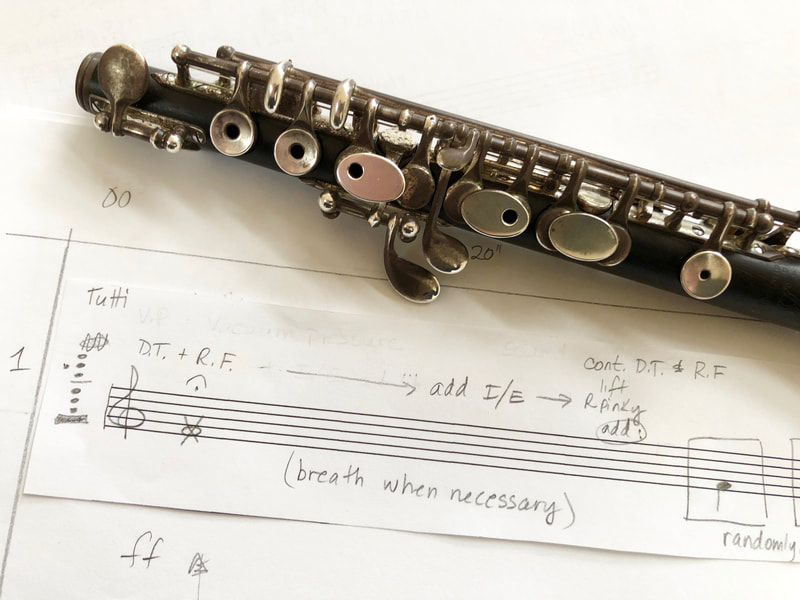
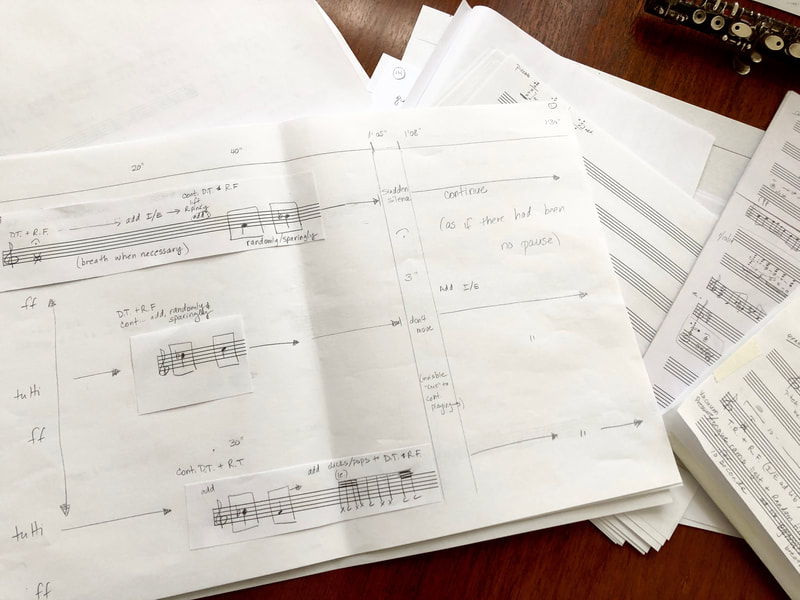
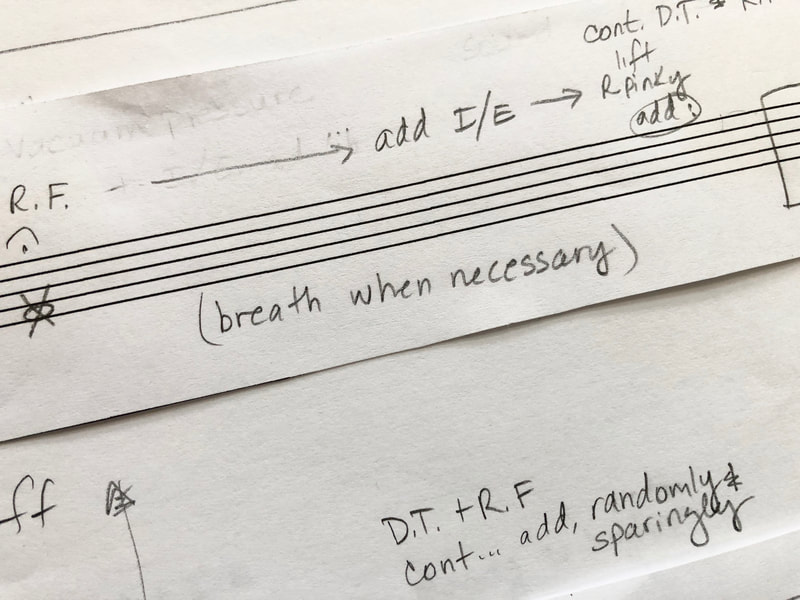
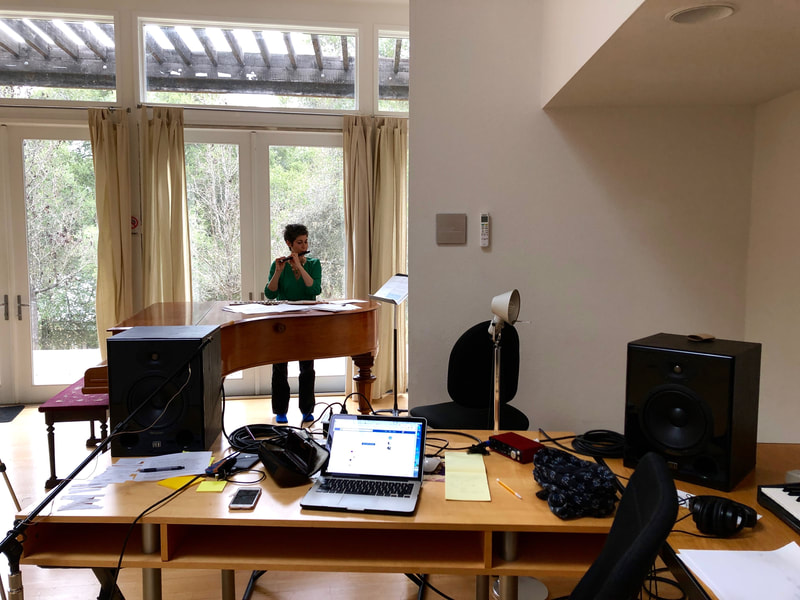
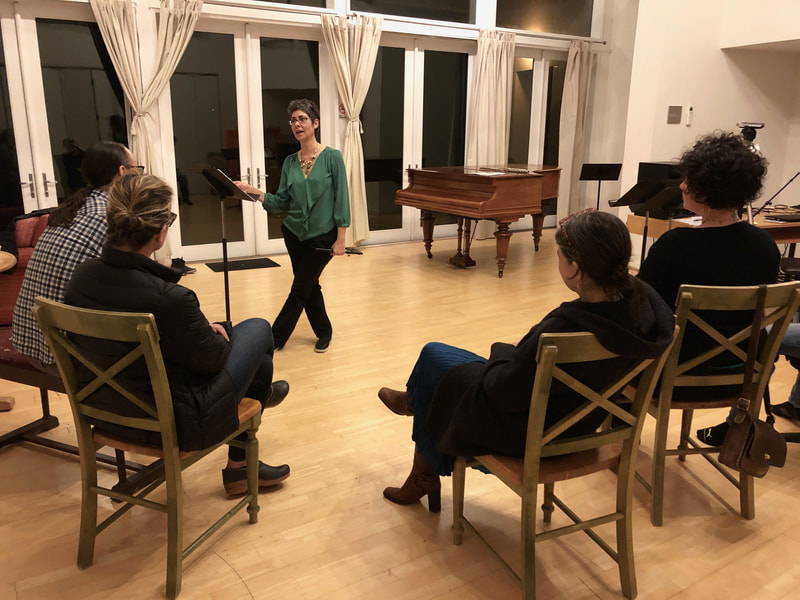
This week in my studio, I am working on a newly commissioned composition for the Areon Flute ensemble. Arboreous Incantation (a working title) is inspired by my recent study of trees and plants. Because I am exploring unusual musical techniques, my time is being spent refining new scoring notations.
Read more about Jane’s work here.
Guest Artist U.S.A.
THIS WEEK IN MY STUDIO (January 6, 2019)
Visual Artist Kija Lucas




This week in my studio: I am vacillating between the silence of being alone with my work, listening to news podcasts, and having bad television play in the background as I sort through my grandmother’s notes and make the last several images of “Collections From Sundown,” a body of work about her relationship with Alzheimer’s disease. I am also drinking plenty of caffeine and reading books in order to prepare for a new body of work I will begin this coming summer.
Read more about Kija’s work here.
Lucas Artists Fellow – Literary Arts, Non-Fiction U.S.A.
THIS WEEK IN MY STUDIO (January 1, 2019)
Non-Fiction Writer Daniel Bertrand Monk
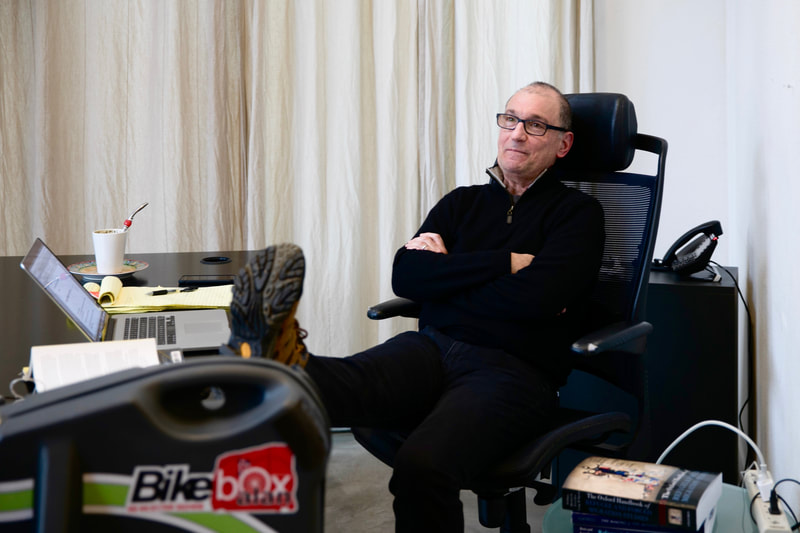
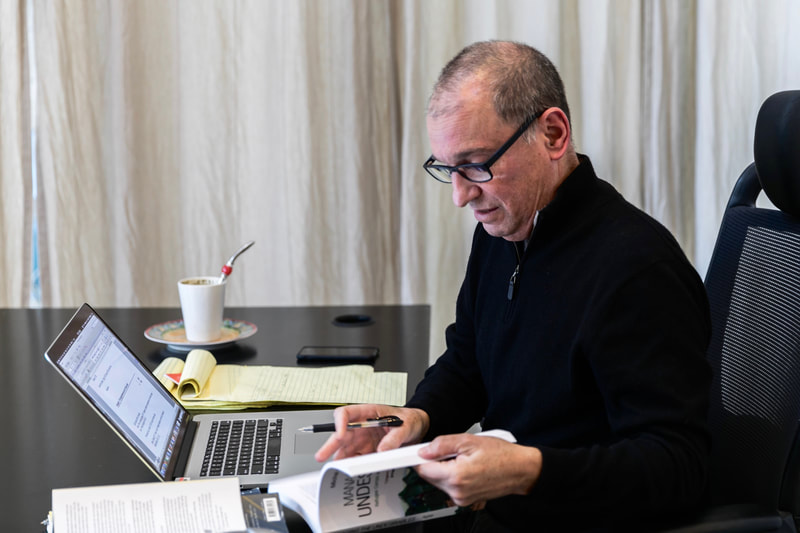
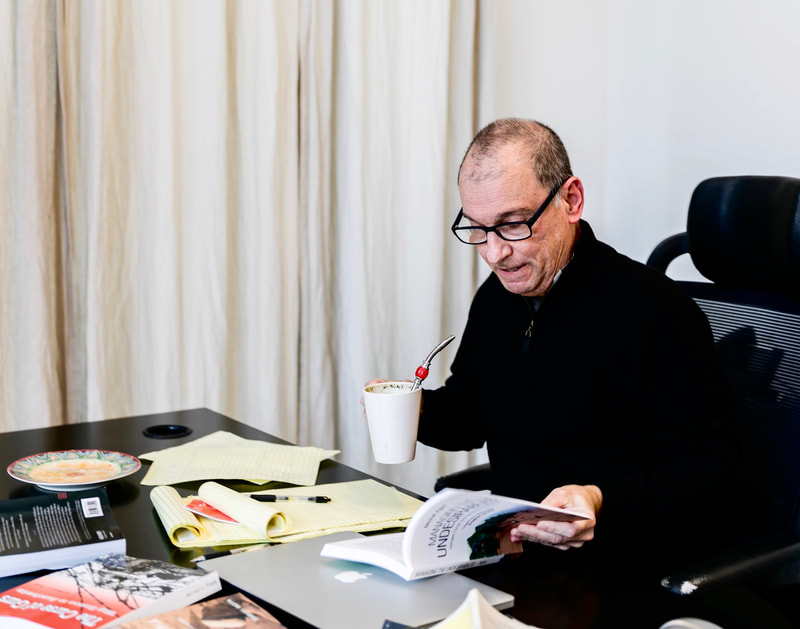

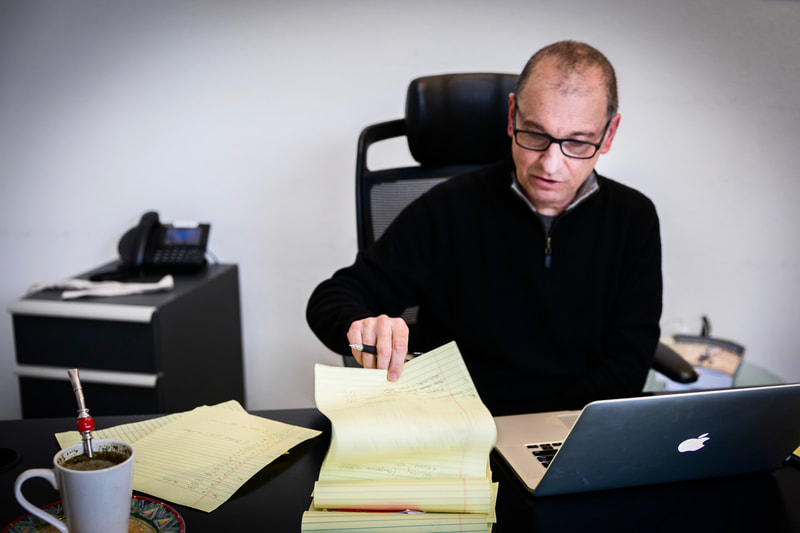
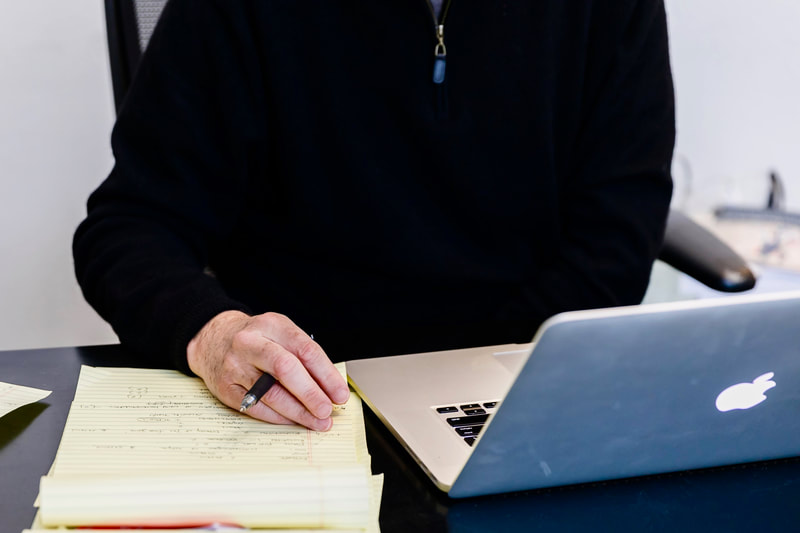

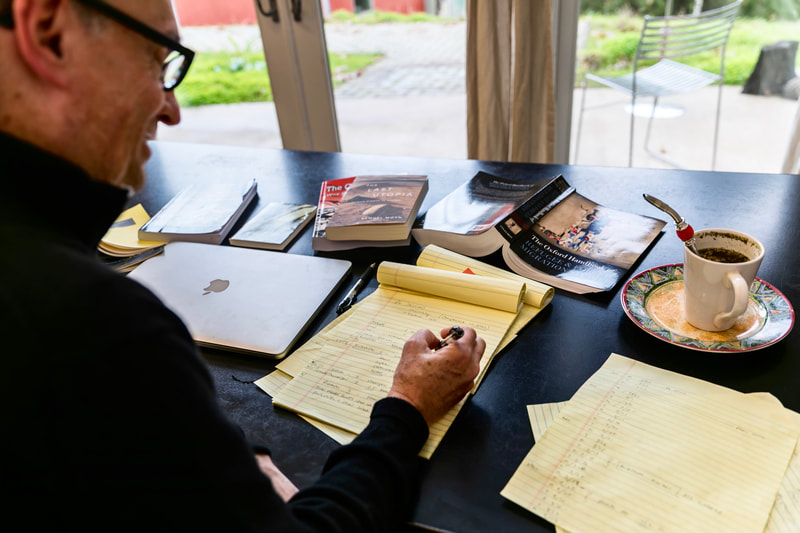
This week in my studio, I wrote about the way we manage refugees by not managing them. Focusing on an unusual protest that took place in Cairo in 2005, I examined a moment in which refugees and asylum seekers built their own impromptu camp directly in front of the United Nations High Commissioner for Refugees’ offices (UNHCR), so that they might be acknowledged as “persons of concern” to the international community. This protest by way of architecture was ultimately unsuccessful: at least 28 people were killed when the UN informed the Egyptian government it could not reach an agreement with the protesters and riot police swept into the camp. But after this catastrophe, the international community began to develop new euphemisms for protection—that is, ways of talking about “protection” that would include such people. I am tracing the euphemisms we offer the dispossessed in lieu of much else.
Lucas Artists Fellow – Composer & Musician U.S.A/Japan
THIS WEEK IN MY STUDIO (November 20, 2018)
Composer and Pianist Motoko Honda
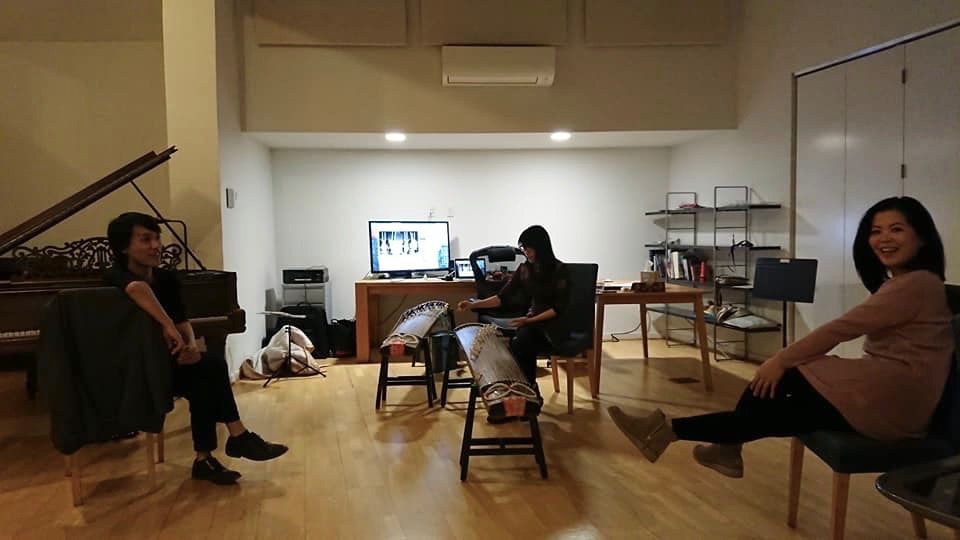
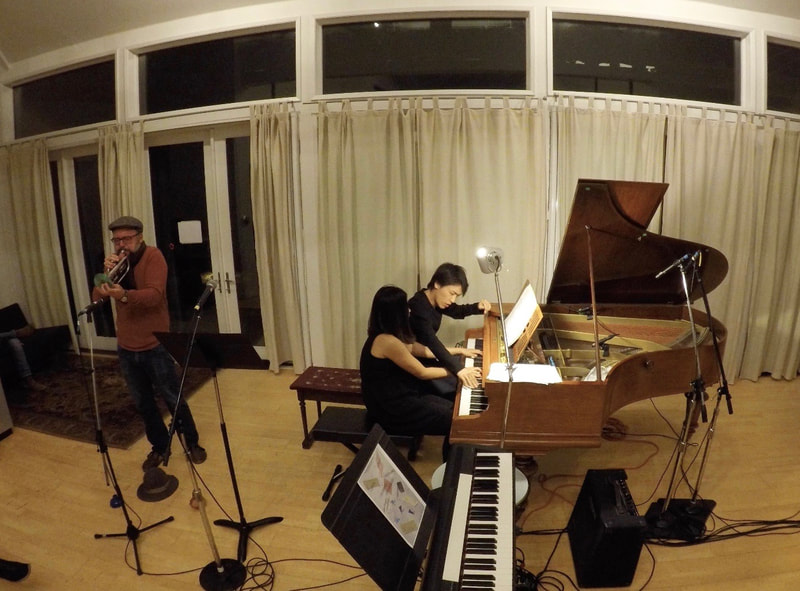
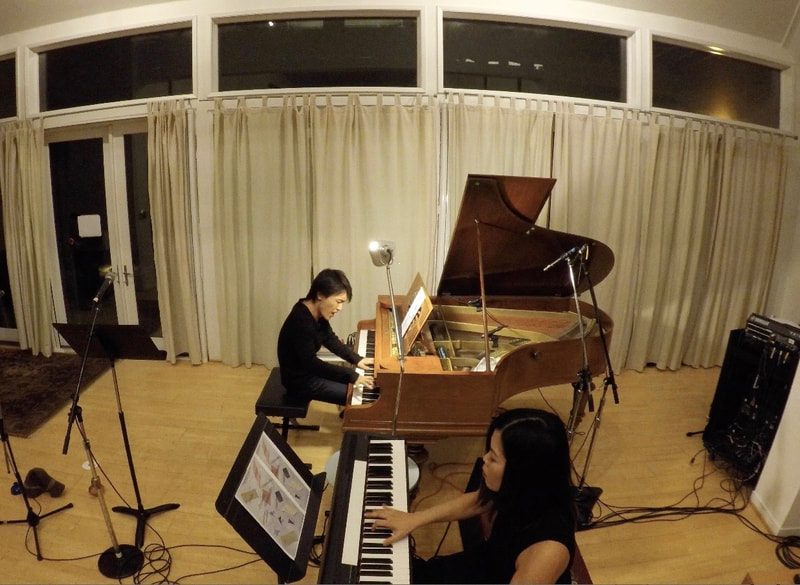
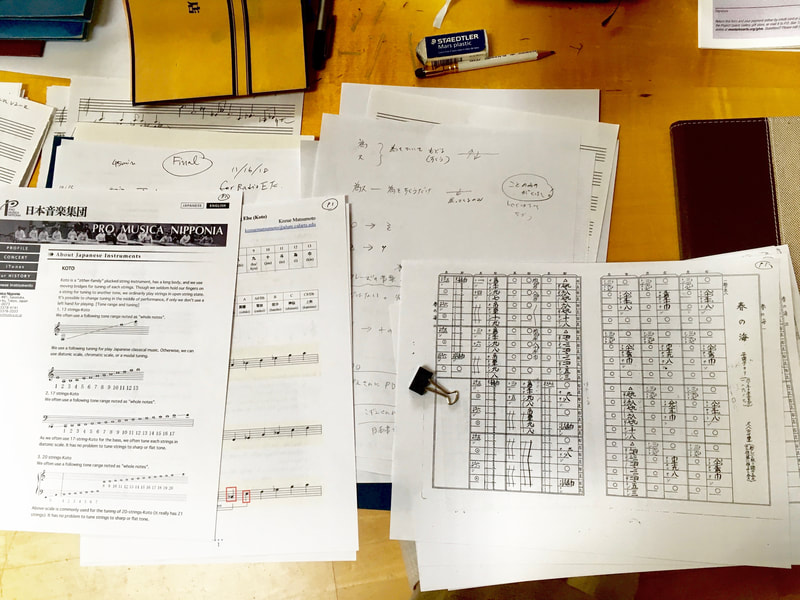
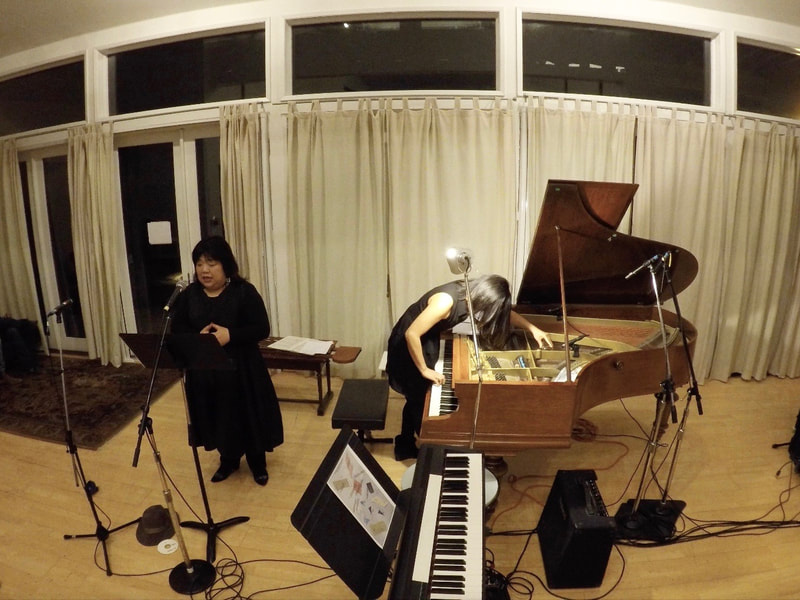
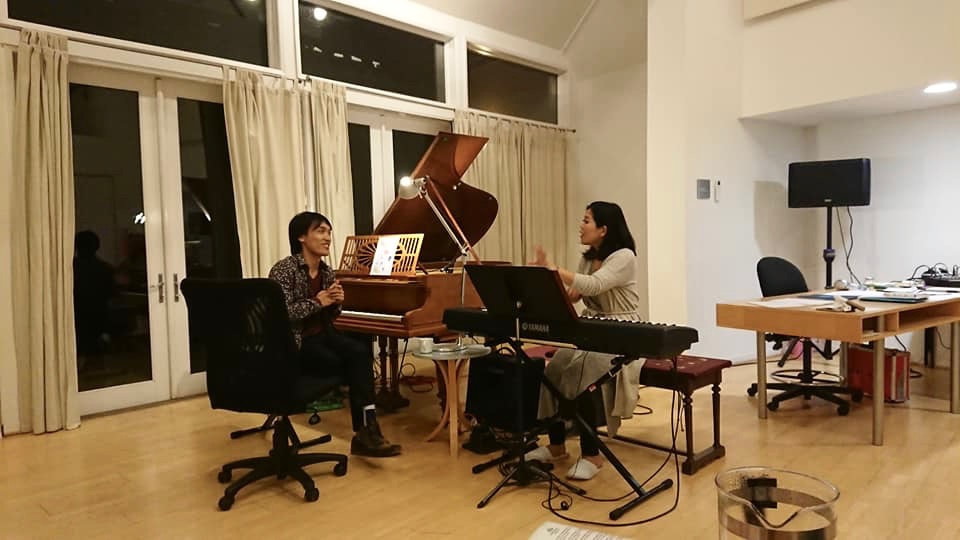
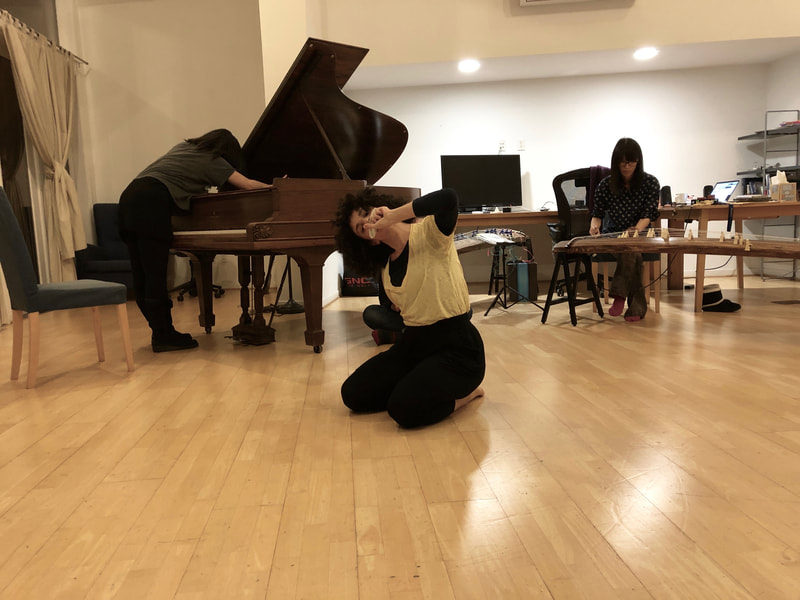
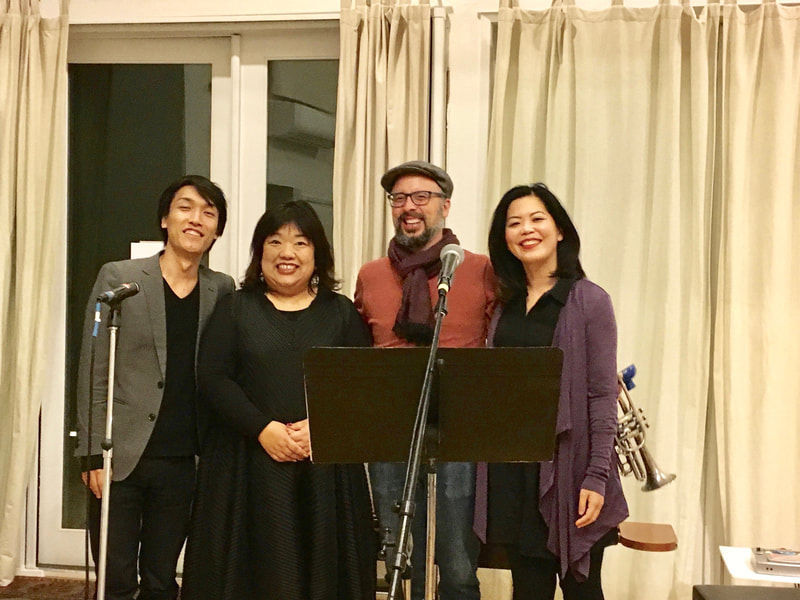

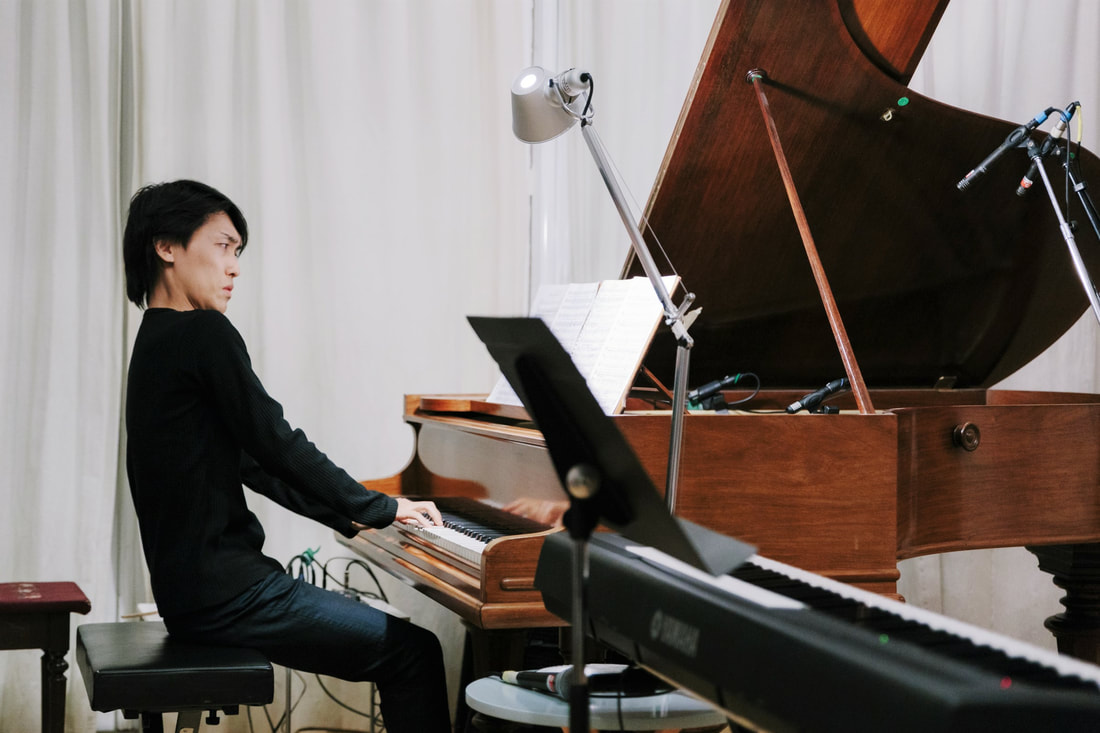

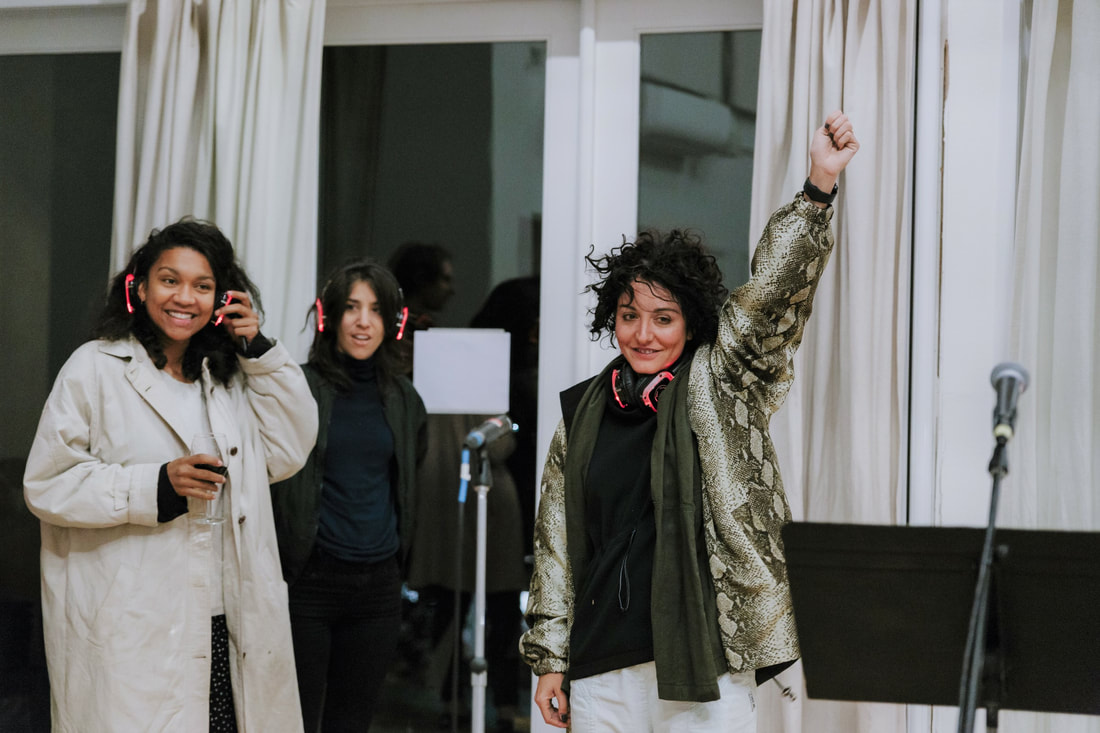
(Above) Photos: Diana Larrea (of RADIOEE.net)
Many things have happened since my arrival at Montalvo. Two collaborators have flown in from my home town in Northern Japan and one collaborator from Los Angeles. The first week, I was mostly preparing for the arrival of my collaborators. Although I knew my collaborators, I had never worked with them before nor met one of them.
I studied the information gathered by using a Q&A from my collaborators in previous months, organizing the ideas of possible experimentations and collaborative projects. I spent a lot of time studying the oldest Japanese poem collection called “Manyo-Shyu” as I was inspired by the texts for the vocal works. I was also planning the possible concert program for RADIOEE’s live broadcast from my studio, happening November 16. Since I didn’t know what my collaborators and I were capable of doing together until their arrival, it was challenging. But I set up my studio based on the information I had and I hoped for the best.
Upon the arrival of my collaborators from Japan, Keiko Takayama and Keisuke Kodaira, we jumped into the work immediately, as we only had a total of eight working days. My method of collaboration is to get to know my collaborator as a person and as an artist first. As a composer, I am interested in finding our common threads of interests, surprises, beauty, strength, and music, which is only made possible by the unique bond I find during these processes. This project was a particularly challenging one as I had to face my past and home town, something that I left 23 years ago. It was completely mind-blowing–an experience I could not have anticipated. Our musicality felt so far apart, yet we connected immediately on a deeper level. Music that was so familiar yet so foreign emerged from our collaborations. We were all walking a fine line between comfort and discomfort.
We were able to present some experimental works of a deconstructed Debussy piece, Japanese storytelling with soundscapes, and two piano compositions for the RadioEE broadcast. I also began writing two new compositional works specifically designed for my Japanese collaborators. I will continue to work on these compositions and we will most likely perform in a concert in Japan, and hopefully in the U.S. in the near future.
The third collaborator, Kozue Matsumoto, arrived shortly before the two others left, and we were able to get together to talk and have a jam session. Kozue is a Koto (Japanese Zither) player, and funny enough, none of us knew much about Japanese traditional music. Even the two from Japan were fascinated.
After the two had left, Kozue and I had about a week to work on music together. She is also from Northern Japan and left her home town at a young age. We discovered that our experience in Japan and the story of leaving our home towns were strikingly similar. It was a beautiful moment, that we both knew how it felt, leaving our homes, and building our lives in the U.S. through music. Our collaborations were easy and smooth, but filled with so many discoveries. We discovered how different yet similar our instruments are and how beautifully their sounds blend together. I was also able to study Japanese Traditional Koto notations and techniques from Kozue, expanding my knowledge about world music, feeling the full cycle of my world music education, finally arriving back to my roots. Sometimes it takes a long time to arrive at home.
Now, they all have left, and new artists are arriving from all over the world. My mind begins to wander to other parts of the world. I’m mostly reading poems from the Middle East, a part of the world I don’t know much about, while preparing for my upcoming concerts.
I am still processing all that happened in the past three weeks; it was filled with so many thoughts and intense emotions. I feel that my future is colliding with my past, and my world is colliding with the small town I grew up in. But I know that I am not scared anymore. I know that I took a big first step that I couldn’t have taken before in anticipation of many changes to come in my music and in my musical life. Read more about Motoko’s work here.
Listen to Motoko’s performance for the RADIOEE.net broadcast AUTOPILOTO here.
Lucas Artists Fellow – Visual Arts Italy
THIS WEEK IN MY STUDIO (October 1, 2018)
Visual Artist Matteo Rubbi
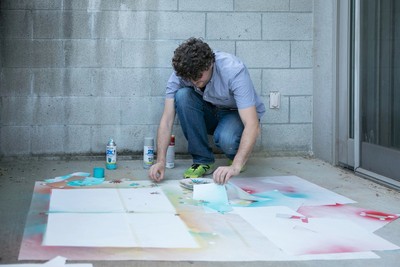
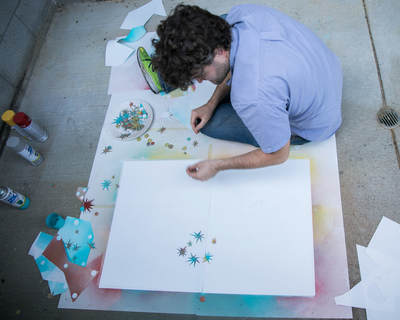
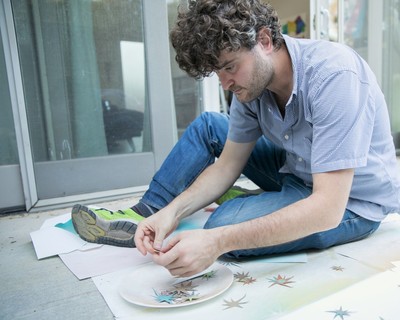
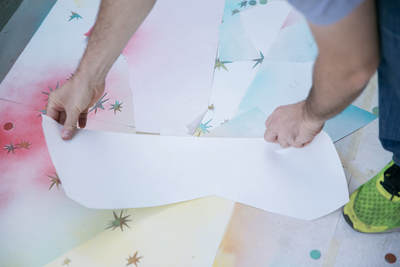
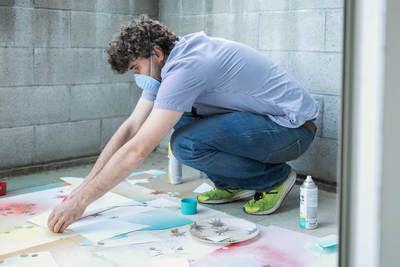
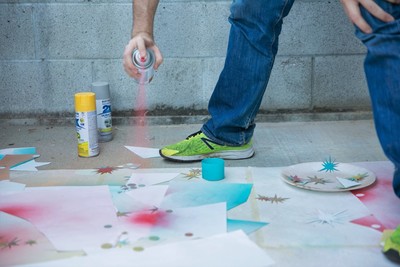

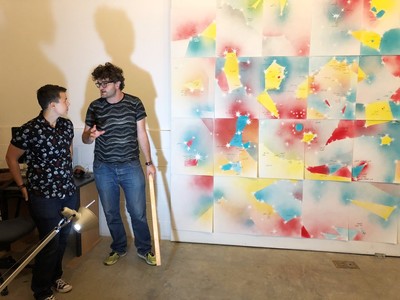

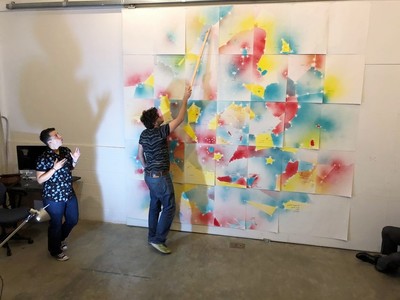


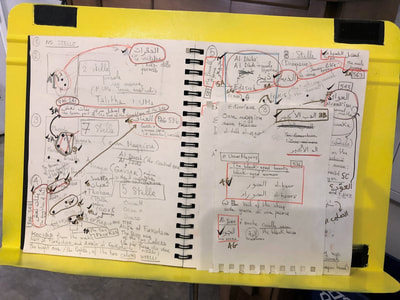
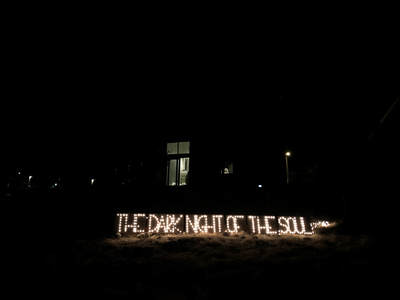
Every time I come to Lucas Artists Residency Program something magic happens. On this visit I worked with my partner Zeyn Joukhadar on the creation of a large map of the night sky. Our idea was to construct an immersive experience where viewers could get lost following the lines of constellations and exploring the names of stars. Drawing on Islamic astronomy, we were especially interested in delving into, and uncovering, the old Arabic names of stars and shapes of constellations.
I started my work using the rich research materials that Zeyn Joukhadar had generated for their novel The Map of Salt and Stars as my guide, slowly adding yet more sources. Star by star, this process was like exploring an incredible cosmic archaeological site (the largest ever!). Excavating layers of sediment piled up over time, we traveled down into the layers of overlapping meanings associated with groups of stars. We began to see traces of larger and more complex constellations that today are only partially readable or lost. Hints of different ways to look at the sky.
Zeyn and I began to draft the map, trying to use and show all the information we had collected during this research process. We presented this sky map during an open studio/event called “The Dark Night of the Soul” (and we created a light sign depicting these words, which we installed ironically half-way up the hill along the path to our studio). Often used to describe a spiritual or existential crisis, this text also refers to the narrative plot point when everything seems to fall apart just before the hero’s final resurrection. We invited other fellows at the Lucas Artists Program to also present their work, especially as it related to the theme of the event.
Read more about Matteo’s work here.
Lucas Artists Fellow – Literary Arts, Fiction U.S.A.
THIS WEEK IN MY STUDIO (September 25, 2018)
Fiction Writer Zeyn Joukhadar
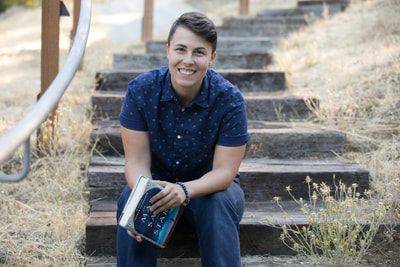







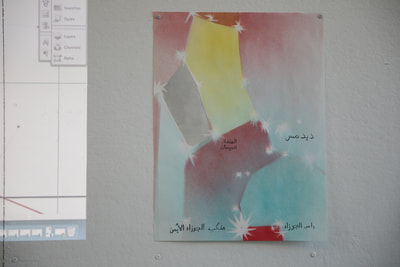




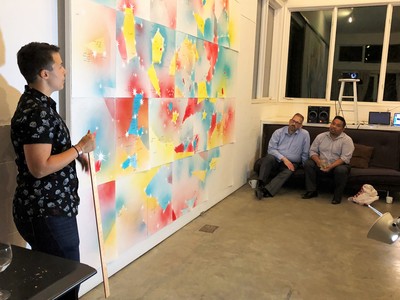

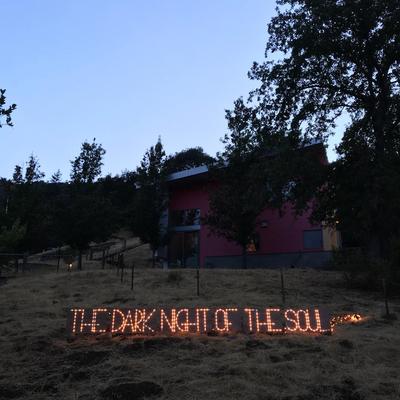
This week I continued to revise my second novel, the story of a fictional Syrian American bird artist who rises to fame in the 1930s only to disappear at the height of her career, and the contemporary descendant of her childhood best friend in Syria who sets out to find out what happened to her. In addition to my work on my novel, my partner Matteo Rubbi and I put on an open studio entitled “The Dark Night of the Soul.” The focus of our open studio was the night sky, for which we created a floor-to-ceiling star map populated mostly by pre-Islamic Bedouin constellations labeled in Arabic. This work stems from months of research that I began when I was writing my debut novel, The Map of Salt and Stars (Touchstone/Simon & Schuster, 2018); Matteo and I have continued to explore this research together at Montalvo. We hope to continue this collaborative project in a larger, fuller form in the future.
Read more about Zeyn’s work here.
Lucas Artists Fellow – Literary Arts, Playwriting U.S.A.
THIS WEEK IN MY STUDIO (September 20, 2018)
Playwright and Performer Alva Rogers
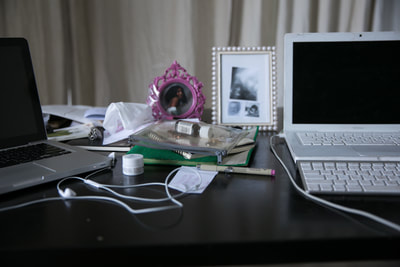


Daydreaming dreaming dreaming
Writing visioning journal writing memoir writing. Playwriting writing
Visioning a world in which two characters exist in my new play-in-process
Roman and Julie
Revising revising
Remembering astonishing stars and twilight on the darkest night
and the brightest bluest sky without clouds
Expressing gratitude for solitude and silence that enables the listening and the
writing
writ – ing
Read more about Alva’s work here.
Lucas Artists Fellow – Visual Arts, Theatre U.S.A./Azerbaijan
THIS WEEK IN MY STUDIO (August 30, 2018)
Theatre Maker, Director, Curator, and Educator Simón Hanukai (and his team)
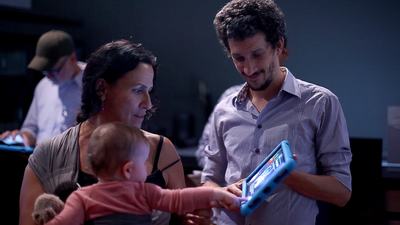
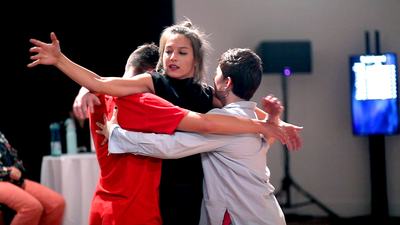
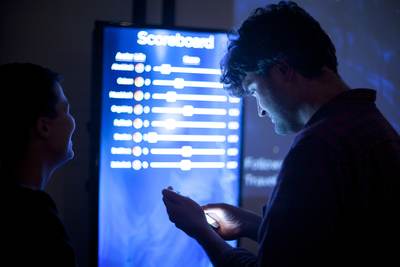
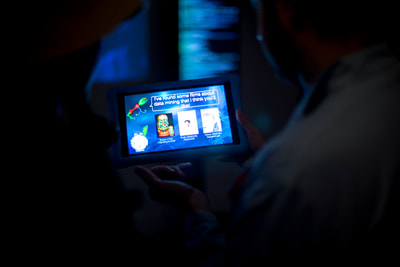
This week in our studio, our team is prototyping, animating, writing, choreographing, teasing those of us who make bad coffee, eating animal crackers by the fistful and forging through the jagged boundary between artistry and math. The end result has been well worth it: the first sparks of life have appeared within the world of DATAPRINT.
Our next month as LAP artists will be focused on digital installations, choreography, and teaching David how to work a French press. DATAPRINT invites a conversation on digital autonomy by acquiring the virtual fingerprints of its audience through a succinct, interactive adventure, and then cultivating a world of dynamic, sentient data. Visitors to the exhibit compose an avatar simply by observing their own virtual habits, generating a digital incarnation that is then released into an ever-evolving ecosystem of social networks, surveillance, economics, and analytics.
Read more about Simón’s work here.
Lucas Artists Fellow – Composer & Musician U.S.A.
THIS WEEK IN MY STUDIO (August 27, 2018)
Composer and Musician Alex Asher
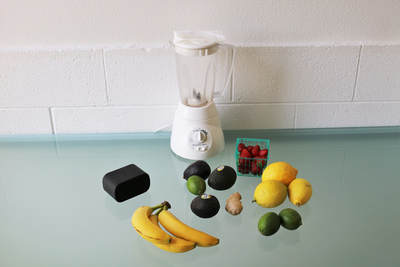
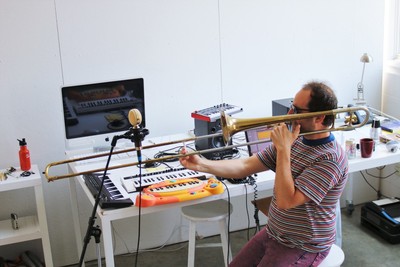
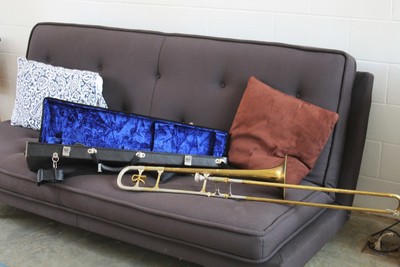
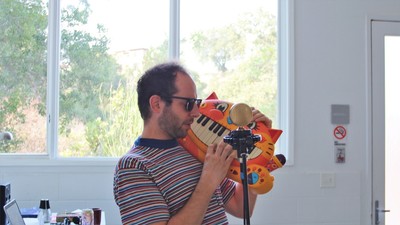
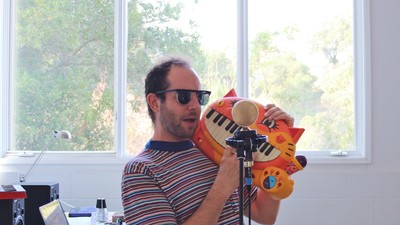
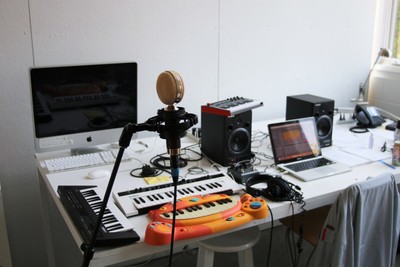
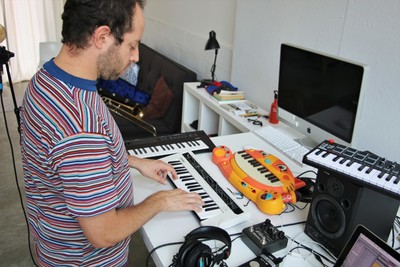
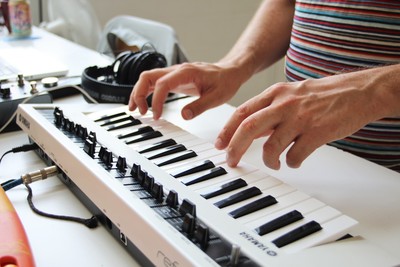
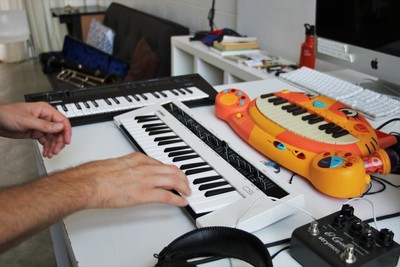
This week in my studio (my LAST week at Montalvo) has been very similar to the previous few weeks here this August. I’ve set goals and checklists for myself both musical and personal. I’ve tried to just get into it and keep moving while not putting up any barriers in the creative process. Personally, it’s a goal to run up to the summit of Montalvo’s hiking trails daily. It’s also a goal to meditate daily. Over the last couple weeks, I’ve been using the Sonic Meditations of the great musical thinker Pauline Oliveros. I also have a short daily Ashtanga yoga routine which has unfortunately often fallen by the wayside. . .
To view the full text, click here.
Read more about Alex’s work here.
Lucas Artists Fellow – Literary Arts, Fiction U.S.A.
THIS WEEK IN MY STUDIO (August 17, 2018)
Writer ZZ Packer
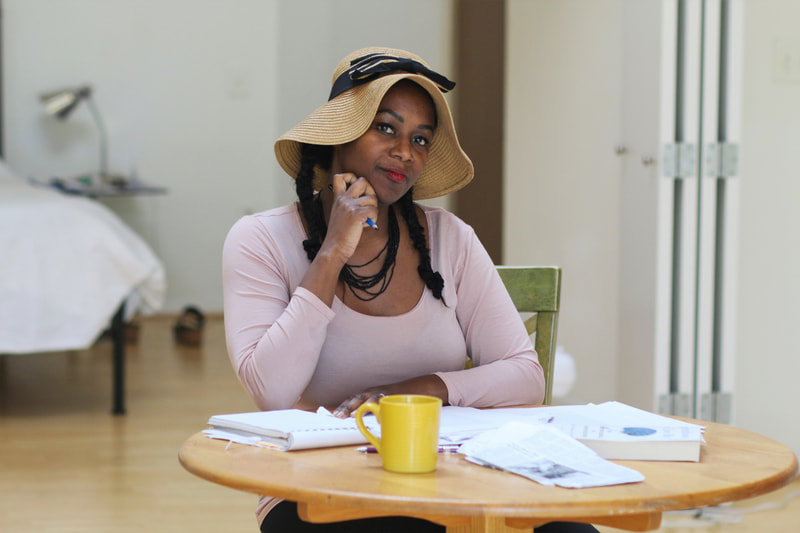
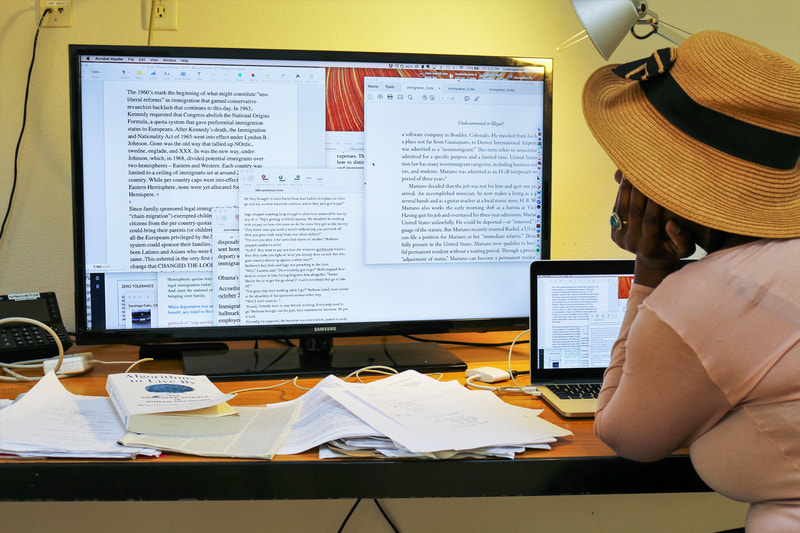
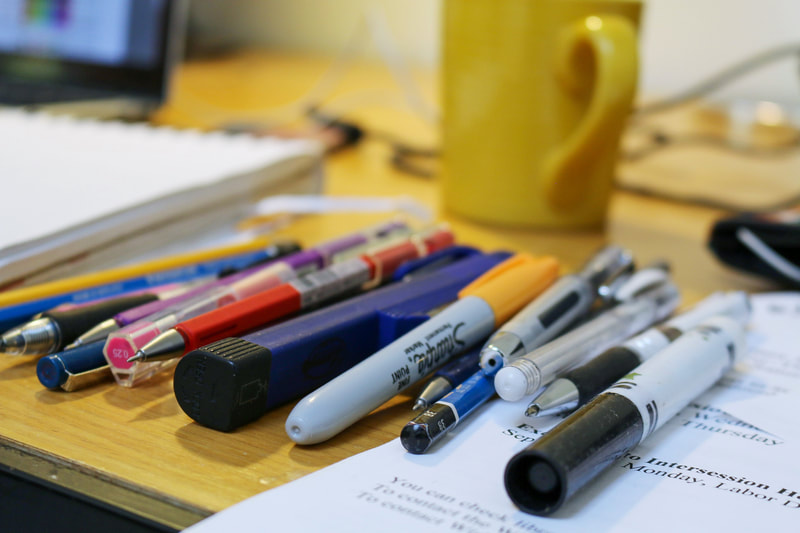
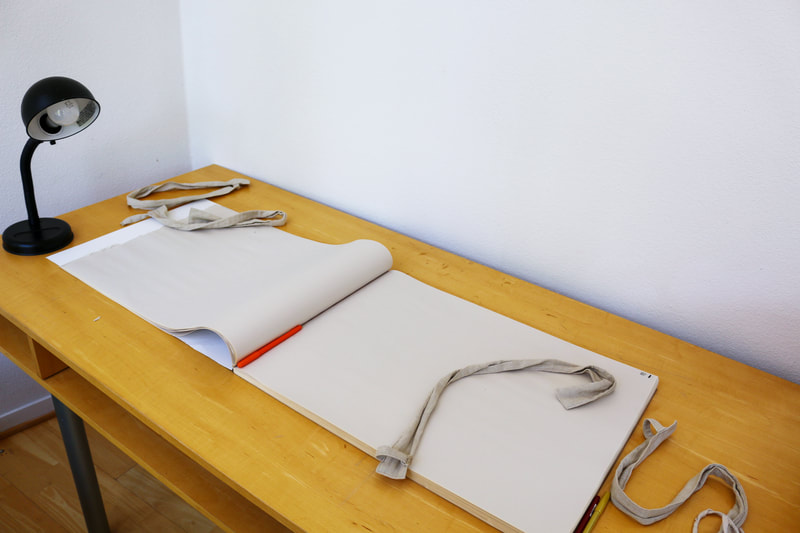
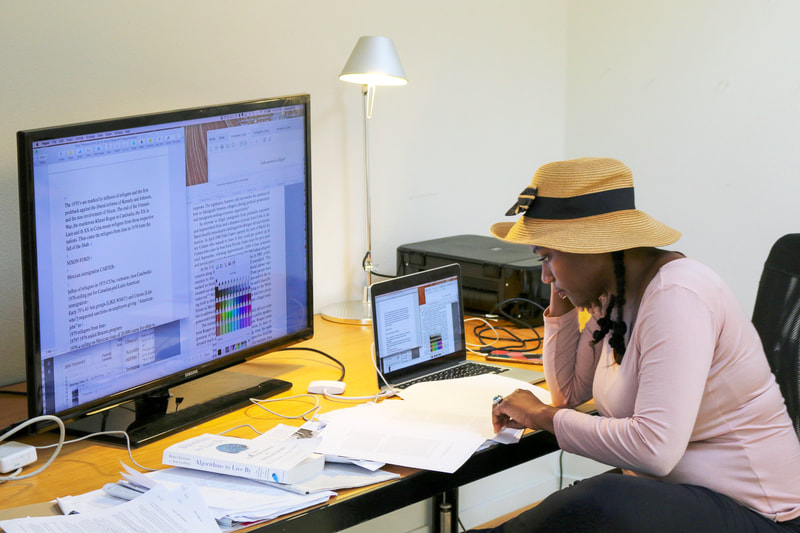
The great thing about waking up in the Composer’s studio (as a fiction writer) is watching the early morning light illuminating the grand piano as if to say “PLAY ME.” I get up and stretch and think of what I might play, then remember I don’t play piano, and haven’t since I was twelve. But just seeing the piano–and knowing I don’t have to play it–fills me with relief when I sit down at my writing desk; all I have to do is put one sentence down, then another. Then another. It’s not ever quite that easy, but telling myself this gets me through it.
This week I’ve taken a break from working on my novel about the Buffalo Soldiers to finish an article on immigration–one I hope that’ll be less reportage and more of an exploration (and a bit of education) about how we got to where we are. Why are we rejecting asylum seekers? Have we, as a nation, done anything like this before?
For most of the week, I feared writing non-fiction and the attendant research involved would not be “artistic” enough, and jolt me out of working on the novel, but the day I went back to the novel for a bit, I saw the dilemmas of the particular section I’d been working on with fresh eyes: every interaction in the late 1870’s was between groups fighting it out for what their idea of being an “American” meant, whether they were black soldiers demanding respect by way of their army status, or Native Americans insisting that treaties and land rights be honored, or Chinese laborers facing segregation in the West. Citizenship has always been more a hustle than a guarantee, and like any exclusive club, predicated on who is kept out rather than the sound constitutions of those within.
I doubt I’d have had the clarity to work on two projects at once had I not been able to rove the grounds of Montalvo, smell the eucalyptus, listen to the buzzing insect life, roam the hills, and receive impromptu Italian lessons from the visiting residents. This week felt like a true gift.
Lucas Artists Fellow – Composer & Musician U.S.A.
THIS WEEK IN MY STUDIO (August 10, 2018)
Composer and Musician Mike Gamble
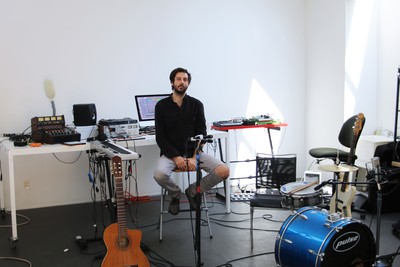
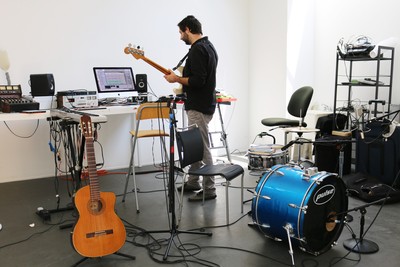
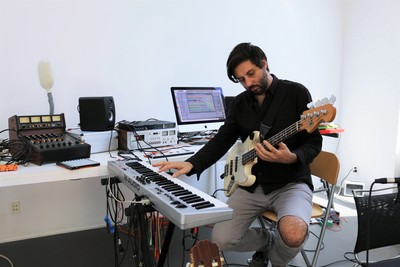
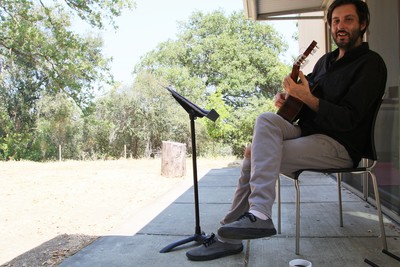
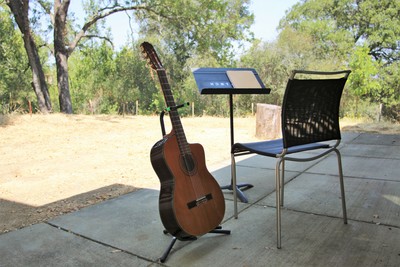
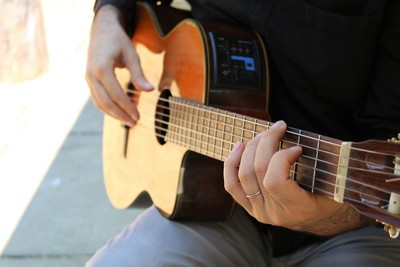

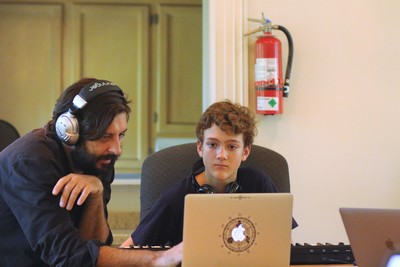
This week in my studio, I shifted the focus from my audio reactive performance practice to composing music for my one-man electro-acoustic project, Scrambler. Every morning I would sit outside in the sun with my classical guitar, drink coffee, and compose from scratch. After collecting sometimes fragments, and other times fully realized frameworks, I would then immediately head into the studio and track what I had written. First I would lay down the foundation on my guitar. After choosing the most fitting take and editing it appropriately, I would then layer in drums, electric bass, and sometimes an analog monophonic synth. My goal each day was to finish a draft by dinner time and then have a listen afterward and make adjustments, edits, and overdubs into the night. I would mutate each track by either processing it, converting the audio into MIDI, or utilizing an assortment of outboard effects such as analog delay, chorus, fuzz, and cassette tape saturation. I am so thrilled to be here at Montalvo as a Lucas Artists Fellow to workshop these new ideas. Having no other distractions other than a sea of crickets and an occasional coyote or bobcat call is quite a blessing.
Read more about Mike’s work here.
Guest Artist U.S.A.
THIS WEEK IN MY STUDIO (July 31, 2018)
Poet and Playwright Aaron Jafferis
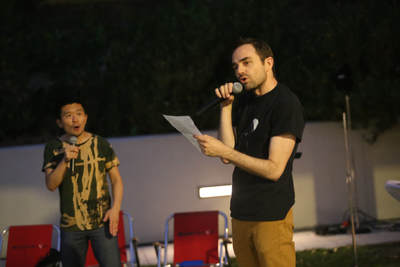
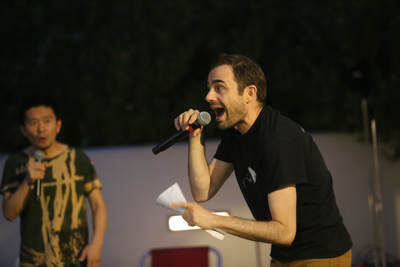
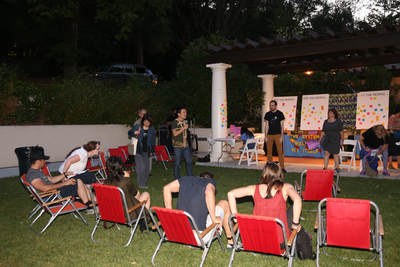
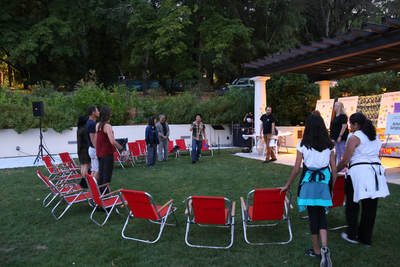
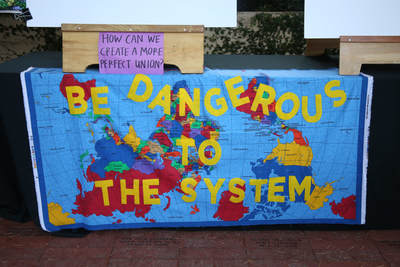
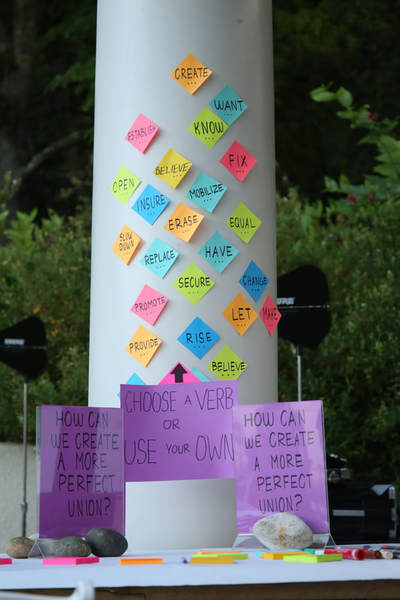
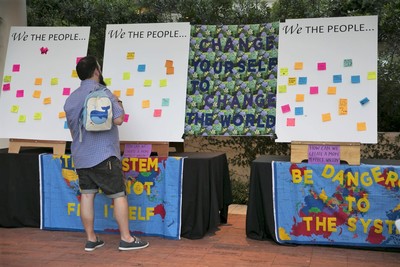
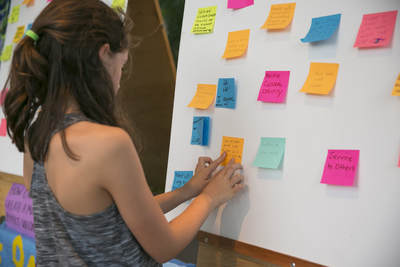
This week in my studio it was hot so I covered the windows and turned the fan on high and took off all the clothes of my words so they would get to the point which is the point of most of the rally songs my collaborator composer Byron Au Yong and I are writing for our Activist Songbook, a collection of 53 songs to counteract hate, but then Byron who is usually asking me to pare down my abundant and un-naked lyrics actually asked for a rewrite that was a bit less pared-down and more poetic, because the We The People rally song we were writing felt so bare already it maybe called for a little metaphor to lift it so I returned to something I’d written in the cool of morning staring out the window at the wild tangle of moss-and-lichen-lined trees and paired that with the disorderliness we’re hoping we the people can aspire to (an imperfect union), and we made a rally song/rap that we taught and performed that very night as part of Montalvo’s We The People event in between spoken audience-sourced ideas for a new global constitution and then I could breathe again and sleep deep in my studio.
Read more about Aaron’s work here.
Lucas Artists Fellow – Composer & Musician U.S.A.
THIS WEEK IN MY STUDIO (July 26, 2018)
Composer and Musician Hans Tammen
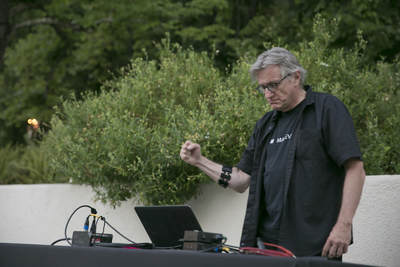
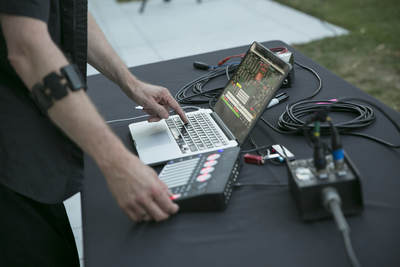
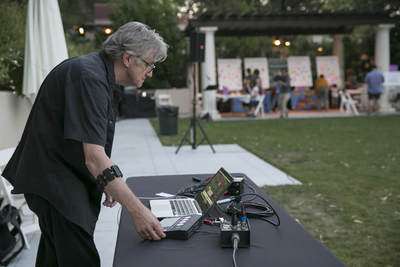
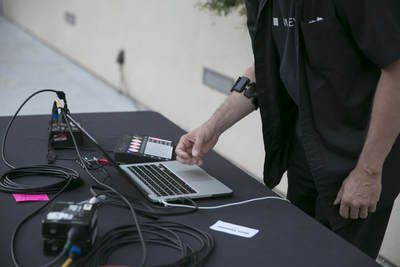
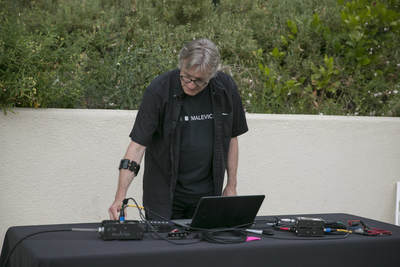
How do you make sounds fly around you by just flicking your wrist? My project for our We the People festival involved a piece I was performing for about a year now, which I wanted to adapt to Montalvo’s landscape. The piece is not performed in front of an audience, instead the sounds come from various locations surrounding the audience. This is in a long tradition from at least the late 1500s, in which composers have split up choirs to have them perform in different locations in churches, or even farther apart, as across the Piazza San Marco in Venetia. This practice was picked up again in electronic music in the 1950s, in that multiple speakers are placed around the room. I have been working with multichannel sound for about 15 years now.
To adapt the piece to Montalvo’s landscape, we placed four speakers around Charmaine’s Garden Terrace. For making sounds move through space, I am currently working with a so-called electromyogram sensor, which is a fancy name for a device that tracks electric activity of muscles. It’s just a small arm-band around my forearm, sending data streams from eight muscles wirelessly to my computer. This week, I was working on refining my software’s response to the sensor, and trying to get a better sense what happens when I flick my wrist, or twist my arm in certain ways.
Read more about Hans’ work here.
Lucas Artists Fellow – Visual Arts U.S.A.
THIS WEEK IN MY STUDIO (July 21, 2018)
Composer and Interdisciplinary Artist Neil Leonard

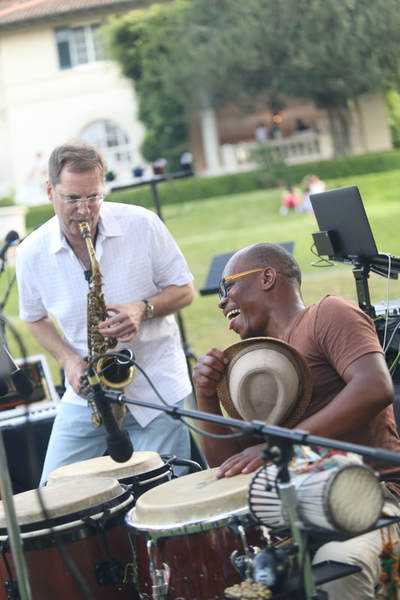

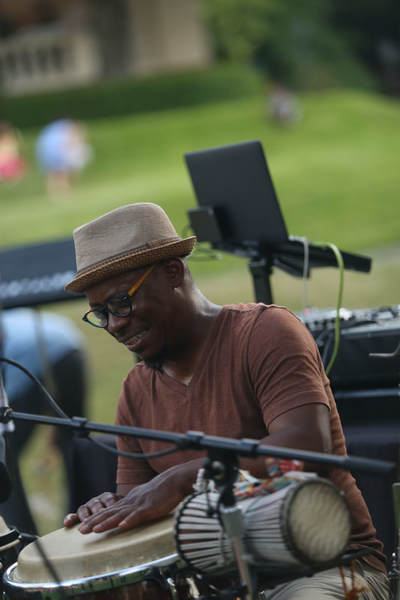
This week in my studio, I created a sound composition for Fujiko Nakaya’s fog sculpture at Overlook Shelter Ruins at Franklin Park, Boston. I experimented with reverberant saxophone sounds that I played and recorded in the TANK, a decommissioned 60 foot high water tank in Colorado. This August, my sound piece plays via a quadraphonic audio system, as fog emerges in the Overlook Shelter Ruins at sunset. Long time collaborator Sandy Perez also came to visit Montalvo and we played a saxophone/electronics and percussion concert for center’s exhibition/event, We The People.
Read more about Neil’s work here.
Lucas Artists Fellow – Visual Arts U.S.A.
THIS WEEK IN MY STUDIO (July 4, 2018)
Visual Artist Gregory Sale
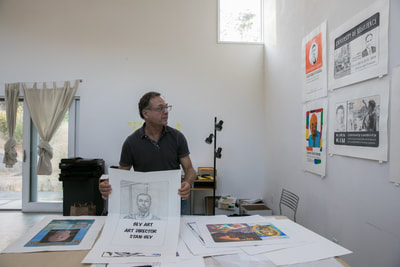
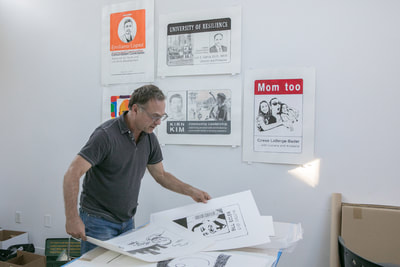
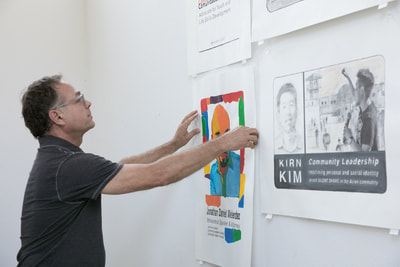
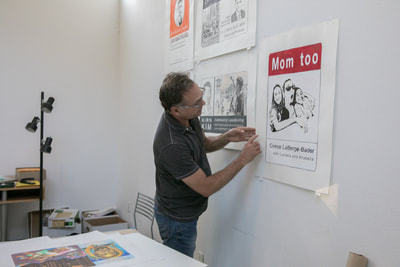

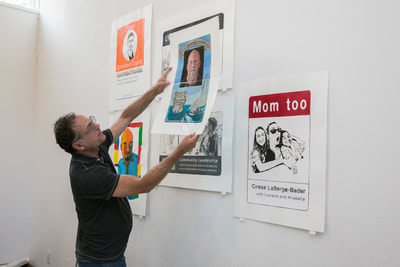
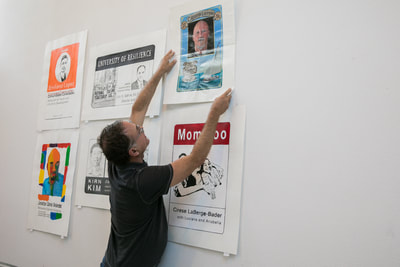
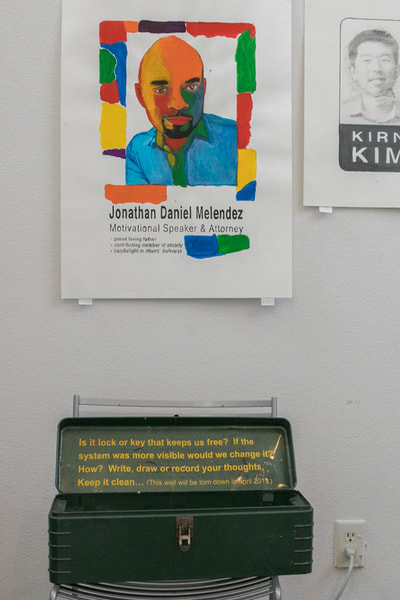

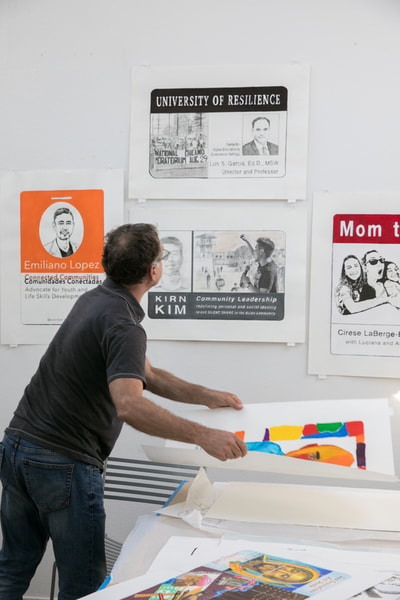
This residency at Montalvo is a gift. It’s a space for deep thinking and engaging with a dynamic group of individuals, as we co-produce Future IDs at Alcatraz. The year-long exhibition, opening this October, will feature ID-inspired artwork by men and women with conviction histories. With their support, I’m designing the exhibition, hosting meetings, and co-facilitating art-making workshops in the studio here at Montalvo and around the Bay Area. In stark contrast to prison-issued IDs, these artworks are about individual stories of transformation and how those stories collectively can help reframe the narrative of re-entry.
Read more about Gregory’s work here.
Lucas Artists Fellow – Visual Arts U.S.A.
THIS WEEK IN MY STUDIO (July 2, 2018)
Visual Artist María Magdalena Campos-Pons
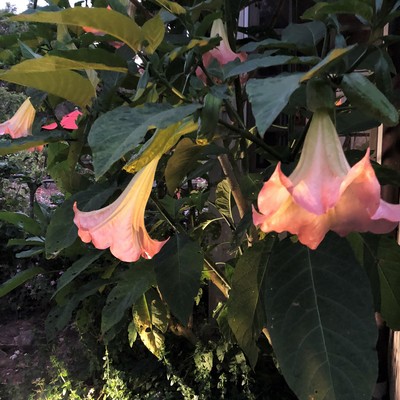
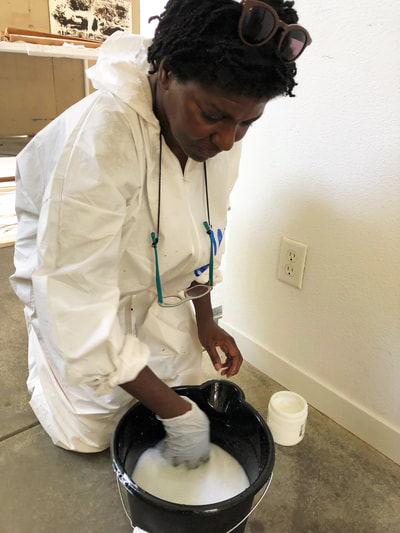
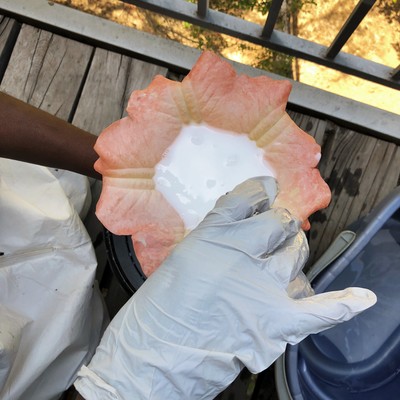
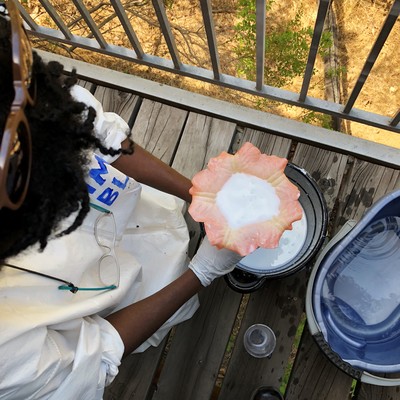
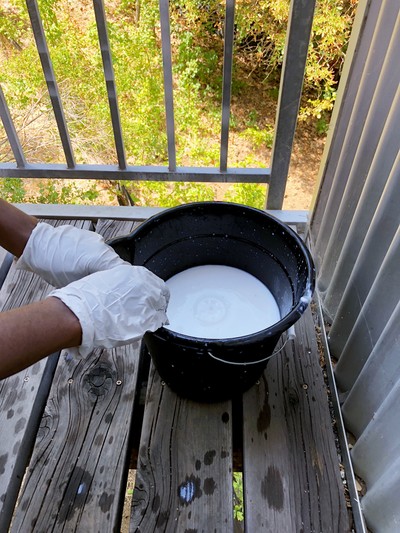
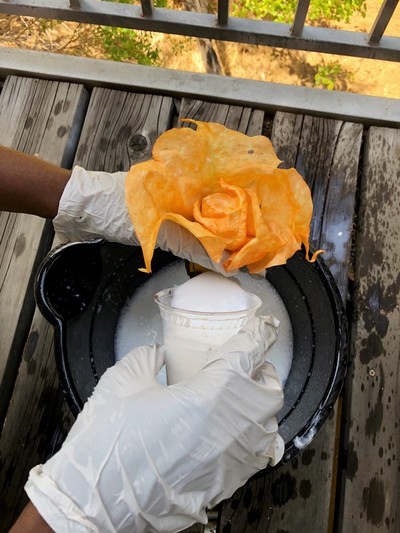
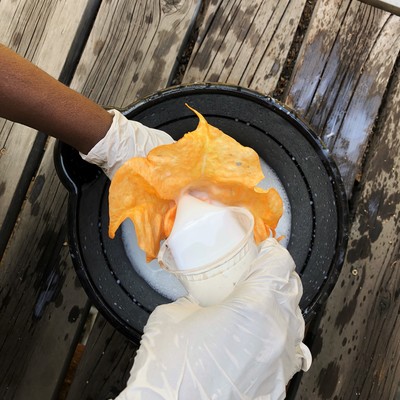
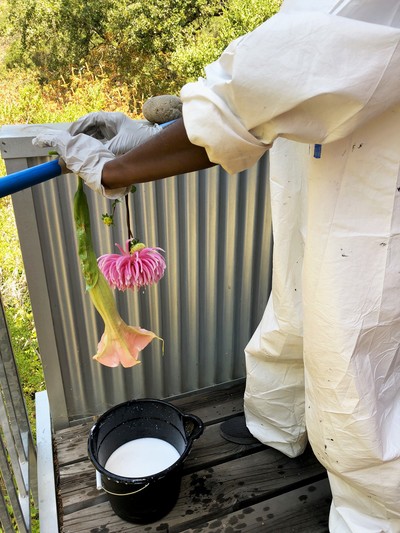

The evening I arrived at Montalvo I was greeted by the staff and offered a tour of the facility; it was late and starry skies bathed the evening. Lori, the manager of the artist residency program, drove me to the top of the hill to Montalvo’s historic villa. We walked through the courtyard and corridors; we went to the former library and out onto the balcony; we peered into a glass room that I imagine was a former greenhouse, and where Lori mentioned that a artist Margaret Kemp had staged a beautiful performance not too long ago.
Finally, on the ground floor, Lori opened the villa doors to a magnificent lawn and garden where green grass looked silver under the moonlight. Oh Lord, I loved Montalvo at first sight. Lori invited me to walk in the garden. We meandered down a set of stairs into a large expansive green plaza where in the distance tall cypress trees cut elegant silhouettes into the sky. But my breath stopped when we passed a magnolia tree on our way to a pond and fountain and I saw the area that I would soon be using for a future garden that I would plant at Montalvo. There waiting for me were the magnificent Campanas of my youth, Angel and Devil’s Bells with pink and yellow flesh, looking pale yet dangerous and irresistible. I have not seen them in such abundance since I was 12 or 14. I was transported back to La Vega Manguito, Matanzas but here I was in the north pacific hills of California, finding home again!!!!
During Magda’s stay at the LAP, she dipped beautiful dahlias and brugmansias in rabbit glue to preserve the flowers to later be used in her paintings. Click on the video shot by Valerie Wainwright to see the process.
Read more about Magda here.
Lucas Artists Fellow – Composer & Musician U.S.A.
THIS WEEK IN MY STUDIO (June 25, 2018)
Composer Nina C. Young
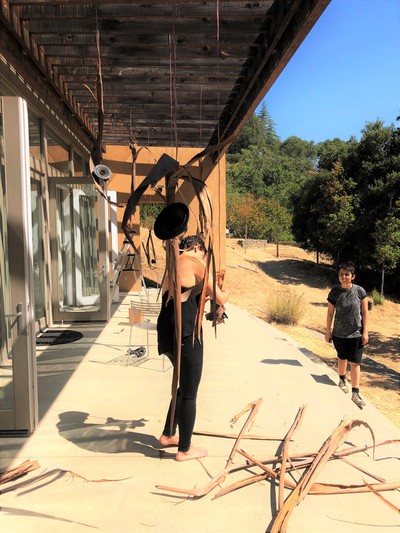

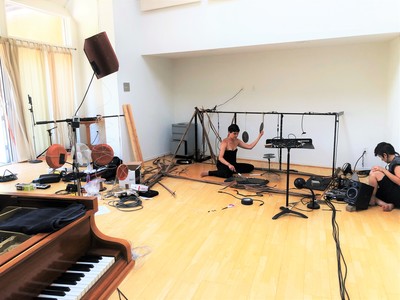


Valerie Wainwright
Nina C. Young
This week in my studio, I invite you to take a look at the work in process. An LAP fellowship is unique in that it allows artists to revisit Montalvo over the course of several residency periods. We get to participate in the act of return to a place, to an environment, to a community. When this happens across a period of time, it provides perspective: a bouquet of experiences, set against different seasons. Subtleties are amplified and come to the foreground—the timing and angles of shadows cast by the sun against the beams above my studio’s terrace, the pliancy of the shedding eucalyptus bark strips, the tone and agency of conversations around the dinner table as reflected through changing politics. During my third (and current) visit to Montalvo I wanted to build a site-specific installation/performance piece that reflected my experience and relationship with Montalvo, the community, the grounds, and the internal artistic inquiry I grapple with while creating here. To work through this process, I brought two dear friends and collaborators, violist/composer Anne Leilehua Lanzilotti and intermedia sound artist Senem Pirler. Together we harvested Montalvo for materials and built an installation and performance environment in and around my studio as an act of communion with our surroundings, with each other, and with the community. Anne Lanzilotti describes the project:
Sound Constructions is a site-specific work created on and for the Montalvo Arts Center. Using a combination of found objects from the grounds and sound sculptures built from industrial materials, the mobile sculptures invite interplay. By choosing specific found objects, we amplify only certain sounds that normally might not be heard. The installation is an exploration of these objects and presence, asking: How does taking things out of their natural environment create tension? With closeness of both the visual projections and style of amplification, are we actually closer to the objects and/or each other? As we have collected these things in order to build an environment, how do we touch them, give them focus, and ultimately let them go?
Read more about Nina’s work here.
Guest Artist (Sponsored by Art Forum, San Francisco) India
THIS WEEK IN MY STUDIO (June 25, 2018)
Interdisciplinary Artist Mrugen Rathod
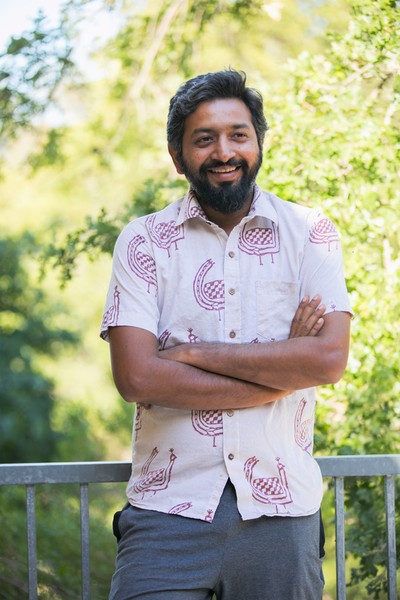

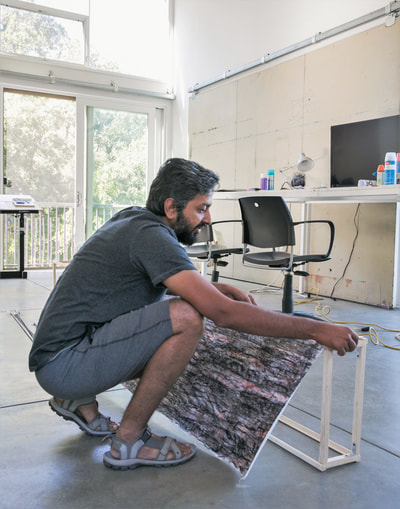

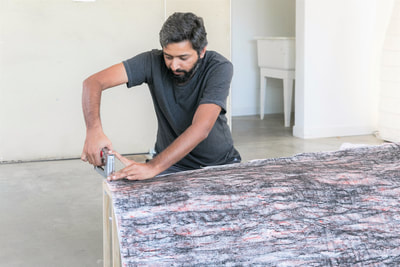

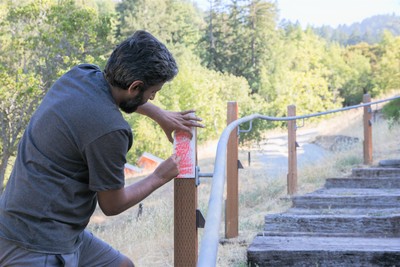
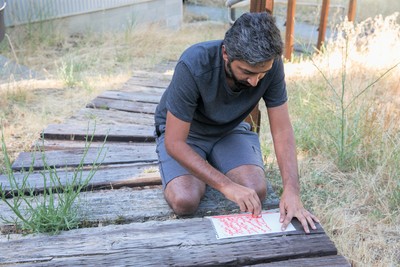
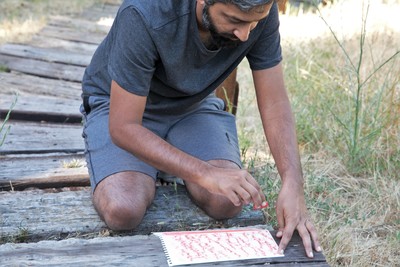
Work work work this week in my studio. I am on a unique collaborative project with writer and curator Sandhya Gajjar. Both of us spent the first week at Montalvo exploring the hills and the trails, being awed by the towering redwoods and eucalyptus trees, but also trying to understand who lived here many, many moons ago, what kind of life they may have led, and as we moved out and beyond to explore the Silicon Valley, the implications that this young industry has had on the entire world… It is amazing to see and understand how a developed country is functioning and how they manage to treat their environment and then the environment of others. Nature and politics have always been part of my work. To see what is happening in my mind and in my practice at Montalvo, one must visit the studio. Drawing, Sculpture, Installation. Open Access: June 29. Most welcome.
Read more about Mrugen’s work here.
Lucas Artists Fellow – Literary Arts, Playwrighting USA
THIS WEEK IN MY STUDIO (June 7, 2018)
Playwright Preston Lane
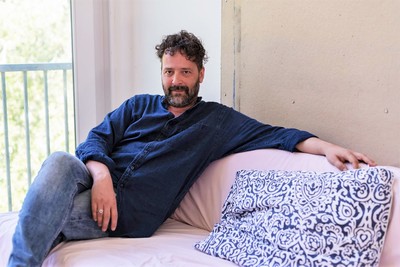
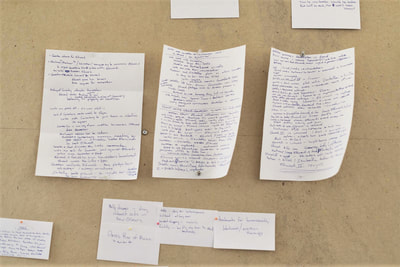
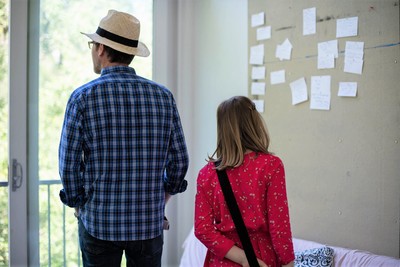
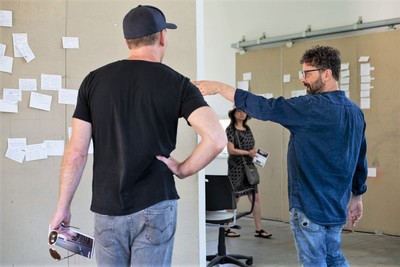
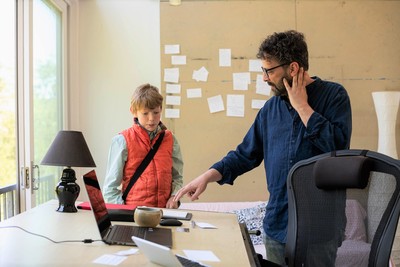

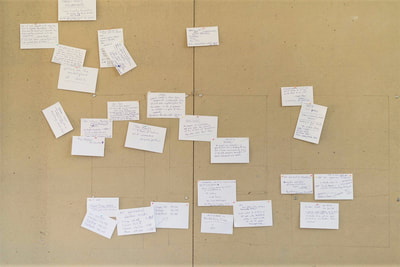
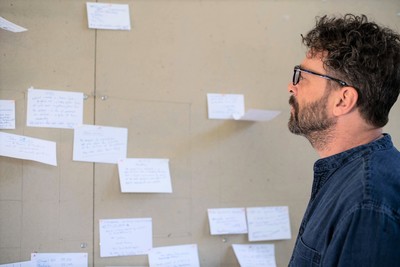
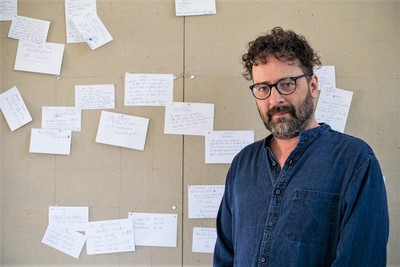
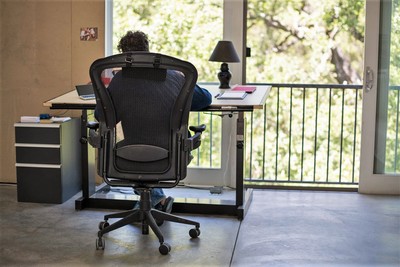
In the second week of my residency, I began a shift from what had been my original focus to the project that turned out to be the primary work of my time at Montalvo. The walls of my studio encouraged me to spread out my thoughts about both projects and I quickly realized the play I thought I was writing—a metatheatrical, audience-participation town debate for the 2020 mayoral election in my fictional North Carolina town of Hawboro—needed workshops and research I could only do in North Carolina. So, I shifted to attempting to write in a form I know as a director but have never written in—American realism. Again set in Hawboro while riffing on “Edward II” by Marlowe, my play “Edward, Too” is the kind of American realistic well-made play Hellman or Inge might have written if they had the freedom to address forbidden topics. The open studio day allowed me to share both projects and my process. Allowing strangers into an early writing process can seem intimidating at first, but it showed me new ways to collaborate and share. Conversations with visitors suggested new ideas and directions for both projects.
Read more about Preston’s work here.
Lucas Artists Fellow – Visual Arts USA
THIS WEEK IN MY STUDIO (June 1, 2018)
Visual Artist Cassils

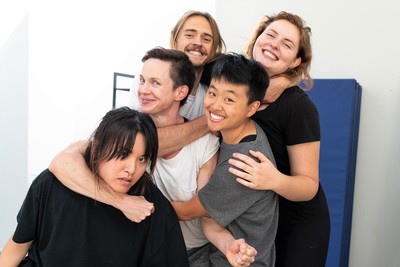
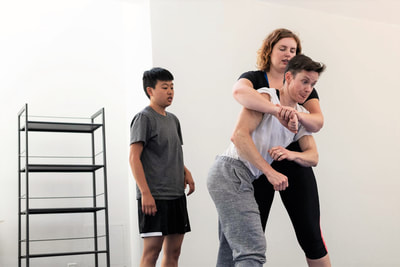
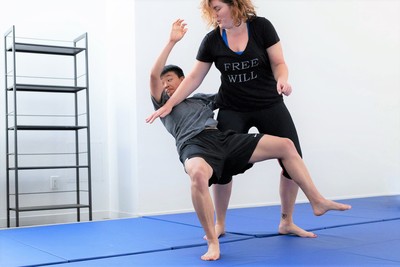
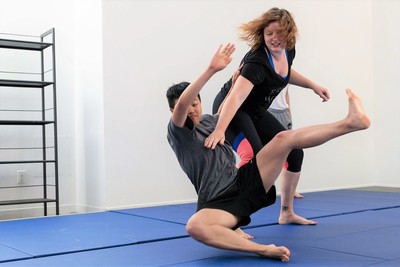
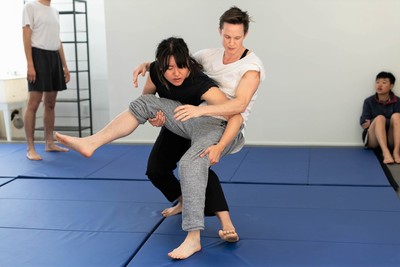
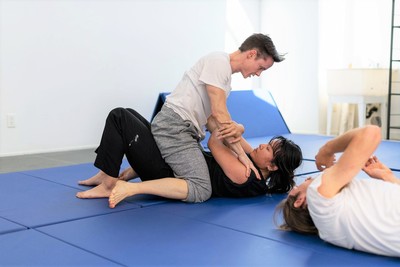
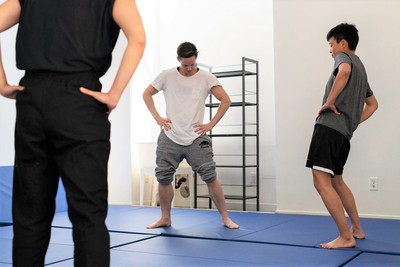
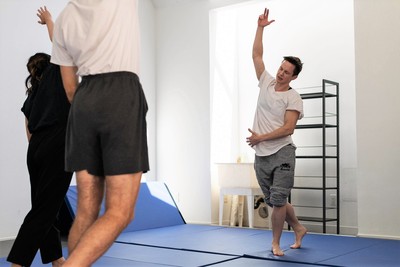
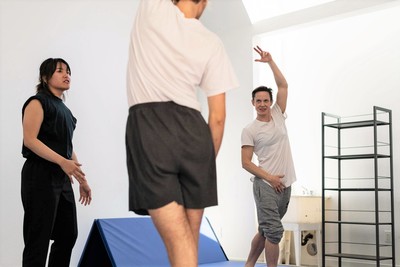
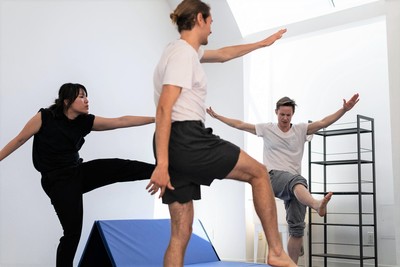
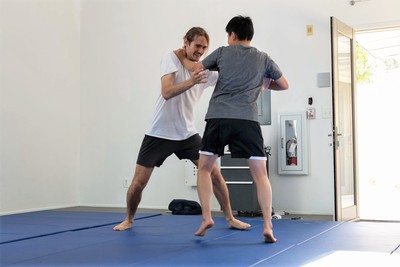
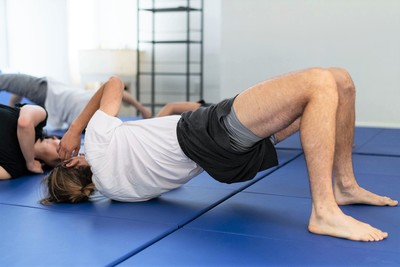
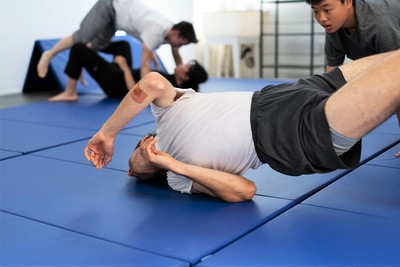
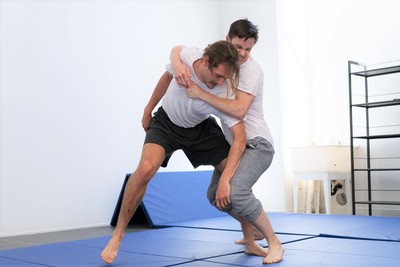

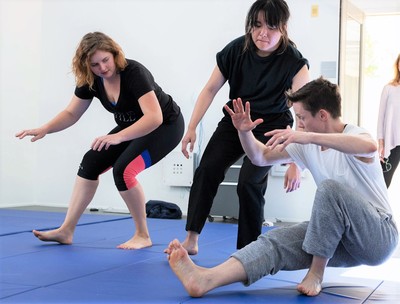
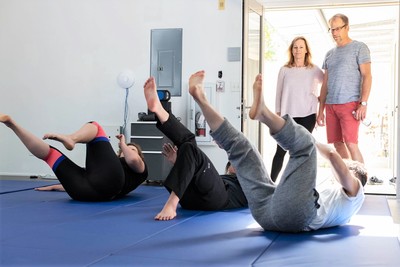
Last week I was preparing for the final iteration of Vital Signs, the series of performances I curated over the 2017/18 academic year at Stanford University. Here I hosted Keijaun Thomas and Ron Athey and facilitated their performances and a public dialogue. I also continued to teach my class, Social Sculpture, at Stanford University and work towards a new collaborative piece with the students called Sweat Paintings (a reinterpretation of Yves Kleine). That week, I also hosted Ron Athey and Arshia Fatima Haq up at Montalvo. There we engaged in lengthy dialogue and research in preparation for our upcoming collaboration at the Museum of Contemporary Art in Tucson, opening December 1, 2018. Additionally, I spent my time redesigning my website and creating a complete back-up of my archive of work.
Read more about Cassils’ work here.
Lucas Artists Fellow – Film & Visual Arts USA
THIS WEEK IN MY STUDIO (May 18, 2018)
Visual Artist Tran T. Kim-Trang
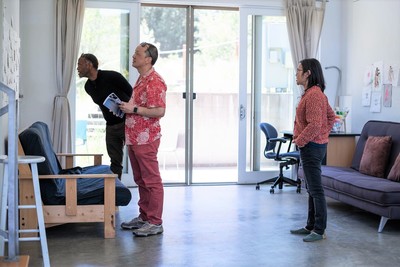
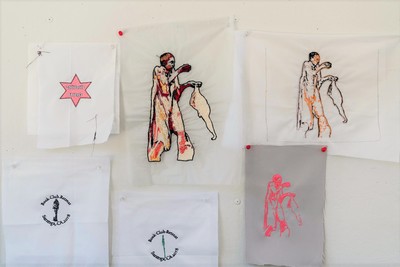

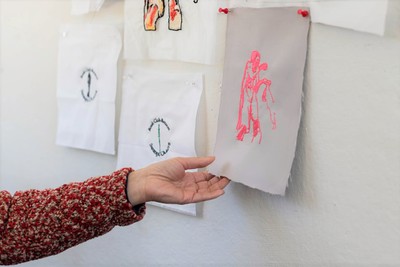
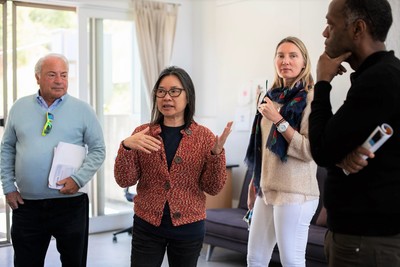


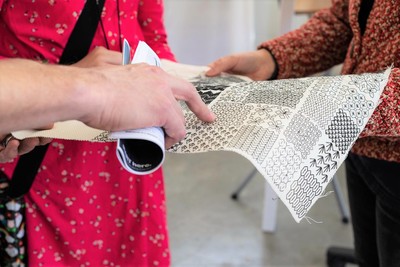
This week was hopping with staff and residents getting ready for the annual Open Studios event. Besides discussing with the other fellows what to present, another artist and I exchanged studio visits to learn more about each other’s work. While hiking on Montalvo’s trails, I saw the wooden signs for A Healing Walk by Susan O’Malley being re-installed. I worked with more intricate patterns for my blackwork sampler and split my time between a video triptych and a screenplay on my mother. For the triptych, I shared an audio file of me singing (badly) “Solidarity Forever,” with my sound designer in Lisbon and finished stitching a test figure for one of the handmade video screens. After deciding to revise the screenplay, probably subconsciously in anticipation of Mother’s Day, I restructured much of it and gained some clarity on how to tell my mother’s story, with a movie goal and theme.
Watch short clips of some of Tran’s films here.
Lucas Artists Fellow – Composer & Musician
THIS WEEK IN MY STUDIO (April 10, 2018)
Composer and Musician Roman Filiu O’Reilly
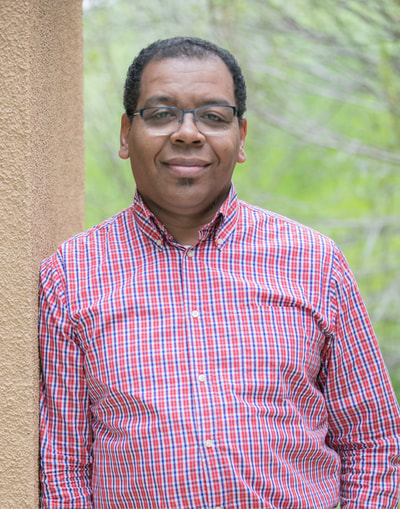
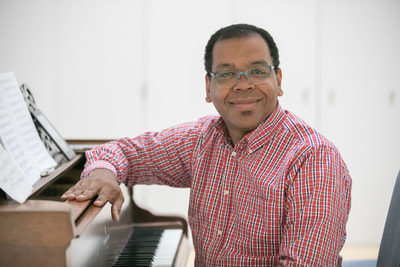
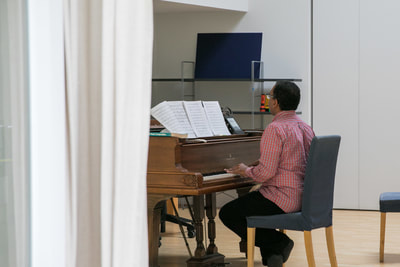
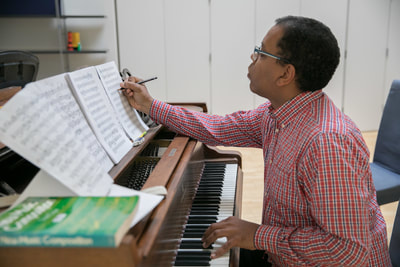

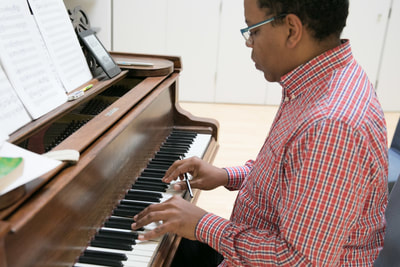
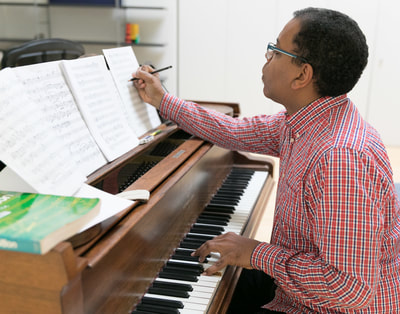

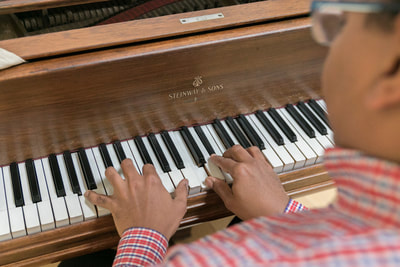
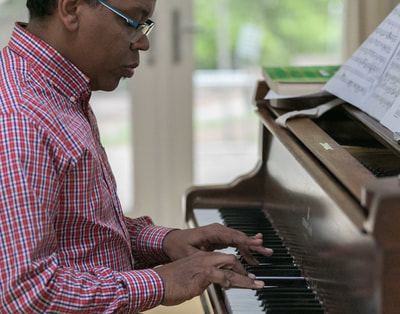
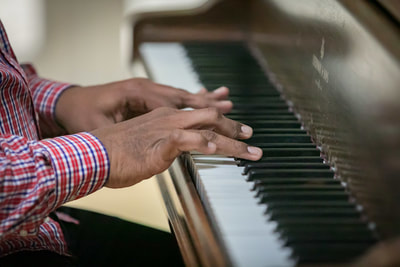

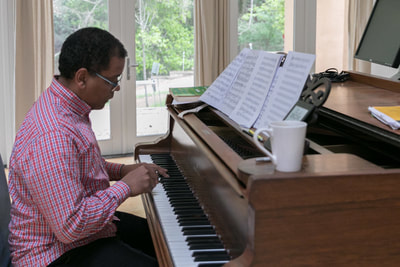
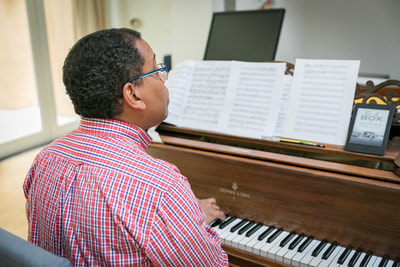
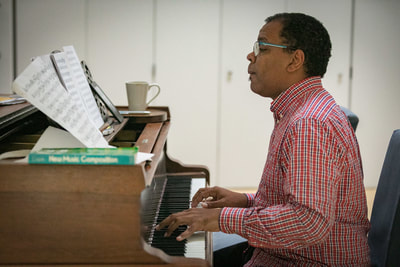
This week in my studio: writing a song book of 10 pieces for saxophone and piano. Inspired by the musical genres of my hometown (Santiago de Cuba) such as tumba francesa, conga oriental, son, etc., the compositions have been created using multiple devices: from the piano, from the saxophone, by design, abstraction and forming patterns.
Read more about Roman’s work here.
Lucas Artists Fellow – Composer & Musician
THIS WEEK IN MY STUDIO (March 22, 2018)
Composer and Musician Nicole Lizee
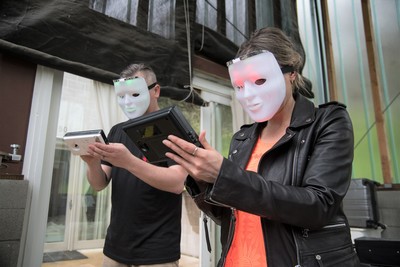
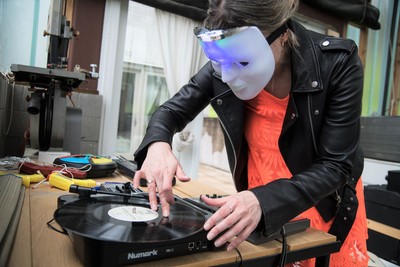
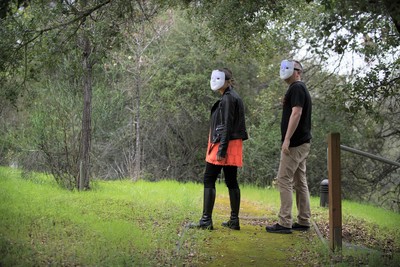

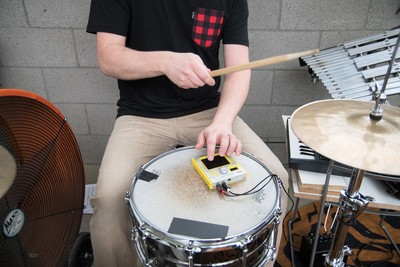
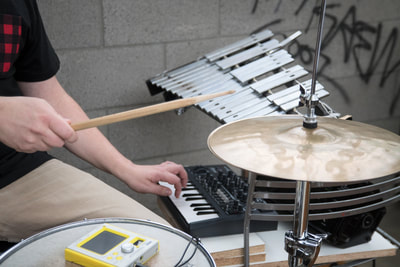
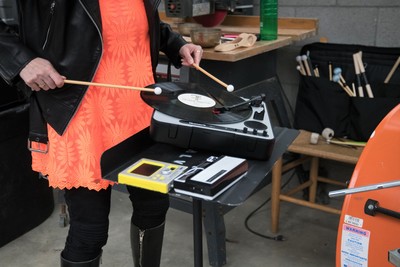
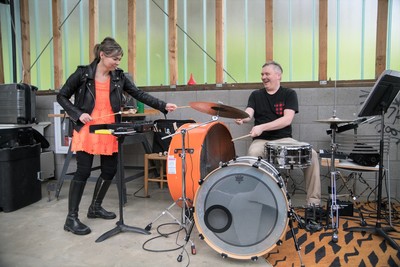
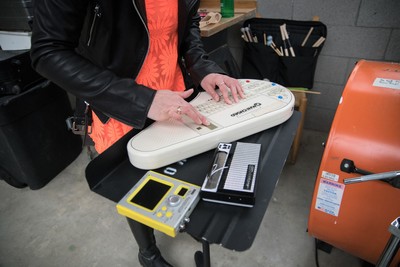
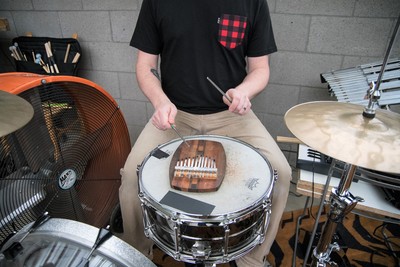
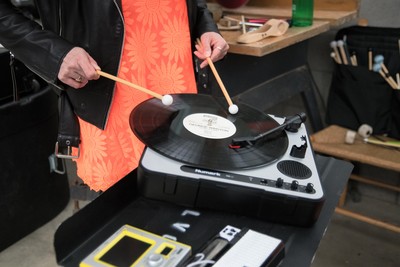

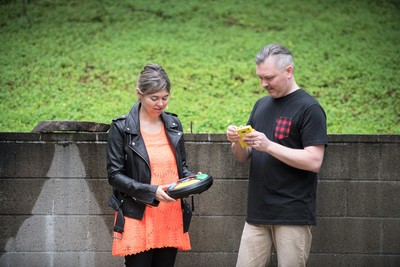

This week, percussionist Ben Reimer and I researched sound combinations in preparation for our March 22 concert at the LAP with San Francisco-based duo, The Living Earth Show. The set list included previous work but I wanted the instrumentation choices to reflect our surroundings. This meant merging portable electronic devices—many of which were analogue and archaic—with the even more analogue and archaic: flower pots, shovels, industrial fans, dirt, leaves, and an enormous cricket that lived with me for seven nights (but who I had to kick out before the concert due to relentless, ear-piercing chirping from 1am-7am). Integrating sonic and visual technology that I work with every day within these new surroundings was exciting and something I will delve into further.
Read more about Nicole’s work here.
Lucas Artists Fellow – Literary Arts, Fiction
THIS WEEK IN MY STUDIO (March 22, 2018)
Author Mike Scalise

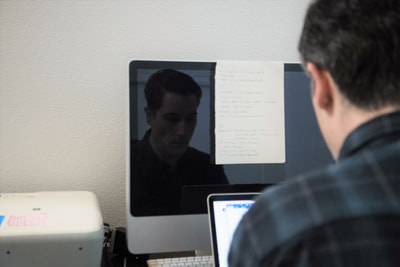
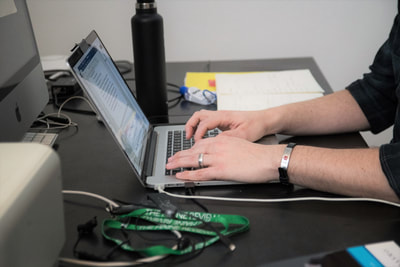
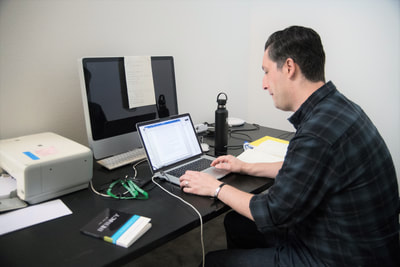
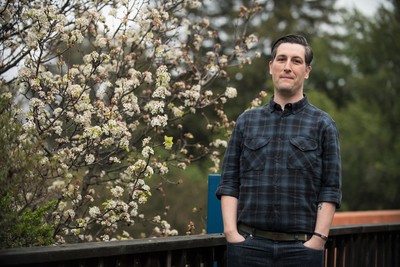
This week I’m focused on constructing new forms of mystery. I’ve been see-sawing between drafting the tricky middle regions of a neo-noir manuscript, and picking apart how others architect mystery in their own noir-ish novels. In heavy rotation right now: Jean Echenoz’s Big Blondes, Laura van den Berg’s forthcoming The Third Hotel, Kem Nunn’s Tapping the Source, and Alissa Nutting’s great Made for Love. Each book takes a piece of well-worn modernity or pop culture (reality TV, film, surfing, big tech utopianism) and exploits its darkest under folds, using narrative strategies and characters that always manage show us, us—but in an intriguing way that poses far more questions than answers. At Montalvo I’m writing towards those unanswerable questions and learning more each day about the characters posing them.
You can purchase his book, The Brand New Catastrophe, here.
Lucas Artists Fellow – Literary Arts, Playwrighting
THIS WEEK IN MY STUDIO (March 15, 2018)
Playwright Phillip Howze
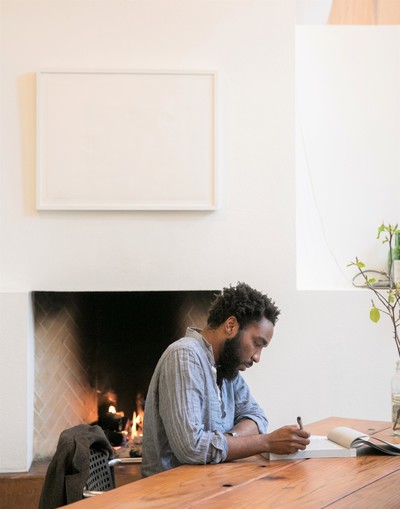
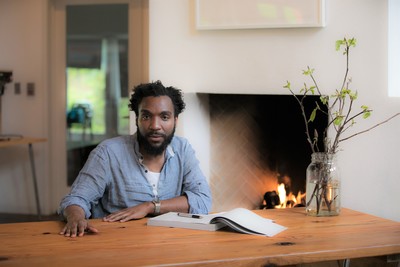
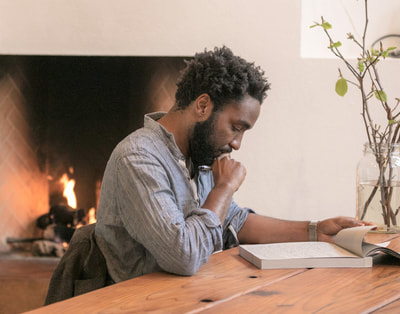
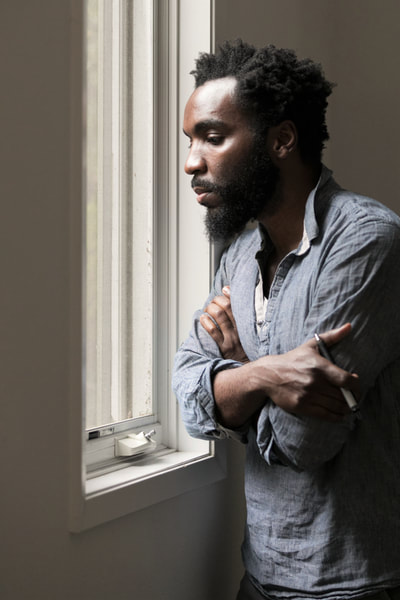
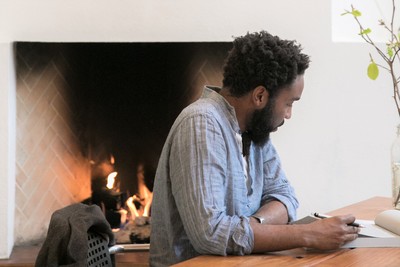
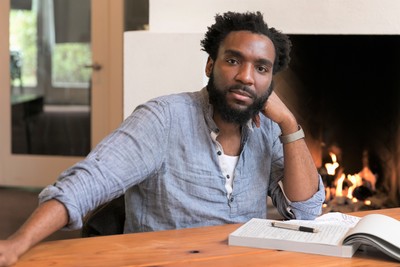
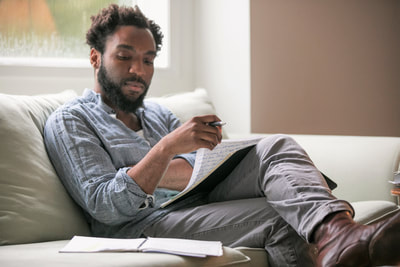
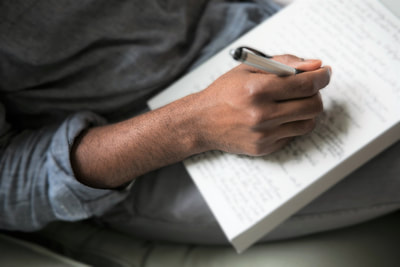
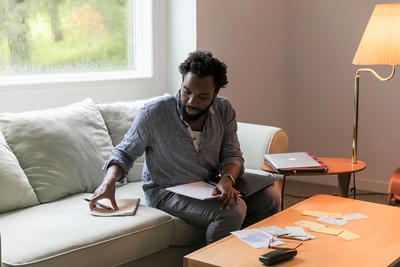
This week I’m enjoying interacting and fellowshipping with the other artists in residence here on the LAP hill. We have much to learn from one another in these dark days. I’m also revising a new play that is a work-in-progress about America’s history of political violence. It’s a comedy.
Lucas Artists Fellow – Literary Arts, PlaywrightingnGermany
THIS WEEK IN MY STUDIO (March 12, 2018)
Playwright and theatre director Amahl Khouri
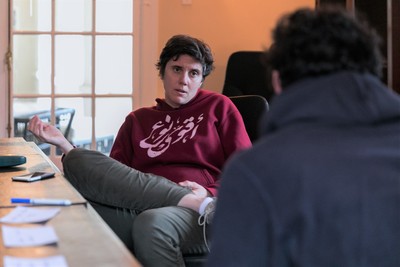
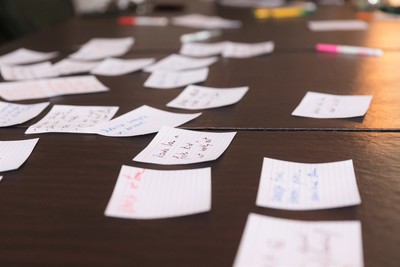
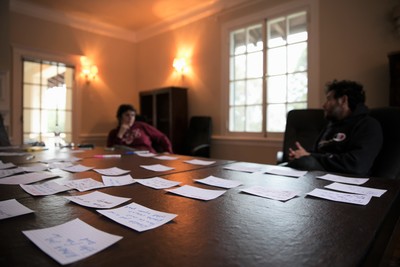
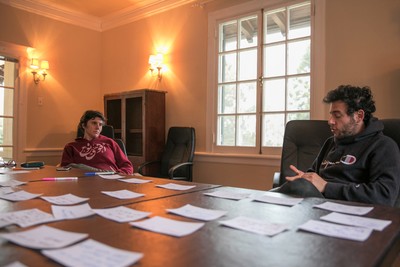


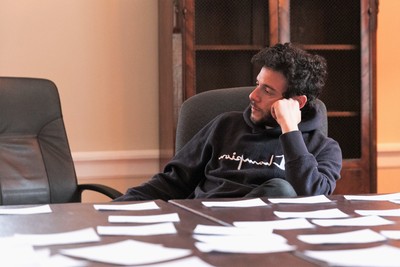
Hadi Tabbal acted in a reading of my play She He Me a few years ago in New York City. We recently decided to collaborate on the play. We are so grateful to Montalvo for giving us the time and space to begin our work.
Guest ArtistnU.S.A.
THIS WEEK IN MY STUDIO (February 27, 2018)
Musician Will Calhoun











This week in my studio:
New energy
Fighting off old creative habits
Unfamiliar spaces
New artistic real estate
Recognizing digressions for change
Departure
Rebirth
Read more about Will’s work here.
Performance Artist Kalisolaite ‘UhilanLucas Artists Fellow – Visual ArtsnTonga/New Zealand
THIS WEEK IN MY STUDIO (February 24, 2018)
Performance Artist Kalisolaite ‘Uhila
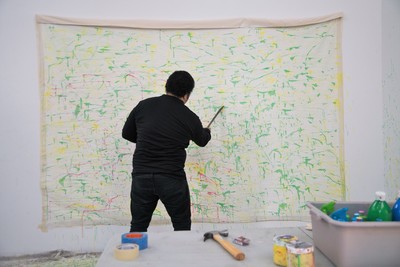
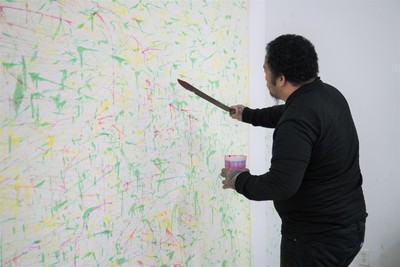
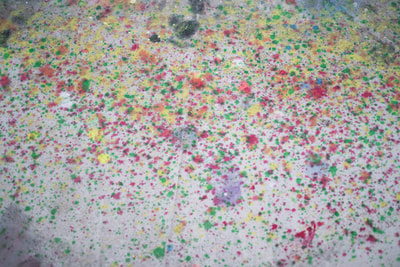
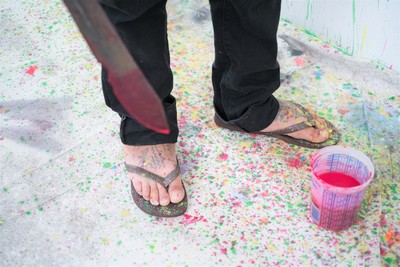

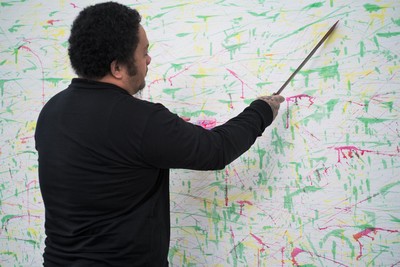
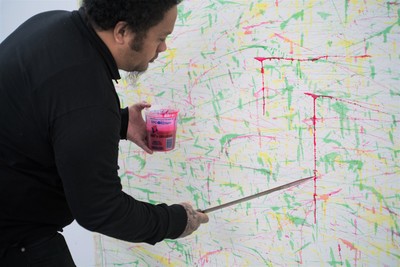
As part of my performances, I use simple objects that relate to my daily life. I am interested in repetitive actions and I intend to focus on everyday activities, clearing the land with tools that my ancestors used from the past to present and future. Helepelu (machete) has a subtleness to its appearance but it is not to be underestimated–it can be destructive. I take the movements from using this tool as the inspiration for making marks for my paintings while I’m at the Lucas Artists Residency.
Poet Julian Talamantez-BrolaskinLucas Artists Fellow – Literary Arts, PoetrynU.S.A.
THIS WEEK IN MY STUDIO (February 20, 2018)
Poet Julian Talamantez-Brolaski

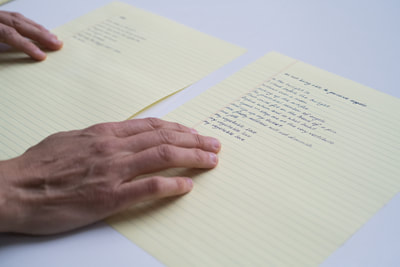
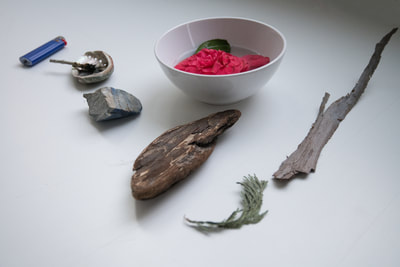

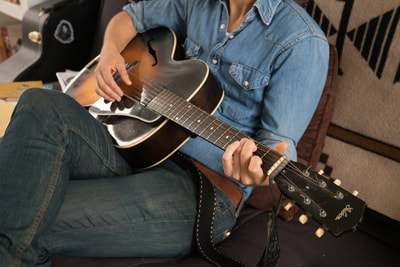
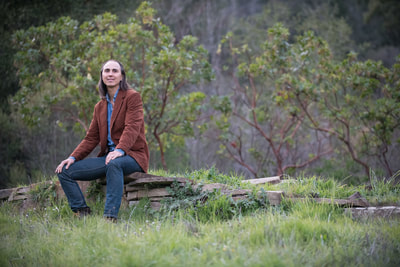
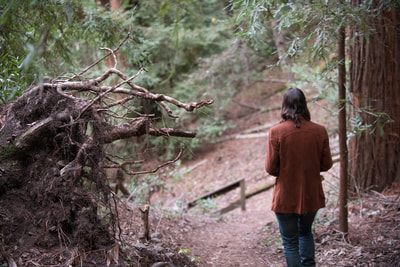
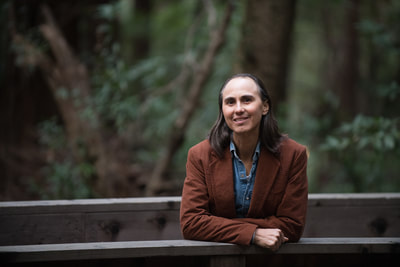
Reading Maria Sabina and pseudo-dionysus by the glow of the espiritu santo candle, making up a song about a horse in apache, writing poems by hand for my blog: https://julianspoems.tumblr.com/.
Non-Fiction Writer Daniel Bertrand MonknLucas Artists Fellow – Literary Arts, Non-FictionnU.S.A.
THIS WEEK IN MY STUDIO (January 25, 2018)
Non-Fiction Writer Daniel Bertrand Monk
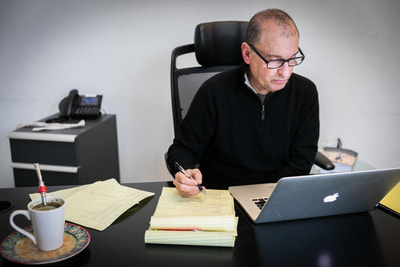
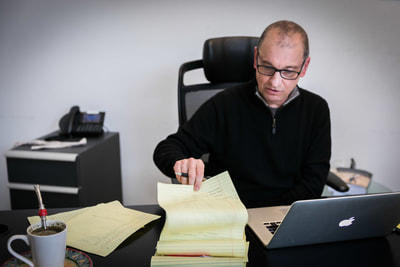
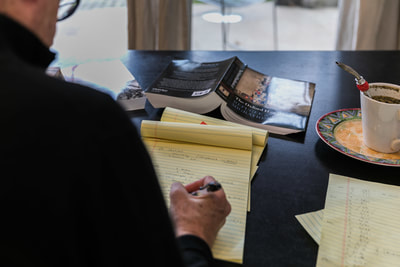
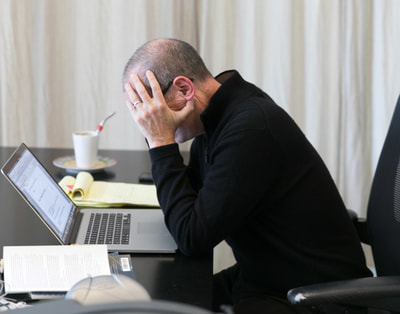
This week in my studio, I’ve been trying to write about “pseudomorphosis.” You know what it is, but I bet you didn’t know there was a name for it. When people forget to make any distinction between ornithology and the birds: that’s pseudomorphosis. (I stole that example from the artist Barnett Newman). The reason it matters, and the reason why I’m banging my head against this problem, is that the question of pseudomorphosis also exists at the heart of humanitarian governance. At Montalvo, I’m trying to write about the way that an entire humanitarian order represents its own way of looking at categories of humans–refugees, for example–as if those categories constituted the dispossessed themselves. I’m writing a critical account of the way that a kind of humanitarian un-reason substitutes itself for its object. It is only by spending time here among remarkable artists who are now my friends that I’ve come to understand that this project is all about an aesthetic substitution, whereby a political project presents itself as if it were anything but political.
Composer & Musician Yasuhiro Usui and Multi-media Artist Kio GriffithnLucas Artist Fellow – Composer & Musician and Guest ArtistnU.S.A./Japan
THIS WEEK IN MY STUDIO (January 23, 2018)
Composer & Musician Yasuhiro Usui and Multi-media Artist Kio Griffith
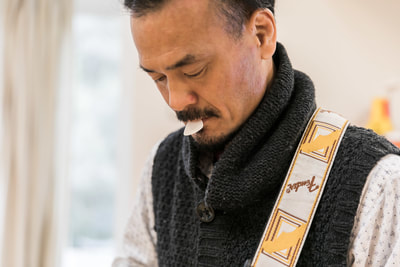
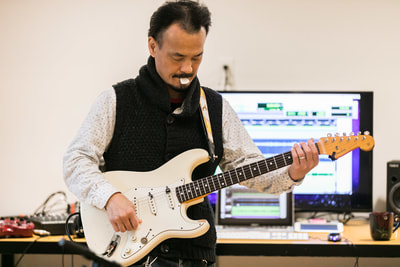


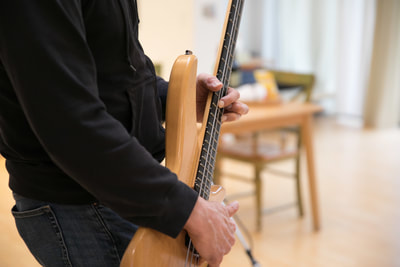

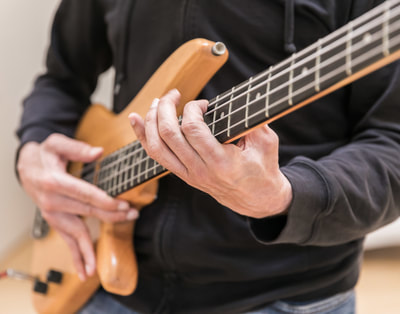
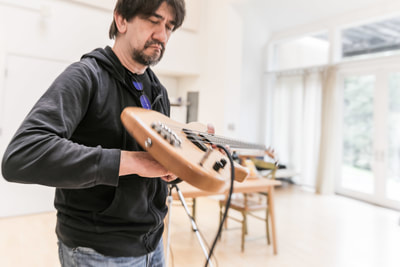
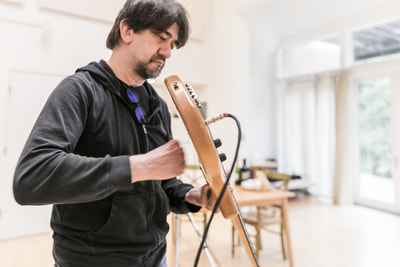
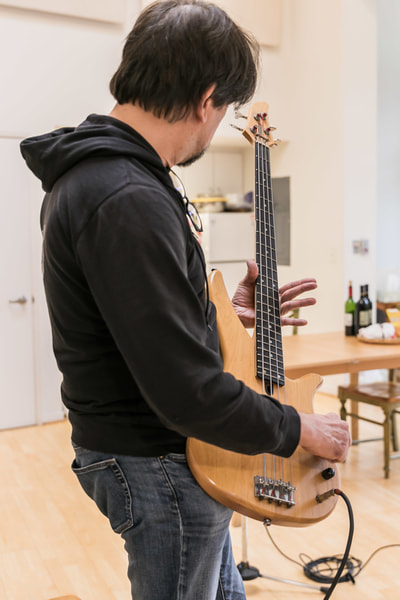
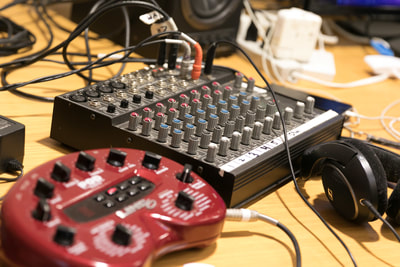
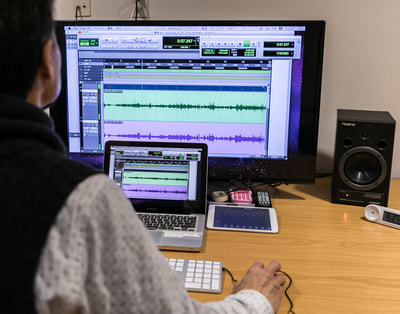
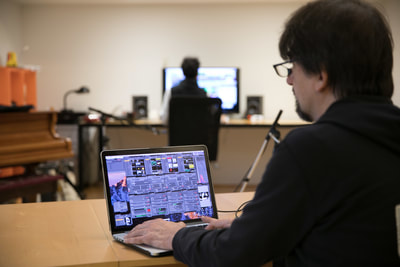
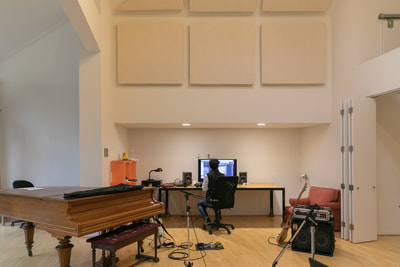
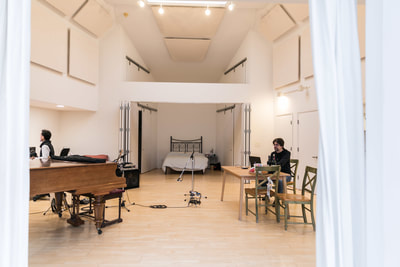


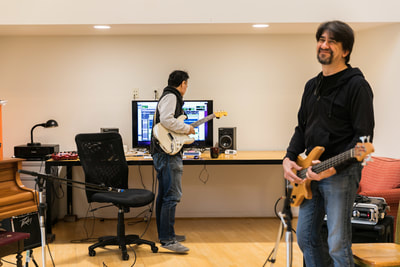
This week in our studios, we are working on our duo project, “Boroboros.” We named the project after a roughened adaptation of “Ouroboros,” an ancient symbol depicting a serpent chasing or eating its own tail. The Ouroboros is a symbol for the integration and assimilation of the opposite. In the sense of something constantly re-creating itself, the collaborative project “Boroboros” is a ‘feed-back’ process between visual and sound, organic and mechanic, microcosms found within the macrocosm. Interactive possibilities will be explored in which sound could eclipse the visual and visuals could emit sound. The final product will be an album allowing listeners to re-experience this immersive call and response.
Listen to the initial sounds from “Boroboros” on Soundcloud.
Visual Artist Karrie HoveynGuest ArtistnU.S.A.
THIS WEEK IN MY STUDIO (January 17, 2018)
Visual Artist Karrie Hovey
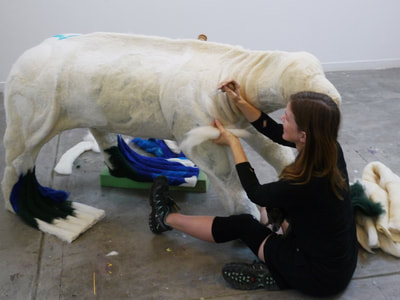
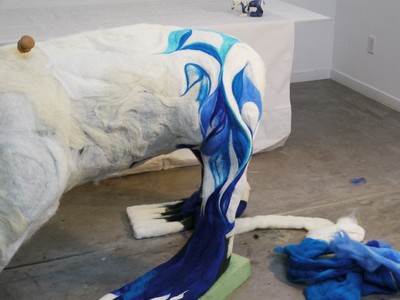
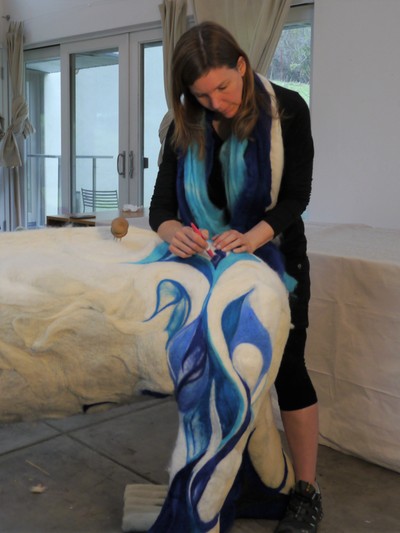
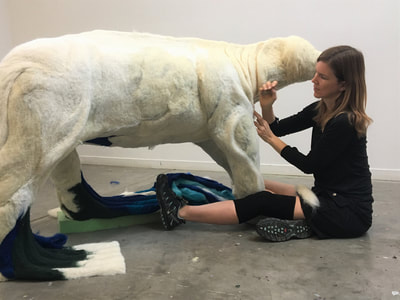
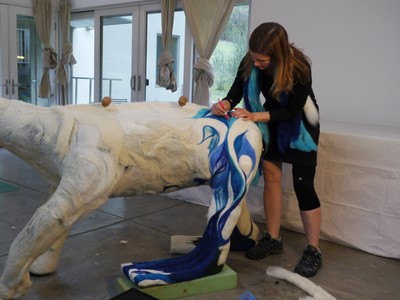
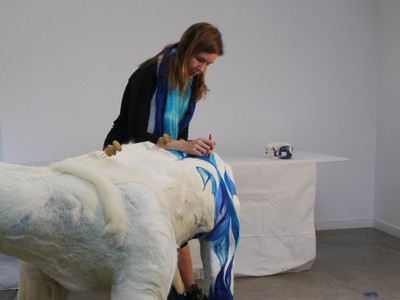
This week in my studio I am revisiting old friends and places through the materials I am working with. As a continuation of my “Phase” series, works of speculatively altered animals that need to adapt radically to survive in their changing environments or face extinction, I am working on an aquatic polar bear. The full-sized bear is needle-felted with wool that I have gathered while on residencies in Iceland, South Africa and the Northeast. The properties of the wool vary greatly depending on the type of sheep it was sheared from. The Icelandic wool is heavily barbed and felts quickly. The majority of the body structure is constructed with Icelandic wool. The New England wool is used for refining the muscular form and adaptive details of the polar bear. The South African wool dyes beautifully and is used for the topcoat of colors inspired by glacial ice.
Read more about Karrie’s work here.
Guest Artist U.S.A.
THIS WEEK IN MY STUDIO (December 14, 2017)
Vocalist and Performer Jennifer Johns
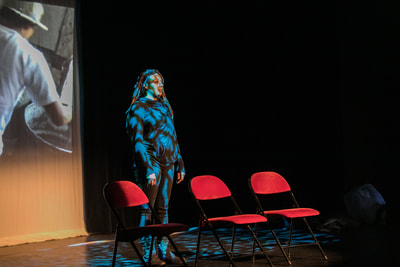

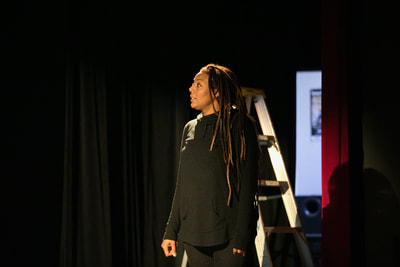
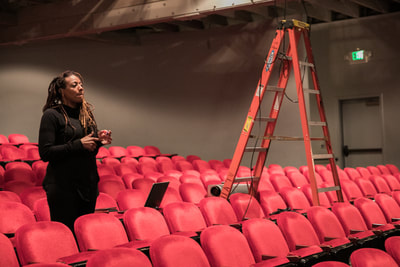
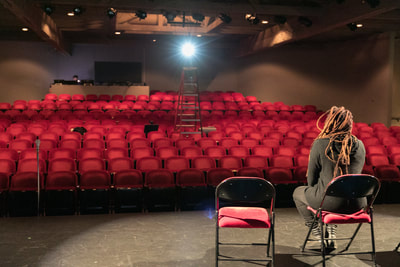
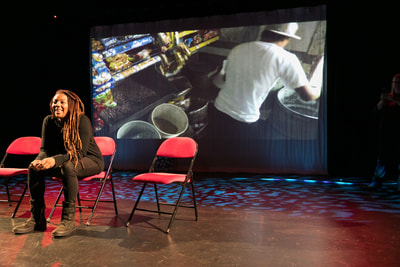

What a blessing it is to have the space and support to dream and manifest. This last week has been a beautiful dive into expression and humanity at Montalvo. I have been blessed to be a part of such rich conversations. For many, the ideas and beliefs that surface around identity are complex and tender at best. As artists, we get to rub up against the tender spaces, grace and creativity leaving room for growth and transformation. Artists offer new ideas when the old ones aren’t working so well. Now, more than any other time in my life, we need those new ideas. My overall project is a creation myth called Ayo and the Aquarian Mind that will be performed as a theater concert with visuals and prose. The piece is about the nuances of love, agency, interdependence and purpose. This Friday, December 15th, I will present music and poetry from the piece in the Carriage House Theatre at Montalvo. Join us!
Read more about Jennifer’s work here.
Lucas Artists Fellow – Composer & Musician U.S.A.
THIS WEEK IN MY STUDIO (December 12, 2017)
Composer Byron Au Yong
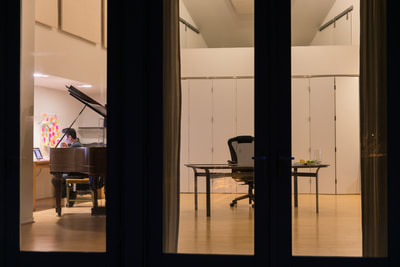
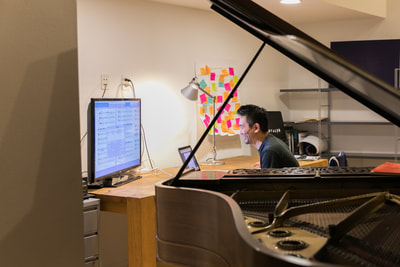
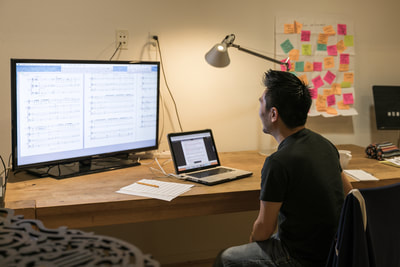

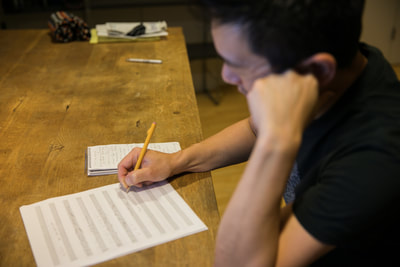
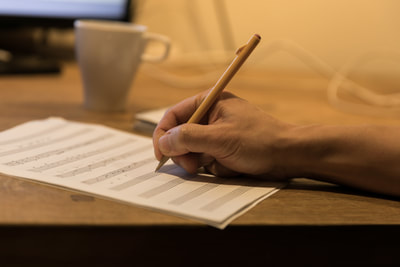
This week in my studio, I am:
- listening to the sounds of the winter creek
- playing Bach’s Inventions and Sinfonias
- collaborating with writer Aaron Jafferis
- sketching ideas for Activist Songbook
- laughing with artists-in-residence Dahlak Brathwaite, Jennifer Johns and Bobby Previte
- being inspired by workshops from Art Practical and Simón Hanukai
- eating delicious meals made by culinary artist Andrea Blum
- crunching leaves on forest walks
- reflecting on the past year and dreaming about the next
- being thankful for the Lucas Artists Residency staff
Read more about Byron’s work here.
Lucas Artists Fellow – Literary Arts, Fiction U.S.A
THIS WEEK IN MY STUDIO (December 7, 2017)
Playwright Andrea Kleine
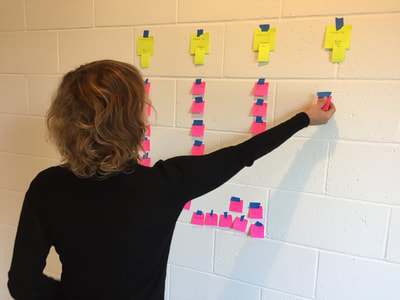
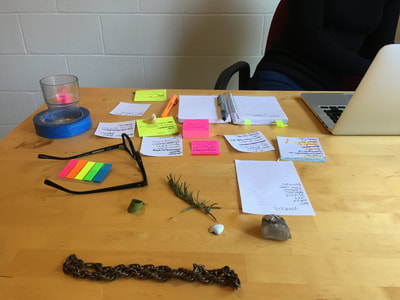
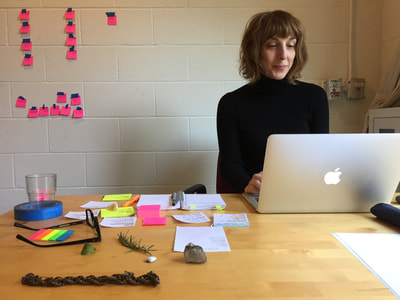

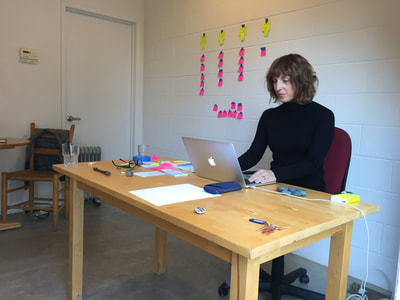
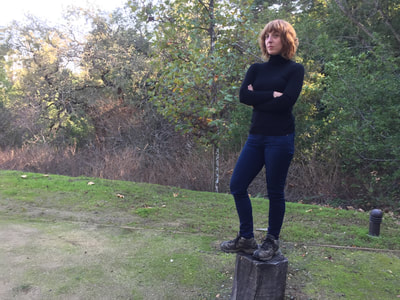

I’m at Montalvo working on my third novel, as yet untitled and at the moment, primordial. The last time I was at Montalvo I was starting my second novel, EDEN, which will be coming out in July 2018 from Houghton Mifflin Harcourt. So, to me, Montalvo is a great place for beginnings. At dinner the other night, another artist asked me, “How do you even start a novel? Where do you begin?” I replied, “You basically have to walk into the dark.”
Read more about Andrea’s work here.
Lucas Artists Fellow – Composer & Musician U.S.A
THIS WEEK IN MY STUDIO (December 7, 2017)
Musician Bobby Previte
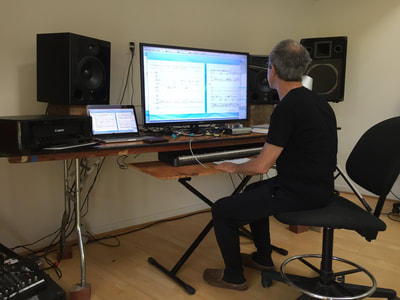
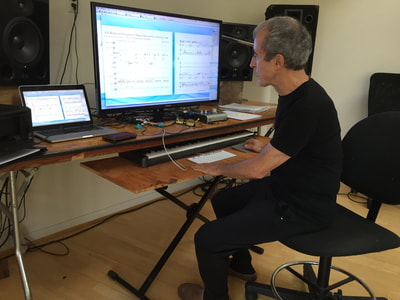

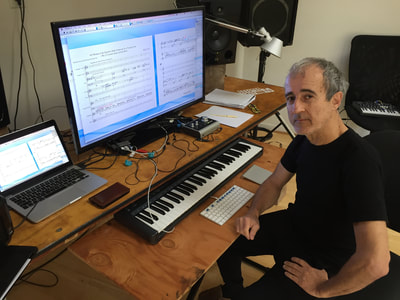
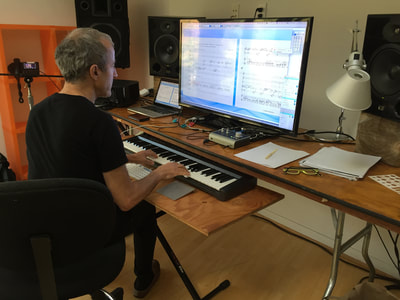
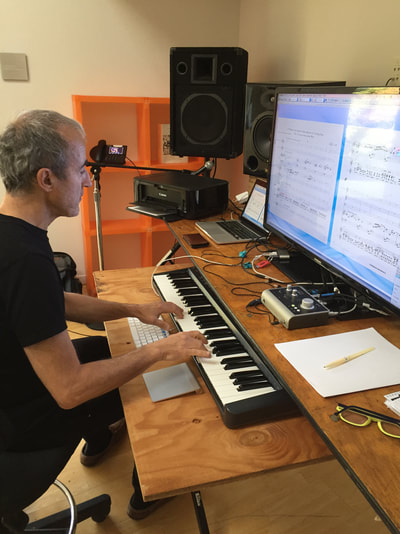
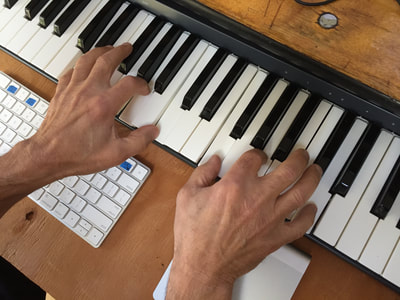

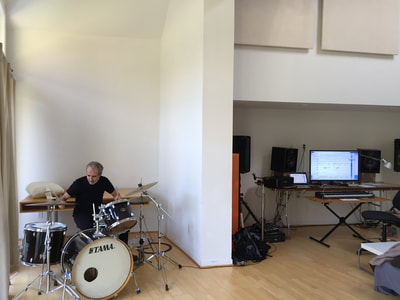
The first week in my studio, I had to direct via Skype the final recording and mixing in Vienna of a new song cycle, Rhapsody, which I hope to bring to the west coast next year. Rhapsody is the second part of my Terminals trilogy, exploring the experience of travel. Luckily I was here at Montalvo with internet and excellent speakers, which made this even possible. Now I am working on Part III, which at this early stage is to be scored for one baritone voice and a percussion quartet—so percussion to be exact—playing four analog synthesizers and four taiko drums. I like to have multiple projects going on simultaneously, so I set up a mobile recording studio here in Studio 21 and I am finishing recording and editing “Visitor,” which will be a series of six solo records on six unfamiliar instruments. “Visitor” is an attempt to find out what happens if an instrumentalist is separated from their instrument, and instead is tasked with making 60 minutes of music, played live, with instruments on which they have a very limited technique. I may even find an answer.
Read more about Bobby Previte’s work here.
Guest Artist – Literary Arts, Poetry U.S.A
THIS WEEK IN MY STUDIO (December 1, 2017)
Poet Garrett Hongo
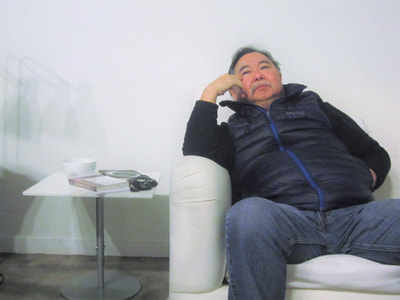
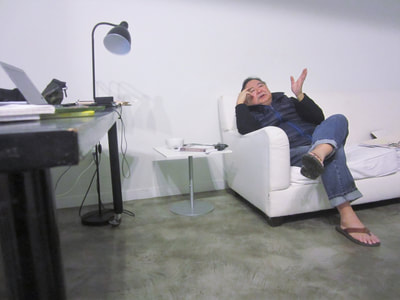
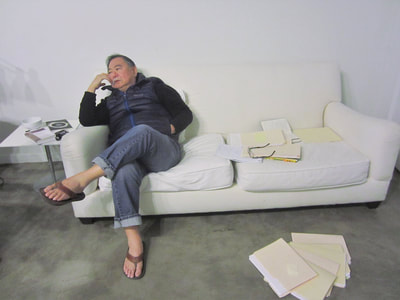
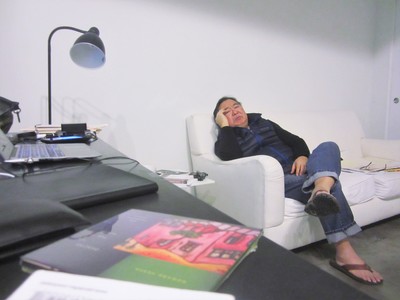
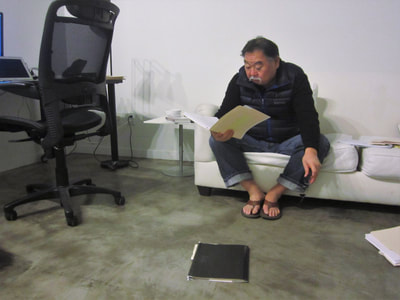
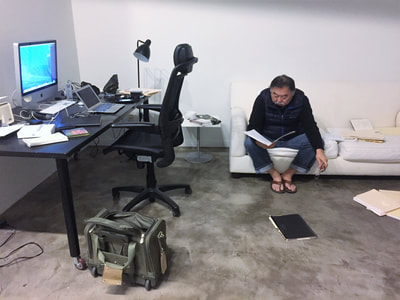
This week in my studio I finalized two small pieces—one for Pacific Standard on “what divides us” as a nation (citing the murders of two good Samaritans by a white supremacist on a Portland train back in May and the occupation of the Malheur Wildlife Refuge by armed protestors last November) and another on “intersectionality” and my early black mentors (jazz critic Stanley Crouch and poet Robert Hayden) for Poets & Writers. These were just short essays and warmups for the bigger work I’ve had ongoing for the past few years—a non-fiction book about having fallen in love with opera late in life and becoming an audiophile in the pursuit of the perfect stereo system to reproduce it from recordings, a kind of confession of sorts. For that, I re-read my first hundred pages or so and then outlined the next section, based on historical research, factory visits, and interviews with people who design and manufacture the equipment. I hope to write the “overture” to this section and perhaps begin a major chapter before I leave. This also necessitates listening to a lot of great music (Puccini, Verdi, Donizetti, and Mozart), carousing with my fellow artists (especially those who sing!), and reading great poetry to keep me in a mood to write from connoisseurship, taste, pleasure, and meditation rather than the jumble that drives most of my reportage. It also helps to listen to Mingus and Ellington and Sarah Vaughan. “In a Sentimental Mood…”
Read more about Garrett’s work here.
Lucas Artists Fellow – Visual Arts Italy
THIS WEEK IN MY STUDIO (November 23, 2017)
Visual Artist Matteo Rubbi

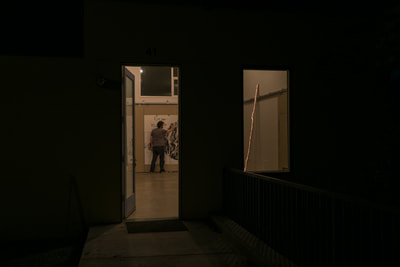
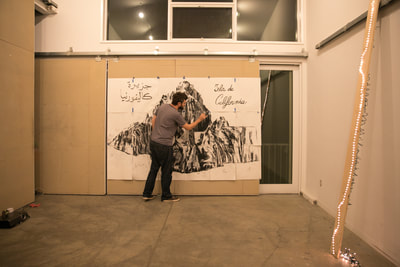
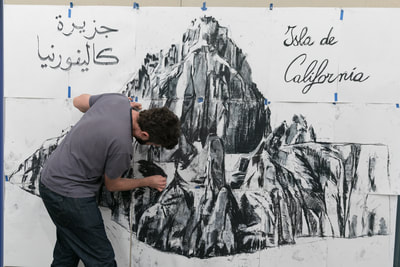



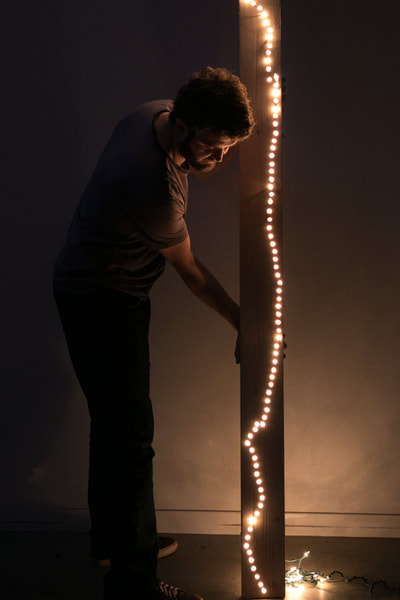
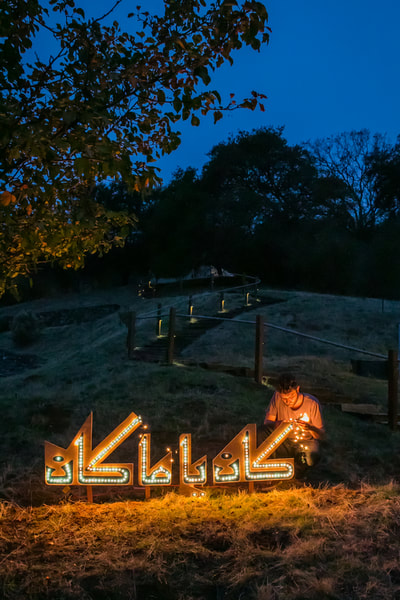
Last week, I put together many of the ideas collected during my three-month residency at Montalvo, and visual artist Leonardo Chiappini and I collaborated to transform these ideas into artworks. The results, presented in an open studio, consisted of a light sign, a drawing, a light sculpture, a wood installation, and a small bar to welcome people. The works were all inspired by the legendary Island of California as it is described in the 17th century book written by Ordonez de Montalvo—an inaccessible island with steep cliffs, inhabited by a community of black Muslim women.
Together with these reflections, we presented a project by writer and LAP Fellow Zeynab Joukhadar, who built small golden paper astrolabes related to her novel “The Map of Salt and Stars,” gave a reading, and showed an original handwritten preview of one of the shape poems from her book.
Read more about Matteo’s work here.
Lucas Artists Fellow – Composer & Musician U.S.A.
THIS WEEK IN MY STUDIO (November 21, 2017)
Composer Howard Hersh
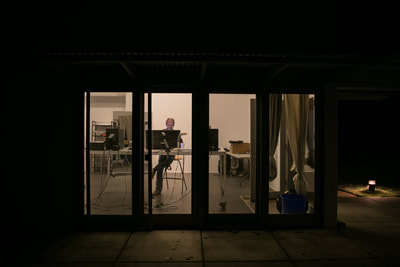

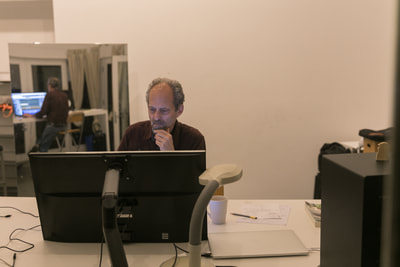
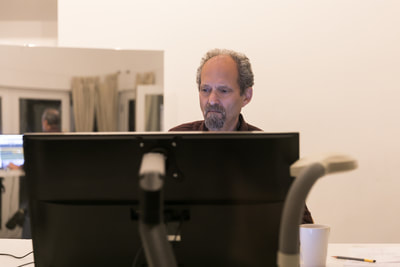
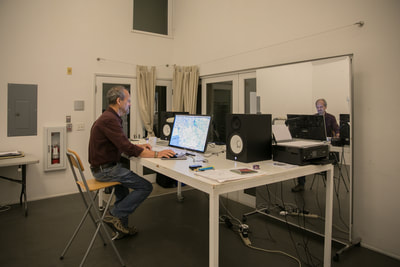
This week, I’m designing the opening section of Four Bridges, a sound installation commissioned by Montalvo, which visitors will be able to experience through their smartphone as they walk through Montalvo’s forest environment. This segment combines field recordings made onsite with recordings of non-indigenous sounds. My goal is to create a sonic journey that ushers listeners out of the everyday world into the mystery of the forest.
Read more about Howard’s work here.
Lucas Artists Fellow – Literary Arts, Non-Fiction U.S.A.
THIS WEEK IN MY STUDIO (November 21, 2017)
Novelist Alix Christie
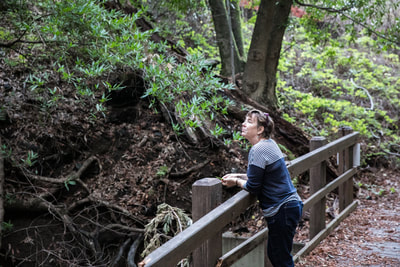
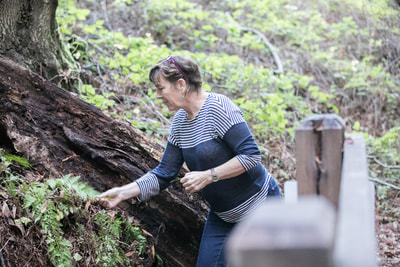
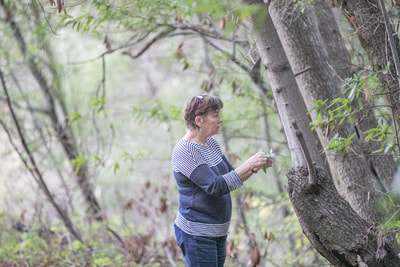
This week in my studio I am disentangling plot strands — oh so many of them, all running in different directions!—in the new historical novel I’ve come here to work on. There is also significant chopping, and the consignment of unwanted chunks to the basket of remnants, scraps and useless notions. (I sewed a lot in my teenage years and the process of revision has certain similarities!). Then in the early mornings I am free to start spinning again, while watching the spiders do the same in the bay trees outside my window.
Read more about Alix’s work here.
Lucas Artists Fellow – Visual Arts Mexico
THIS WEEK IN MY STUDIO (November 16, 2017)
Visual Artist Máximo González
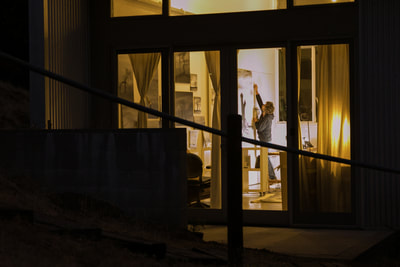
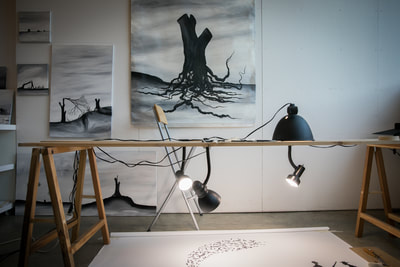
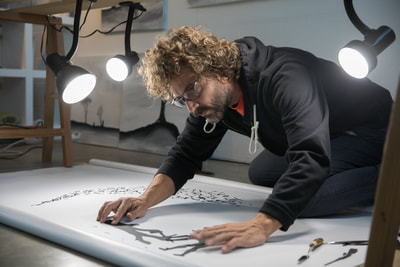
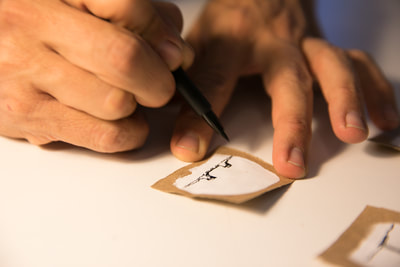
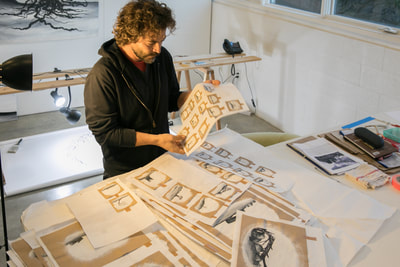
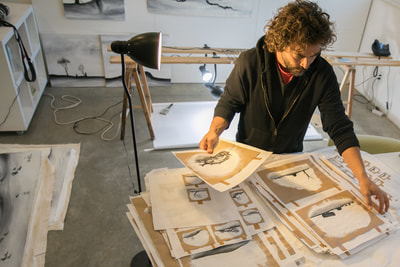
Animation: Tina Case
This past week was amazing…the great emotion of being surrounded by artists from around the world, remarkable cooking, grandmothers’ recipes, super special meals, and a lot of work in the studio. Together with my partner Ivan Buenader and my assistant in Mexico, this week I have been working on organizing the mounting, shipment and preparation of a large installation project in Richmond, Virginia; putting the finishing touches on a book documenting the 12 years of the Changarrito project that is now being printed; preparing for an event and talk on December 4 at the Amparo Art Museum in Puebla, Mexico; and mounting some of the recovered paintings in the Project Space at Montalvo, as a preview of “The Collector,” a future installation I am proposing for the forests at Montalvo. In addition to all of this, this week I finished taking the photos for a stop-motion animation that I developed here in residence at Montalvo—more than a thousand photographs that will now be cleaned and incorporated with original music—perhaps by composer Magda Mayas, who was in residence with me at Montalvo this month. Meanwhile, Ivan is working on his new novel, creating new installations in the courtyard of the studio, and writing his reflections on the artistic process. Thank you, Montalvo! Love you!
Read more about Máximo’s work here.
Lucas Artists Fellow – Literary Arts, Fiction U.S.A.
THIS WEEK IN MY STUDIO (November 16, 2017)
Novelist Jennifer Zayneb Joukhadar

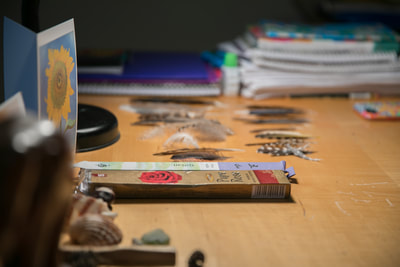
This week in my studio, I am pulling apart the first draft of my second novel and continuing to write new scenes to create the second draft. Now that I’ve completed a revised plot map and character arc map for both timelines in my novel, it feels good to be drafting again and watching the second draft come together. One of the scenes I’m most excited to write this week is in the timeline that takes place in the 1940s, when a small enclave called Little Syria flourished in New York City. In this scene, one of the two main characters (a recent immigrant from Homs with her family) embarks on a journey across America to become the first Syrian American bird artist. It’s a lot of fun for me to think and write about bird art in these terms, too, since I’m also a visual artist—something I’ve had the immense gift of being able to explore and collaborate on here at Montalvo while working on my second novel.
Read more about Jennifer’s work here.
Lucas Artists Fellow – Composer & Musician Germany
THIS WEEK IN MY STUDIO (November 14, 2017)
Composer Magda Mayas

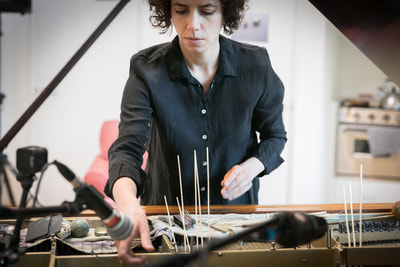
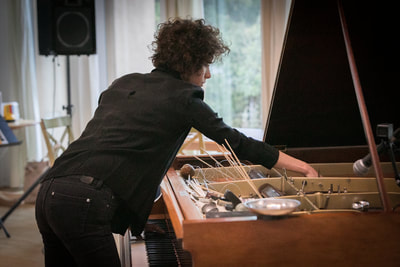

This week, before we leave Montalvo, Tony Buck and I are editing and mixing a new album of our duo, Spill! So far we have released three albums and this is going to be our first vinyl! It’s a mix of a four-channel recording together with live improvisations, piano, objects, drums, percussion, objects… It’s great to spend two weeks doing just that.
Read more about Magda’s work here.
Lucas Artists Fellow – Literary Arts, Poetry (in collaboration with Literature Across Frontiers) Sweden and Syrian Arab Republic
THIS WEEK IN MY STUDIO (November 14, 2017)
Poet Ghayath Almadhoun
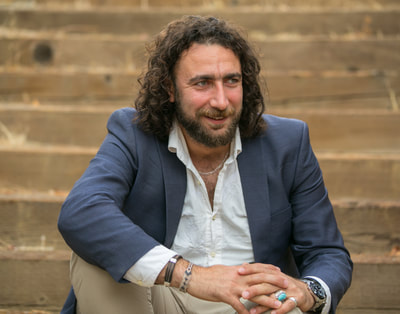
This week in my studio, I am working on an extensive text that will be part of my fifth book of poetry in Arabic. The text revolves around the Mediterranean Sea, the Mediterranean that became a predator that eats the bodies of Syrians, the sea that has been turned into a mass grave for a people fleeing from that other predator, the Syrian dictator.
Read about Ghayath’s first book of poetry to be translated into English, here.
Lucas Artists Fellow – Literary Arts, Non-Fiction
THIS WEEK IN MY STUDIO (November 14, 2017)
Writer, Curator and Editor Ibrahim Nehme
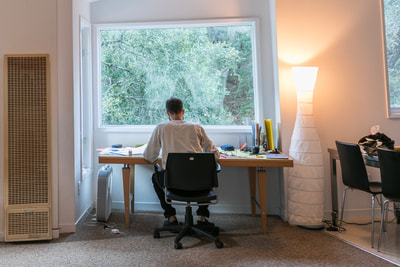
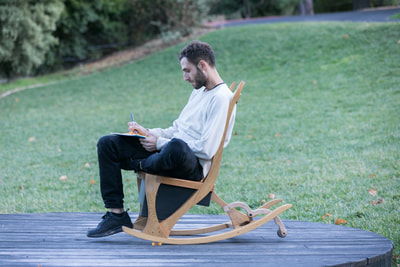

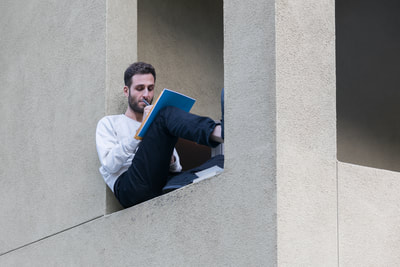
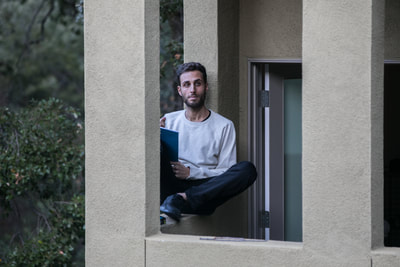
What am I doing this week?
Well, I am trying to crack my head open. It’s a tough thing to do, but it’s surely much easier when you’re living among so many trees, and even more so when the skies are so clear, like they are here in Saratoga. There seems to be a direct correlation between clarity of sky and clarity of mind. Apart from that, all is well: my studio is upside down; the time difference has disconnected me from the outside world; I have 2 hours of recorded audio to transcribe (fun!); lots of books to read, research to continue, words to write, and hours to scratch my head. I’m hoping that in the process, my head will actually crack open and I could begin writing the book I came here to write.
I’ll surely end up on the dance floor in Los Gatos on Saturday if all goes according to plan. Meet me there!
Read more about the magazine that Ibrahim founded, The Outpost: A Magazine of Possibilities, here.
